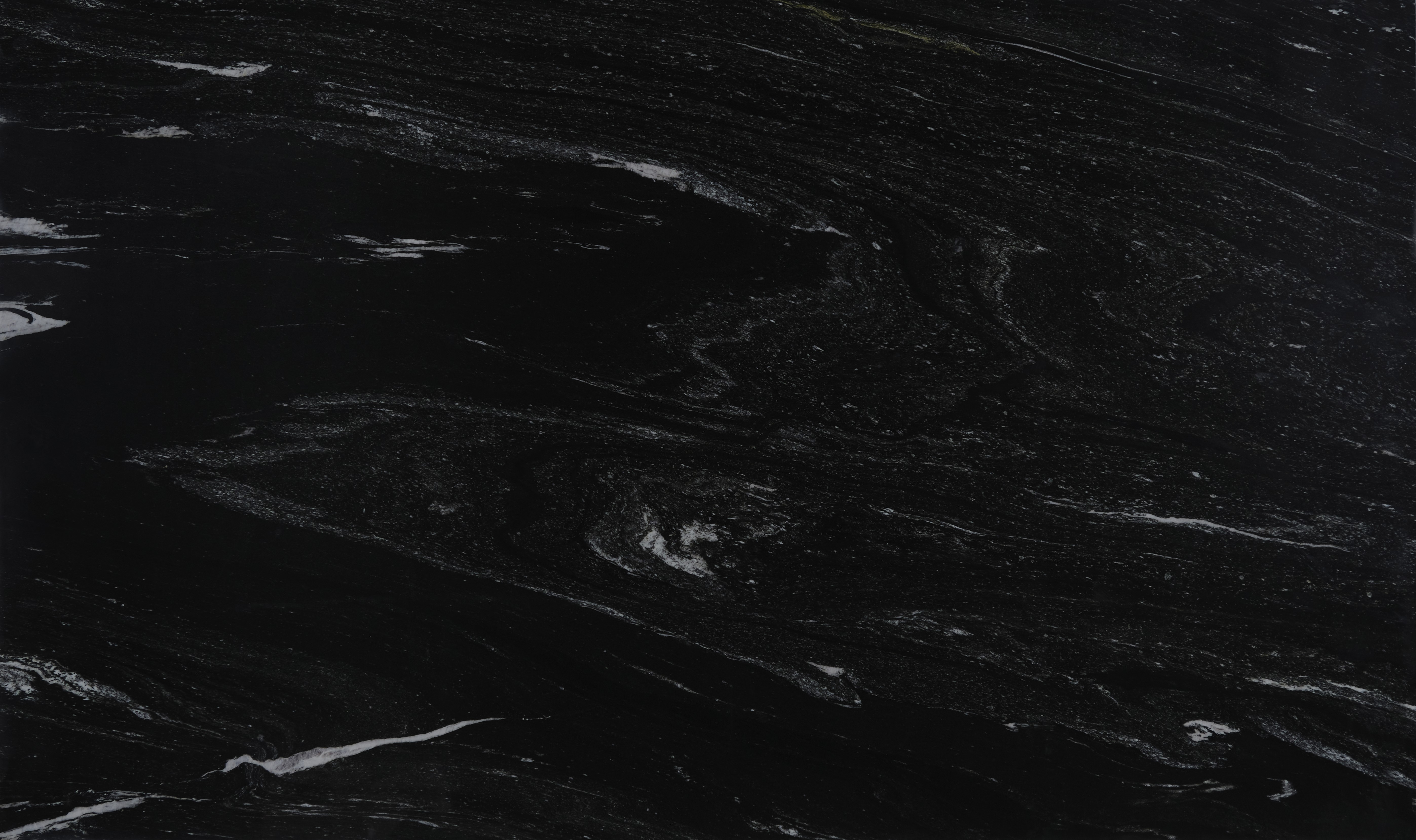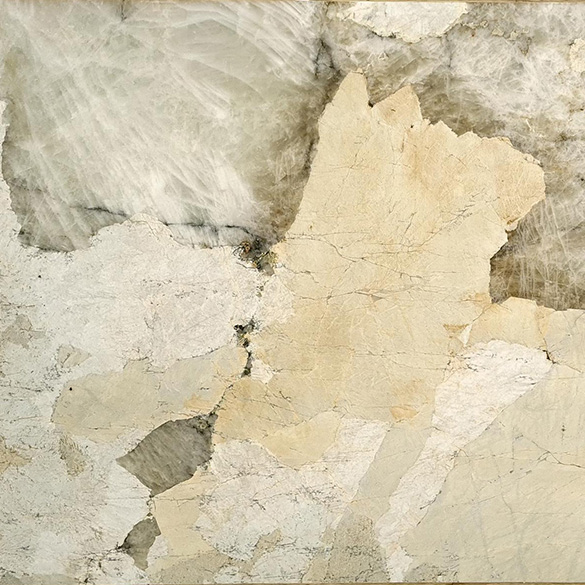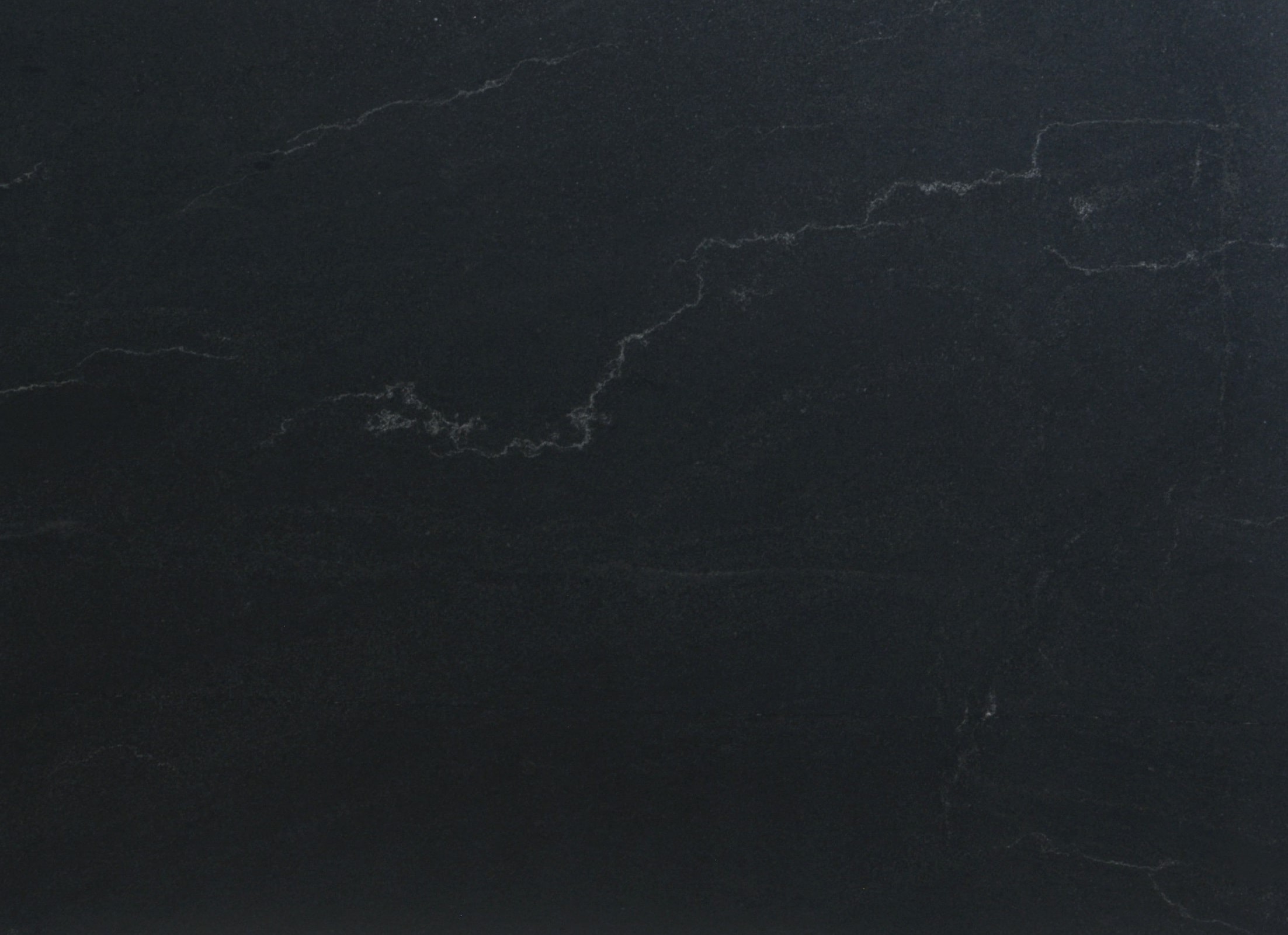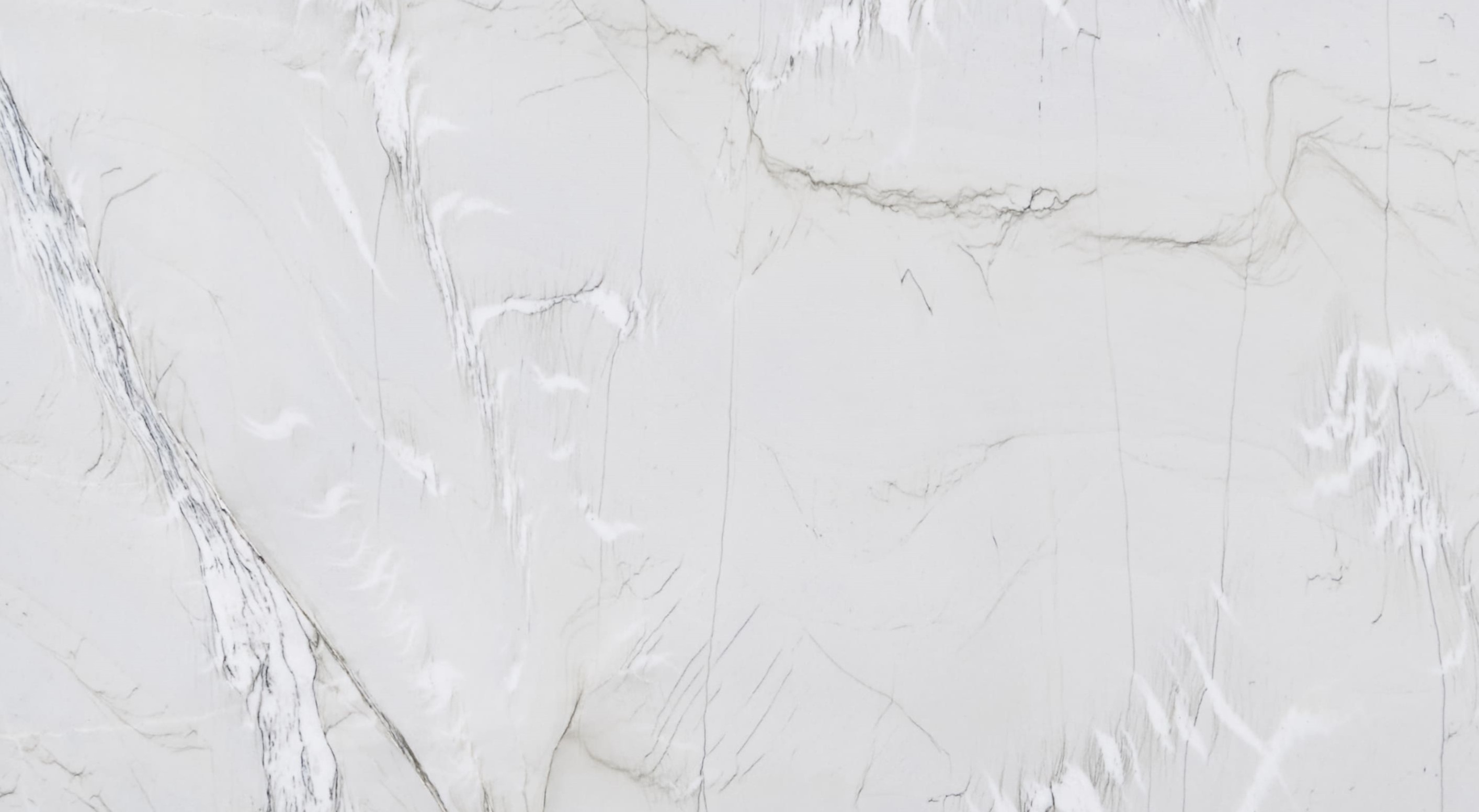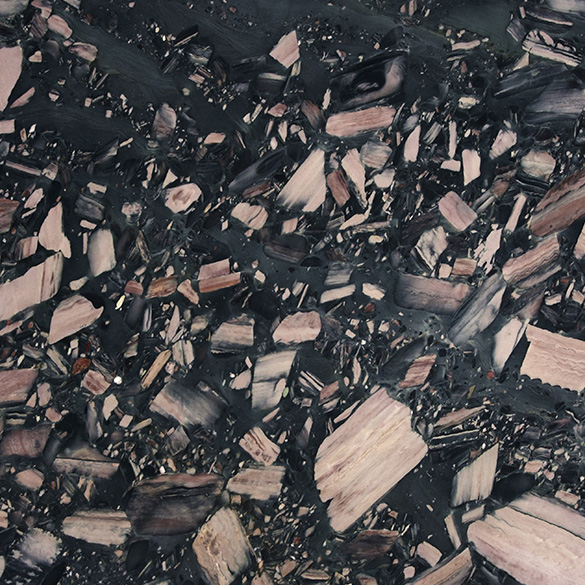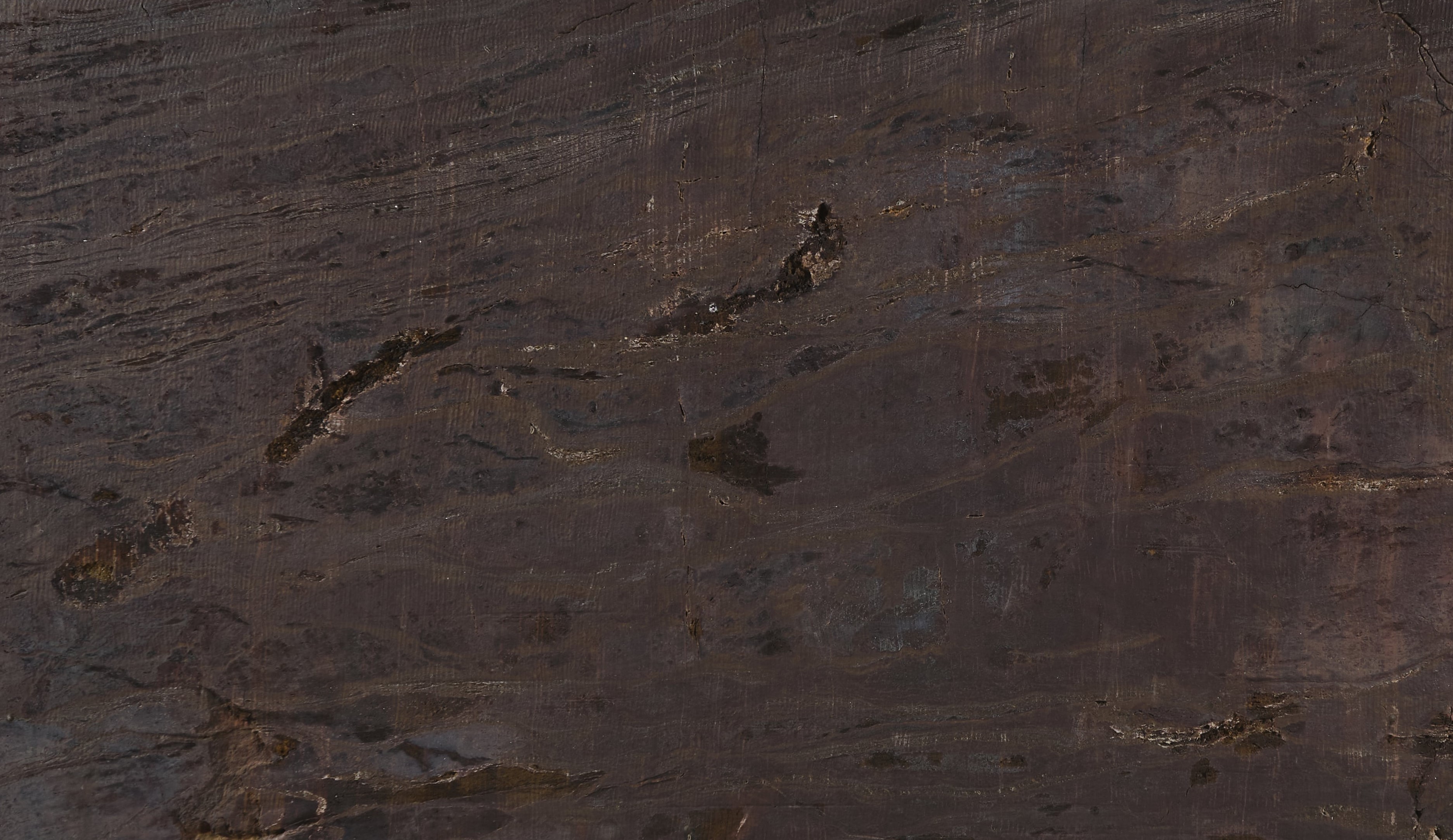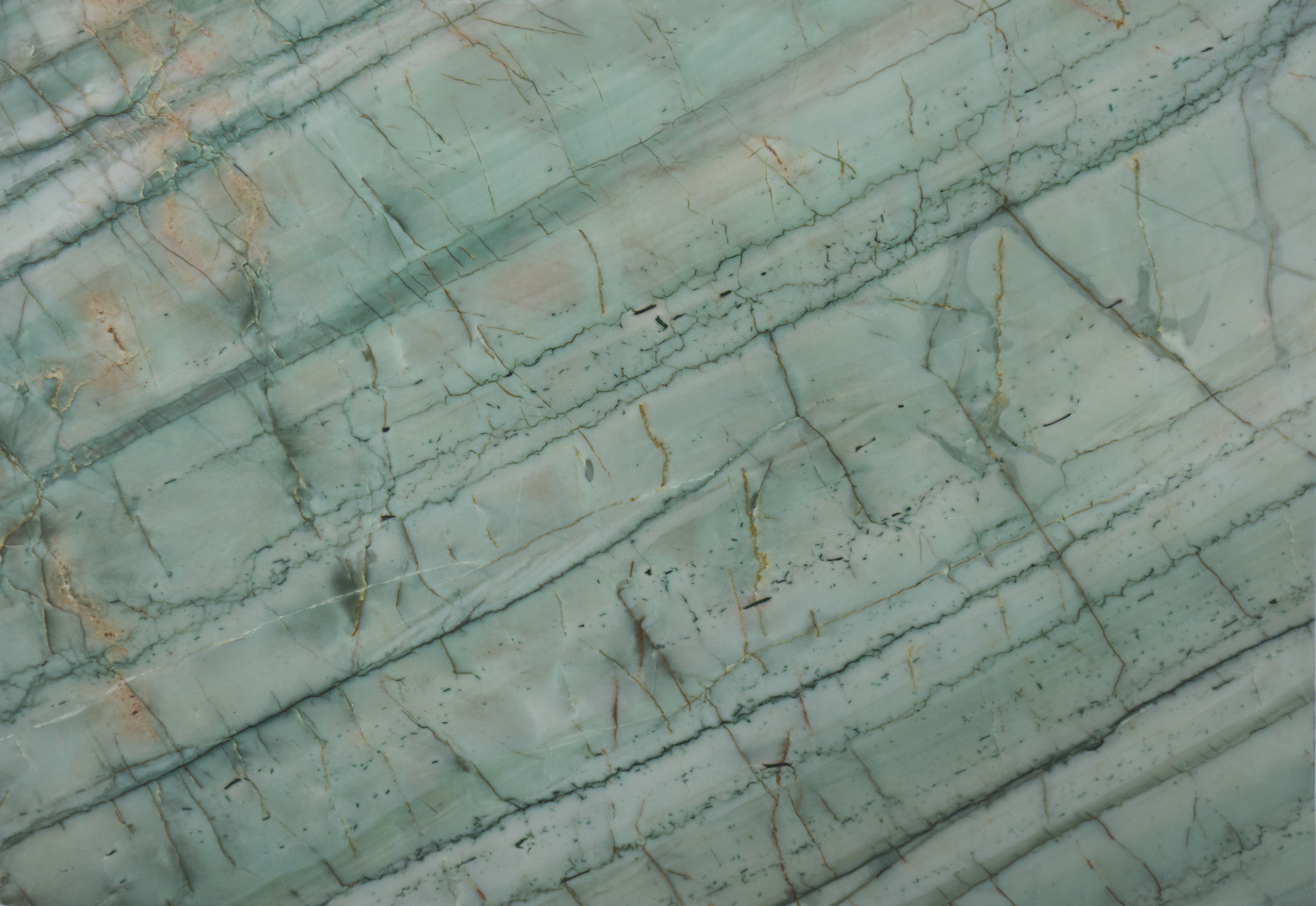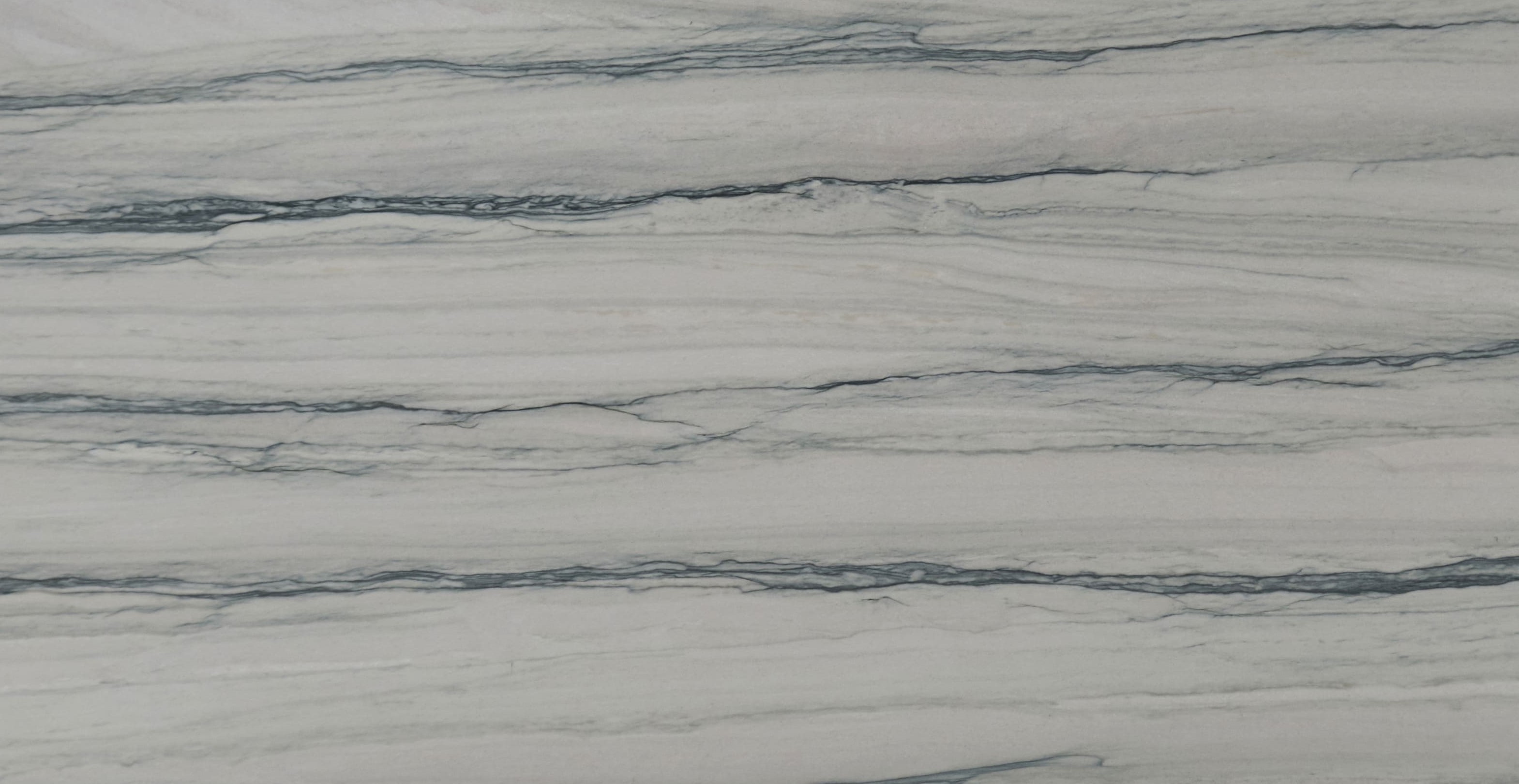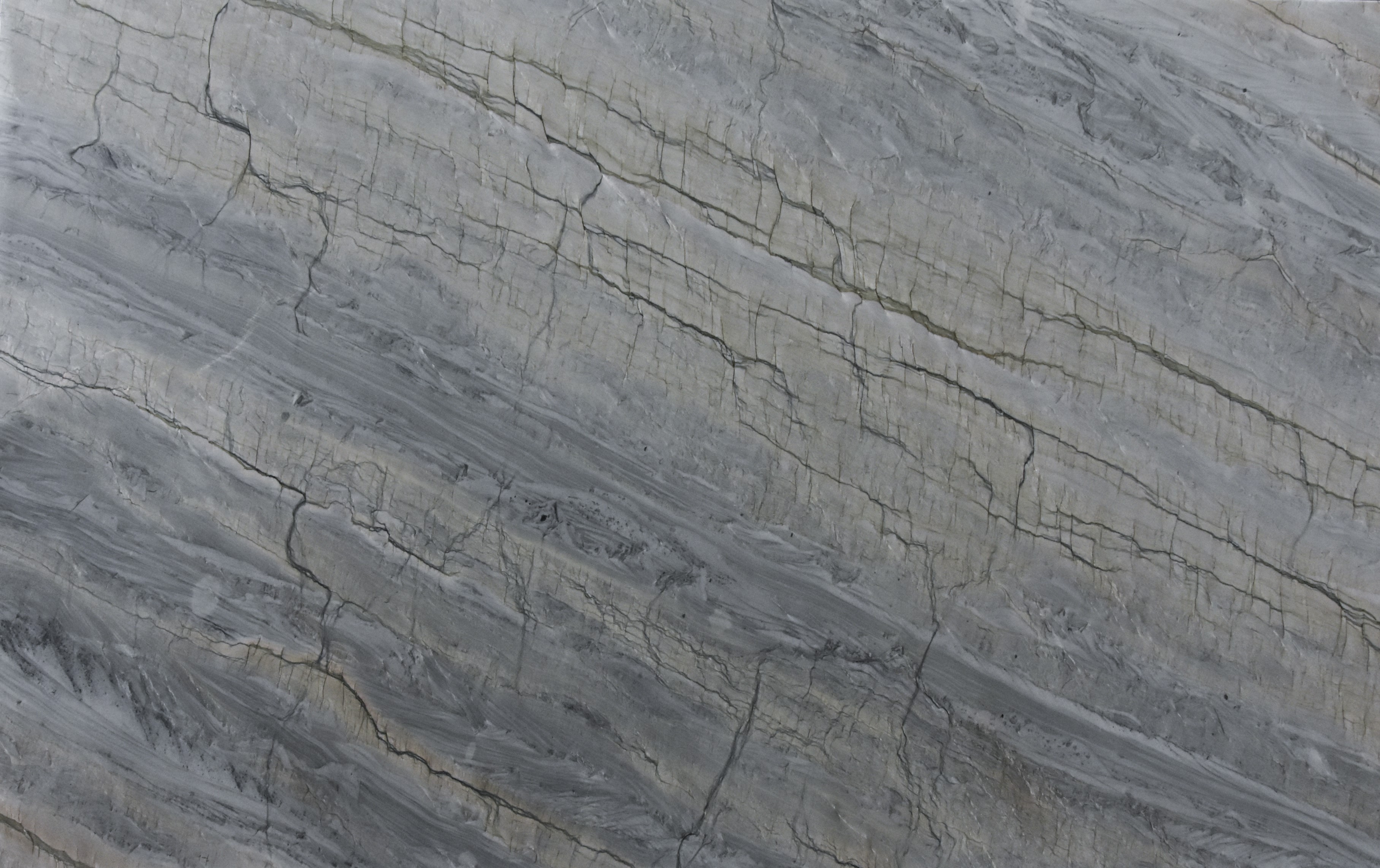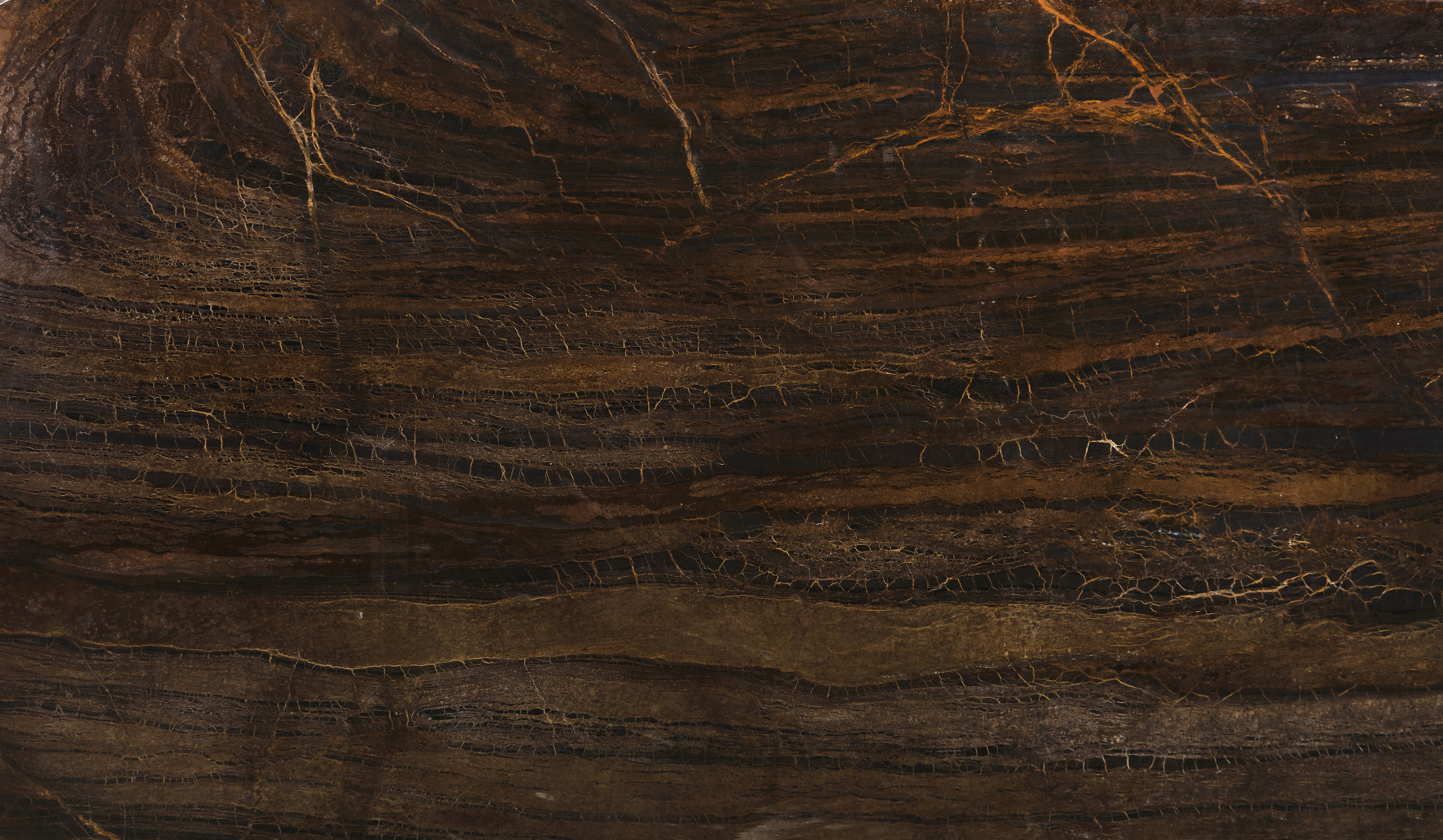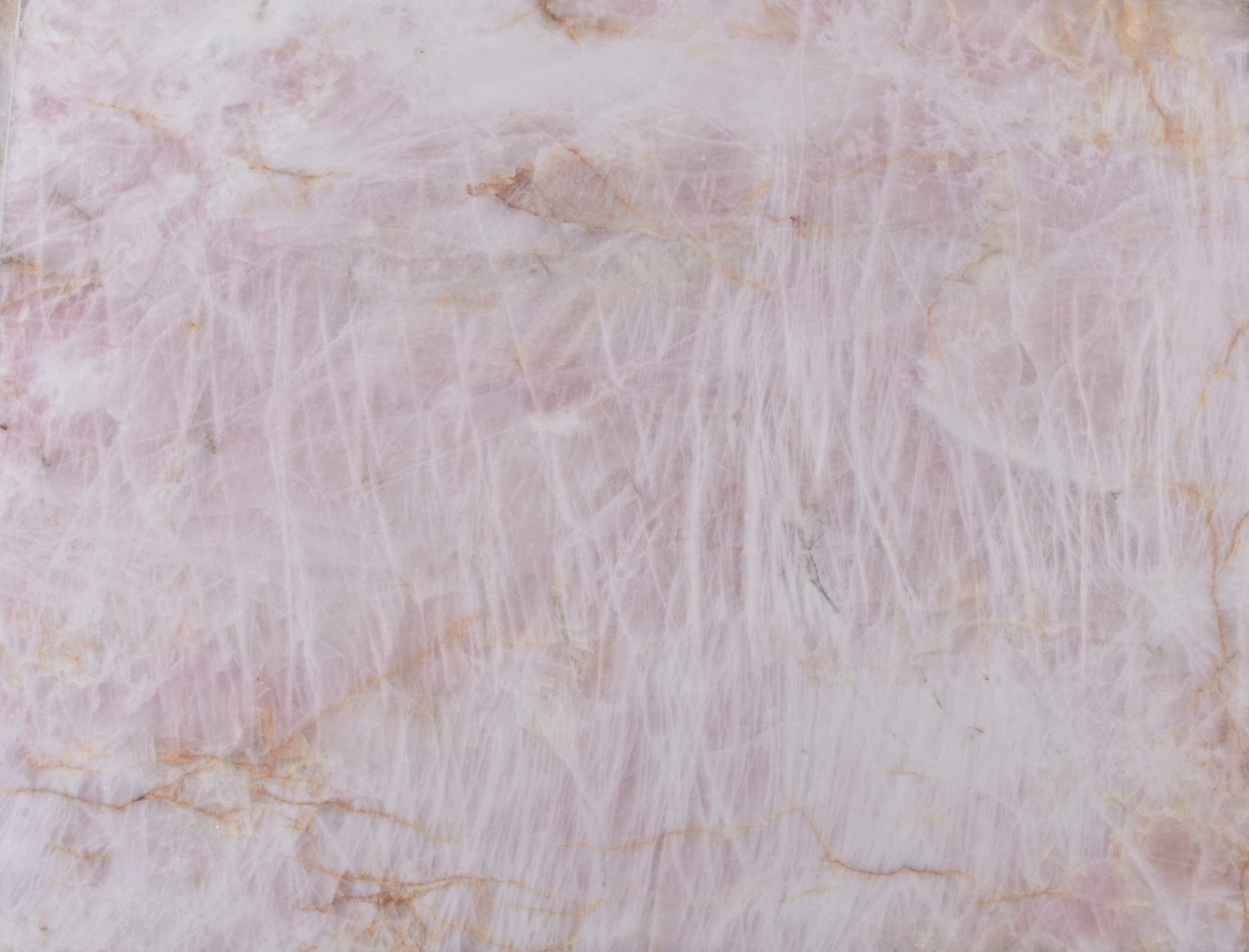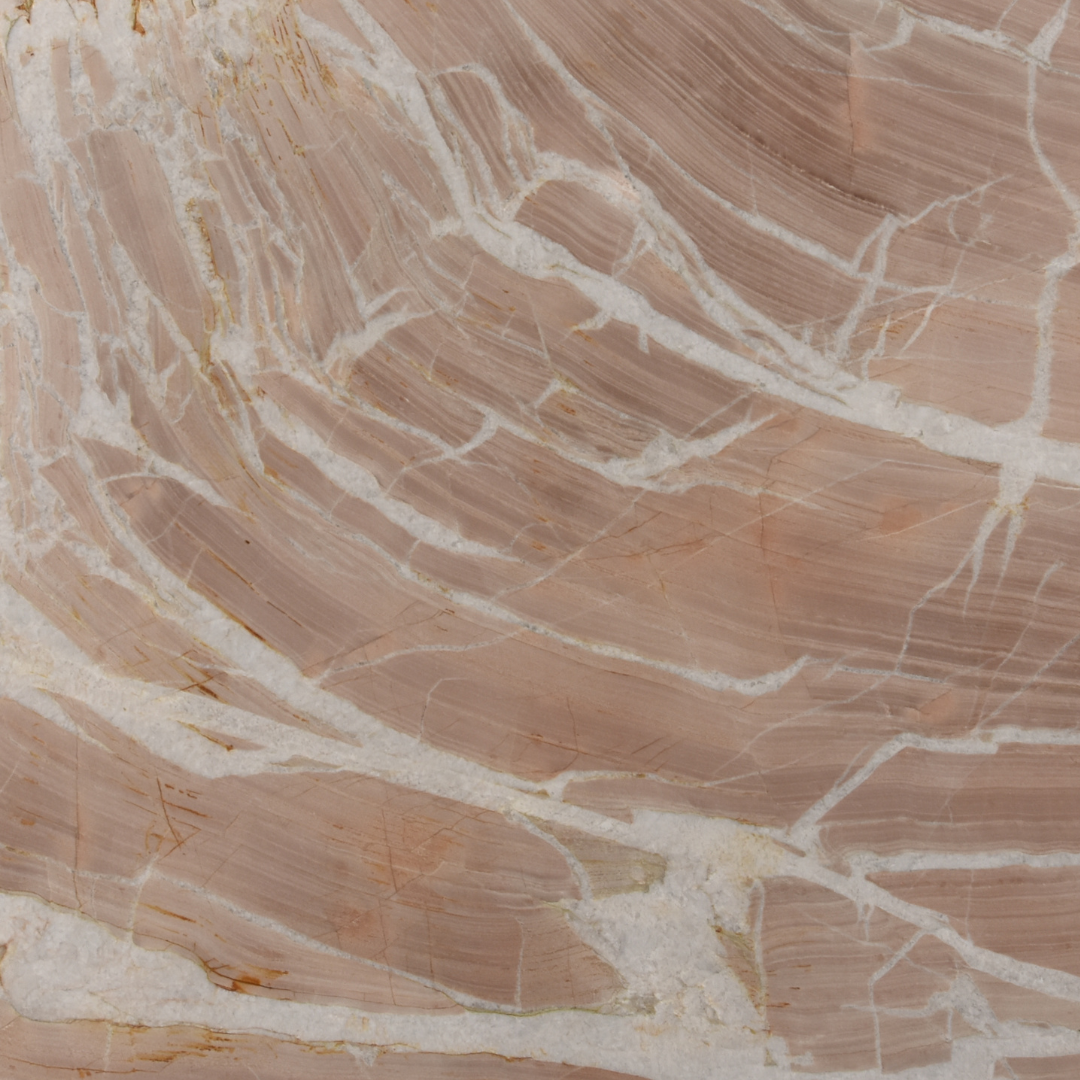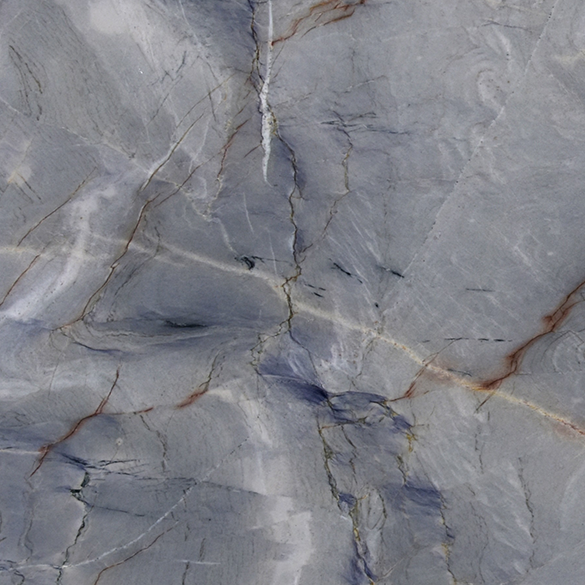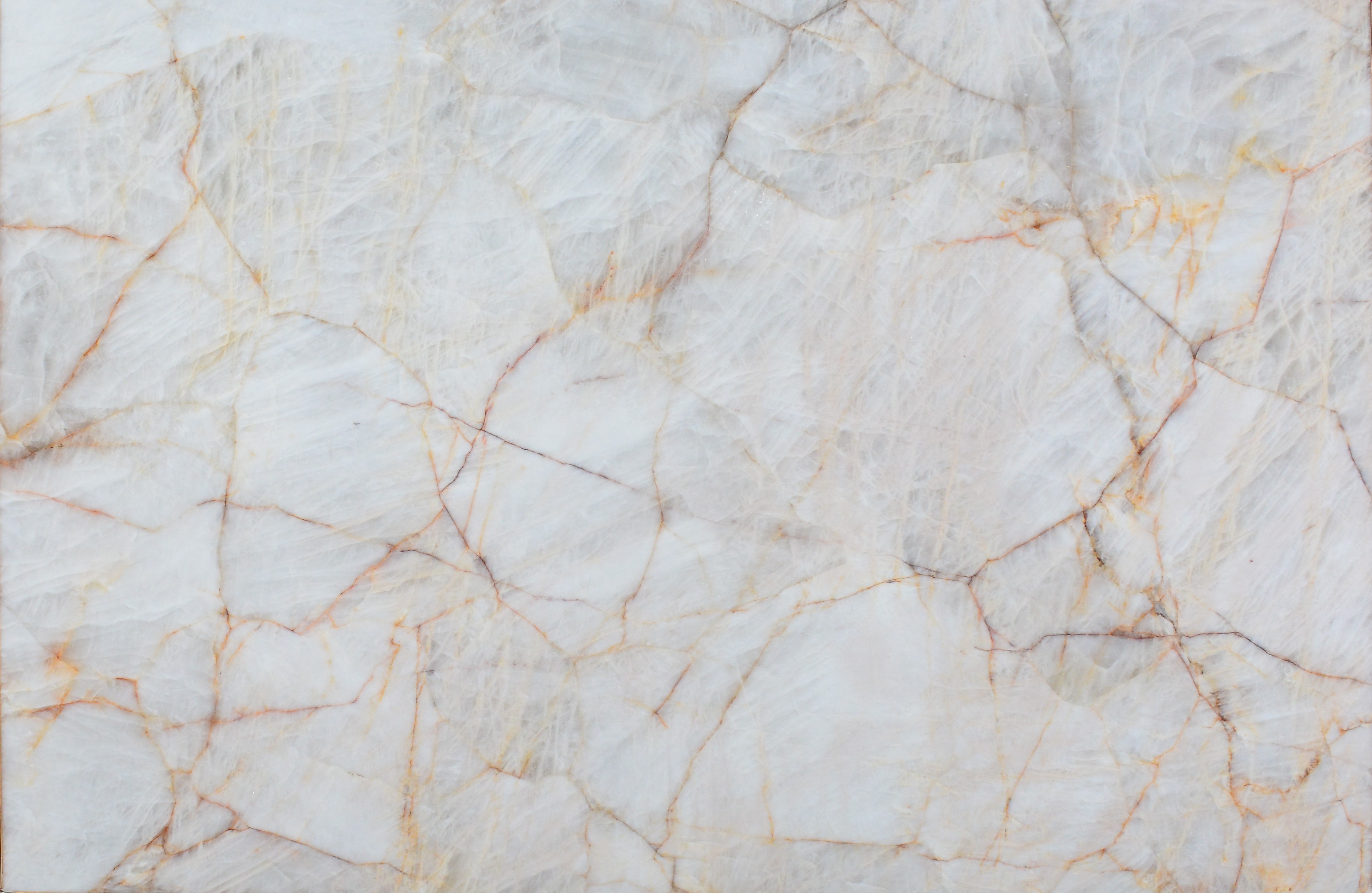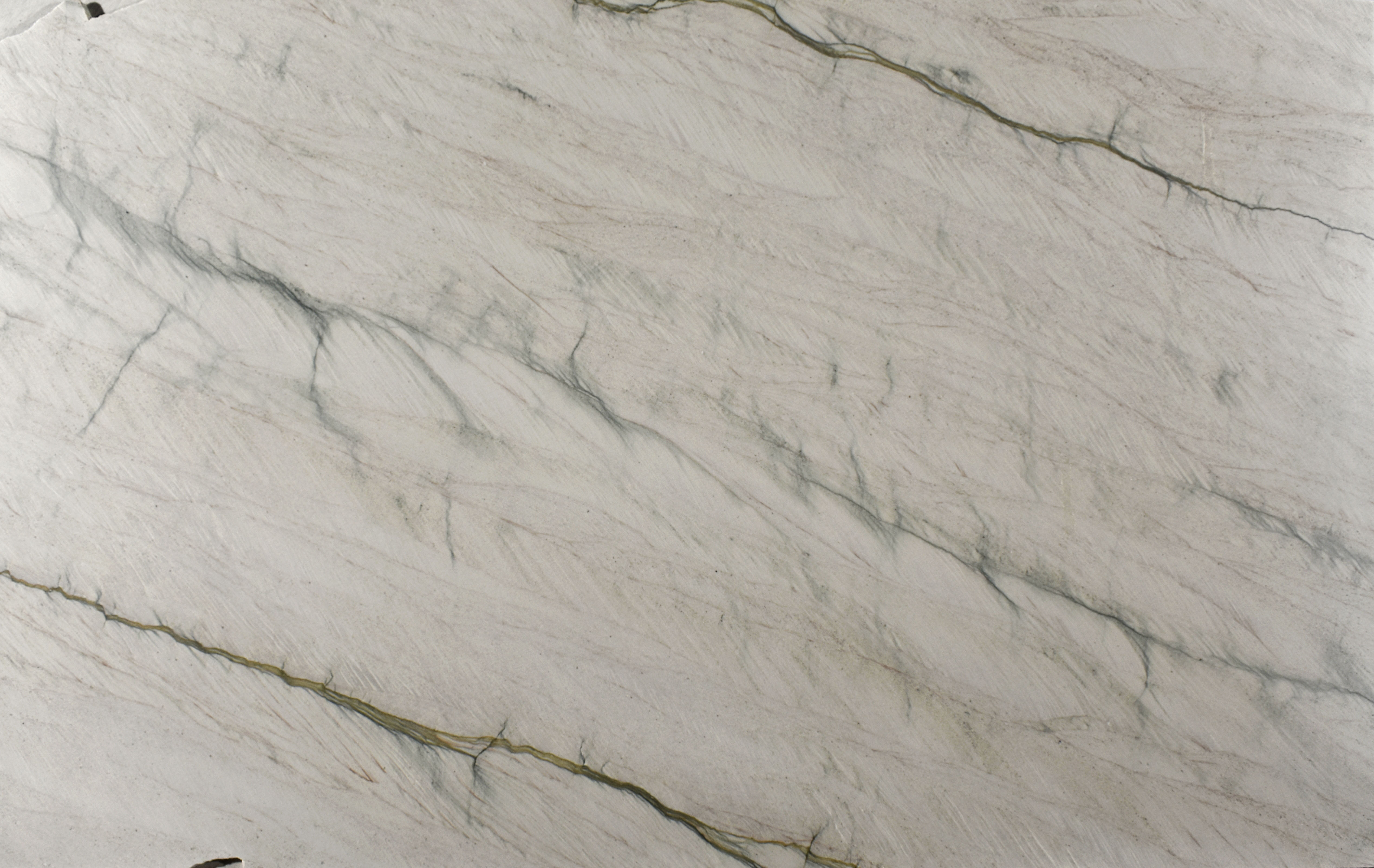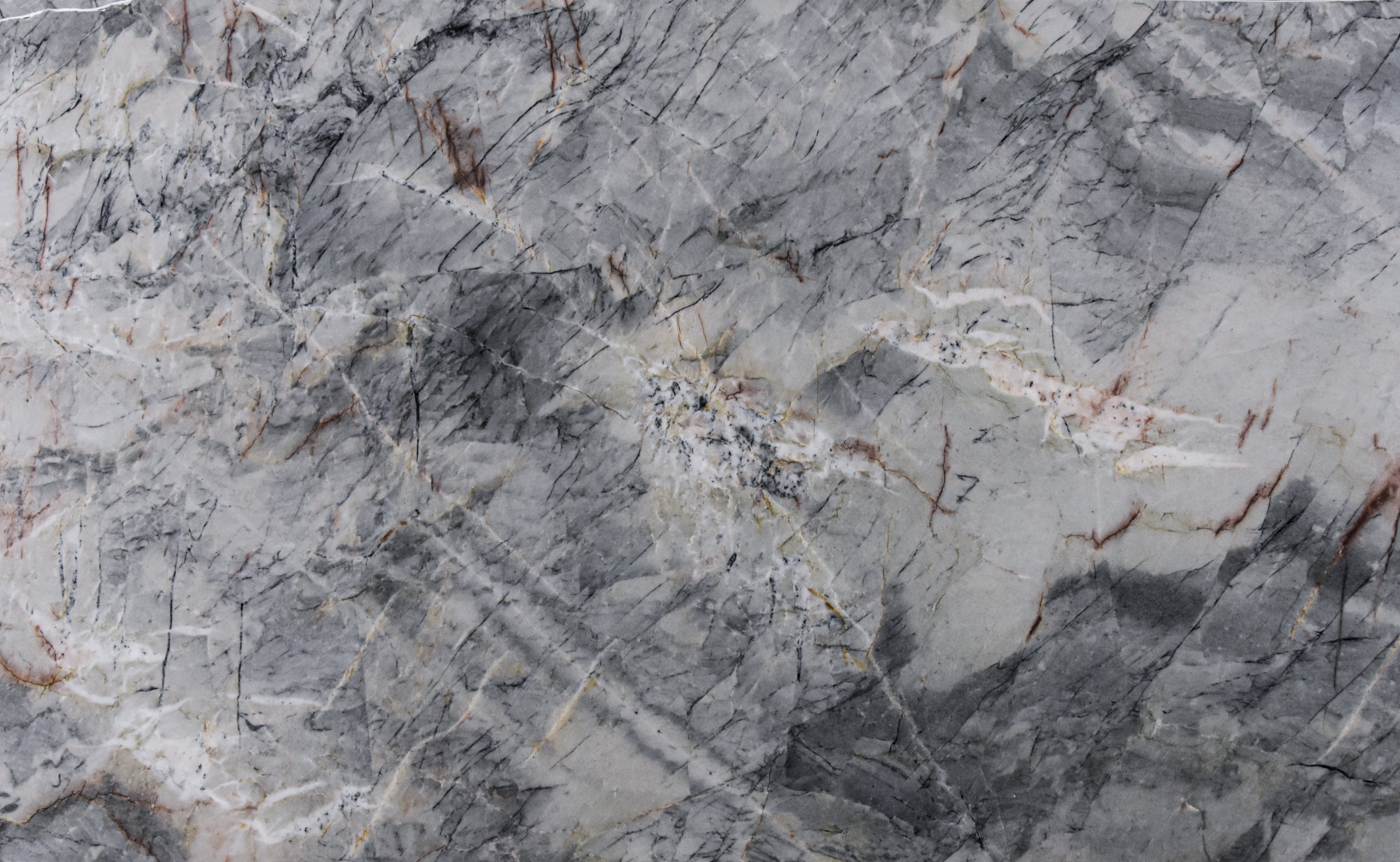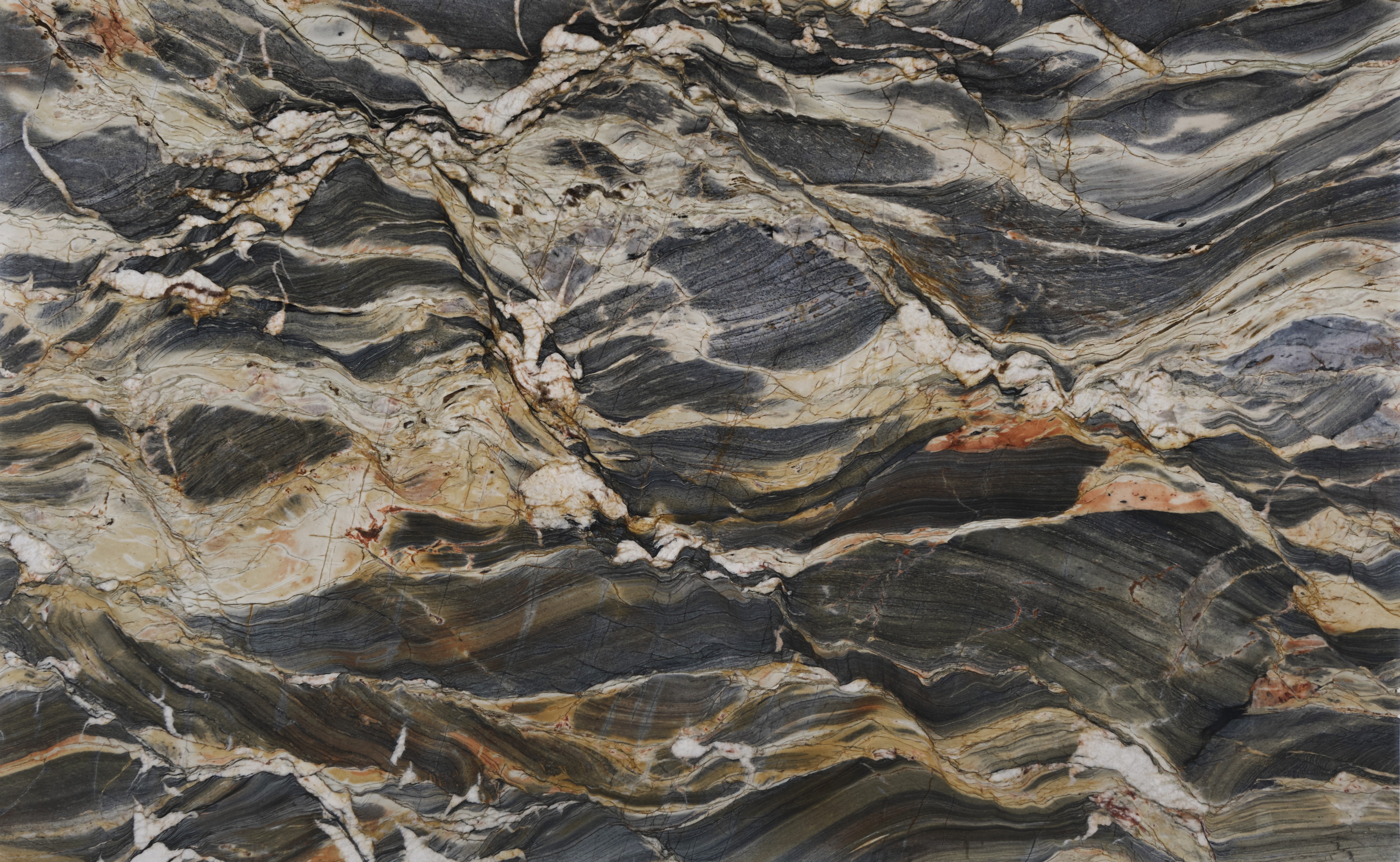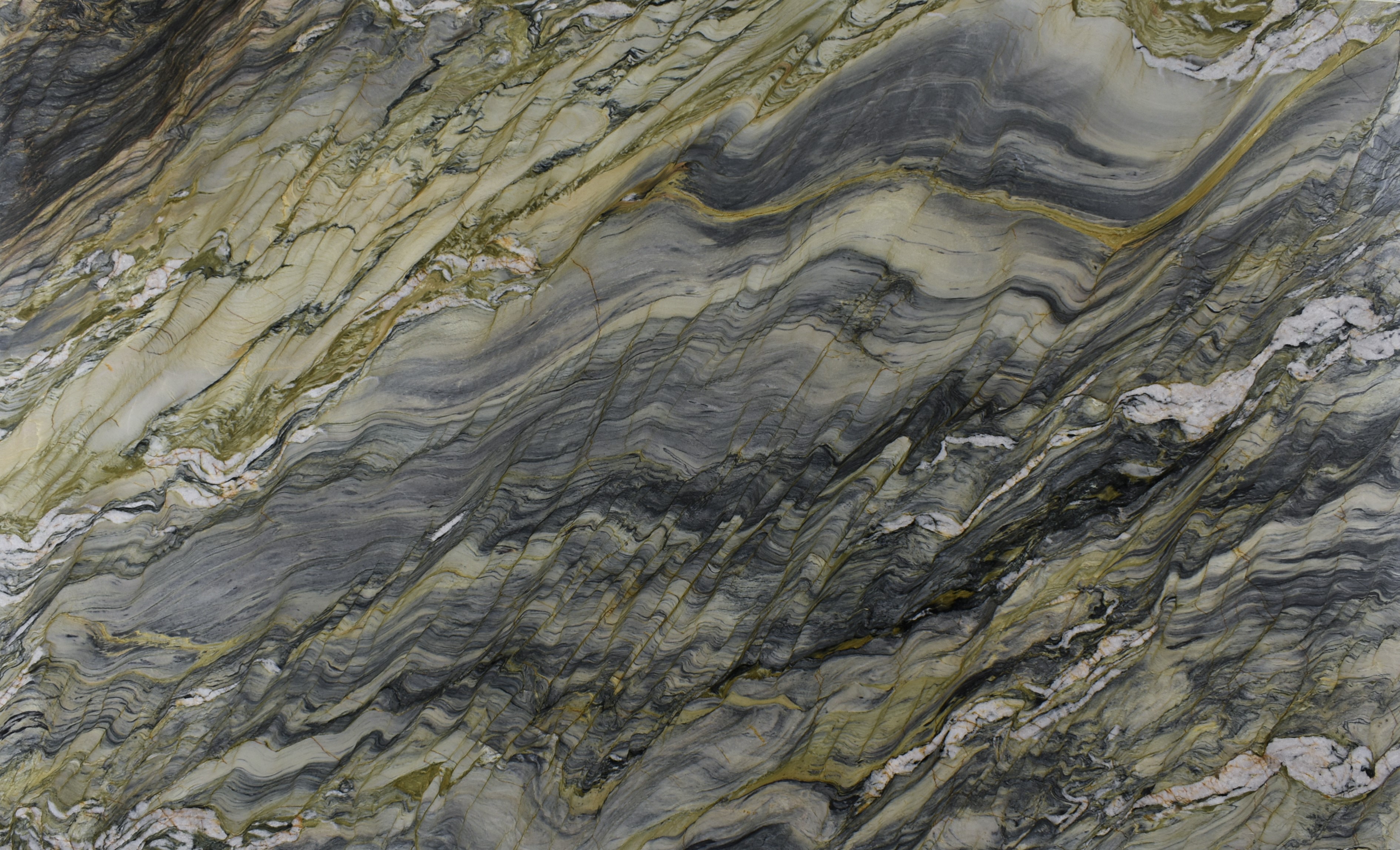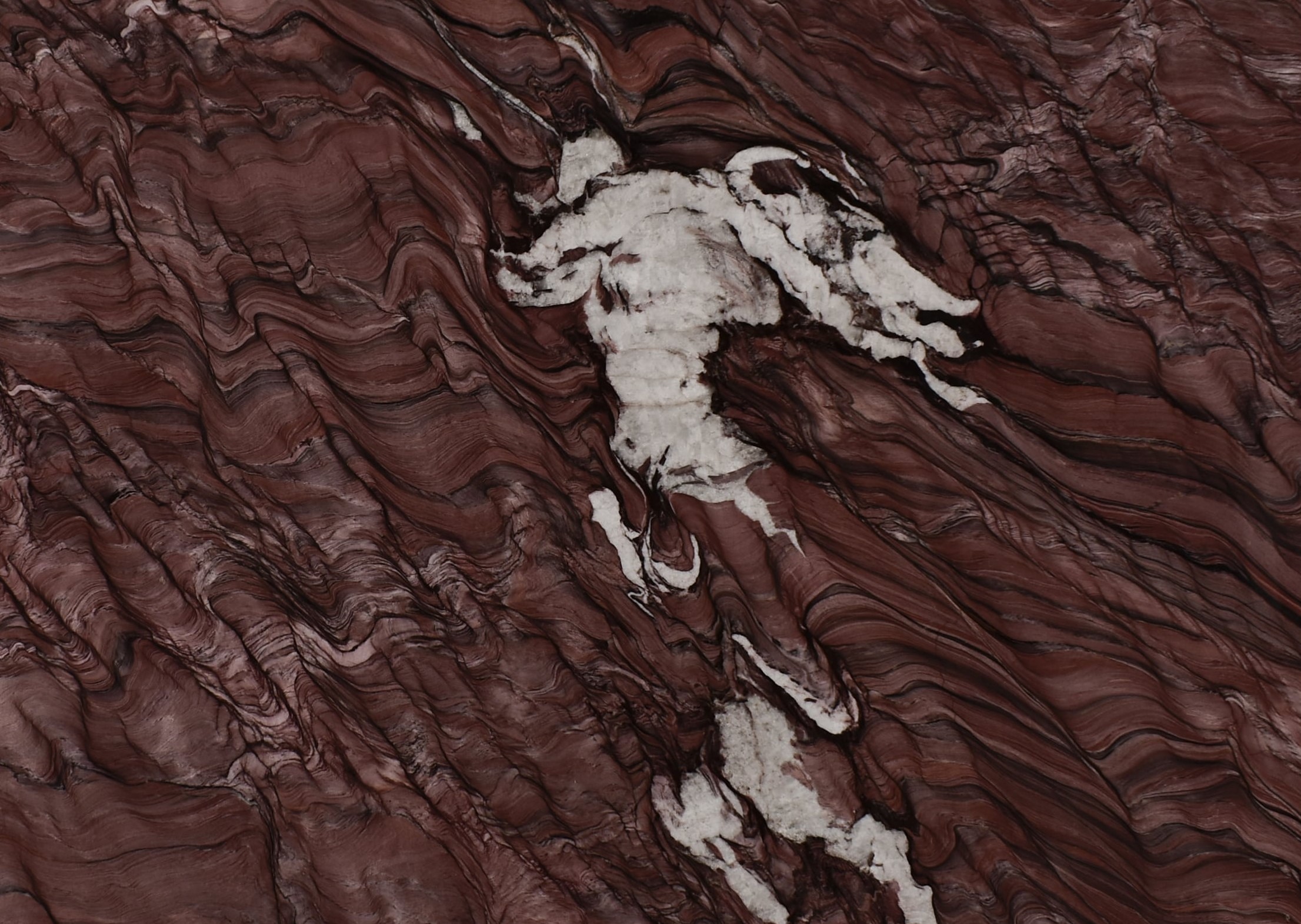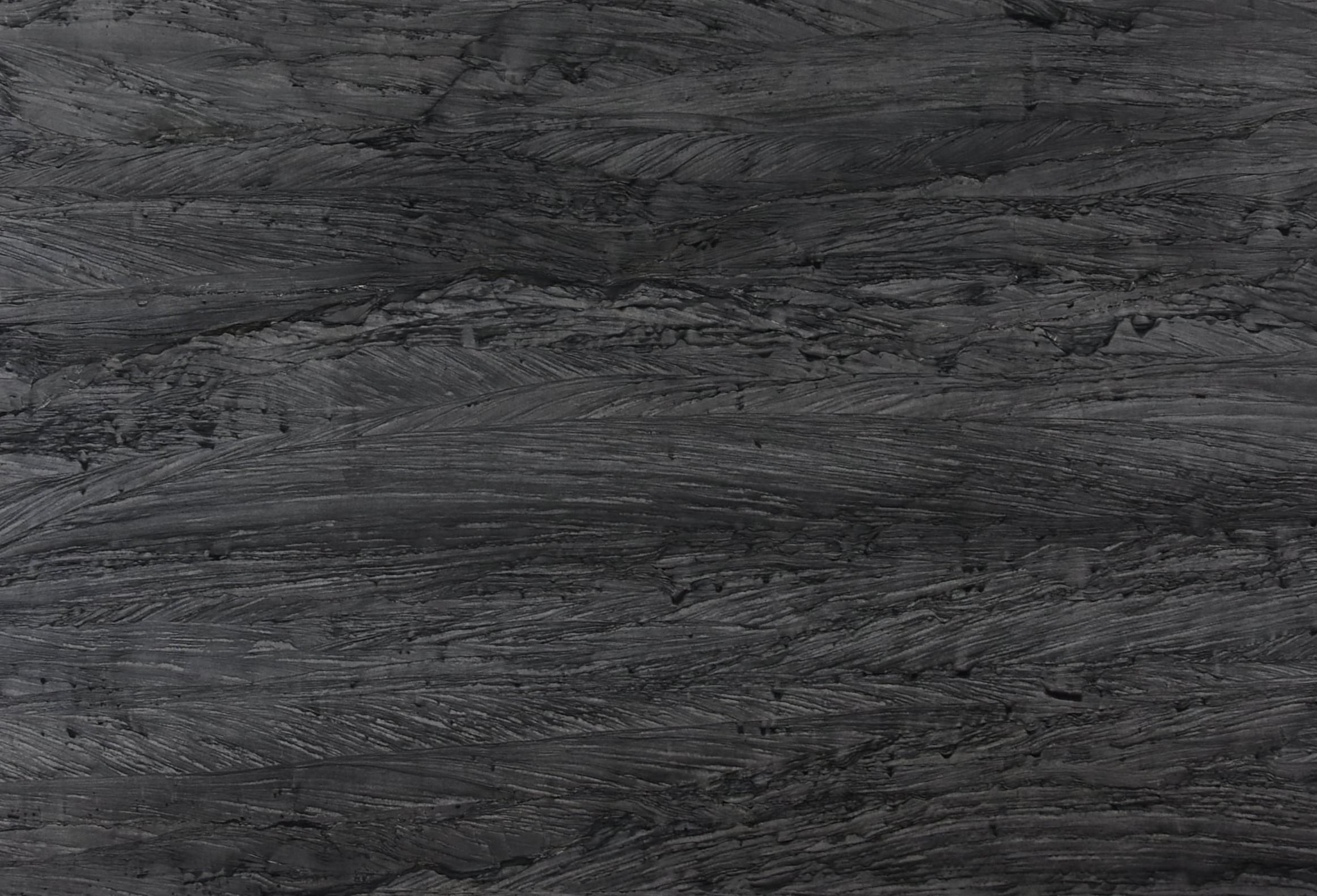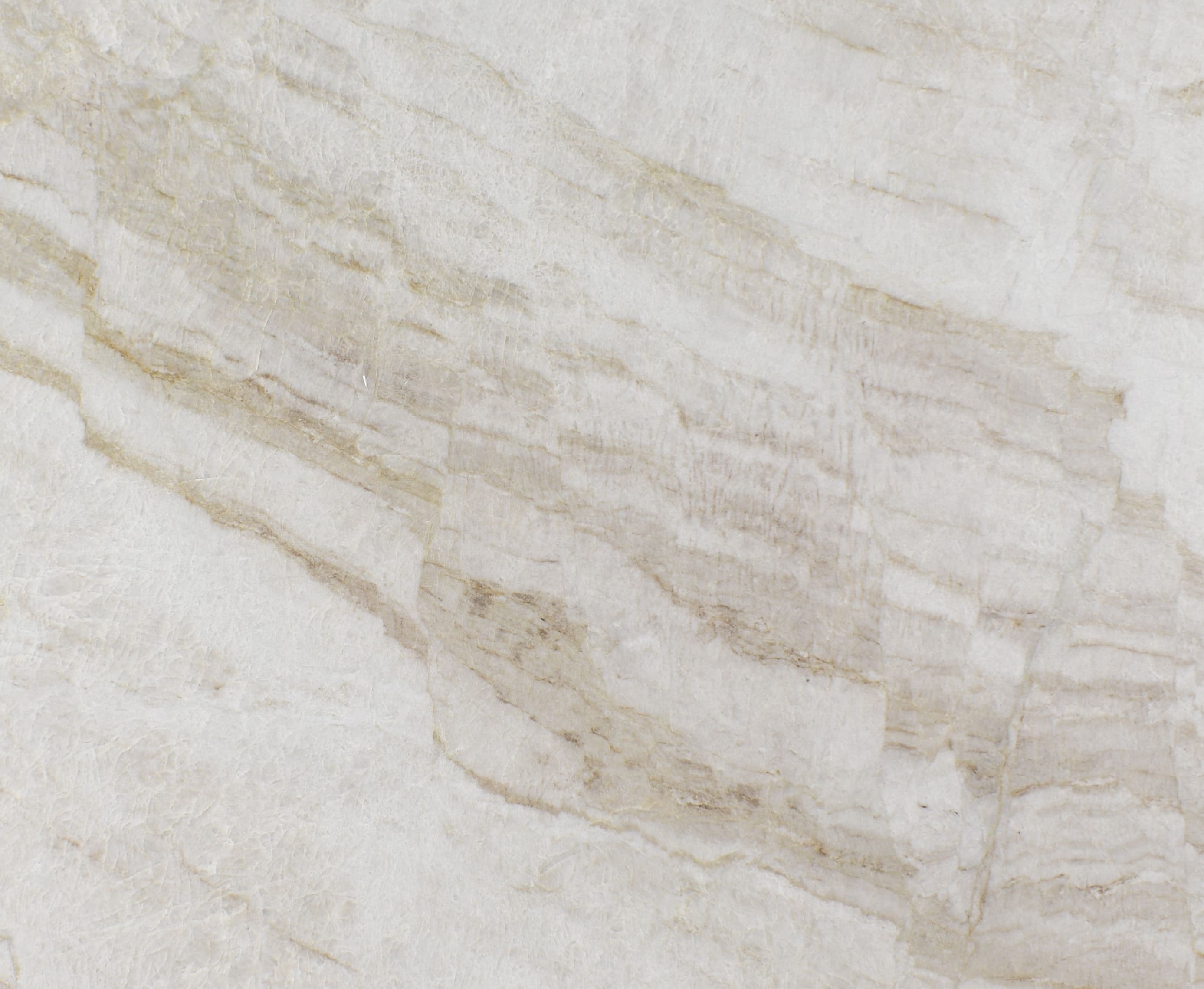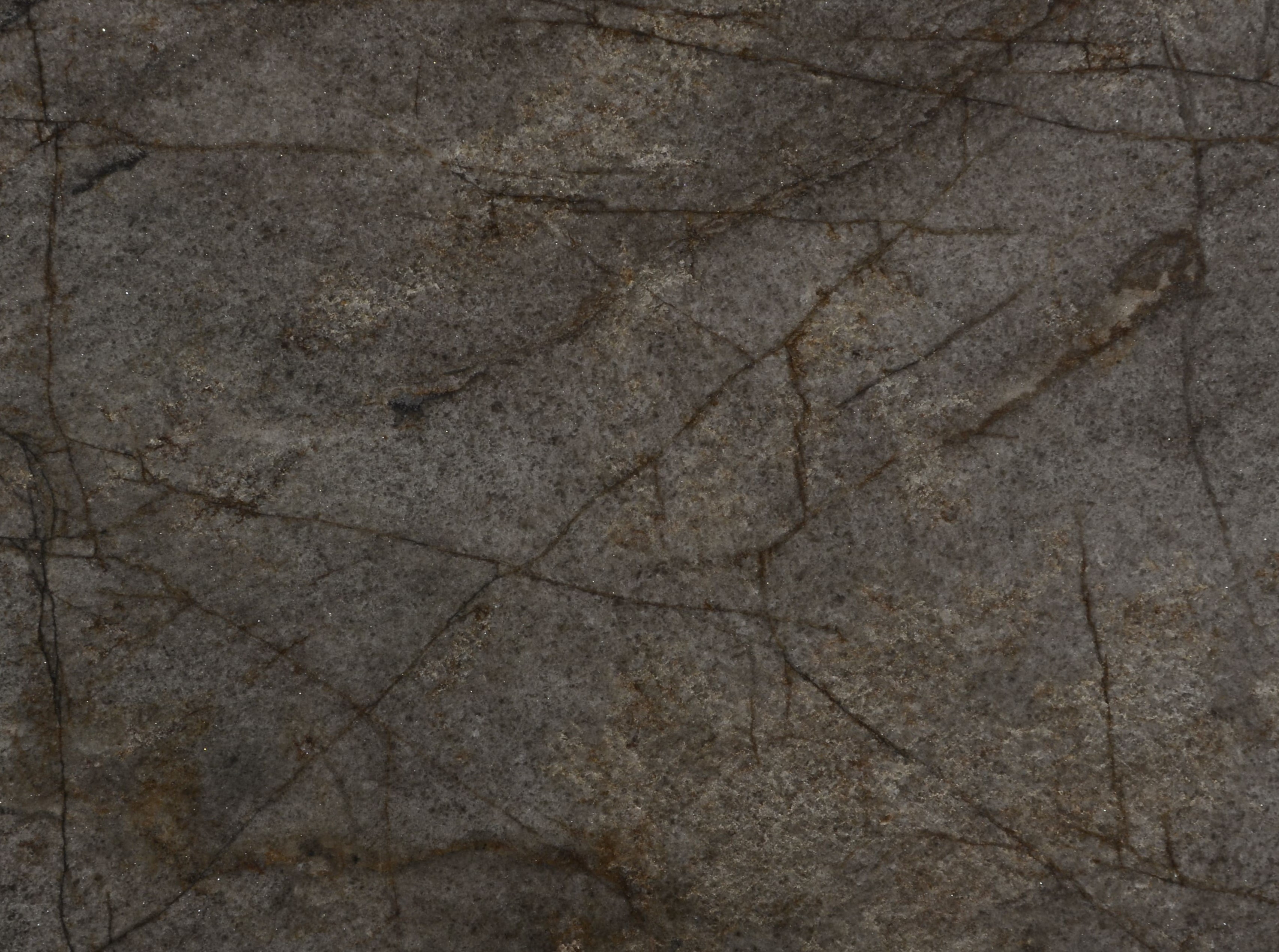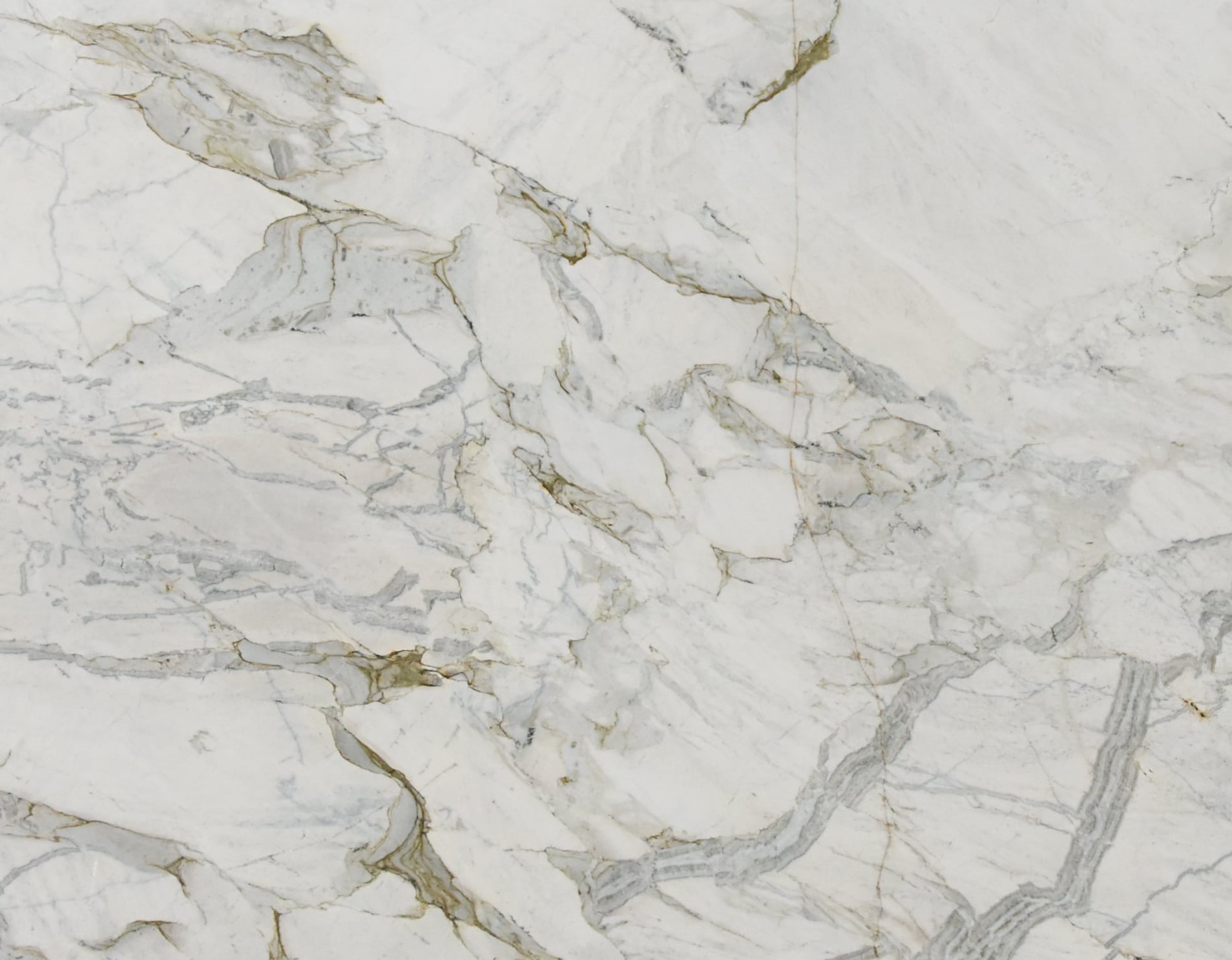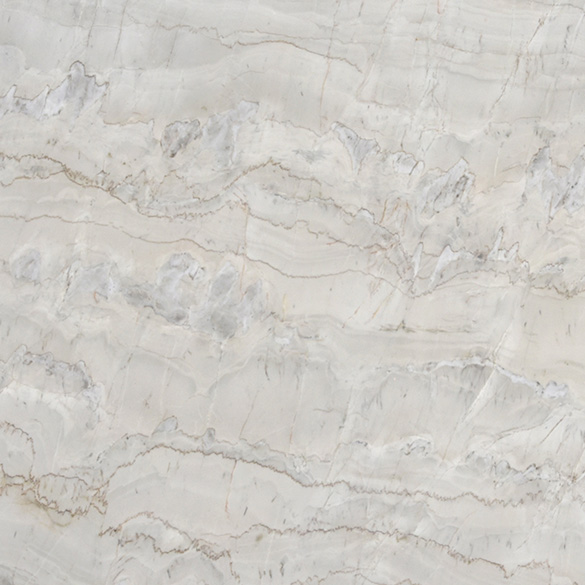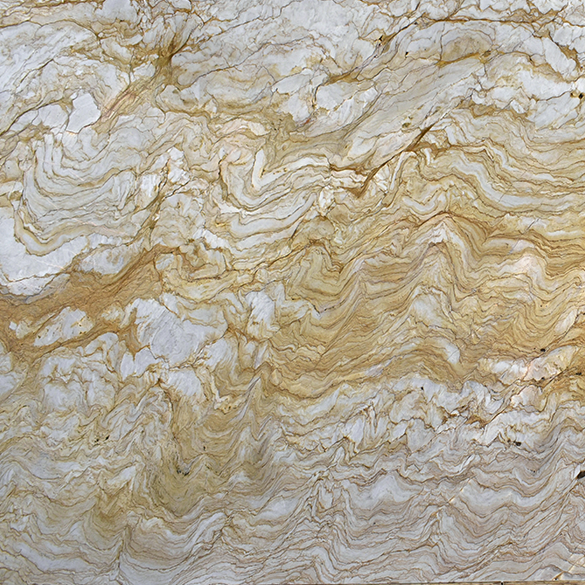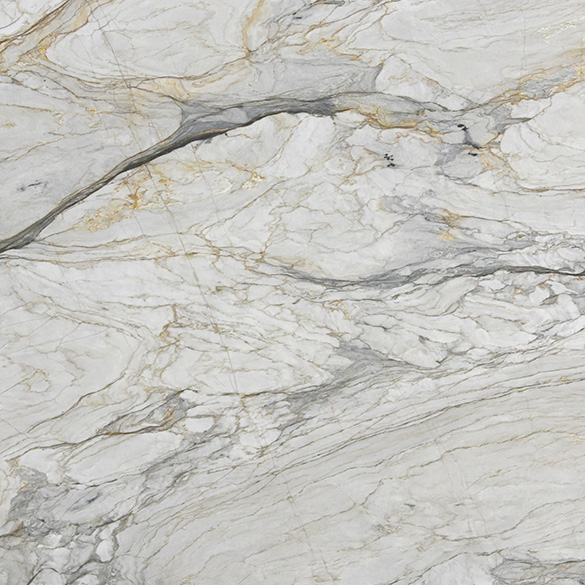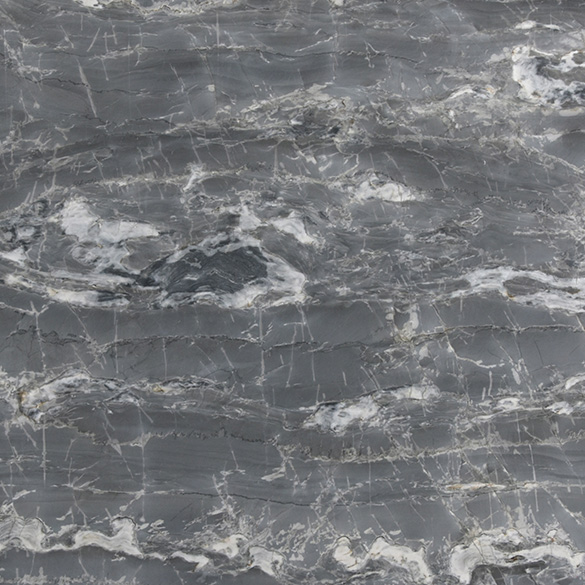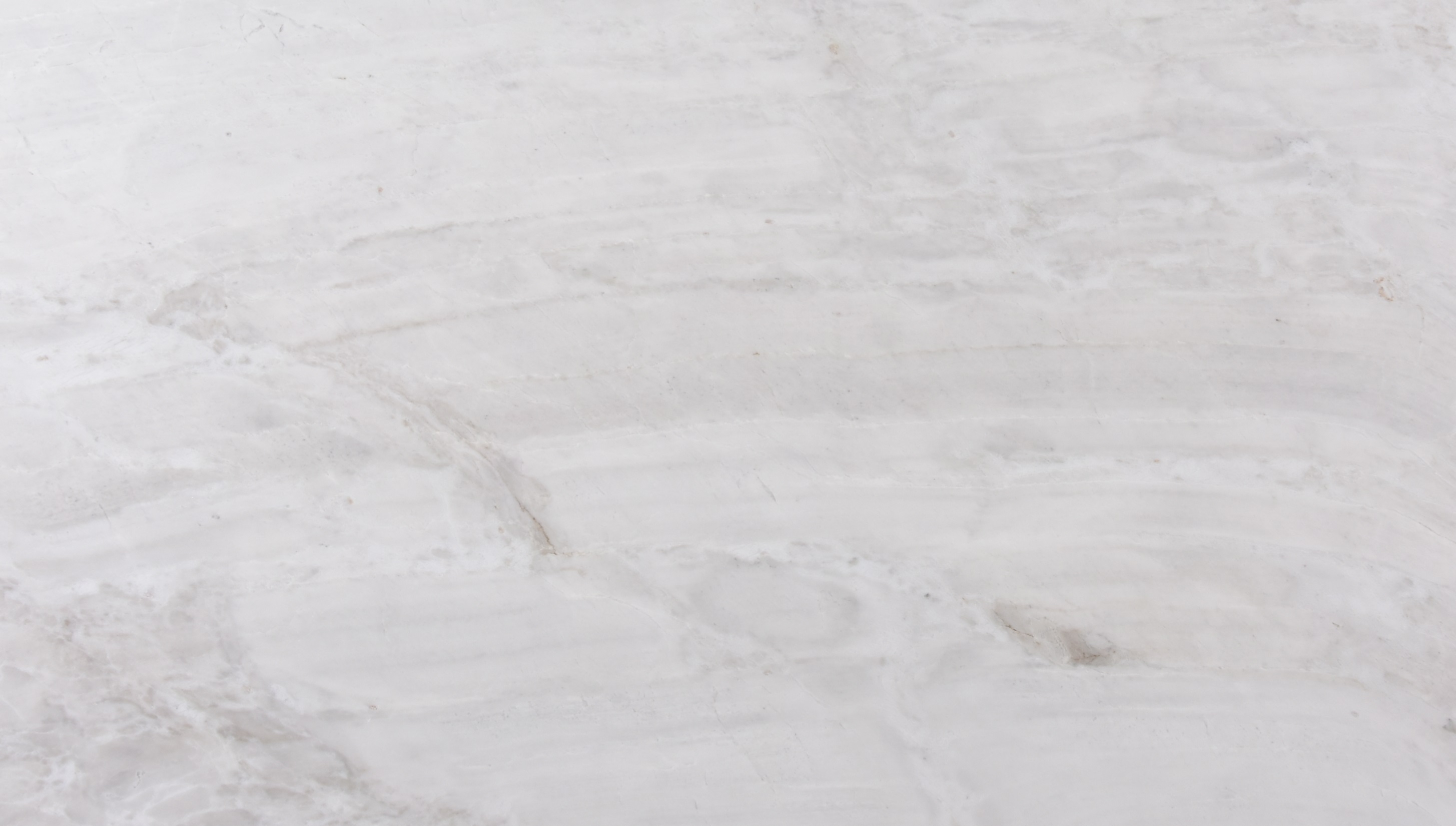Newsletter
Receive the latest
news from Decolores
Latest contents

Granite flooring: learn the advantages and how to use it
Granite flooring is a strategic choice for those seeking elegance, durability, and practicality in their daily lives. With different colors and finishes, this natural stone is one of the most valued in architecture and interior design—and for good reason. Throughout this article, you’ll understand why granite flooring is so highly recommended, discover the main types available, and learn how to clean granite floors, maintain their shine longer, and prevent wear over the years. If you’re renovating or building and want to invest in a high-value finish, this content is for you. We’ll show why granite is one of the most complete flooring options and how to use it to its fullest potential. Enjoy the read! Beauty and Strength in a Single Material When it comes to durable finishes, granite flooring stands out with authority. Composed of minerals like quartz, feldspar, and mica, it is extremely resistant to wear, scratches, impacts, and temperature variations. This makes it an ideal choice for both indoor and outdoor areas, such as living rooms, kitchens, bathrooms, balconies, and even facades. In addition to its durability, granite has a refined and sophisticated finish. With tones ranging from white to deep black, including greenish, golden, and grayish hues, it enhances any space without ever going out of style. Another advantage is its low porosity, making granite more resistant to moisture and stains compared to other stones. This is why it’s commonly used in kitchens and bathrooms, where contact with water and grease is frequent. Types of Granite Flooring: Choose Wisely The variety of granites available in the market invites customization in projects. Among the standout options that combine elegance and versatility are: White Dune Granite: A light and sophisticated tone that brings lightness to spaces. Ideal for modern and minimalist projects. Makalu Granite: Combines earthy tones with striking veining, offering a robust and elegant look, perfect for spacious and refined environments. When choosing, consider the decor style, natural lighting, and foot traffic in the area. High-traffic areas benefit from darker granites or textures that disguise minor imperfections from daily use. Browse the full catalog of granites available at Decolores and discover more options to elevate your project. How to Install Granite Flooring Efficiently Proper installation of granite flooring is crucial to ensure its durability and flawless finish. The first step is to level and prepare the base where the flooring will be laid, preventing future cracks or unevenness. The installation should be done with high-quality mortar, always allowing proper curing time between application and grouting. It’s best to hire specialized professionals, as handling and cutting the stone requires technical precision. For an even more refined finish, polishing after installation enhances the granite’s natural shine and removes minor imperfections from the process. How to Clean Granite Flooring and Ensure Longevity One of granite’s key advantages is its easy maintenance. However, to preserve its noble appearance for years, follow these guidelines on how to clean granite floors: Use only mild soap diluted in water and a soft cloth. Avoid acidic or abrasive products like bleach and degreasing detergents. For tougher stains, use a soft-bristled brush and rinse thoroughly. Never use steel wool, as it can scratch the surface. Preventing dirt buildup and performing regular cleanings helps maintain the stone’s natural beauty for much longer. How to Polish Granite Flooring: Practical Tips Over time, it’s normal for granite flooring to lose some of its shine. However, there are safe and effective ways to restore it. If you want to know how to polish granite floors, here are some tips: Polish with wax specifically designed for natural stone or granite, applying it with a dry, clean cloth in circular motions. For longer-lasting results, consider hiring a professional polishing service with the right equipment. Periodic maintenance with sealers helps protect the stone from stains and enhances its original tone. These simple steps make a big difference in enhancing your space. Choosing Granite Flooring Ensures Elegance for Years Opting for granite flooring means investing in a material that combines beauty, durability, and easy maintenance. With a wide variety of colors, textures, and finishes, it adapts to different decor styles and offers a long lifespan, even in high-traffic areas. Whether indoors or outdoors, granite delivers a sophisticated and functional result. And with the right care—like the tips shared here—you can preserve its natural shine for decades. Explore Decolores’ granite collection and discover how to transform your project with elegance and durability. The catalog includes options like White Dune and Makalu, perfect for those seeking a high-end finish without compromising on strength.
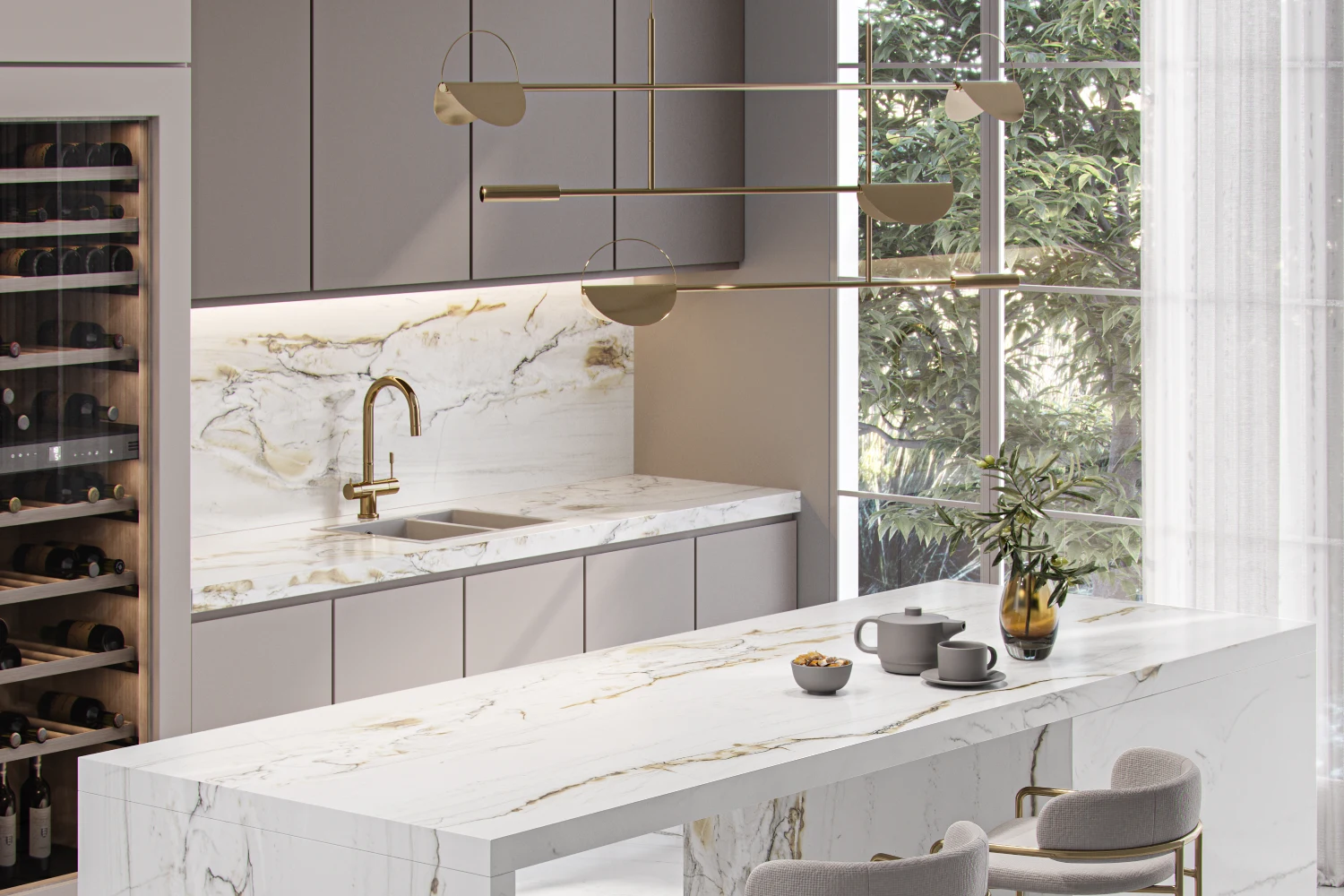
What is minimalist decoration and how to apply it?
Have you ever wondered what it would be like to live in an environment with fewer objects but more harmony and sophistication? That's what minimalist decoration is all about. The "less is more" concept offers the opportunity to transform any space, making it lighter, more organized, and elegant. Do you already know how to decorate a minimalist space? If you're an architect or interior designer looking for a functional, aesthetic, and timeless style, this article will explain how to incorporate minimalism into your project, blending sophistication with natural stone. What is minimalist decoration? Minimalist decoration is an interior design style based on the concept of simplicity, where "less is more." This philosophy seeks to eliminate excess and highlight essential elements, creating spaces with a sense of calm, order, and fluidity. In minimalist style, spaces are composed of few furniture pieces and objects, but each item is carefully chosen for its functionality and aesthetics. The goal is to create a visually clean and organized space without losing sophistication. With the growing demand for more functional spaces, minimalism has become a global trend. These spaces are often characterized by neutral tones, simple lines, geometric shapes, and natural materials such as stone, wood, and metals. What are the fundamental principles of minimalism in interior decoration? To successfully apply minimalist decoration, it's essential to follow some key principles: Simplicity and functionality: Every item in the space should have a clear and essential purpose. The idea is to avoid clutter and unnecessary furniture. Furniture is chosen for its utility and clean design, ensuring practicality and comfort. Neutral color palette: Shades like white, gray, black, and beige dominate, creating a calm and sophisticated base. More vibrant colors can be introduced sparingly through objects or accents that add life to the space without overwhelming it. Open and organized spaces: Minimalism values a sense of spaciousness, so areas should be well-organized and free of obstructions. Multifunctional furniture is an excellent way to keep the space free of unnecessary items. Use of natural materials: Materials like wood, stone, and metals are highly valued in minimalism. They add a tactile and sophisticated dimension to spaces while maintaining the style's characteristic restraint. Natural lighting: The more natural light, the better. Minimalist style seeks to maximize daylight, creating a light and airy atmosphere. To achieve this, prioritize large windows, sheer curtains that let sunlight in, and lighting that complements the space. How to decorate minimally with natural stone? By incorporating natural stone into minimalist decoration, you not only add a touch of elegance and texture but also align with the minimalist philosophy, which emphasizes essential and natural elements. Marble and quartzite are ideal choices for creating a sophisticated space with neutral and delicate tones. These stones are timeless and add beauty without overwhelming the space. Here are some examples of natural stones available at Decolores to create a minimalist decoration! Opt for the deep Sahara Black marble With its dark color and delicate veining, Sahara Black is perfect for adding a touch of luxury without excess. In a minimalist space, it can be used for kitchen countertops or decorative wall panels in living rooms. Bring freshness with Denali quartzite Denali quartzite, with its smooth pattern and light tones, is ideal for bringing lightness and brightness to a space. Its clean and refined appearance makes it an excellent choice for workspaces or reading nooks, as well as wall coverings that complement minimalism with a natural aesthetic. Create a poetic atmosphere with Naica quartzite With its beige tones and smooth texture, Naica, part of the Poetry Collection, is a stone that adds sophistication and coziness. Perfect for relaxation areas like living rooms or bedrooms, it creates a serene atmosphere and can even be used for fireplace exteriors. If you'd like to see how these stones would look in your project, try simulating different patterns in our free room simulator! With it, you can experiment with various combinations of natural stone and explore different decoration possibilities. How to decorate a minimalist space: 5 ideas for each room in the house 1. Master bedroom In a minimalist bedroom, multifunctional furniture is essential. Choose a bed with a wooden headboard, a small nightstand, and bedding in neutral tones like white, gray, or beige. Another great option is using Biancatto marble for the nightstand or headboard, adding sophistication and brightness to the space. 2. Minimalist living room In a minimalist living room, simplicity should stand out. Choose a sofa with straight lines, preferably in neutral tones like gray or white, and add a simple rug and a few cushions for comfort. Mont Blanc quartzite can be used for flooring or a coffee table, adding a touch of softness and elegance. 3. Minimalist kitchen In the kitchen, opt for handleless custom cabinets to create a clean and organized look. Marble or quartz countertops or wall coverings add a contemporary yet minimalist touch. 4. Children's bedroom In a child's bedroom, minimalist decoration can still be functional and fun. Choose simple furniture and soft tones. Mystic Blue quartzite or Pink Crystal can be used for wall coverings in blue or pink tones, or as decorative accents, creating a light and cheerful space without excess. 5. Sophisticated bathroom A minimalist bathroom should be clean and cozy. Combine stones like Mont Blanc for flooring and dark Incognitus quartzite for countertops. Pairing these stones with simple fixtures and natural lighting creates a relaxing, high-end atmosphere. With these ideas, you can apply minimalist decoration to your project and create unique spaces that promote comfort and sophistication. Don't forget to check out the full catalog from Decolores, specialists for over 20 years in granite, marble, and quartzite. Here, you'll find the best options for architectural projects that seek sophistication. By incorporating high-quality natural stone, you ensure your minimalist decoration has the elegance your clients are looking for!
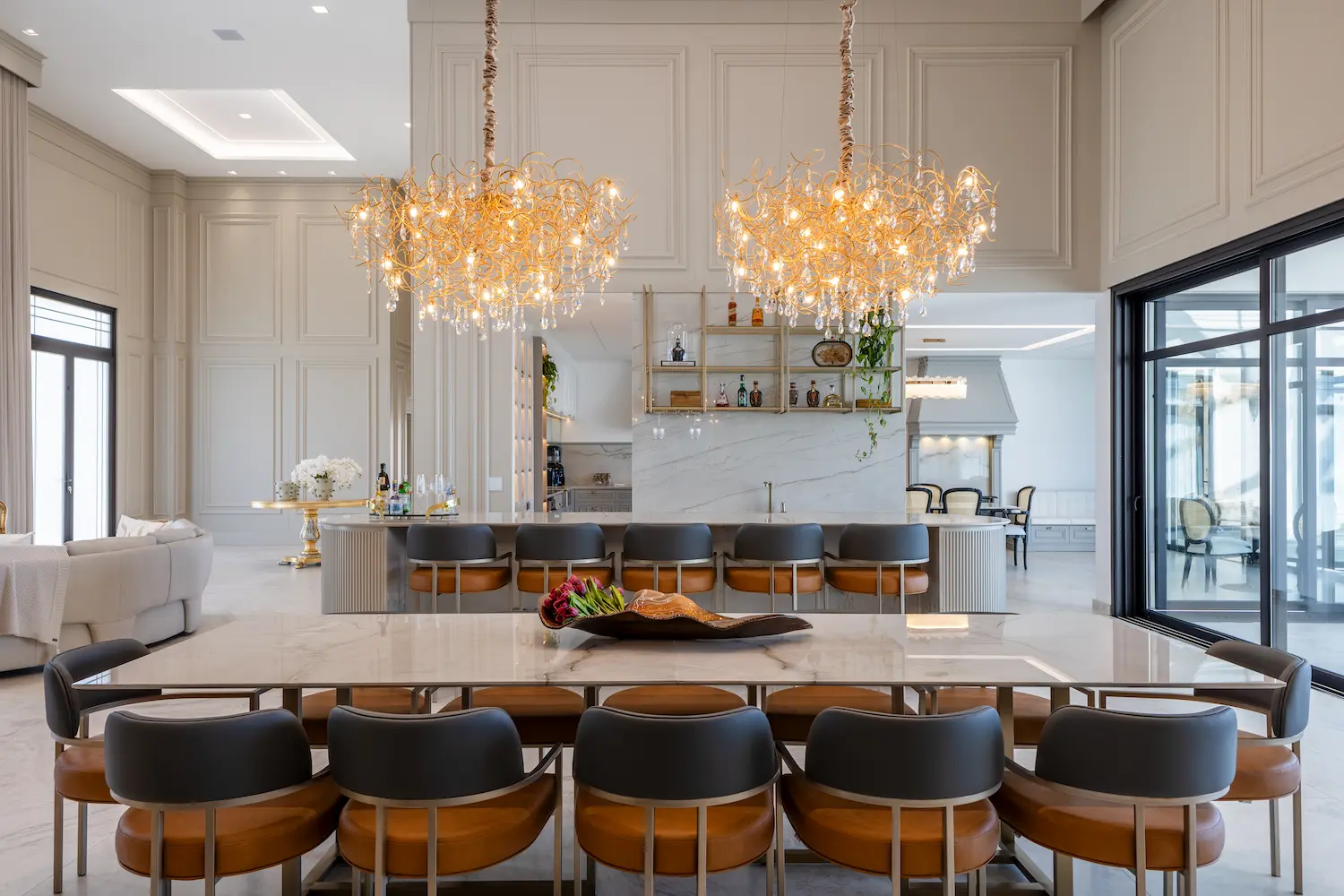
Mont Blanc: timeless sophistication on the countertops at Casa Palmas
Designed and executed by the architecture studio TBH Arquitetura - Tatiana Bresolin Hirassaki, and photographed by Guilherme Rocha de Oliveira, Palmas House is an example of a project that shows how natural stones can transform spaces into more sophisticated environments. The choice of Mont Blanc quartzite, supplied by the marble company Granisul, was essential to create this project that combined elegance, lightness, and timelessness. The power of Mont Blanc quartzite With soft tones and subtle veining, the Mont Blanc quartzite was chosen to compose the countertops of Palmas House, providing a neutral base that harmonized with the graceful design of the project. The material stood out in the kitchen, integrated bar, and dining room details, bringing sophistication and visual uniformity. A high-end kitchen In the kitchen, the Mont Blanc quartzite took center stage on the countertops and backsplash, creating a clean and sophisticated environment. The space, featuring white and light gray cabinets, gained even more elegance with the combination of metallic handles. Integrated bar: curves and textures in harmony In the bar, the Mont Blanc quartzite was applied to a curved countertop with a ribbed finish, providing a contemporary detail to the space. To complete the design, suspended metallic shelves were added to the wall, where drinks and decorative elements were displayed. The combination of the quartzite wall and golden shelves reinforced the concept of luxury. Elegance in every detail of the dining room The integration of the dining room with the kitchen and bar resulted in a fluid and more inviting space. The large table, with a Mont Blanc quartzite top, is surrounded by modern chairs with brown leather upholstery. The final highlight was the pendant lights, which added a sculptural touch and reinforced the cozy atmosphere of the environment. Palmas House is proof that quartzites offer endless application possibilities to create timeless and striking projects.
Other contents
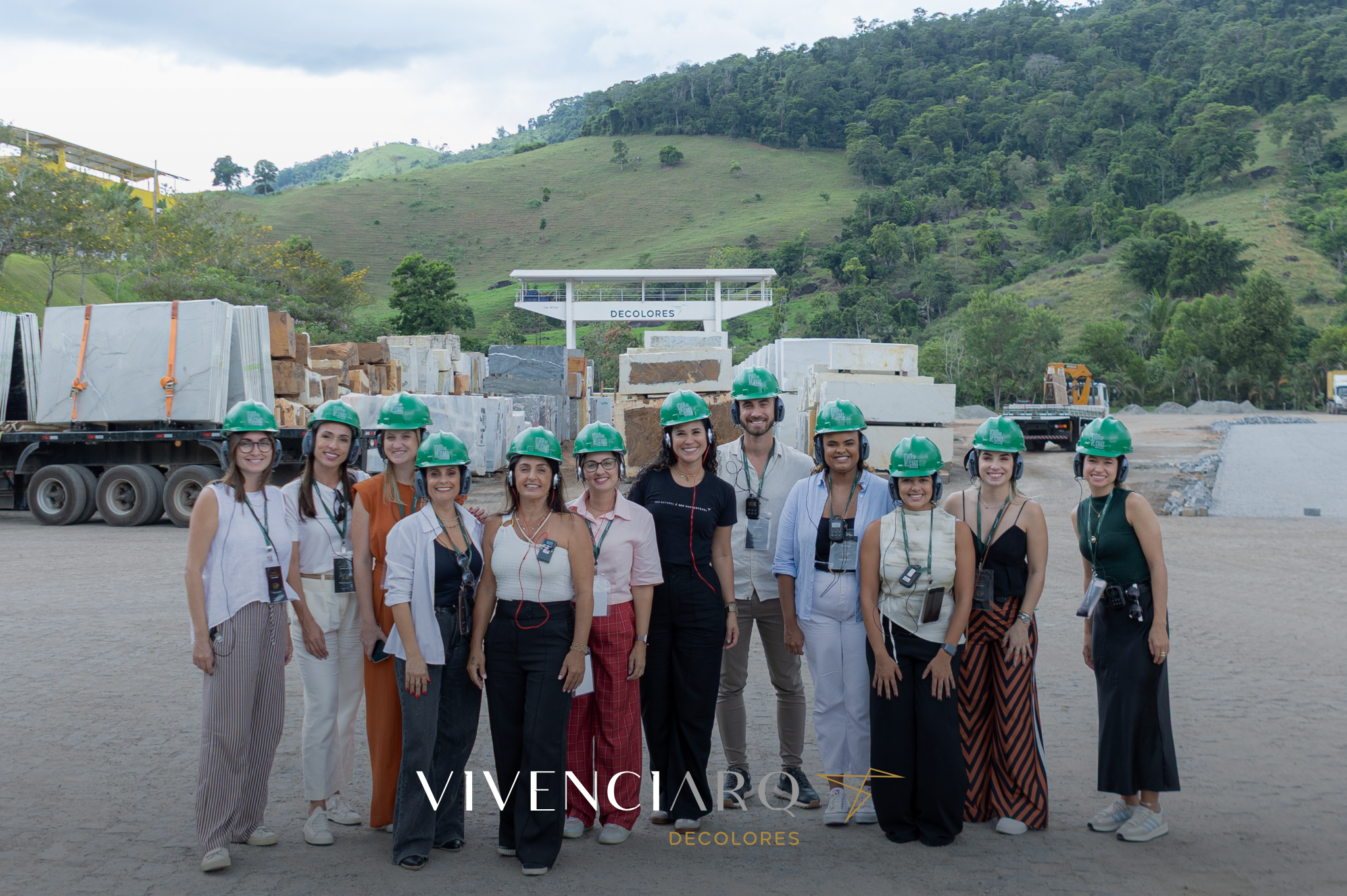
Vivenciarq 2025 12th Edition
The 12th edition of Vivenciarq - and the first of 2025 - was held in partnership with Marmoraria Pedras Nobres, providing a unique learning and interaction experience for design and architecture professionals from Espírito Santo. During the event, participants explored the universe of natural stone through an exclusive tour of our production processes, Research & Development laboratory and innovative Geological Immersion Room. It was an enriching opportunity to answer questions, share experiences and get a closer look at the possibilities of finishes and applications available in our showrooms. The event also included a chat entitled "Stones that inspire: Colors and textures of nature in architecture", led by our natural stone specialist and R&D coordinator, Abiliane. The talk provided valuable insights into the impact of stone on architecture and interior design. We would like to thank everyone who took part and contributed to the success of this edition. Let's continue exploring new possibilities to turn nature into inspiration for great projects!
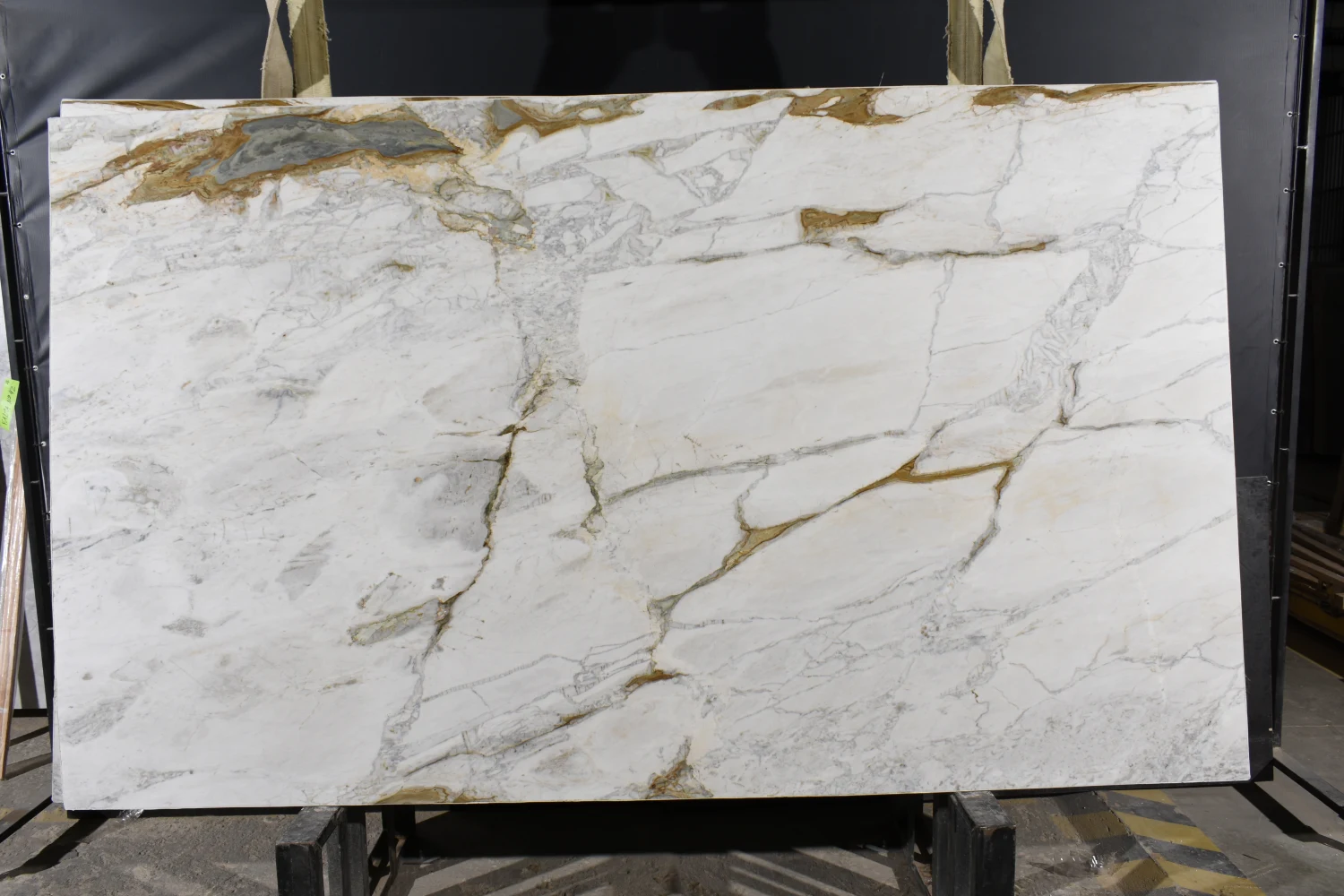
Dolomitic marble: beauty and durability in every detail
Dolomitic marble has been winning over the hearts of architects and interior designers who seek to add sophistication, durability, and versatility to their projects. This natural rock, rich in dolomite, offers a unique combination of strength and a touch of elegance in residential and commercial projects. In this article, you'll learn all about dolomitic marble and how it can enhance your projects! What is dolomitic marble? Dolomitic marble is a metamorphic rock formed billions of years ago, resulting from the transformation of carbonate sedimentary rocks, such as limestone. Its main characteristic is the presence of the mineral dolomite, composed of magnesium and calcium carbonate, which gives this stone greater resistance. This type of marble is notable for its variations in colors and textures, which can include smooth veining and tones ranging from white to shades of gray and even gold. What are the advantages of dolomitic marble? Durability: its composition with dolomite provides greater resistance to wear and impact, making it perfect for interior cladding such as kitchens and bathrooms. Elegant aesthetics: marble is synonymous with luxury and sophistication. Its unique colors and patterns create a timeless atmosphere capable of enhancing any space. Design versatility: whether for floors, countertops, wall cladding, or decorative elements, dolomitic marble easily adapts to different decoration styles, from classic to contemporary. Easy to clean: despite requiring care, marble is very easy to clean and maintain, prolonging its beauty over time. Property value appreciation: the presence of marble in a project can increase the property's value due to its high quality and exclusivity. How to integrate dolomitic marble into your projects? To integrate dolomitic marble into your projects, you need a keen eye for detail and sensitivity. Check out some practical tips for using this stone in different environments! Kitchens and bathrooms Marble is an excellent choice for countertops and sinks, offering an elegant and easy-to-clean surface. In bathrooms, it can be used for both floors and wall cladding, creating a sophisticated and tranquil environment. To complement the look, pair it with brushed metal elements or wooden details. Living room or dining room Marble can be used for coffee tables, floors, and wall cladding. Its sophisticated appearance pairs well with straight-lined, modern furniture, as well as more classic pieces. For a bolder touch, combine it with glass or stainless-steel elements, creating an interesting contrast of textures. Fireplace cladding Dolomitic marble offers a resistant, easy-to-clean, and long-lasting surface, making it a practical choice for the exterior cladding of fireplaces, in addition to becoming the focal point of the living room or bedroom. Which dolomitic marble to choose? Decolores offers an exclusive selection of dolomitic marbles, each with its unique characteristics and exceptional qualities. Check out the main options in our portfolio! Michelangelo With smooth veining in shades of white, gray, and gold, Michelangelo marble is perfect for sophisticated and modern projects. Ideal for floors, countertops, and cladding, its elegant appearance transforms spaces. Matarazzo With neutral tones and high resistance, Matarazzo marble is widely used in high-end projects. Its classic look makes this stone a perfect choice for environments that demand sophistication. Aurora Gold With its golden tones and wavy veining, Aurora Gold marble brings the sensation of a sea of gold. Perfect for pairing with glass and metals, this dolomitic marble creates an environment of true luxury. Telesto The variations of gray and white veining in Telesto marble give it the right balance of sobriety and boldness. This stone is ideal for cladding countertops, kitchens, and even walls, providing a modern look. Biancatto With soft white tones and gray nuances, Biancatto marble is a classic and timeless choice. Its discreet beauty is perfect for creating serene environments, adding a touch of lightness to the space. Marble design trends Dolomitic marble continues to be one of the most sought-after stones by interior designers. How about checking out some trends to inspire your next projects? Sophisticated minimalism: Biancatto marble is ideal for minimalist projects, with clean and smooth lines. Use it on walls and floors to create a neutral and sophisticated base that allows other design elements to shine. Material mixing: combine marble with materials like metal, glass, and wood to create interesting contrasts. Telesto marble, for example, pairs perfectly with stainless-steel details. Luxury environments: if the goal is to create a luxurious environment, dolomitic marble is the ideal choice. Pair it with bold wooden furniture, indirect lighting, and some vibrant-colored accessories for an impressive result. Dolomitic marble is undoubtedly the perfect choice, isn't it? With Decolores' marble catalog, you can create timeless environments that impress in every corner. Contact Decolores and request a quote! Bring your projects to life with dolomitic marble and enjoy all the benefits of natural stone.
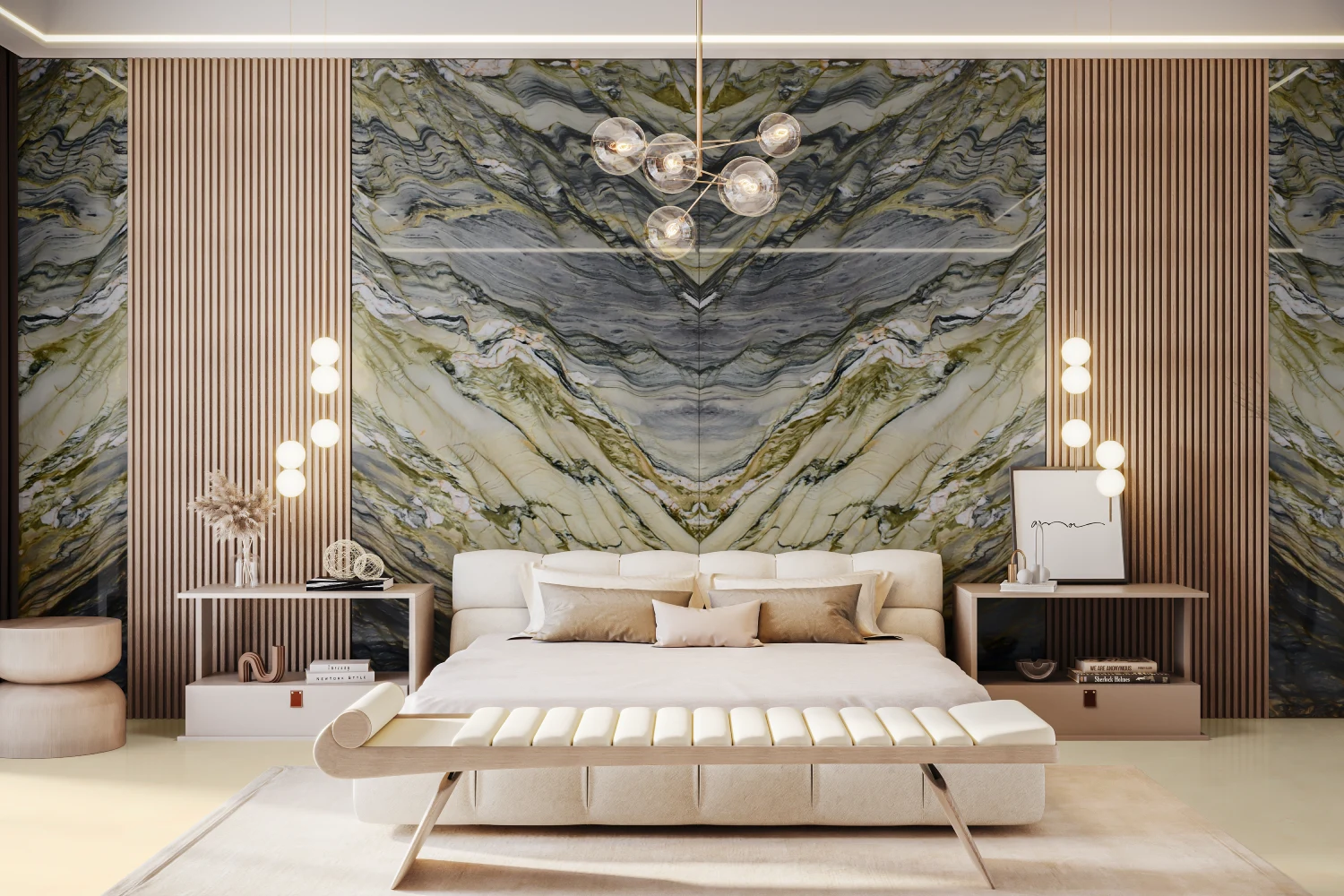
Flexible and multifunctional spaces using natural rocks
The use of natural stones in interior decoration has gained increasing prominence due to its versatility and sophistication. These stone materials, such as marble, quartzite, and granite, possess unique beauty and offer unmatched resistance and durability. When applied in interior design or outdoor areas, natural stones can transform spaces, bringing harmony with natural elements. Today, you will see how these natural stones can create versatile and multifunctional spaces, always with a touch of sophistication. Follow along! What are natural stones? Natural stones are materials extracted directly from nature through open-pit or underground mining. Then, the stones undergo cutting and finishing processes before being applied in various design projects. Used in construction and interior decoration, they play an essential role in architectural projects, whether for floors, wall coverings, countertops, or furniture. The durability and timeless aesthetics of natural stones, such as marble, quartzite, and granite, are the main reasons they are ideal choices for creating high-end spaces with a sense of elegance. Additionally, they have characteristics that allow them to be used in multifunctional spaces that demand functionality, practicality, and beauty. Main types of natural stones in decoration Quartzites Quartzites are metamorphic rocks composed primarily of quartz, which gives them high resistance and durability. The appearance of quartzite stones varies greatly but always carries a touch of sophistication. Their colors range from light to dark tones, making them ideal for countertops, floors, and coverings in both indoor and outdoor areas. Marbles Highly prized for its crystalline texture and striking veining, marble is a metamorphic rock composed of calcite or dolomite and evokes the most admired works of art throughout the centuries. It is widely used in prominent indoor areas, such as living rooms, bathrooms, and kitchens. Flexibility of finishes for coverings The flexibility in natural stone finishes allows for the creation of various visual and sensory effects. Each finish can enhance shine, texture, or softness. Here are some of the most popular finishes! Polished: The polished finish is synonymous with high shine and a smooth texture. It highlights the stone's veining and tones, giving an elegant and refined appearance. Honed: This finish offers a semi-smooth texture but is more opaque and matte. It is an excellent choice for spaces seeking a minimalist touch. Flamed: Ideal for outdoor areas, the flamed finish uses heat to create an anti-slip texture. It is perfect for gardens, balconies, and facades, as it is resistant and provides a rustic touch. Brushed: This finish is more anti-slip than polished but still offers a satin-like, smooth, and natural look. Ideal for countertops and floors, the brushed finish brings sophistication without compromising durability. Get inspired by real projects: multifunctional spaces with natural stones If you want to create sophisticated and multifunctional spaces, the following projects are perfect examples of how natural stones can transform environments. All the natural stone patterns used are part of Decolores' portfolio. See how they made a difference in these projects! Penthouse with Mont Blanc Quartzite A striking example of the use of natural stones in multifunctional spaces is the Penthouse, designed by the Ambidestro studio. Located in Porto Alegre, this residence uses Mont Blanc quartzite in various finishes, creating a sophisticated and fluid environment. The material was applied to walls, countertops, and floors, ensuring continuity and harmony. The light tone of Mont Blanc, combined with warm wood, brought a perfect balance between modernity and coziness, essential for a multifunctional space. La Petite Afrique Building with Bronzite Facade Another notable project is the La Petite Afrique Building in Monte Carlo, Monaco, designed by renowned architect Isay Weinfeld. The Bronzite quartzite was used on both the facade and the interior, creating a unique and imposing look. The application of Bronzite in a brushed finish on interior walls brings subtle movement, highlighting the stone's natural beauty and providing a sense of fluidity to the space. Living Inspirar with Rosso Levanto Marble In the Living Inspirar project, signed by Gramés Interior Architecture, the Rosso Levanto marble took center stage. This Italian stone, with its striking veining and vibrant tones, brings a sense of luxury and exclusivity to the space. The use of Rosso Levanto provided unique elegance in countertops and decorative tables. The project combined marble with modern and natural elements, such as wood, creating a multifunctional and welcoming environment. As you can see, natural stones are not only beautiful but also extremely versatile, allowing architects and designers to create multifunctional spaces. If you are looking for materials to add personality to your projects, from Mont Blanc quartzite to marbles, there is a vast array of natural stones to transform your designs. To explore even more possibilities with natural stones, check out the complete catalog of stones from Decolores. Take advantage and try our environment simulator to discover which natural stone best suits your project!

Marble in decoration: how to transform your space with sophistication
Whether on the floor, walls, or furniture, marble in decoration adds a touch of luxury that never goes out of style. Its noble origin and variety of patterns make marble an irresistible choice for architects and designers seeking to create sophisticated spaces. Today, you'll learn more about the characteristics of marble, how to match its colors and tones, and, of course, practical tips on how to use this natural stone in decoration! Characteristics of Marble in Decoration Marble is a metamorphic rock formed from limestone under high pressure and temperature. This formation gives the stone a resistant structure, ideal for decoration projects. Its physical characteristics, such as veining with a variety of colors, also make each piece unique. Marble is known for its durability, being resistant to wear and time, making it a sustainable choice for flooring, wall coverings, and furniture. Very famous in Italy, the stone has been used in some of the world's most renowned architectural and artistic works, such as Michelangelo's sculptures. What Does Marble Convey? Marble is more than just a construction material; it conveys history, art, and luxury. By incorporating marble into decoration, you bring a sense of grandeur and elegance to the space. In the works of great masters like Michelangelo and Bernini, marble was used not only for its beauty but also for its ability to transform light and create rich, detailed textures. Its use in sculptures and important constructions, especially in Italy, reinforces the idea that marble is a symbol of strength and timeless beauty. Which Colors Go Well with Marble? The possibilities for combining marble are endless. White or light marble, for example, pairs perfectly with neutral tones like gray, beige, and pastels. Dark marble is ideal for those seeking a dramatic and luxurious look. It can work well with metallic finishes like gold or silver, as well as bolder colors such as deep red or navy blue. How to Use Marble in Decoration? Marble can be used subtly or boldly in decoration, depending on how it's applied. Discover some of the most popular marble patterns available at Decolores and how to incorporate them into interior design! Statuario Marble This Italian marble is famous for its gray veins on a white background, adding elegance to any space. In a minimalist setting, Statuario marble serves as a focal point, while in darker spaces, it brings lightness and sophistication. Botticino Marble Originating from Italy, Botticino marble is known for its soft beige tone and subtle veining. It's ideal for creating cozy environments and can be used on floors, countertops, vanities, and furniture. Crema Marfil Marble This Spanish marble is one of the most popular choices for interior projects. The beige color and delicate veining of Crema Marfil add a more understated touch of sophistication. Van Gogh Marble This Brazilian marble is a geological work of art, with shades of yellow, white, and sky blue forming a unique and mesmerizing pattern. The Van Gogh marble is perfect for bold projects, working well as a feature wall, coffee table, or countertop. Sahara Black Marble For a dramatic and refined touch, Sahara Black is an exceptional choice. Its deep black color and white veins create a striking contrast, ideal for luxurious bathrooms, wall coverings, or flooring. Pair it with gold metals for an even more sophisticated look. Marble Decoration at Home By combining marble with other materials and styles, you can create spaces full of personality. Here are some creative ideas for using marble in interior design. Marble Tables in the Living Room A marble table can be the centerpiece of a living room. For example, a light marble coffee table, such as Calacata Antico, placed in the middle of an emerald green velvet sofa and leather armchairs. The contrast between the white marble and deep green creates a vibrant and elegant atmosphere. To add even more sophistication, choose metallic accents like gold or copper table bases, creating a perfect harmony between the stone and finishes. Marble Wall Panels Who said marble can only be used on floors or sinks? Try covering an entire wall with marble to create a striking feature. Sahara Black marble, with its dark background, for example, can be applied to a feature wall in the living room or hallway. This technique adds depth to the space. To soften the look, pair it with light wood furniture and neutral tones like gray and white, creating a perfect balance. Marble with Other Noble Materials One of marble's greatest advantages is its ability to pair with other materials like wood, metal, and glass. The warm texture of wood creates a perfect contrast with the cool sophistication of marble, bringing balance to the space. In bedrooms, you can combine a marble bedside table with a velvet-upholstered headboard, creating a contrast between the stone and soft fabric. Experiment with Marble in Your Decoration These creative ideas show that marble in decoration can be used innovatively in various elements, from furniture and mirrors to small decorative details. No matter your project's style, marble is a versatile and timeless choice that adds a touch of elegance. If you're planning your next project and looking for high-quality stone to bring your ideas to life, explore Decolores' marble catalog. We offer a range of options with expertise in the latest design trends. Let your projects benefit from marble in decoration!

Types of marble finish: which is best for your project?
Present in classical statues and iconic constructions, marble never goes out of style, continuing to be desired by architects, designers, and artists worldwide. Over the years, professionals have explored different marble finishes to further enhance its unique characteristics. The polished finish, with its classic shine, remains the most commonly used, but more natural and matte finish options have also been gaining popularity. If you're unsure which marble finish to choose for your project, this article will help you understand the options available at Decolores. Check it out below! What are the types of marble finishes? Choosing the type of marble finish goes beyond aesthetics; it also involves considerations of the sensations and textures the space will convey. Each finish provides a distinct result, and it's essential to understand the options to choose the one that best suits your architectural project. Below, we present the main marble finishes! Polished finish The polished finish is the most traditional and popular marble finish. This process results in a smooth and shiny surface with a mirror-like effect that reflects light beautifully. Ideal for creating sophisticated and luminous environments, such as kitchens and bathrooms, the polished finish adds an undeniable touch of elegance. Brushed finish The brushed finish uses brushes to create a light, natural texture that is perceptible to the touch. This finish highlights the beauty and natural tones of the stone, making the environment more cozy and rustic. Honed finish The honed finish is a technique used to create a smooth and matte texture on the marble surface. This finish provides a velvety touch without losing sophistication. Being semi-polished, the honed finish is a great option for those seeking something between the shine of polished marble and the rustic look of brushed marble. Types of marble edge finishes When it comes to edges, the marble finish also plays an important role in aesthetics and functionality. Well-finished edges ensure a more refined look and also help increase the material's durability. Here are some of the most commonly used edge finishes for marble: straight: the straight edge is simple and classic, ideal for minimalist and modern projects, providing a clean and straightforward finish; half bullnose: with a rounded shape, the half bullnose offers a softer and more elegant touch, ideal for spaces seeking a more fluid design; beveled: this angled finish creates a sloped edge, often used on countertops and tables, providing an elegant aesthetic and protection against chipping; full bullnose: the full bullnose edge has a rounded finish, commonly used on sinks and countertops, giving a smooth feel to the touch; half miter: this finish creates a diagonal edge, frequently used to give a seamless look and hide seams; dove edge: ideal for sinks and basins, the dove edge features a rounded finish, creating a sense of fluidity. What is the best marble finish for my project? The choice of the ideal marble finish depends on the specific application, the style of the space, the desired texture, and the necessary care. If you are looking for sophistication and shine, the polished finish is an excellent option, but it should be used with caution in slippery areas as it is smoother. For more rustic or contemporary projects, the honed or brushed finish may be more suitable, offering a textured look that is also non-slip. In addition, the choice of side finish is also important, especially on countertops and furniture, where the edge must be practical and at the same time aesthetic. Edges with finishes such as beveled and rounded beautify the environment and are great options for greater protection and durability. Decolores Marbles: elegance and variety in marble finishes Decolores is a reference in the natural stone market and offers dozens of patterns in different marble finishes to meet all projects. Among our most renowned patterns are Calacata Italiano, with a white background and gray and gold tones, available in polished, brushed and honed finishes. Just like Michelangelo, with its light color, soft gray veins and large yellow veins, or Crema Marfil, a classic and elegant option with soft beige tones. These marbles offer options that suit both those seeking a brighter and more sophisticated environment and those who prefer a more natural texture. To explore more patterns and find the perfect material for your project, visit the complete catalog of marbles from Decolores or contact us for a personalized quote!
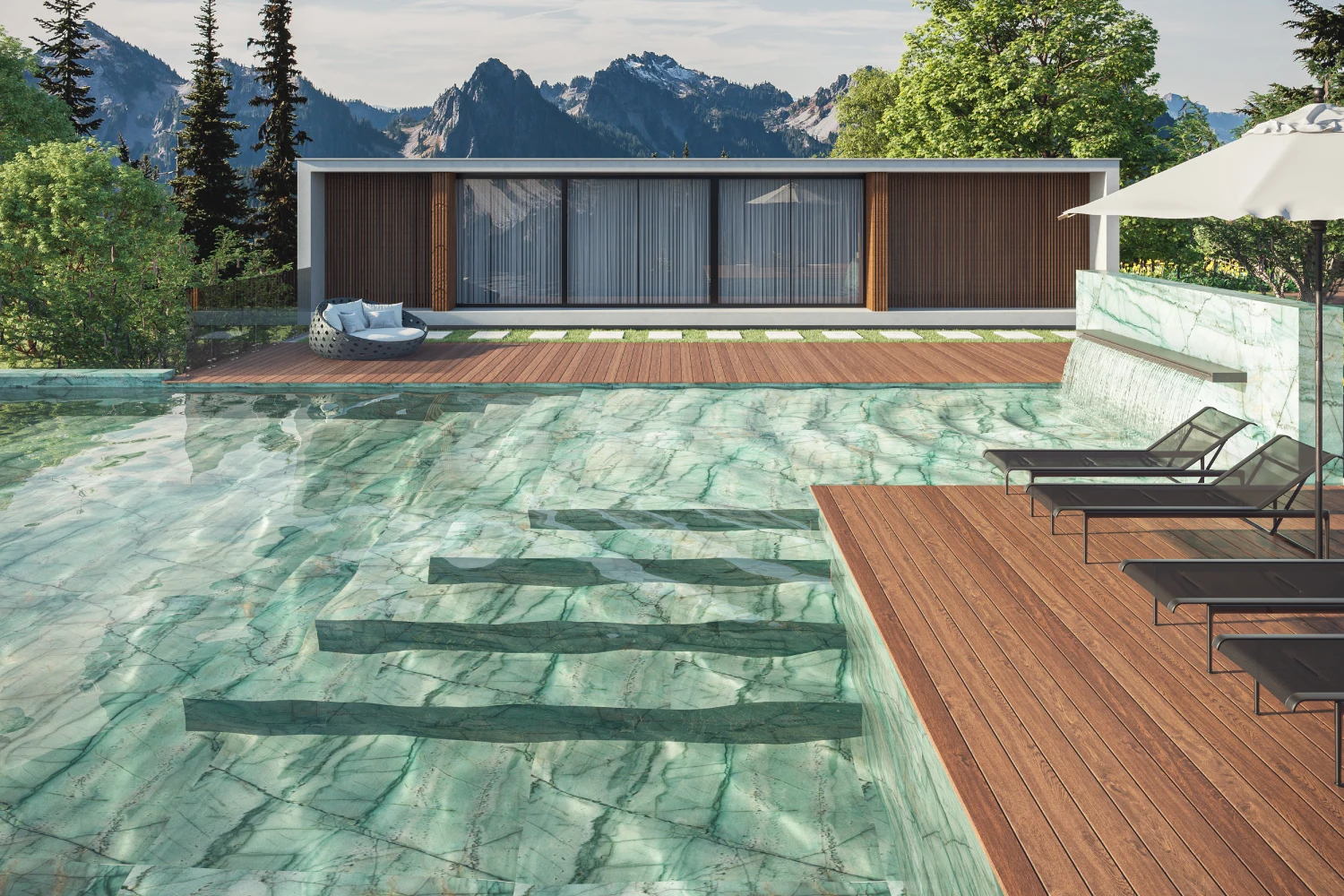
Quartzites and their applications for pool edges
When designing the outdoor area of a house, the choice of pool edge stone is a decision that requires attention to detail. The pool edge is not just an aesthetic matter but also one of comfort, as it impacts thermal comfort, safety, and the durability of the environment. Among the available options, quartzite stands out as an excellent choice for composing the pool surroundings, offering sophistication, resistance, and versatility. Learn more below! Why use stone for the pool edge? Using stone for the pool edge is an excellent way to add value and style to your architectural project. Stone edges, besides conferring elegance to the environment, play essential roles in the comfort and safety of users. On days of intense heat, it is common for some pool edges to become too hot, which can cause discomfort. Stones, especially quartzites, have the ability to provide thermal comfort, maintaining a pleasant temperature and allowing you to enjoy the pool without worrying about excessive heat. Additionally, the stone edge subtly delimits the pool space, highlighting it and giving a touch of sophistication. What is the best stone for the pool edge? One of the best options for the pool edge is undoubtedly quartzite. Quartzite is a metamorphic rock, formed by the alteration of arenitic rocks (sandstone), under high pressure and temperature over millions of years. The formation of quartzite results in a rock rich in quartz, which gives the stone remarkable resistance to impacts, abrasions, and thermal changes. With its high resistance and unique beauty, quartzite perfectly adapts to different project styles, whether for traditional pools or modern infinity-edge pools. Its wear resistance, low water absorption, and color diversity make it the ideal choice for outdoor and indoor areas. Thus, quartzite is very versatile and can also be used in other spaces, such as leisure areas, balconies, and even inside pools. Advantages of quartzite for pool edges Quartzite is one of the best choices for those seeking a durable and elegant stone for pool edges. See the main advantages of this material! Superior durability: Quartzite is an extremely resistant rock, capable of withstanding the action of water, sun, and climate changes, maintaining its appearance over time. Thermal comfort: Being a natural stone, quartzite has low heat absorption, ensuring that the pool edge remains comfortable for the feet, even on very hot days. Safety: Many quartzite finishes have anti-slip characteristics, reducing the risk of slipping around the pool and providing more safety. Easy maintenance: Quartzite requires little maintenance, as it is easy to clean and preserves the beauty of the pool edge for many years. Sophisticated appearance: Quartzite is a naturally elegant stone, with a variety of colors and patterns that bring sophistication to the environment, making the pool area even more inviting. Versatility: Besides being ideal for pool edges, quartzite can also be used in floors of indoor and outdoor areas, balconies, kitchens, bathrooms, among other environments. Best quartzite patterns for pool edges Decolores is one of the leaders in the market when it comes to quartzites, offering various options of stone for pool edges to meet all tastes. Get to know some of our best quartzite patterns for pool edges! Ijen Blue With an impressive geological origin, Ijen Blue is a quartzite that stands out for the surprising contrast between bluish-gray and orange-yellow. Its unique beauty is the result of the presence of iron minerals, which give the stone a rich and vibrant tone. Leblon The Leblon quartzite is perfect for those seeking a softer tone, with greenish-blue hues that evoke the Brazilian coast. Its geological formation, linked to sea level variation, makes its colors and textures a reflection of nature, creating a serene and elegant environment. Da Vinci The Da Vinci quartzite is a timeless choice for those seeking a stone that combines resistance and sophistication. With minerals that confer a vibrant green to its surface, Da Vinci is a crystalline quartzite that resists time and weather, being ideal for high-durability and beauty pools. Where to find natural stones for pool edges? Decolores is the reference company in the production and processing of natural stones, such as quartzites, marbles, and granites. With over 20 years of experience, Decolores stands out for excellence in stone transformation, creating high-quality and uniquely beautiful products. We have an extensive portfolio of options for pool edges, such as Mont Blanc and Da Vinci quartzites, with various finishes available, such as polished, honed, and brushed. Additionally, we offer specialized service to ensure that architecture and interior design professionals find the best solution for their projects. If you are looking for a pool edge stone that transforms the pool area into a unique and enchanting space, be sure to check out our complete catalog of quartzites!

Granite maintenance: learn essential tips
Granite is a noble and highly durable material used in construction and decoration. Additionally, this natural rock is one of the most resistant to scratches, porosity, and high temperatures, making it an excellent choice for floors, countertops, and other coverings in both interior and exterior spaces. However, like any material, granite maintenance is necessary to ensure its beauty and functionality over time. In this article, learn about the best practices for granite maintenance and discover the main granite patterns to invest in your project today! How should granite maintenance be done? Granite maintenance involves daily and preventive care, as well as actions to prevent the material from suffering damage over time. Granite is naturally resistant to stains, scratches, and high temperatures, but that does not mean it is free from care. To preserve its beauty and functionality, granite maintenance should include regular cleaning, the use of suitable products, and the application of water repellents when necessary. However, it is important to emphasize that granite maintenance begins at the time of installation. Therefore, ensure that the material is installed by qualified professionals to avoid cracks that compromise the aesthetics of the stone. What should be applied to granite for preservation? Opt for neutral detergents when cleaning natural rocks such as granite. To further protect granite, it is advisable to apply a water repellent recommended by the manufacturer every two years. It helps create a protective layer that prevents liquid penetration and reduces porosity, ensuring greater resistance to stains. How to clean granite daily? Daily granite maintenance requires simple but effective care. Cleaning granite daily can be done with a soft cloth and warm water. Avoid using abrasive sponges or rough scrubbing pads. In general, you can use a neutral detergent diluted in warm water to clean surfaces such as countertops or floors. Avoid letting acidic liquids, such as vinegar or bleach, come into direct contact with the stone. For areas like floors and stairs, it is recommended to sweep away loose dirt before wiping with a damp cloth. Invest in high-quality granite patterns In addition to adopting proper cleaning and maintenance practices, another crucial factor for long-term granite maintenance is choosing high-quality material. The quality of granite directly impacts its ease of maintenance and durability. By choosing high-grade granite, you ensure the material remains beautiful over the years. The granite patterns from Decolores offer materials resistant to wear and stains. Decolores is recognized for its rigorous natural stone processing and stands out for its advanced technology application and effective quality control. Are you familiar with our diverse line of Decolores granite? Among the most popular patterns are Makalu granite, White Dune granite, and Silver Grey granite. These patterns offer a sophisticated aesthetic and are available in polished, brushed, and honed finishes. They can be applied to various types of environments, such as: indoor and outdoor floors; indoor and outdoor walls; kitchen countertops and tops; bathroom countertops and sinks; stairs and panels; and external fireplace cladding. Ensure a secure investment for your projects now that you know how to maintain granite. Simulate environments with our complete line of natural stones or talk to our sales team!
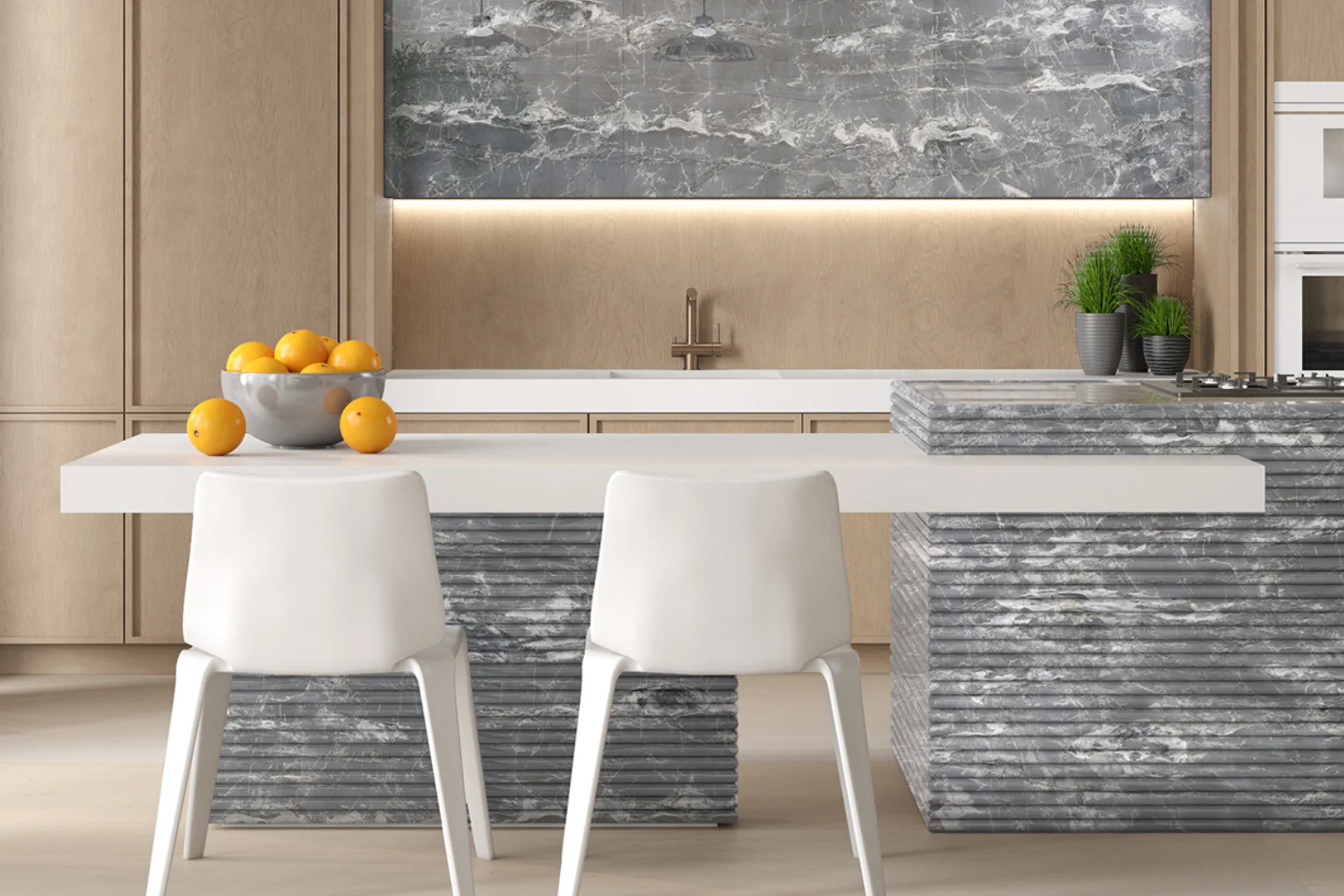
Why choose marble for your kitchen? Discover the benefits
Marble is a natural rock known for its sophistication. Formed from limestone rocks that, due to high pressures and temperatures, transform into a metamorphic rock, marble is characterized by its unique veins and nuances. For architects and interior designers, marble for kitchens is an excellent option, as it not only adds aesthetic value to the space but is also durable and easy to maintain. Decolores offers a line of marbles with patterns for different decoration styles, making it easier to choose the perfect material for your project. Follow the article below to learn how to choose! Why invest in marble for the kitchen? Investing in marble for the kitchen means investing in elegance and durability. This noble material, with its timeless appearance, combines beauty and resistance, making it a smart choice for high-end kitchen projects. The main advantage of marble is its ability to visually transform the environment, making it more sophisticated and welcoming. The longevity of the material is also a considerable benefit, as when well cared for, marble maintains its beauty and functionality for decades. Using this material in architecture can significantly increase the property's value in the long run. Where to use marble? Marble for the kitchen is an extremely versatile material and can be used in different ways in interior design projects. Learn more below! Marble kitchen countertop The marble kitchen countertop is a popular choice among architects and interior designers for its beauty and practicality. Besides being resistant, marble has a natural elegance that makes the countertop a focal point in the kitchen, enhancing the entire environment's design. Tabletop for kitchen dining Marble provides a smooth and pleasant finish to the touch, enhancing the experience of family meals. The unique veins and natural tones of marble also create an exclusive design that adapts to different decoration styles. Marble floors and walls Marble is also an excellent choice for floors and interior wall coverings, bringing a luxurious and modern look to the kitchen. Marble flooring is durable and easy to clean, making it great for kitchen environments. Additionally, it has the ability to reflect light, making the space brighter and more spacious. Marble walls, whether on the backsplash or as decorative details, can transform the space, adding a touch of refinement. What is the best marble for kitchens? Choosing the best marble for the kitchen depends on the style and atmosphere you want to create. However, Decolores offers some of the most beautiful and sophisticated marble patterns for kitchens. Among the best marble patterns are Rosso Levanto, Van Gogh, Sahara Black, Calacata Italiano, and more. Learn more about each one! Rosso Levanto: With dark red tones and dramatic white veins, it is perfect for those seeking a striking look that evokes the intensity of a volcano. Van Gogh: A marble that brings softness and balance, originating from the limestone of the seas of Bahia. Its layers mix shades of yellow, white, and blue, resembling a serene landscape. Sahara Black: A contemporary marble with a black background and subtle white veins, perfect for minimalist and refined spaces. Calacata Paonazzo: This marble has a grayish and ivory-white background, perfect for kitchens seeking a touch of rarity, as it is extracted in limited quantities in Italy. Calacata Italiano: A timelessly elegant marble with gray veins and golden details, bringing a sophisticated finish ideal for classic environments. Choose your marble pattern according to the kitchen style The choice of marble for the kitchen should always consider the style and atmosphere desired by the client. For modern kitchens, Rosso Levanto and Calacata Paonazzo are perfect for creating a bold and contemporary space. For more classic kitchens, Calacata Italiano and Van Gogh bring the sophistication of traditional designs, creating an elegant space. As you can see, marble for kitchens is a sublime material for countertops, tables, floors, or walls, offering versatility and sophistication to projects. To ensure the quality of your kitchen project, check out the full catalog of marbles from Decolores and choose the ideal pattern for your style!
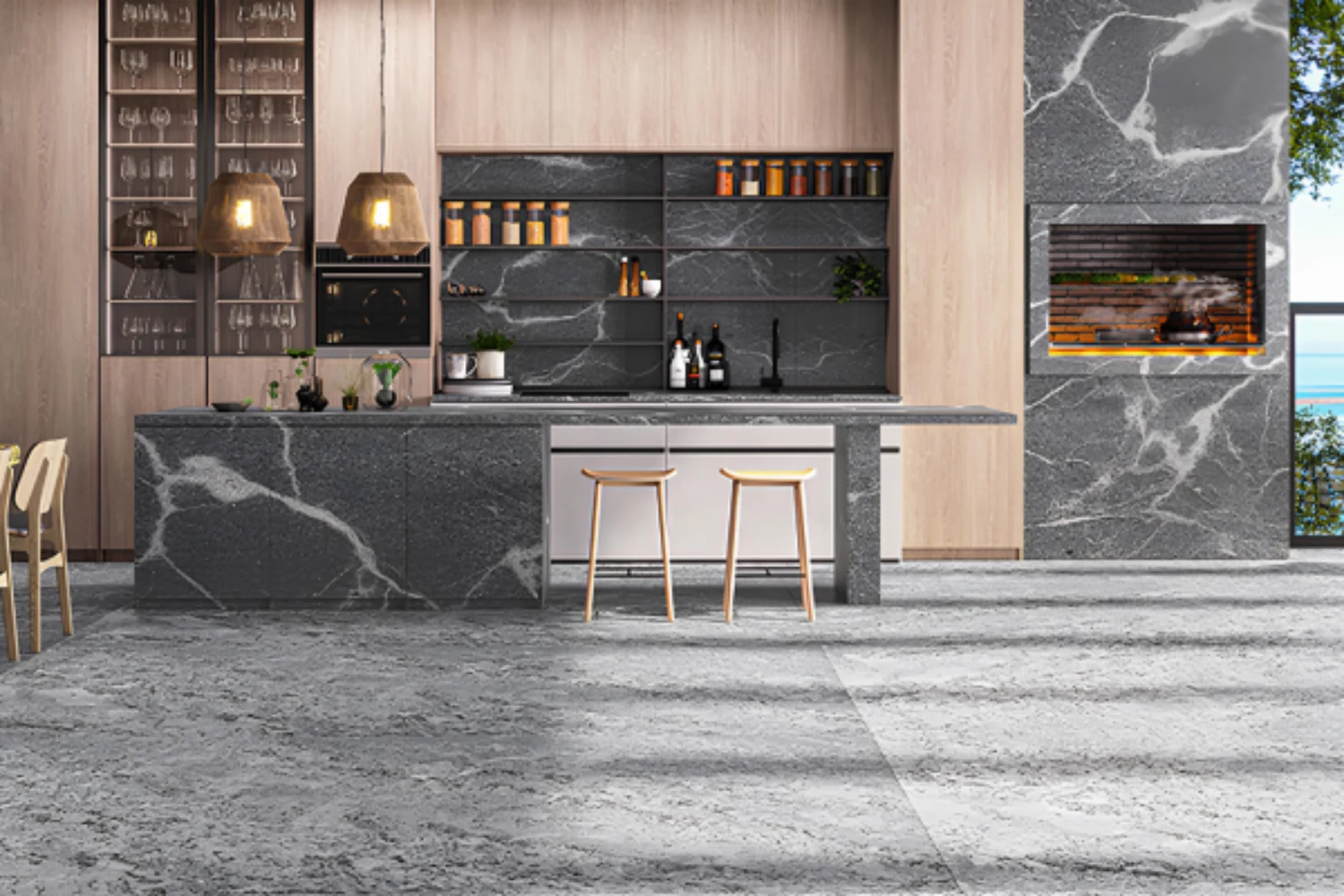
Granite for outdoor areas: much more durability and elegance
Granite is undoubtedly one of the most appreciated natural stones in construction and design. According to the Brazilian Association of Ornamental Stones, granite is one of the most exported materials. But what makes granite for outdoor areas so special? In this article, discover the reasons why granite is the ideal choice for outdoor spaces, how to use it in decoration, and explore some incredible trends for your project! Why use granite for outdoor areas? Granite for outdoor areas is the perfect solution for those who want to combine elegance and practicality. But before understanding the advantages of this stone, it's important to know what granite is. Granite is an igneous rock formed by the cooling and solidification of magma. It is mainly composed of quartz, feldspar, and mica, which give the material its resistant nature and unique tones. Its origin makes it resistant to weathering, making it an excellent choice for outdoor environments. Learn more below! Beauty and unique texture One of the great qualities of granite is its beauty. The unique texture and various color tones of granite are the result of its mineral composition and natural formation process. Anti-slip material In outdoor areas, safety is certainly a priority. Granite stands out for its anti-slip properties, making it a smart choice for places exposed to rain or moisture, such as pool areas, sidewalks, and stairs. Resistance to weather conditions Its mineral composition makes granite resistant to wear caused by exposure to sun, rain, and temperature variations. Thus, granite maintains its appearance intact even after long periods of exposure. Versatility in architectural styles Granite's adaptability is one of the reasons it has become one of the most sought-after materials in the construction market. In a modern architecture project, for example, granite can be used to create a clean and sophisticated environment. In more rustic or Mediterranean styles, granite can be combined with natural elements to offer coziness. Where to apply granite in outdoor areas? Granite for outdoor areas is quite versatile and can be used in various applications, the most common being: outdoor flooring — granite is ideal for sidewalks and leisure areas, such as patios and balconies; outdoor granite countertops — in outdoor kitchens with barbecues, granite is a perfect choice for durable and easy-to-clean countertops; wall and pool cladding — use granite to create a standout wall or to line pool edges; stairs — granite stairs are safe, anti-slip, and very durable, ideal for gardens, entrances, and balconies; facades — use granite to create facades for luxury buildings and commercial properties. Stay updated on granite trends in architecture and decoration Granite remains a timeless choice, of course, but trends in architecture and decoration evolve every year. Discover three trends that are gaining popularity and expand your possibilities in outdoor granite projects! Mixing tones and textures Currently, the integration of tones is a growing trend in design; a good example is the combination of earthy colors, such as Baltic Amber and Mocha Mousse, with the dark and light tones of granite. Integration of other materials with granite Granite can be combined with other materials, such as glass, metals (like copper and stainless steel), and wood, creating interesting contrasts. For example, by integrating granite and glass in an outdoor gourmet area, you create an ideal environment for gatherings and family parties. Granite with gray nuances, combined with wood or metallic elements, is also a trend to create a contemporary look in gardens and balconies. Biophilic design decoration Biophilic design seeks to create a connection with nature, and granite, with its natural origin, is the perfect material for this proposal. Combining granite with plants, wood, and other natural elements is a possibility to create a cozy environment. What are the main finishes for granite? Granite finishes can significantly alter the texture and feel of the material. For outdoor applications, the most popular finishes are: polished finish — has an intense shine and a very smooth and elegant surface; brushed finish — has a satiny and silky texture, but with a more anti-slip touch for floors and cladding; honed finish — provides a more natural and matte look, with an anti-slip texture ideal for pools and stairs. Decolores recommends: discover the best granites for outdoor gourmet areas When it comes to choosing the ideal granite for an outdoor gourmet area, quality and durability are essential factors. Decolores is recognized for offering high-standard granites, perfect for withstanding adverse conditions while ensuring a timeless look. Our careful processing results in stones with high-level textures and finishes, ready to transform your project! Below, discover the best granite patterns for outdoor areas, available at Decolores. Makalu Makalu granites are an unbeatable choice for those seeking elegance in their outdoor area. With its combination of a dark background, red and white veins, it creates a modern environment, offering a sense of refinement and exoticism. White Dune White Dune granites are a light and sophisticated option, with a gray base and veins in white and silver tones. Its soft appearance brings lightness to the environment, making it perfect for those who want a cleaner style for their gourmet area. Silver Grey Silver Grey granite is one of the favorites for outdoor projects due to its versatility and beauty. With its dark gray color and imposing white veins, it complements a wide range of architectural styles. Now you know why granites are ideal for outdoor projects and how to choose the best pattern for your client's satisfaction. If you are planning a project with granite for outdoor areas, contact the Decolores sales team and request a quote!

Kitchen countertops: choose the right material for your project
When planning a kitchen project, one of the most important elements to consider is the kitchen countertop. The choice of countertop material influences both the durability and the style of the kitchen. Therefore, it is essential to choose the material that best suits daily use and the desired decoration concept of the client. In this article, learn how to choose the right material for your kitchen countertops, discover the types of natural stones, and get tips on how to combine these materials in various decoration styles. How to choose the right material for a countertop? When choosing the material for kitchen countertops, factors such as resistance, aesthetics, and maintenance should be taken into account. To help architects and interior designers make the most assertive decision, see below four practical tips that will assist you in this process. 1. Evaluate durability and resistance Kitchen countertops are widely used and are exposed to cuts, impacts, heat, and stains. Therefore, it is essential that the chosen material is resistant. Stronger materials, such as some natural stones, ensure greater longevity, resisting daily wear and tear. Prioritize materials that are not easily damaged by impacts or high temperatures. 2. Consider aesthetics and the style of the environment The countertop material should align with the desired style for the kitchen. If the goal is to create a modern and clean environment, materials with smooth finishes and neutral tones may be more appropriate. For a cozier and more welcoming kitchen, for example, textures and rustic finishes may be the ideal choice. It is essential that the countertop complements the rest of the room's decor, such as cabinets, floors, and other elements. 3. Choose materials that are easy to maintain and clean Each material has distinct maintenance requirements. Some may be easier to clean, while others require special care to avoid stains and wear. It is important to consider how much time the client is willing to dedicate to cleaning and maintaining the countertop in good condition. Choose materials that are practical and easy to clean, such as quartzite, for example. 4. Combine colors and textures The choice of colors and patterns for countertops can transform the environment. Lighter tones help create a sense of spaciousness, while darker colors add elegance. To match the existing color palette, observe how the chosen material relates to the other elements of the kitchen, such as walls and furniture. Additionally, consider the finish of the countertop; for example, a smoother material can provide a more modern and sophisticated look. What are the types of kitchen countertops? When choosing the material for a kitchen countertop, it is important to consider the characteristics of each type of natural stone. Check out the most popular types of kitchen countertops made with the materials offered by Decolores. Quartzite countertop Quartzite is a highly resistant metamorphic stone formed from sandstone. This material is very durable, does not stain easily, and has a sophisticated appearance. In the Decolores catalog, the classic Mont Blanc and the Mystic Blue and Naica — patterns from the new Poesia Collection — stand out. Mont Blanc — with a white tone and delicate light veins, Mont Blanc is an excellent option for minimalist kitchens. Its beauty and versatility allow for combinations with various decoration styles. Mystic Blue — with deep blue nuances, Mystic Blue evokes a sense of tranquility and sophistication. Ideal for projects seeking a contemporary and bold touch. Naica — with golden veins and light tones, Naica brings lightness to the environment. Its appearance and durability make it a standout choice for kitchens that combine practicality and tradition. Granite countertop Granite is one of the most used natural stones in kitchen countertops due to its resistance and low maintenance. Formed from the cooling of magma, granite is characterized by its durability and color variation. Among the best patterns are Makalu and Silver Grey. Makalu — with black tones and subtle veins, Makalu is a refined choice for minimalist and luxurious kitchens. Its resistance and ease of maintenance make it a practical option. Silver Grey — with dark gray nuances and white veins, Silver Grey is versatile for various environments. This granite pattern is excellent for those seeking a timeless kitchen. Dolomitic marble countertop Dolomitic marble is a variation of traditional marbles, generating pink and golden tones due to the presence of iron oxides. In the Decolores Poesia Collection, the patterns Aurora Gold and Telesto arrive, ideal for kitchen countertops. Aurora Gold — with golden veins and cream tones, Aurora Gold is a luxury option for those seeking a luxurious aesthetic reminiscent of gold. Telesto — with its soft gray and white veins, Telesto offers a balance between sophistication and robustness. Ideal for kitchen projects that require lasting beauty. How to decorate a kitchen countertop? Check out the main style trends Kitchen countertops are central pieces in the decoration of the environment. Some decoration styles are trending and can be perfectly combined with natural stones. Japandi style The fusion between Japanese minimalism and Scandinavian elegance has been gaining popularity. Quartzite countertops, such as Mont Blanc and Naica, are perfect for this clean style, which values simplicity, the use of natural materials, and light tones combined with earthy tones. Comfy style This style has been increasingly used, focusing on coziness and comfort. It pairs well with light natural stones combined with wood and straw objects, creating a welcoming environment without sacrificing sophistication. Exotic style For those seeking a bold aesthetic that mixes colors and textures, quartzite countertops, such as Fusion Fascination, are ideal for giving a unique and vibrant touch to the kitchen through its blue, green, and black tones. Industrial style Kitchens with an industrial style call for rustic materials combined with metals. Invest in neutral tones, which can be an excellent option to harmonize with other elements such as steel and concrete. To facilitate your choice, we invite you to access our real projects that bet on the natural stones of Decolores for kitchen countertops. By seeing how these stones stand out in different contexts, you can find inspiration for your own project. Additionally, take the opportunity to test the possibilities. Test different combinations of quartzites, granites, and marbles on your kitchen countertops using our room simulator!
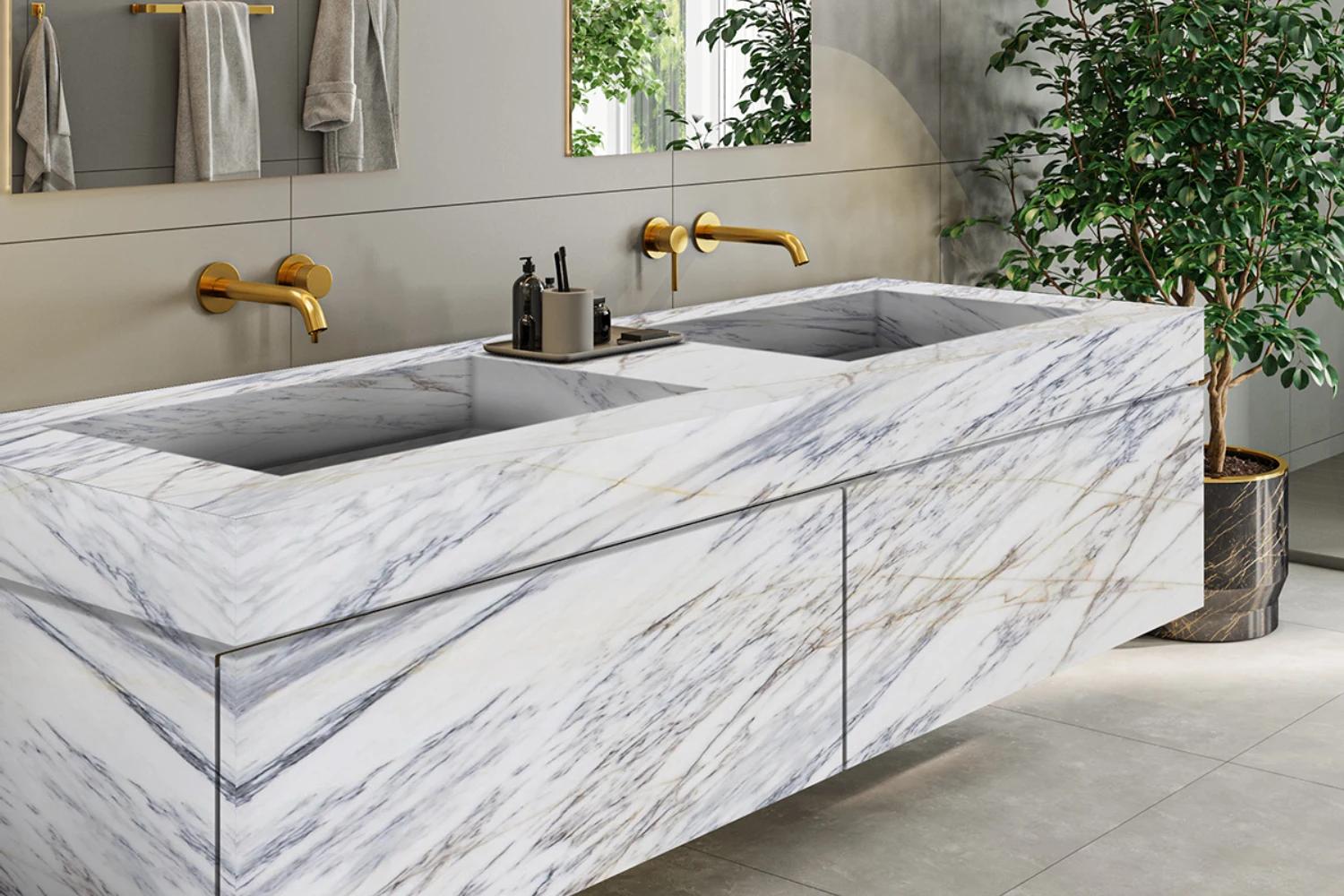
Marble bathroom countertop: style and creativity in interior architecture
When combined with other elements, a marble bathroom countertop can become the focal point of an interior design project, adding a touch of refinement and originality. In this article, we will present the most popular types of marble for bathroom countertops, along with decoration tips to help you make the most of this noble material. Whether you are an architect, designer, or simply an enthusiast of good taste, here you will find inspirations that will enrich your project. Let’s take a look? Types of marble for bathroom countertops Marble is a stone that stands out for its beauty and versatility. Each marble pattern has unique characteristics, capable of creating different atmospheres. Decolores offers a variety of patterns that can adapt to different styles and preferences. Below, take a look at five exceptional marble bathroom countertop patterns available in Decolores' portfolio! Carrara Originating from Italy, Carrara marble is one of the most famous and sought-after marbles in the world. Its predominantly white tone, with soft gray veins, conveys a sense of freshness and brightness. Ideal for bathrooms seeking a classic and clean environment, Carrara is perfect for minimalist-style projects, adding softness to the space without losing elegance. Crema Marfil Crema Marfil is a Spanish marble known for its light beige tone and soft veins, which can range from cream to ivory. Its soft tone is perfect for environments that aim to convey serenity and warmth. When used in bathroom countertops, Crema Marfil marble adds a cozy feeling without sacrificing sophistication. It can be combined with wooden elements or darker marbles to create contrast. Statuario Statuario marble, also from Italy, is famous for its pure white base with delicate gray veins. This marble is considered one of the most luxurious and is widely used in high-end projects. When used in a marble bathroom sink countertop, it pairs perfectly with neoclassical-inspired environments. Calacata Antico With its intense white base and golden and grayish veins, Calacata Antico is a marble that exudes exclusivity. Its origin is also Italian, and its pattern is marked by irregular veins that make each piece unique. Ideal for high-luxury bathrooms, Calacata Antico is perfect for those who want an imposing space and a bathroom countertop full of personality. Nero Marquina For those seeking dark and sophisticated tones, Nero Marquina is the perfect choice. With its black base and intense white veins, this marble is ideal for contemporary and bold design projects. Its dark and striking color harmonizes perfectly with gold or metallic accessories, creating a luxurious look. 5 creative designs and trends for marble bathroom countertops Now that you know the ideal marbles for bathroom countertops, it’s time to explore some creative trends to incorporate them into your project. Check out six design suggestions that will transform your bathroom, making the most of marble’s beauty and functionality! 1. Marble combined with wood The combination of marble and wood is one of the hottest trends in bathroom decor. The softness and warmth of wood balance the coolness of marble, creating a cozier yet elegant environment. Use marble countertops in softer tones, such as Crema Marfil, and pair them with wooden cabinets in natural or dark tones. 2. Combination with gold metals For a luxurious and refined bathroom, combine marble countertops like Calacata Antico with gold or bronze metals. The shine of gold contrasts perfectly with the rich and textured surface of marble, creating an opulent and contemporary look. Opt for gold faucets, handles, and accessories to enhance the effect. 3. Same marble on walls and floors For a fully immersive experience, invest in using marble for both the countertop and the walls and floors. For example, you can create a continuity effect by using the same marble pattern for the countertop and feature wall panels. This creates a sense of fluidity in the space. 4. Contrasting veins If you prefer, you can highlight the marble countertop as the focal point of the bathroom by choosing marbles with striking veins, such as the Italian marble Pietra Toscana. When paired with floors and wall coverings in more neutral or solid tones, such as white or gray, the countertop will become the centerpiece of the space, creating an interesting visual contrast. 5. Exotic-style bathroom with marble If you’re looking for a more exotic and bold style, combine Nero Marquina with other elements in vibrant colors, such as red, creating a cosmopolitan look. The combination of intense tones and raw materials brings a daring vibe to the space. Now that you’ve explored marble options and the main design trends for marble bathroom countertops, it’s time to dive even deeper into the possibilities. Check out the complete marble catalog from Decolores and discover how natural stone can bring sophistication to your project!

Quartzite is what type of rock? Find out more about her
When we ask ourselves what type of rock quartzite is, the answer leads us to a metamorphic rock of extraordinary durability and aesthetics, formed through the transformation of ancient processes involving high pressure and temperature. However, to better understand the qualities and potential of quartzite in decoration, it is essential to know its composition, characteristics, where to use it, and the patterns available in the market. Learn more in the following article! What type of rock is quartzite? Quartzite is a highly resistant and beautiful metamorphic rock, formed by the recrystallization of sandstone, which, over millions of years, undergoes transformations under extreme conditions of pressure and temperature. The result of this process is a very resistant rock with a unique aesthetic, full of veins and textures that make it a standout choice in sophisticated interior design projects. Composition of quartzite Quartzite is a rock composed of more than 75% quartz, a mineral known for its hardness and versatility. Quartzite can range from crystalline and translucent forms to vibrant and exotic colors. Its formation began billions of years ago, with the erosion of older rocks that, when deposited in new locations, formed sandstone. When this sandstone is exposed to significant geological events, it undergoes a metamorphic process that transforms the rock, resulting in quartzite. This process reorganizes the quartz grains, making the rock more resistant, preserving its natural patterns, and creating unique pieces. In this way, a rock with low porosity and high resistance is formed, essential qualities for its application in various environments. Where to use quartzite? Quartzite has a hardness of 7 on the Mohs Scale, meaning it is much harder than rocks like marble and granite. This hardness, conferred by the quartz mineral, makes quartzite highly resistant to scratches, wear, and weather damage. Its resistance, combined with its aesthetic beauty and variety of tones, makes quartzite an excellent choice for various areas of interior design. Check it out! Kitchen and bathroom countertops Quartzite is an excellent option for surfaces such as kitchen and bathroom countertops due to its resistance to scratches and stains, as well as its ease of cleaning. Its durability is crucial in environments that are constantly exposed to heavy use. Floors and wall coverings Quartzite is also widely used in floors and wall coverings, both indoors and outdoors. Its striking aesthetic, with natural patterns and sophisticated colors, complements various decoration styles, from the most classic to the most contemporary. Facades and external coverings Quartzite is also perfect for facades, as it is resistant to weather conditions, maintaining its integrity and beauty over time. Its use in outdoor areas, such as balconies, gardens, and leisure areas, is also common, especially when combined with brushed and rustic (vintage) finishes. Discover the main quartzite patterns Quartzite comes in many patterns, with different colors and textures, and can meet the needs of your project, no matter the style. Decolores, a reference in the natural stone market, offers some of the most exclusive and sophisticated quartzite patterns. Check them out! Quartzite Mont Blanc This pattern is perfect for those seeking a clean and sophisticated look. With soft shades of white and gray, the Mont Blanc quartzite is ideal for countertops, living rooms, and wall coverings that require a touch of timeless elegance. Its classic and refined appearance brings brightness to any environment, creating an atmosphere of sophistication. Quartzite Da Vinci The Da Vinci is a jewel of nature, marked by its unique geological formation and the presence of relictual minerals that acquired exotic colors over time. It stands out for its fuchsite, which has green tones and gives the material a unique look. This quartzite combines elegance and history, carrying the heritage of millions of years, translated into a refined aesthetic, ideal for projects such as gourmet kitchens and living rooms. Quartzite Carmen Black Its dark tone, wrapped in deep nuances, conveys an aura of sophistication and exclusivity. Ideal for both indoor and outdoor coverings, the Carmen Black transforms any space, bringing a sense of luxury. Quartzite Bronzite The Bronzite is a quartzite rich in bronze and red tones, creating a sophisticated and cozy environment. This pattern is perfect for covering large surfaces, such as floors and walls in outdoor areas, and is also an excellent choice for kitchen countertops, adding a touch of class. After learning what type of rock quartzite is, take the opportunity to explore the complete catalog of quartzites from Decolores and discover how to transform your design projects!
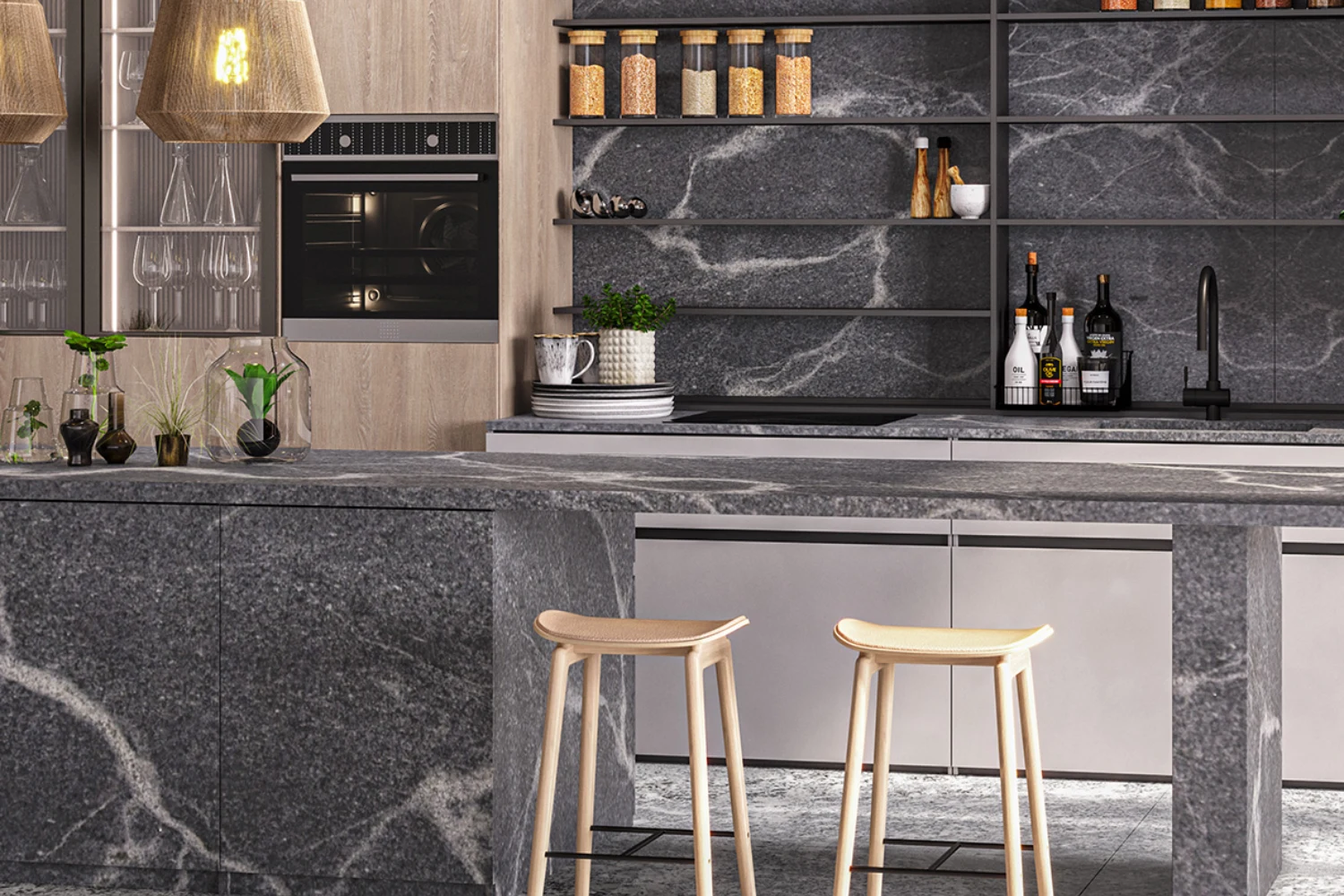
The difference between polished and brushed granite: find out the advantages of each
When it comes to choosing the perfect finish for architecture and decoration projects, many people face the dilemma between polished granite or brushed granite. Both are sophisticated and highly durable options, but each has characteristics that can influence the aesthetic and functional outcome of a space. In this article, discover the differences between these two finishes and their advantages, to help you decide which is the most suitable for your decoration project! What is the difference between brushed and polished granite? The main difference between polished granite and brushed granite lies in the type of finish and the shine of the stone. Polished granite is characterized by a smooth and highly glossy finish. This finish is achieved through an intensive polishing process, resulting in a mirror-like shine that can reflect light impressively. This effect gives the space an air of sophistication and elegance. On the other hand, brushed granite undergoes a gentler abrasion process, using steel brushes that create a more velvety and textured surface. This finish, although less shiny than polished, has a subtle touch and a more natural appearance, which can be ideal for those seeking a more discreet yet still sophisticated style for indoor areas. Brushed or polished granite: which finish should I choose to elevate my projects? The choice between polished granite and brushed granite depends on several factors, such as the style of the space, functionality, and the level of maintenance the material requires. Polished granite is highly recommended for those who want a shiny and luxurious look with a more refined finish. The polished finish is perfect for environments like kitchens and bathrooms, where the shiny surface adds a sense of lightness and cleanliness. Additionally, the smooth surface makes cleaning much easier. On the other hand, brushed granite is ideal for spaces that seek a more natural look with a touch of discreet sophistication. This finish can be used in outdoor areas that require a more anti-slip finish than polished granite, such as floors and countertops in outdoor leisure areas. Advantages of polished granite Polished granite is synonymous with shine and elegance. One of the main advantages of this finish is its striking visual effect. The shiny surface reflects light, which can make the space appear larger and more illuminated. This finish is also highly resistant to liquid absorption, making it an excellent choice for kitchens and bathrooms, where contact with water and liquid substances is common. Its timeless beauty makes it suitable for a variety of decoration styles, from the most classic to the most modern. Advantages of brushed granite Brushed granite has its own advantages in terms of functionality and aesthetics. The smooth texture of the brushed finish provides a more anti-slip surface, making it a superior option for floors and outdoor areas, such as balconies and gardens. This finish is ideal for spaces that require a touch of resistance without sacrificing elegance, of course. Finally, when deciding between polished granite or brushed granite, it is important to rely on suppliers that offer quality and excellence in service. Decolores has over 20 years of experience in the natural stone market and stands out for its variety of high-quality granites and versatility of finishes, ranging from polished to brushed or honed. Among the patterns available in Decolores' catalog, White Dune Granite and Silver Grey Granite stand out for their sophistication and elegance. The White Dune Granite features a soft white tone with light gray veins, ideal for those seeking a clean and luminous finish, perfect for refined indoor spaces like kitchens and living rooms. The Silver Grey Granite is characterized by its neutral tones in a gray with silver nuances and prominent veins. Ideal for spaces with a touch of modernity in contemporary projects. Both patterns offer resistance and versatility, being perfect for both polished and brushed finishes, depending on your aesthetic choice and goals. Explore our complete catalog and transform your projects with the best in granite!
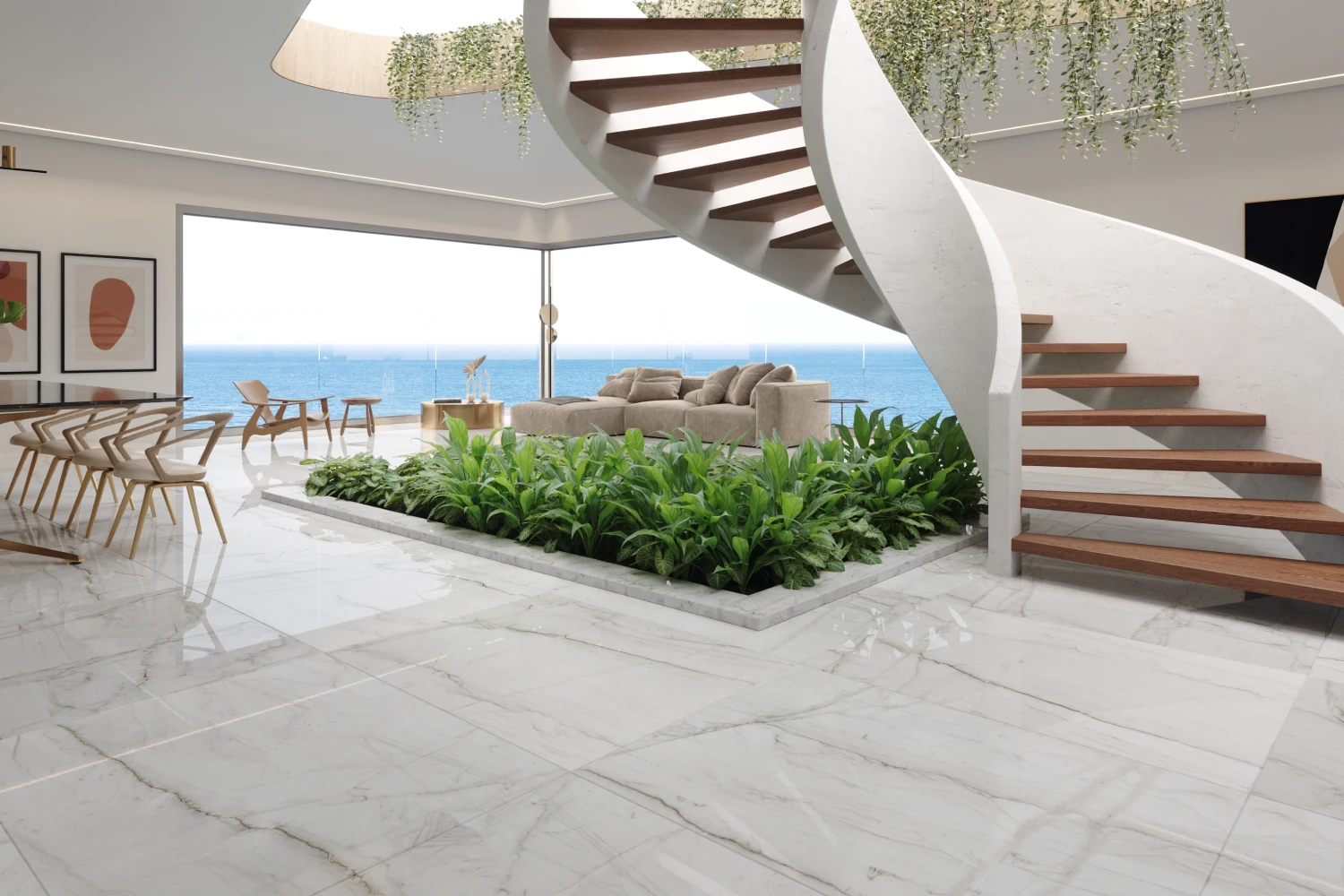
Contemporary design: natural rocks for innovative environments
Contemporary design stands out for its minimalist and functional approach, where the choice of materials is essential to create an environment that is both elegant and practical. Among the elements that stand out the most in this style, natural stones play a fundamental role, providing sophistication, durability, and a touch of nature to the space. Below, discover some of the most commonly used stones in this type of design and how you can combine them to create contemporary projects. Follow along! What is contemporary design? Contemporary design is an aesthetic approach that reflects the present, focusing on simplicity, functionality, and innovation. Unlike traditional design, which is characterized by ornamentation and intricate details, contemporary design seeks clean lines and minimalist forms, creating a sense of lightness. It moves away from conventions and explores new materials and ideas, delivering a cutting-edge aesthetic. Contemporary design is also marked by simplicity. Furniture and spaces in this style often incorporate glass and metal, combined with smooth and shiny finishes, reflecting the pursuit of minimalism. However, this simplicity does not mean a lack of luxury; on the contrary, it represents a new kind of sophistication, where each element is carefully chosen to convey elegance and harmony. Though simple, contemporary design is an expression of refined luxury, valuing the quality of materials and attention to detail. Its focus is on high-quality furniture, built with modern techniques and durable materials, designed to create airy and functional spaces. Each piece is thoughtfully crafted to balance form and function harmoniously, bringing practicality and style. By choosing a contemporary design environment, you opt for a style that celebrates innovation and practicality, ideal for the pace of modern life. The power of minimalism: characteristics of contemporary design Contemporary design is characterized by the pursuit of simplicity and a connection with the environment in a natural and sustainable way. Each element, with its simplicity and precision, reflects a refined and modern aesthetic. The main features of this decor style are: natural materials such as marble, quartzite, bamboo, and wood, which bring a touch of sophistication and respect for nature; lush landscaping, creating natural spaces that convey a sense of freshness and harmony; natural light with large windows, which allow the space to be flooded with light, making environments more spacious and pleasant; colors dominated by neutral tones, such as gray, brown, and pastels, as well as white, which adds lightness and clarity to the space; furniture with bold and functional designs, combining materials like wood, glass, and steel; use of mirrors to expand the perception of spaces, creating a sense of greater room and brightness. Marble in contemporary design Marble is a natural stone that fits perfectly into contemporary design, offering beauty and a unique texture. Some of the most beloved patterns for composing contemporary spaces are Carrara marble and Sahara Black, available in the Decolores catalog. The Carrara is known for its subtle gray veins, creating a luminous surface, ideal for tabletops or bathroom countertops. On the other hand, the Sahara Black, with its dark tone and golden veins, is perfect for adding a touch of sophistication to spaces like living rooms and dining areas. Both marbles bring the blend of softness and luxury that defines contemporary design. Other natural stones ideal for creating contemporary spaces In addition to marble, other natural stones can also be used to create stunning contemporary environments. Decolores offers a selection of stones that meet the demanding standards of clients and designers, such as travertines and quartzites, which are perfect for those looking to add a touch of sophistication to interior design. Travertines Originating from Italy, travertines are ideal for floors, walls, and bathroom coverings, providing a sense of elegance without losing the simplicity of contemporary design. A great example of travertine is the Alabastrino pattern, which has a light tone with shades ranging from beige to cream, perfect for creating a serene environment paired with materials like wood. Quartzites Quartzites are metamorphic rocks composed of 75% quartz and offer a surface ideal for spaces that require sophistication and durability. Contemporary design loves quartzite patterns, such as Leblon, with its bluish-green tones, Mont Blanc, with its traditional white and subtle veins, Naica, with its poetic beige veins, and Fusion Black, famous for its luxurious black. These stones are perfect for creating focal points, such as panels and coffee tables. In summary, contemporary design is, above all, a celebration of the purity of forms and the natural beauty of materials. Natural stones, such as marble, travertine, and quartzite, are essential elements in this style, bringing complementary tones. Now that you know the main natural stones for composing a contemporary design project, don’t forget to check out our complete selection of Decolores products. Discover the power of natural stones in your contemporary projects!
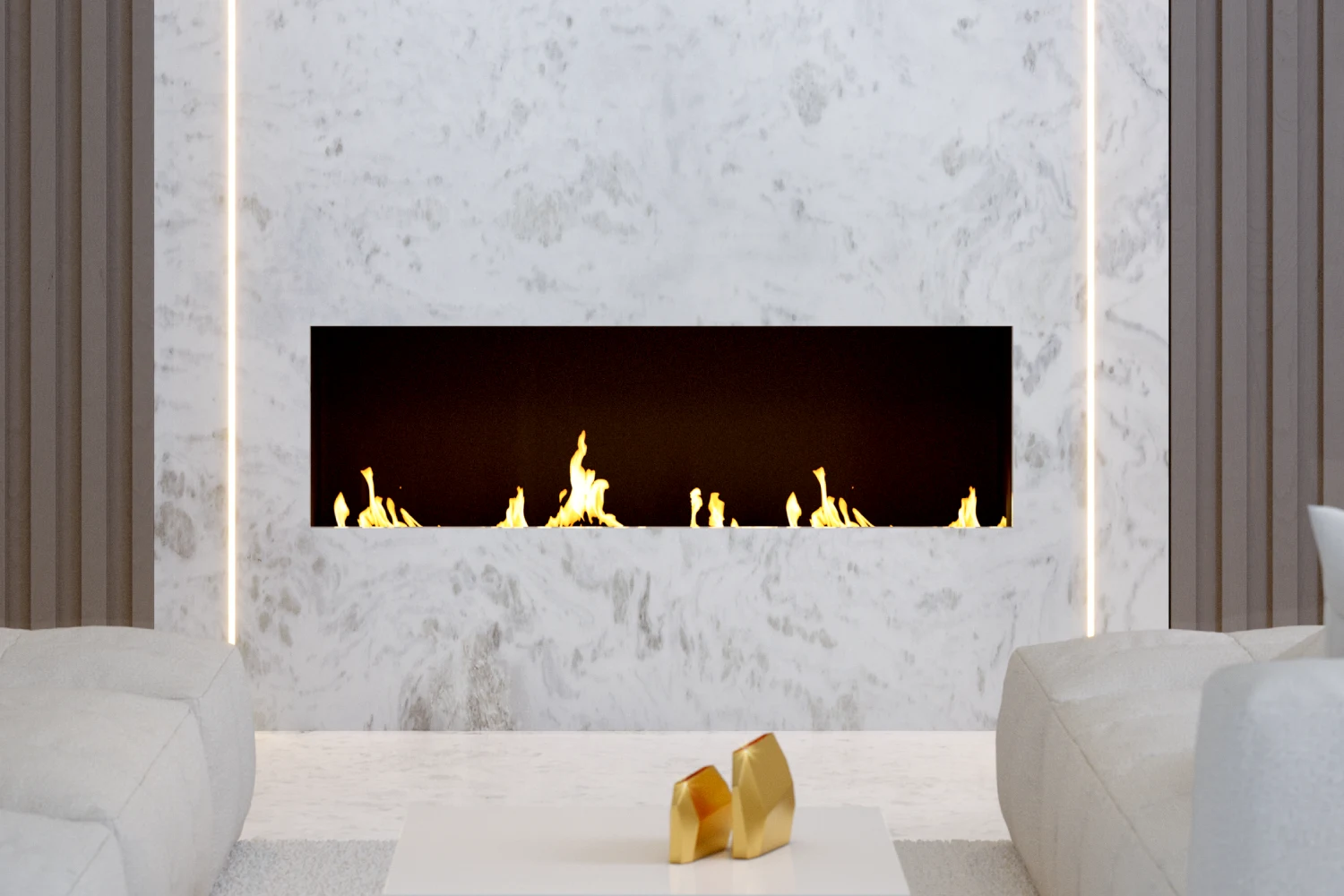
White marbles: patterns, origins and applications
White marble is synonymous with sophistication and timelessness; both in architecture and interior design. Its different shades, striking veins and unique texture make this stone a versatile choice for coverings, floors, countertops and decorative pieces of great taste. In this article, we will explain the most well-known types, their origins, applications and how to preserve their beauty over time. Advance to the next topics! White marble patterns In general, white marbles are widely appreciated for their purity and elegance. Below, learn about some patterns! Carrara Marble Originating from the Carrara region of Italy, it is the most famous among white marbles. It has a light background with fine and delicate grayish veins. Ideal for floors, walls and countertops. For this reason, Carrara marble is widely used in projects that seek a classic aesthetic, but it is also adapted to contemporary spaces due to its versatility. Furthermore, it is one of the most affordable options among Italian marbles, which makes it popular in many projects. Calacatta Marble Also Italian, Calacatta marble is known for its thicker, more dramatic veins, in shades ranging from gray to gold. It is often used in high-end projects, due to its rarity and visual impact. Unlike Carrara, Calacatta has less uniformity in patterns, making each piece unique. This characteristic is highly valued in custom designs, such as tables, countertops and exclusive coverings in bathrooms and kitchens. Statoario Marble Statoario marble, also extracted from Italy, stands out for its superior whiteness and well-defined veins. Widely used in sculptures and luxury projects, it is a noble option for prominent areas. In addition to its sophisticated appearance, Statuario is recognized for its durability. It is especially sought after for projects in which the combination of beauty and resistance is essential, such as floors and high-traffic areas. Main regions producing white marble The geological characteristics of each region influence the tone, veins and hardness of the stone, offering options that meet different styles and needs. The main marble-producing regions include: Italy: recognized worldwide for producing Carrara, Calacatta and Statuario marbles; Turkey: with vast reserves, it is responsible for high-quality white marbles that are competitive on the international market; Greece: home to the famous Paros marble — known since ancient times. Applications of white marble Whether in residential or commercial projects, white marble adapts to both classic and contemporary styles, ensuring an aesthetic that is always refined and timeless. See some of its applications. Interior coverings Perfect for walls, floors and countertops, white marble brings spaciousness and sophistication to environments. It reflects light efficiently, creating visually larger and brighter spaces. In addition, its durability and elegance make it ideal for areas that require functionality and aesthetics, such as living rooms and reception areas. Decorative pieces Used in tables, sculptures and decorative objects, white marble is a material that adds refinement to any space. Each decorative piece made of marble is unique, thanks to its natural veins and textures, adding exclusivity to environments such as dining rooms, offices or entrance halls. Bathrooms and Kitchens White marble offers a clean, luxurious look, especially in countertops, sinks and wall coverings. Its resistance to moisture makes it ideal for bathrooms, while its sophisticated appearance adds charm and modernity to kitchens. It is a practical and timeless choice for those who want to combine beauty and functionality. In short, white marble is a choice that combines elegance, functionality and durability. To explore the best options and count on high-quality materials, contact Decolores. Discover how to transform your spaces with sophistication!

Dolomite marble: everything you need to know
Dolomitic marble is a rock that combines natural elegance and high durability, making it a sophisticated choice for architectural and interior design projects. Today, you will understand everything about dolomitic marble, its applications, and the exclusive patterns that Decolores offers to transform your spaces. Check it out! What is dolomitic marble? Dolomitic marble is a natural rock composed mainly of dolomite, a mineral that gives the stone greater resistance. Dolomitic marble was formed millions of years ago in tropical seas that gave rise to carbonate sedimentary rocks, which, under intense pressure and high temperatures, transformed into marble through metamorphism. Its geological formation resulted in a fine-grained stone with elegant veins and a color palette that varies from pinkish and golden tones to grayish or almost black variations. What is dolomitic marble used for? Discover its various applications The versatility and durability of dolomitic marble are among its greatest highlights. Whether in indoor or outdoor environments, it can be used to create spaces that combine luxury and practicality. See examples of where this marble stands out! Floor and wall coverings Dolomitic marble is an excellent choice for covering floors and interior walls, especially in areas that demand timeless elegance, such as living rooms. Its natural resistance ensures durability and classic beauty. Countertops and table tops In kitchens and bathrooms, dolomitic marble offers a robust and visually stunning surface. Its ability to withstand high temperatures makes it a functional choice. Panels and custom furniture Beyond large surfaces, dolomitic marble can also be explored in decorative pieces such as panels or custom furniture. Its refined finish and veins create focal points in any space. Main dolomitic marble patterns from Decolores At Decolores, you will find the most sophisticated dolomitic marble patterns, all selected to meet the most demanding architectural projects. Whether for cladding, countertops, or vanities, this natural stone is the perfect choice to elevate the design of any space. Discover three highlights from Decolores' catalog! Michelangelo About a billion years ago, the extinct Capiru Sea in Paraná housed coral reefs and algae, whose calcium carbonates over time formed limestone rocks. With the collision of tectonic plates, these limestones transformed into the sophisticated Michelangelo marble. Known for its lightness and elegance, this marble is highly valued in ornamental pieces, symbolizing beauty and resistance. With its high durability and versatile finishes, Michelangelo marble is ideal for high-end projects. Matarazzo With a striking aesthetic, Matarazzo dolomitic marble combines light tones with well-defined gray veins, creating a timeless and impressive visual. This pattern is a perfect choice for projects that require visual impact, such as fireplaces, kitchen islands, and accent walls. Aurora Gold For those looking for marble with warm and vibrant tones, Aurora Gold is an excellent choice. Its golden veins and soft cream tones add a luxurious touch to any space. Choosing dolomitic marble for your project means opting for a material that combines natural beauty, high resistance, and versatility. Explore Decolores' exclusive patterns and create more sophisticated projects!
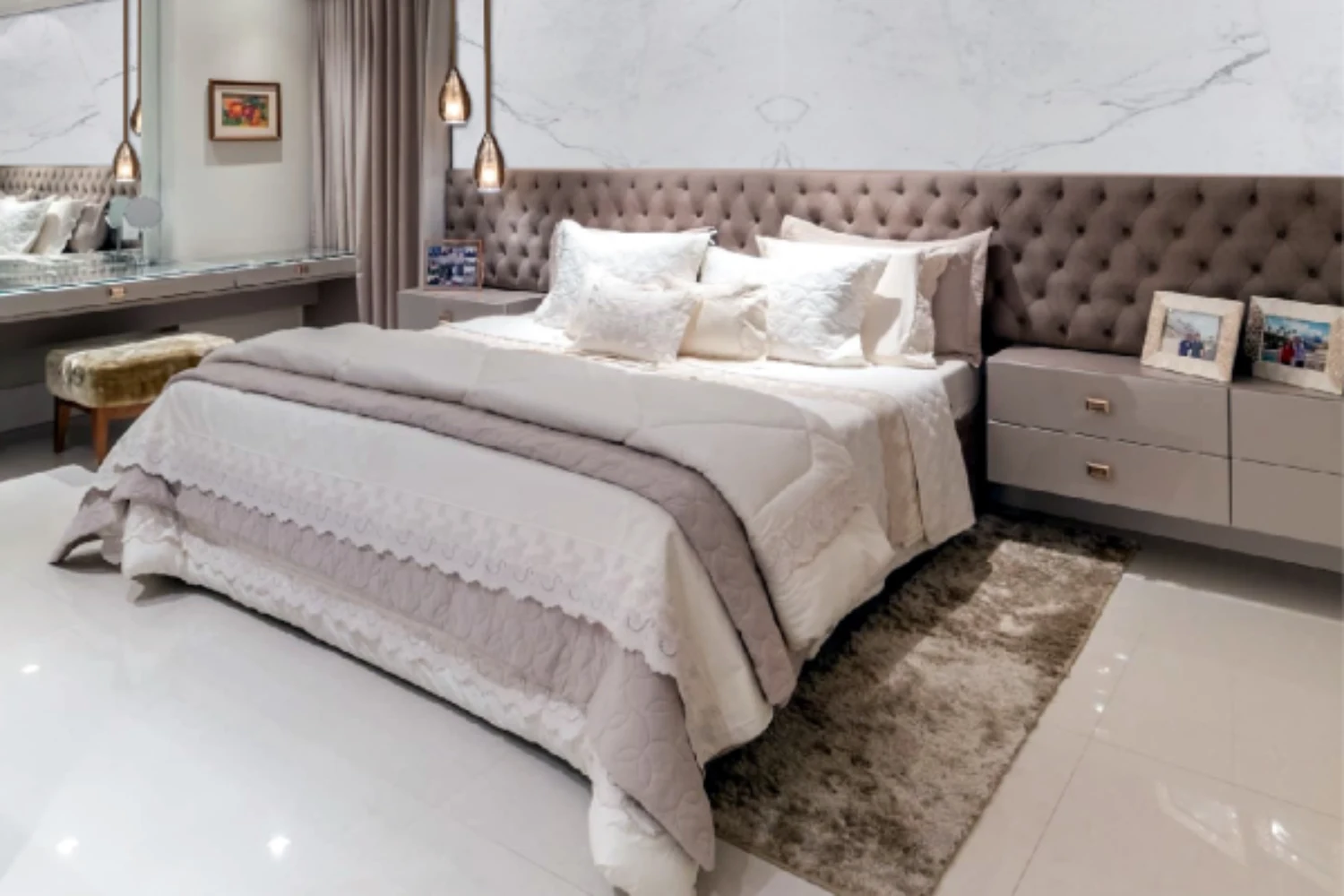
Discover creative marble decorations
Marble decoration is synonymous with timeless elegance, being a material that, in addition to its unquestionable beauty, brings sophistication to different types of environments. Whether in residential or commercial projects, marble stands out for its durability, versatility and unique aesthetics. Today you will find the best ways to use marble in decoration, Decolores marble patterns and how it can transform spaces into places of refinement and charm. What is marble in decoration? Marble is a natural rock used in interior design due to its beauty and resistance. Known for its distinct veins and tones that range from pure white to deep black, marble is ideal for those seeking refined decoration. Its metamorphic origin, which occurs under high pressures and temperatures inside the Earth, gives the stone its unique appearance, where each piece of marble has an exclusive pattern of veins and tones. In marble decoration, this material is used in a variety of ways, from coverings and floors to furniture, always adding a luxurious touch to environments. In addition to its aesthetic function, marble is highly durable, which makes it an excellent choice for projects seeking longevity and resistance to wear. Discover 6 suggestions for marble decoration Below, check out 6 creative ways to use marble in decoration with the patterns of Decolores. Each of the suggestions can be adapted to different styles of decoration, from classical architecture to contemporary style. 1. Marble on the living room wall Whether on an entire wall or in a strategic panel, marble transforms the environment, creating a luxurious focal point. For a more sophisticated effect, options such as Calacatta marble, of Italian origin with a white background and gray veins, or Nero Marquina, with its deep black and contrasting white veins, is ideal for creating an elegant contrast that draws the eye. This type of cladding can be combined with modern furniture and soft lighting, creating a cozy and high-end atmosphere. 2. Marble fireplaces In environments such as living rooms, the marble fireplace is a classic of luxury decoration. Marble gives the fireplace a chic and cozy look at the same time. To create a sophisticated space, Sahara Black marble from Morocco is a great option, with its dark tone and discreet veins. A marble fireplace adds a touch of refinement to the environment and is also a comfortable piece for cold days. 3. Kitchen Countertops and Islands Marble décor is a traditional choice for gourmet kitchen countertops and islands, bringing a touch of class and functionality to the space. Marble offers a durable and easy-to-maintain surface. In addition, the aesthetics of marble can transform the kitchen into an elegant living space. Options like Van Gogh marble are perfect for creating marble countertops with heavenly yellow and white tones. 4. Bathrooms with marble coverings In bathrooms, marble is a choice that makes the environment more luxurious. Covering the walls and floors with marble transforms the bathroom into a true spa. For a clean and classic look, Mármore Statuario is great, with its light and neutral veins, which provide a touch of luminosity to the environment. 5. Marble Tables Whether it's a dining table, a coffee table or a side table, marble transforms furniture into a true work of art. The marble Calacata Paonazzo is widely used for marble tables, giving a modern aesthetic. Marble tables can be combined with chairs and other minimalist design furniture to create a refined environment. 6. Indoor floors Marble can be used for floors in living rooms, hallways, entrance halls and even indoor stairs. The resistance of marble, combined with its luxurious appearance, creates a perfect floor for those seeking durability and elegance. Marbles such as Crema Marfil and Aurora Gold are a great option for flooring, reflecting light and expanding the space, while the natural texture of the stone offers a unique look to the environment. Marble decoration is an impeccable choice for those seeking sophistication, durability and timeless style. With its diverse applications, marble adapts to different design styles and transforms any environment into a luxurious space. For those who want to explore more options and choose the ideal stone for their project, check out the complete line of marbles from Decolores, including our dolomitic marbles.
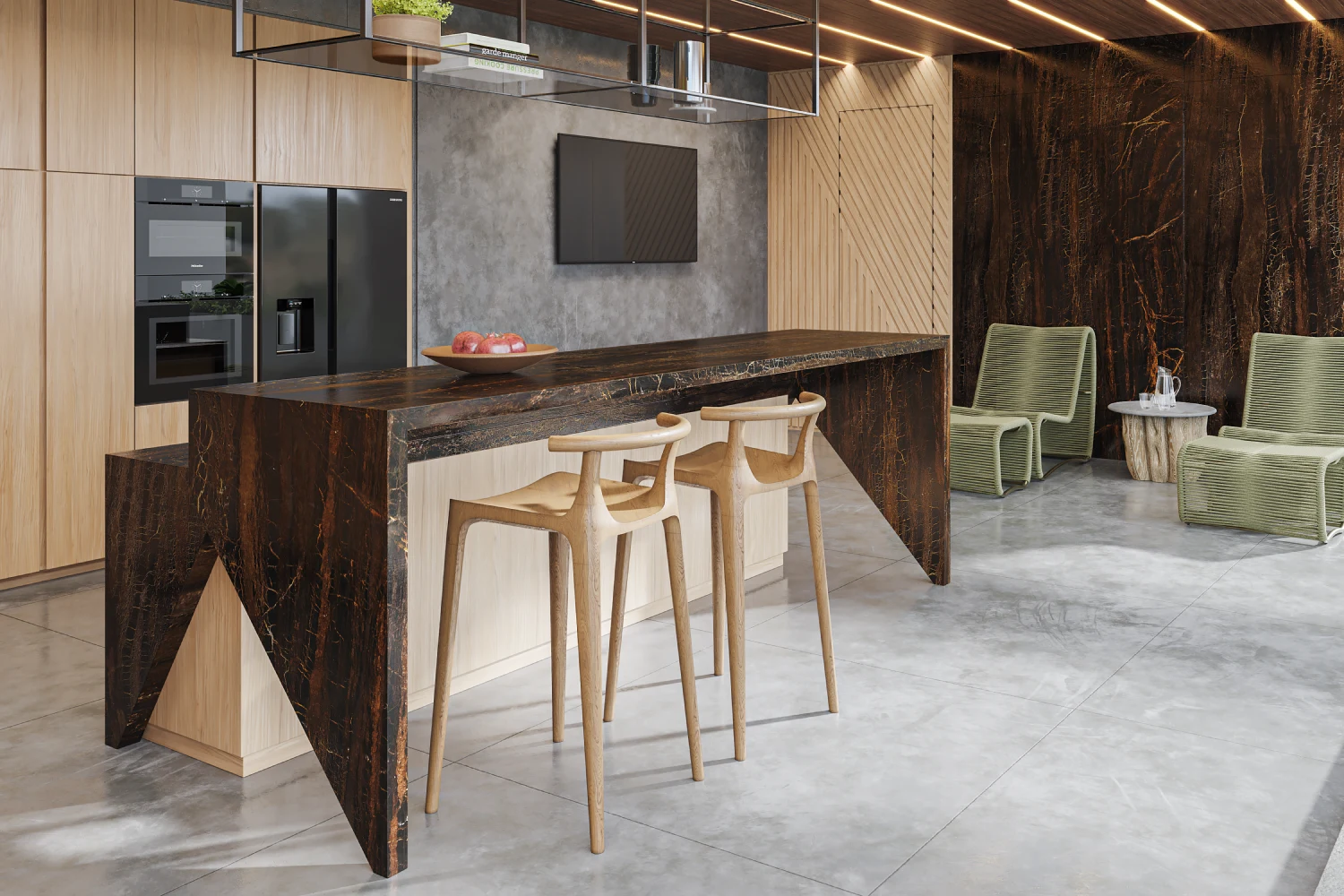
Bronzite quartzite x Mocha Mousse color: trends for 2025
In 2025, Bronzite quartzite and the Mocha Mousse color emerge as protagonists in architecture and design projects, standing out for their sophisticated aesthetics and warm tones that evoke luxury and modernity. Bronzite offers a unique combination of metallic veins and high durability, making it an ideal choice for various environments. In this article, discover how these trends can transform your projects in the coming year. Quartzite Trends in Interior Decoration for 2025 Among the decoration trends for 2025, two patterns stand out: Bronzite quartzite and the Mocha Mousse color. Both are excellent choices for creating sophisticated and immersive atmospheres. For architects who always seek to stay ahead in material choices, understanding these nuances is essential to design spaces that tell stories through their refined aesthetics. In particular, quartzite, with its unique texture and striking colors, has been gaining space in residential and commercial projects. With a palette of tones ranging from classic to contemporary, quartzite offers versatility and timeless style for the most demanding projects. Below, explore the main trends for 2025! Mocha Mousse Color The Mocha Mousse color, chosen by the Pantone Color Institute as the Color of the Year for 2025, reflects a global search for comfort and sophistication. This warm and rich brown tone, inspired by cocoa, chocolate, and coffee, conveys a sense of coziness and tranquility, aligning with the collective desire for spaces that promote well-being. In luxury decoration, Mocha Mousse has stood out for finishes in noble materials such as dark wood, marble, and satin metals, creating sophisticated and intimate environments. Its use on walls, furniture, and accessories, combined with luxurious textures like velvet and leather, results in spaces that evoke discreet elegance and comfort. Bronzite Quartzite The Bronzite quartzite, however, manages to stand out even more. Its deep and pronounced tone, transitioning between bronze and copper, offers a texture reminiscent of the perfection of gemstones. In summary, Bronzite was formed approximately 2.8 billion years ago, resulting from geological reactions involving iron and silica, which created its characteristic layers. Its iron-rich composition, which gives it its reddish color, ensures high hardness, making it a durable and impressive material, primarily found in Bahia. Thus, the beauty of Bronzite quartzite, with its golden veins and metallic nuances, generates a sophisticated impact, perfect for those seeking a striking and contemporary aesthetic. Its intense and vibrant color, when combined with lighter materials, creates a harmonious contrast, ideal for balancing modernity and elegance. Where to Use Bronzite Quartzite in Decoration Projects? Bronzite quartzite is perfect for areas where elegance and resistance are fundamental requirements. In kitchen projects, it is ideal for countertops and table tops, where the unique beauty of its veins can be admired. In bathrooms, quartzite creates a luxury spa atmosphere, transforming intimate spaces into sophisticated places. Indoor floors and living room walls are also privileged environments for the use of this material, conferring grandeur as soon as visitors arrive. Its durability is such that this quartzite can also be used for external cladding of fireplaces. What Are the Advantages of Quartzite? Quartzite is a natural rock with practical and aesthetic advantages for your architecture projects. Durability and impermeability are its main qualities. It is resistant to wear, heat, and moisture, making it an excellent choice even for some outdoor environments, such as facades. From an aesthetic point of view, quartzite has a unique visual depth with its veins. Its natural shine and texture provide a touch of luxury, while its versatility allows it to be combined with different interior styles, from classic to contemporary architecture. Find Bronzite Quartzite at Decolores At Decolores, a reference in natural stones for over 20 years, you will find high-quality quartzites, such as Bronzite, perfect for sophisticated projects. With advanced processing methods, including diamond looms, automatic resins, and high-precision polishers, each piece at Decolores receives an impeccable finish. Bronzite quartzite, a highlight in our portfolio, impresses with its warm tones and metallic nuances, available in polished, brushed, and flamed finishes, to meet the needs of each project. Transform your ideas into elegant realities with Bronzite quartzite!
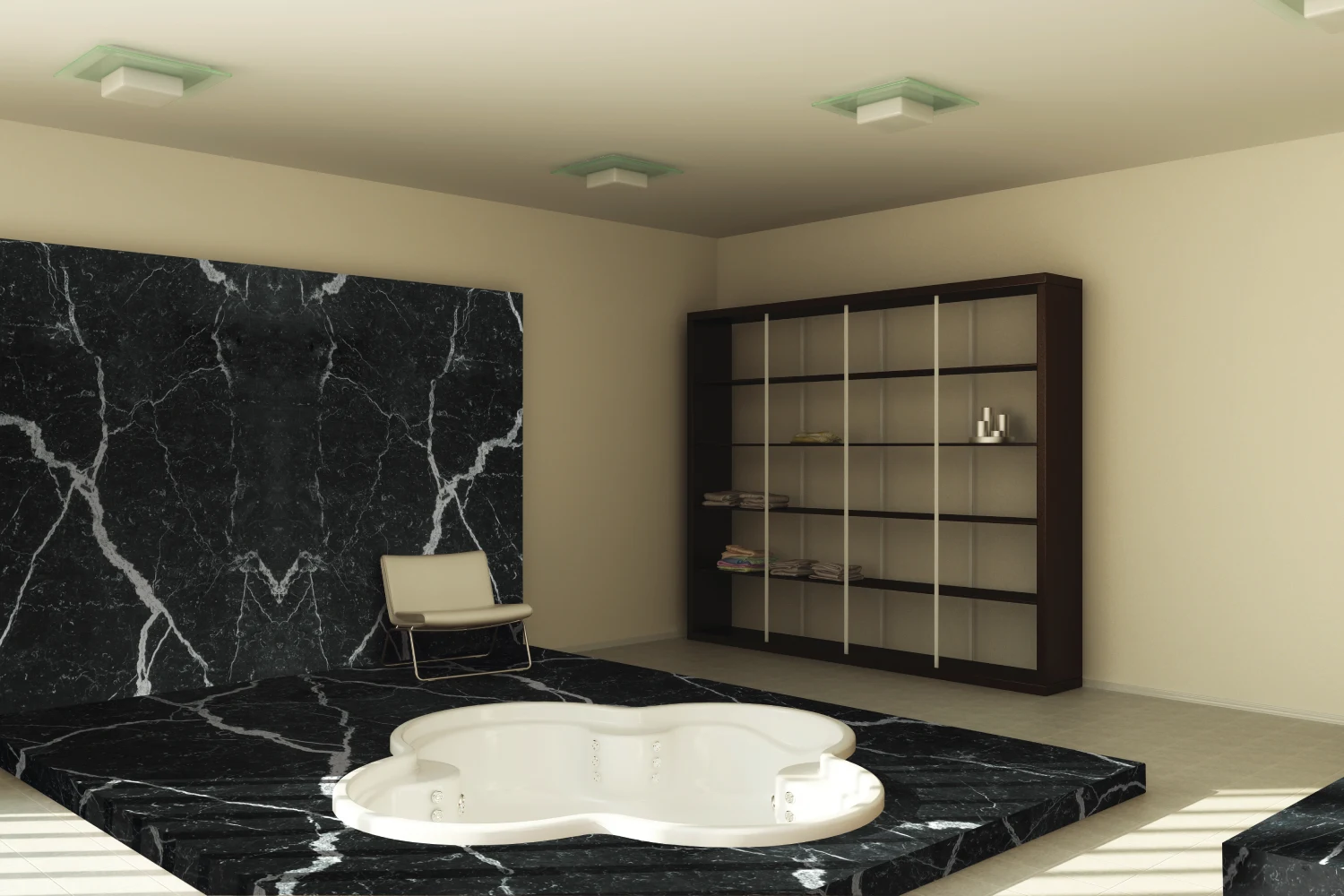
Marble or granite: discover the difference between them
When it comes to high-quality cladding for architectural projects, the choice between marble or granite is quite common. These two natural materials carry beauty, durability and a unique geological history, but they have characteristics that must be considered. In this post, understand what differentiates these rocks, how they can create modern and sophisticated projects and understand when to choose between granite and marble. What is granite? Granite is an igneous rock that was formed through the cooling of magma inside the Earth. This process creates a composition rich in minerals such as quartz, feldspar and mica, which give granite its durability and grainy characteristics. Recognized for its resistance to scratches, heat and impacts, granite is widely used in high-traffic areas and places that require durable surfaces. Its versatility makes it ideal for countertops, floors and even external wall coverings, being a classic and functional choice for any project. At Decolores, you will find shades of granite for those looking for a timeless aesthetic, with colors such as absolute black, white and shades of gray, such as the patterns: Granito Makalu; Granito White Dune; Silver Grey. What is marble? Marble is a metamorphic rock formed from the transformation of limestone subjected to high temperatures and pressures. This process creates smooth surfaces and unique veins that give marble its elegant and luxurious appearance. Although it is less resistant than granite to scratches and stains, marble stands out for its sophisticated aesthetics. Its soft tones and graceful patterns make it perfect for areas such as bathrooms, bedrooms and living rooms. At Decolores you will find an impressive collection of marbles that range from timeless classics to exclusive pieces with striking veins. For example, marble Carrara and Calacatta are popular choices, with light backgrounds and soft veins that exude refinement in all their applications. Marble options such as Rosso Levanto, with an intense red background, or Pietra Toscana, with Italian tones that evoke the sophistication of Tuscany, provide a unique impact. What is the difference between marble and granite? Although both are natural rocks, marble and granite have fundamental differences. See which are the main ones: Composition — granite is an igneous rock composed of crystallized minerals, while marble is a metamorphic rock derived from limestone. Resistance and porosity — granite is more resistant to scratches, stains and heat, as it is harder and absorbs less liquids, so it is ideal for areas of intense use. Marble can be more porous, meaning it can absorb more liquids, and requires more care, but nothing that prevents its use in different types of environments, as long as some care is taken for preservation. Appearance— marble offers fluid veins and a sophisticated aesthetic, while granite has a more grainy and rustic texture. Marble or granite: which one to choose in architectural projects? The choice between marble or granite depends on the style, functionality and environment in question. For areas of heavy use, granite is undoubtedly the most practical choice, ideal for kitchen countertops, outdoor flooring and barbecue grills. But to create more sophistication, marble stands out in toilet bathrooms, decorative panels in bedrooms and living rooms or for coffee tables, where its elegance can shine without excessive wear. However, the ideal is a harmonious combination, because in sophisticated projects, it is possible to use both. For example, try granite for countertops and marble for decorative details, creating a perfect visual balance. Decolores, a reference in natural stones for over 20 years, offers an impressive selection of marbles and granites to transform any project into an expression of elegance and durability. Whether it's marble or granite, we have a variety of options that combine beauty and functionality, so that your next project has a level of sophistication that only natural rocks can offer. Access our catalog and discover new patterns!
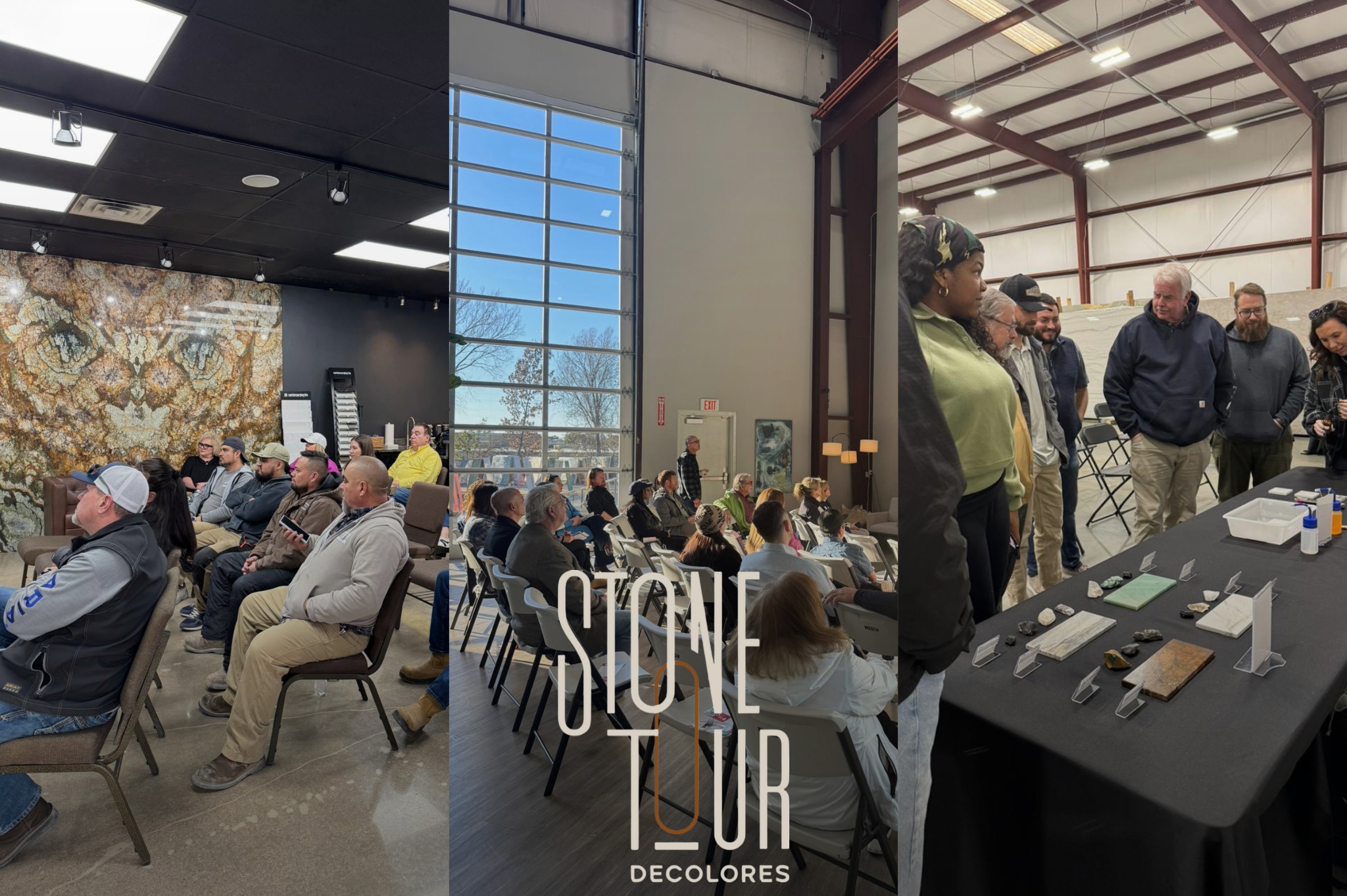
Stone Tour Decolores
Our first lecture series of the year on the American market was a real success! Now this experience has an official name: STONE TOUR DECOLORES. With the aim of bringing knowledge and a deeper understanding of natural stone, our sales team, together with the Research and Development (R&D) team, traveled around the United States holding exclusive meetings with some of the industry's leading professionals. We visited major market references such as Verona Marble, Texas Counter Fitters and Encore Stone Studio, where we had the opportunity to share our knowledge of quartzite, one of the noblest and most fascinating natural stones. Attended by marble fabricators and specifiers, each event was an immersion in the stone universe, bringing an exchange of experiences, valuable insights and a more refined look at the beauty and versatility of quartzite. Check it out:
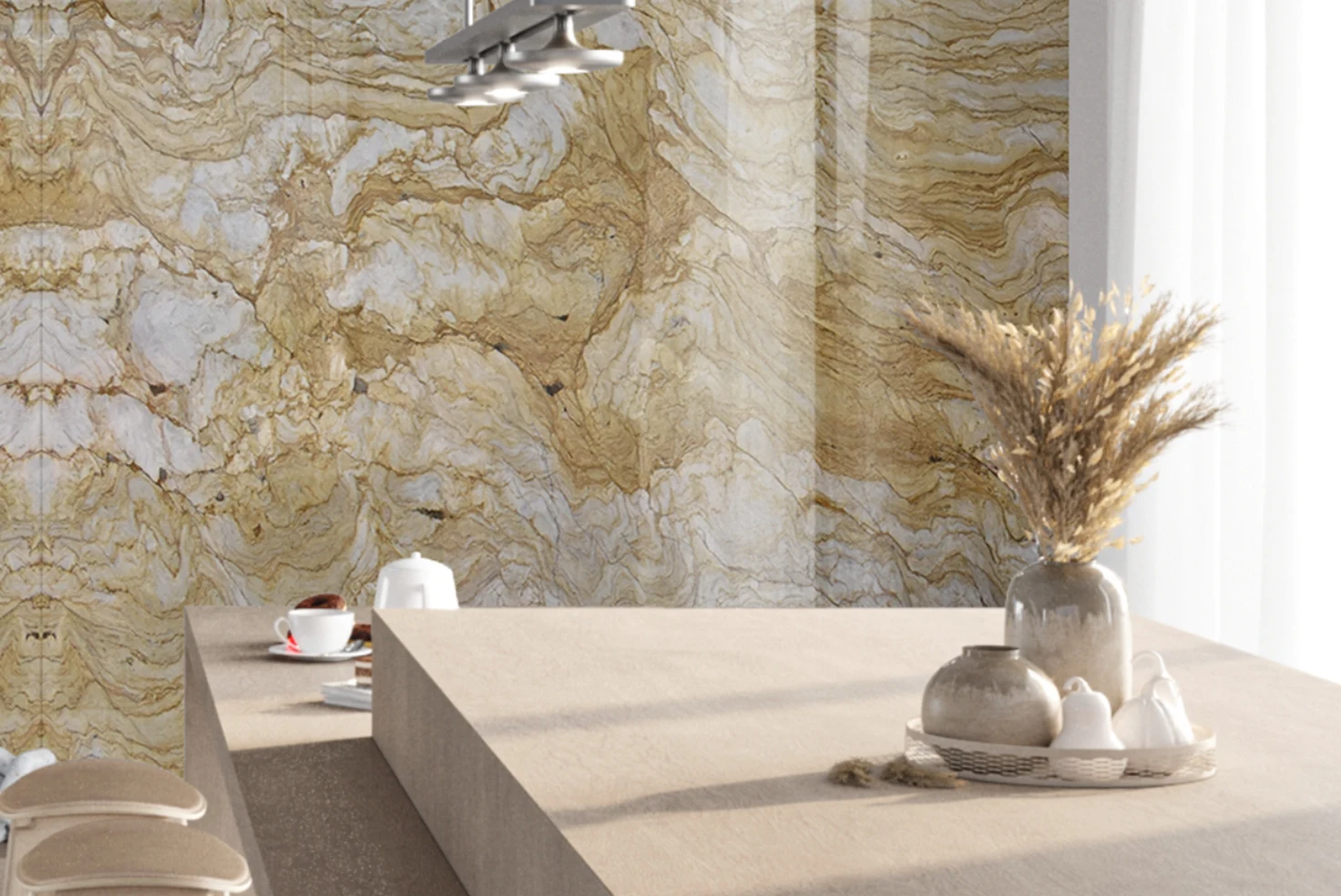
Find out what Brazilian marbles are and their advantages
Brazilian marble, with its unique beauty and diversity, stands out on the global stage as one of the most sought-after materials for architecture and interior design projects. Renowned for its quality, durability, and wide range of tones, this natural resource reflects Brazil's mineralogical potential, home to some of the most important marble quarries in the world. Below, discover more about the preciousness of Brazilian marble and its main highlights at Decolores! Why value Brazilian marble? Discover its advantages Brazilian marble is not just a high-quality raw material; it is also a product that significantly contributes to the national economy. According to the Terra portal, the United States alone accounts for about 62.4% of Brazil's marble and granite exports. This highlights the international market's confidence in the robustness and sophistication of Brazilian ornamental stones. In summary, the main advantages of Brazilian marble are: Chromatic variety — Brazilian quarries offer a wide palette of tones and patterns, ranging from neutral and classic shades to vibrant options; Sustainability — extractions in Brazil must follow sustainable practices, respecting environmental norms and promoting the reuse of waste. Thus, by choosing Brazilian marble, you invest in quality and beauty while contributing to the strengthening of the national industry and the recognition of Brazilian marble quarries in the global market. The international market increasingly seeks Brazilian marble Brazil is one of the largest exporters of ornamental stones in the world, with its products present in prestigious international projects in countries such as Mexico, Italy, and the United States. The growing demand for Brazilian marble reflects its originality and the ability of Brazilian companies, such as Decolores, to meet global quality standards. Foreign architects and designers recognize the potential of Brazilian marble to transform spaces and add exclusivity. Its application goes beyond the conventional, being incorporated into projects ranging from countertops and floors to wall coverings. What are the Brazilian marbles? Among the various types of Brazilian dolomitic marbles, some stand out for their unparalleled beauty and exceptional properties. Discover some of these mineral gems available at Decolores! Aurora Gold The Aurora Gold marble is the new standard of the Poetry Collection by Decolores, drawing attention for its warm tones with golden veins that bring elegance and sophistication to any environment. Its unique texture is ideal for projects that seek to combine refinement and coziness, and it can be paired with wood, concrete, and metals. Telesto The Telesto marble, also from the Poetry Collection, is characterized by soft gray tones and subtle white veins. Therefore, it is perfect for spaces that prioritize harmony and lightness. Its resistance and impeccable finish make it a versatile and sophisticated option. Michelangelo Despite its name being inspired by the great Renaissance master, the Michelangelo marble was formed 700 million years ago in the extinct Capiru Sea in Paraná. It features refined patterns and classic tones, making it ideal for projects that evoke timelessness in their essence. Matarazzo Another Brazilian marble is the Matarazzo, known for its white tone with gray and slightly golden veins. It is a stone from southern Brazil widely used in minimalist and contemporary projects, enhancing the luminosity and purity of spaces. If you seek quality and sophistication, Decolores offers an exceptional selection of Brazilian marbles. Investing in these stones means valuing the best of Brazil, promoting local culture, and encouraging the sustainable development of the mining industry. For architects and interior designers, incorporating Brazilian marble into their projects is a way to add aesthetic and functional value while standing out in the market with authentic materials. Discover the endless possibilities of transformation with Brazilian marble and inspire the richness of Brazilian quarries in your projects! Use our room simulator and test our marble catalog in various living rooms, kitchens, and more.

Natural Stones: Environmental Commitment in the Industry
Synonyms of sustainability, natural stones make all the difference in projects today. As fundamental as creating projects that truly facilitate people's daily lives is being attentive to issues involving environmental preservation. In this sense, the use of natural stones that are responsibly extracted by the industry plays a key role in unique works that contribute to sustainability. Throughout this content, you will learn the definition of natural stone, the advantages of natural stone, and why this type of cladding is a market favorite when it comes to reducing environmental impacts. Check it out! What are natural stones? Natural stones are geological materials formed over thousands or even millions of years through natural processes such as magma cooling, sediment compression, or recrystallization of other rocks. They are extracted directly from nature and used in various fields, such as construction and decoration. During their formation, natural stones can acquire various textures and tones that make each one valuable for different uses. According to the Brazilian Association of Technical Standards (ABNT), natural stones are natural stone materials used for internal and external cladding, such as architecture, decoration, furniture, or funerary art. How do stones form in nature? In summary, natural stones are formed through geological processes that involve the transformation of mineral materials. Additionally, they can be extracted and used without industrial processes that harm the environment. The formation of stones can occur in different ways, depending on temperature, pressure, and composition conditions. Thus, we can divide the formation of stones into three main types: magmatism, sedimentation, and metamorphism. Magmatism Igneous rocks are formed from the cooling and solidification of magma or volcanic lava. When magma rises to the Earth's surface, it cools and transforms into solid rock. If this process occurs slowly, within the Earth, the resulting rock tends to have large crystals, such as granite. Sedimentation These rocks are formed by the compression and cementation of sediments, i.e., broken rock fragments, minerals, and even plant and animal remains. These sediments accumulate in layers over time in environments such as rivers, lakes, or oceans. Over the years, the deeper layers compact and transform into rocks, such as sandstone and limestone. Metamorphism Metamorphic rocks are formed when existing rocks are subjected to high temperatures and pressure, causing changes in their composition. Marble, for example, is a metamorphic rock formed from limestone, which, when exposed to high temperatures and pressures, gains greater hardness and a unique texture. Classification of ornamental stones Ornamental stones are appreciated for their beauty, durability, and the unique texture they bring to environments. The main natural stones are marble, quartzite, and travertine, each with its own characteristics. Let's learn more about each of them! Marbles Formed by the transformation of limestone under high pressure and temperature, marbles are known for their elegance and unique veining. They are ideal for decorating luxury interior spaces, such as floors and countertops. Quartzites Resulting from the transformation of sandstone, quartzites are highly resistant and durable, making them perfect for kitchens and floors. Their finish can range from honed to polished, and their colors vary, including shades of white, gray, red, and more. Travertines Originating from the precipitation of calcium carbonate in hot springs, travertines have a surface with visible veins and holes and were even used in the construction of monuments, such as the Colosseum in Ancient Rome. Their colors range from beige to gold, and they are widely used in outdoor areas, such as floors and balcony walls, offering a cozy and rustic touch. Granites Formed by the cooling of magma, granite is a highly resistant natural stone. With a grainy texture, it is widely used for countertops, floors, and facades, comes in various colors, and is ideal for high-traffic areas. Where can natural stones be applied? Ornamental stones are widely used for cladding floors, walls, facades, countertops, sinks, stairs, fireplaces, monuments, and even sculptures. To ensure proper use, it is necessary to understand the characteristics of the stone, such as its maintenance, according to the environment where it will be applied. Thus, natural stones can be used in projects such as: commercial architecture, such as malls and offices; interior design, such as kitchen, bathroom, and living room cladding; funerary and religious art, such as tombstones; artistic sculptures, such as statues, among others. Construction materials vs. environmental impacts Given the effects of global warming and climate change, there has been increasing discussion about the importance of applying sustainable materials in construction processes. After all, the materials commonly found on the market undergo complex manufacturing processes. The production chain consumes many resources and emits large amounts of carbon dioxide into the atmosphere. Points like these reinforce the importance of companies using low-impact components, and natural stones are strong candidates on this list! The life cycle of natural stones Investing in natural stones is an excellent choice for contributing to a more sustainable world. And science proves this statement! A study by the German Natural Stone Association* compared the ecological performance of different cladding materials. The observation concluded that these materials are much more ecological than others. The study also found that the energy consumption costs for processing these stones account for only 3.3% of the production value. This is the lowest rate among all materials compared. In the category of impact on global warming potential (GWP), the production and use of natural stone pavements also stand out. The value found for these purposes is 27% lower than that of aggregates; compared to ceramics, the percentage reaches 74%. Natural stones and the environment: a commitment that spans generations You have certainly noticed that natural stones go far beyond being essential elements for creating beautiful and unique environments. Using natural stone ensures contributing to the reduction of environmental impacts, as stone is sustainable by nature and contains natural elements in its formation, such as cooled magma in the case of granite and sandy sediments in quartzite. Additionally, the extraction and production of these materials involve the recovery of mined areas, water treatment, and waste reduction. It is also worth noting that there is no emission of carbon dioxide into the atmosphere during production, as they do not undergo a burning process. Discover Decolores' products Choosing natural stones for your projects is synonymous with sustainability and originality! In addition to avoiding the use and spread of elements that harm the environment, you will be using beautiful materials with high resistance and durability. At Decolores, you will find the most incredible and modern patterns in natural stones. Want to explore the available products? Check out our complete catalog here! Also check out: Bronzite Quartzite | Ijen Blue Quartzite | Fusion Fascination Quartzite | Alabaster Travertine
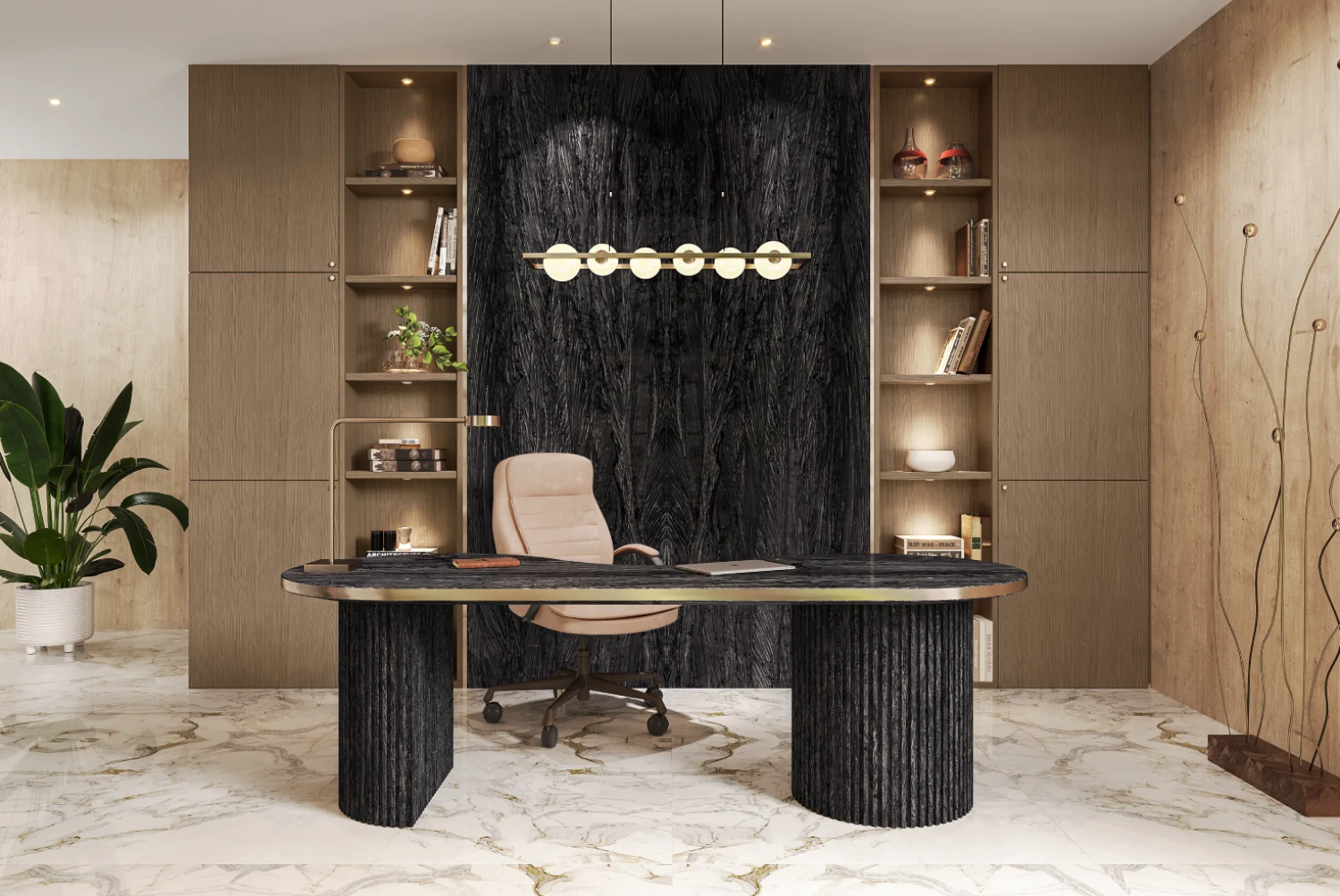
Find out where to use quartzite and why you should use it in your projects
When it comes to choosing materials for architecture and decoration projects, the question that always arises is where to use quartzite. This natural stone, known for its elegance, durability, and versatility, emerges as a prime choice for various applications. If you are looking for durability without compromising on aesthetics, quartzite is the ideal answer. Learn more about the characteristics of this fascinating mineral, its origin, the best ways to use it, and the unique tones available at Decolores. What is quartzite? Quartzite is a metamorphic rock composed mainly of quartz crystals, formed from the transformation of sandstone, a type of sedimentary rock. This metamorphic process occurs under high pressure and temperature, resulting in an extremely hard and compact rock. Thus, quartzite is a robust, resistant, and highly durable rock, ideal for various types of applications, whether in indoor or outdoor environments. In addition to its durability, quartzite stands out for the beauty of its patterns and tones, which vary depending on the origin of the material. Its veins and shades are formed by minerals present during the transformation process, making each piece unique and exclusive. This natural characteristic makes quartzite highly valued in the architecture and decoration market. What is the origin of quartzite? Quartzite was formed billions of years ago when sandstone, a sedimentary rock composed of quartz grains, was subjected to high temperatures and pressures within the Earth. This process occurs during the formation of mountain ranges or other geological activities that cause significant transformations in rocks. Quartzite can be found in various parts of the world, with Brazil being one of the largest producers of this high-quality rock. The beauty and variety of quartzite come from its origin, as the material can present a range of unique patterns, depending on the minerals present in the original sandstone. It is precisely this diversity of tones and textures that makes it so attractive and versatile for different types of projects. Where to use quartzite in your projects? Quartzite can be used in all types of indoor and outdoor architecture projects. Due to its durability, quartzite is perfect for high-traffic areas, such as floors and coverings, both indoors and outdoors. Its resistance to wear, moisture, and heat makes it an excellent choice for areas like kitchens and bathrooms, where materials require greater resistance to damage and ease of maintenance. In addition, quartzite is ideal for countertops and tables, as its smooth and resistant surface ensures practicality and durability. It is also possible to use quartzite in decorative details, such as exterior coverings for fireplaces, walls, stairs, and even custom furniture, adding a touch of sophistication and exclusivity to any environment. Main quartzite tones from Decolores Decolores is recognized for its high-quality quartzites, offering pieces that cater to different architectural styles and preferences. With light and soft tones, the Mont Blanc Quartzite is the ideal choice for those seeking an elegant and clean aesthetic. Its subtle veins and refined finish make it perfect for modern and sophisticated environments, such as kitchen countertops, floors, and wall coverings. With a more bluish and textured tone, the Da Vinci Quartzite features striking veins that make each piece unique. It is perfect for those looking for a material with impact. Its durability is such that it is ideal for adding a touch of exclusivity even to pools and outdoor floors. For those who want a more contemporary touch, the Leblon Quartzite is an option that combines neutral and delicate tones with softer veins. This gray tone offers incredible versatility, being perfect for discreet environments, such as offices and entry halls, and is also an excellent choice for wall coverings and floors in large areas. When considering where to use quartzite in your projects, the versatility, durability, and unique aesthetics of this material make it an unbeatable option. Whether in countertops or coverings, quartzite stands out as one of the most functional materials to transform any environment. Decolores, with its 20 years of experience in the market, offers a complete line of high-quality quartzites, ideal for any type of project. Check out our complete catalog of quartzites and choose from a variety of tones to meet your clients' projects!
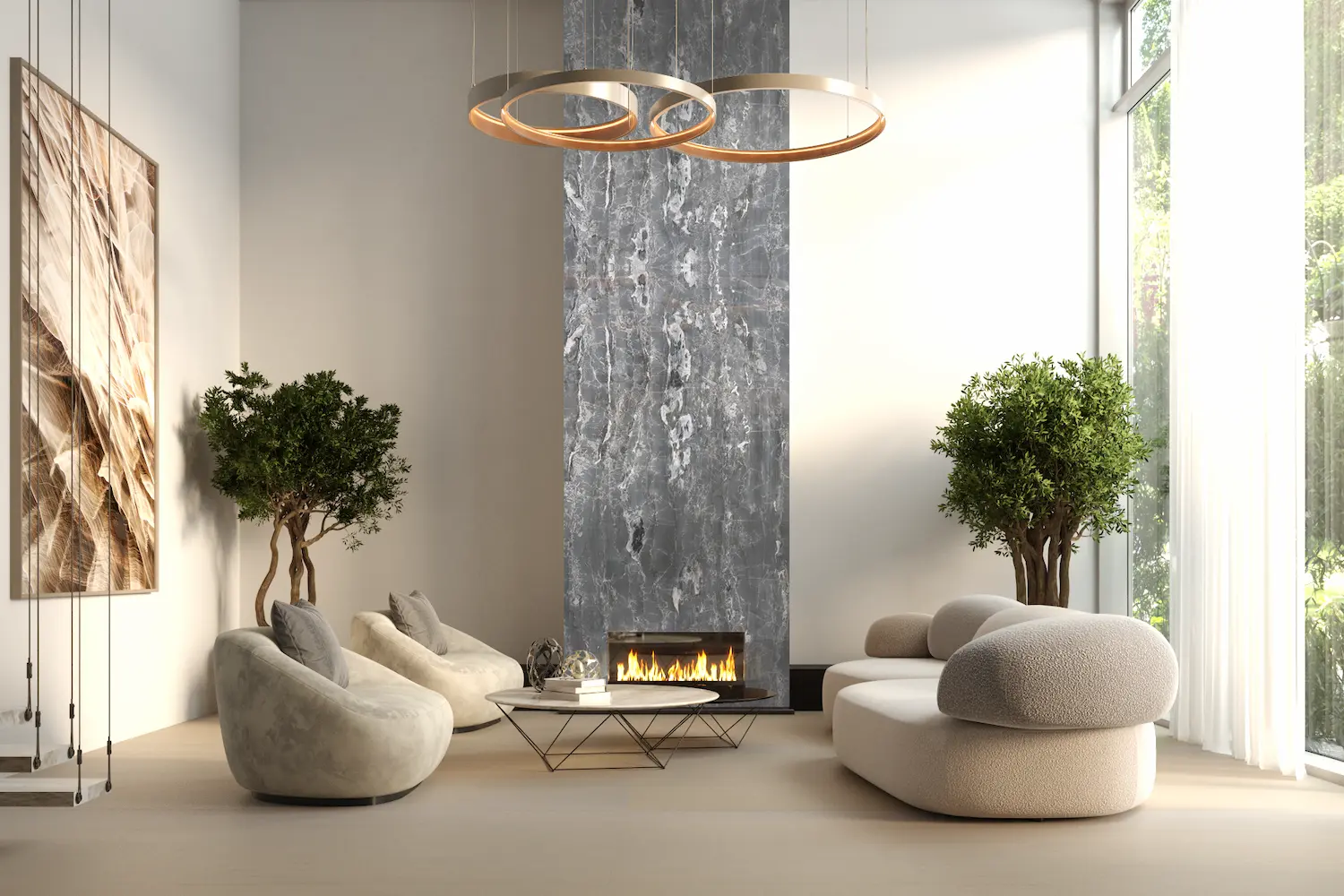
Marble for external fireplace facades and internal walls: discover the best options
Marble is synonymous with elegance and durability, qualities that make it an unparalleled choice for high-end projects. When applied to exterior facades, this noble material elevates the appearance of any building and ensures resistance and longevity. If you are looking for the best options for marble for exterior facades of fireplaces or interior walls, discover today the standards of Decolores to bring more refinement to your architectural projects! Benefits of Marble for Environments Before discussing the best options for marble for exterior facades of fireplaces or interior spaces, it is important to understand what marble and dolomitic marble are, as these materials are fundamental in the context of contemporary architecture. Marble is a metamorphic rock formed from the recrystallization of limestone under high temperatures and pressures. It is primarily composed of calcium carbonate and can be found in a variety of tones and textures, making it highly versatile. Dolomitic marble, on the other hand, is a variation of common marble, characterized by the presence of dolomite, a mineral that gives the material greater strength and durability. Now that you know a bit about these materials, check out the main benefits of using marble for your projects! Refined Aesthetics Marble is synonymous with elegance. Its smooth texture, subtle shine, and natural veining offer a sophisticated and timeless appearance. The use of marble brings a luxurious aesthetic to any building or space. Easy Maintenance Although marble requires proper care, its maintenance is simple. With periodic cleaning and protection against stains, marble for exterior facades retains its beauty over the years with minimal effort. Design Versatility Available in a wide range of colors and patterns, marble can be adapted to different design styles, from classic and traditional to modern and contemporary. Its flexibility allows it to be used in large facades as well as decorative details in interior design. Where to Use Marble? When applied as a cladding, marble provides an imposing aesthetic, ideal for projects that aim to convey a sense of grandeur and refinement. Learn more below! Marble Facades Exterior facades clad in marble are a symbol of elegance and sophistication, whether with a smooth and shiny surface or a matte and satin finish. This natural stone creates a striking contrast with other materials, such as glass and steel, becoming the focal point of the architectural composition. Its durability makes it a long-lasting choice, capable of maintaining its beauty over the years. Interior Walls, Balconies, and Leisure Areas For interior walls, balconies, or leisure areas, marble is an option that combines elegance and functionality. Walls clad with this material create a sophisticated and welcoming environment, capable of transforming a simple outdoor space into a luxurious retreat. In addition to its undeniable beauty, marble provides a sense of freshness and tranquility. Discover 4 Marble Options for Your Project! Marble, with its timeless elegance and unmistakable sophistication, is the perfect choice for cladding interior walls or exterior facades of high-end fireplaces. To help you choose the perfect marble, check out these 4 patterns from the Decolores catalog! 1. Rosso Levanto The Rosso Levanto marble, of Italian origin, displays an intense reddish tone adorned with white veins that evoke sophistication and energy. Its striking presence harmonizes with various styles, adding refinement to spaces such as living rooms, powder rooms, and bathrooms. Combining solidity and elegance, it transforms spaces, giving them a touch of distinction and vibrancy. 2. Van Gogh The Brazilian marble Van Gogh, with 900 million years of history, is a true geological masterpiece. Originating from the limestone of Bahia's ancient seas, it reveals a marine history that has transformed into an eternal painting of enchantment. Its shades of yellow, white, and blue evoke serenity, flowing majestically through the layers of this marble. 3. Telesto The dolomitic marble Telesto, with its gray tones and white veins, exudes sophistication and luxury. Its versatility pairs perfectly with wood or metal, creating a modern and refined look. Ideal for various claddings, such as walls and countertops, it adapts elegantly to many decoration styles. 4. Matarazzo The Matarazzo marble, originating from the limestone of the extinct Capiru Sea in southern Brazil, is a dolomitic marble with one billion years of history. Its light colors and gray nuances reflect the geological transformation of ancient life forms, imbuing each piece with a unique and ancestral story. If you want to explore even more options for marble for exterior facades of fireplaces, discover the complete and exclusive line of marbles from Decolores. Our portfolio includes not only these noble marbles but also a refined selection of dolomitic marbles, known for their superior durability and sophistication. Explore our catalog and discover why Decolores is a reference in the marble market!
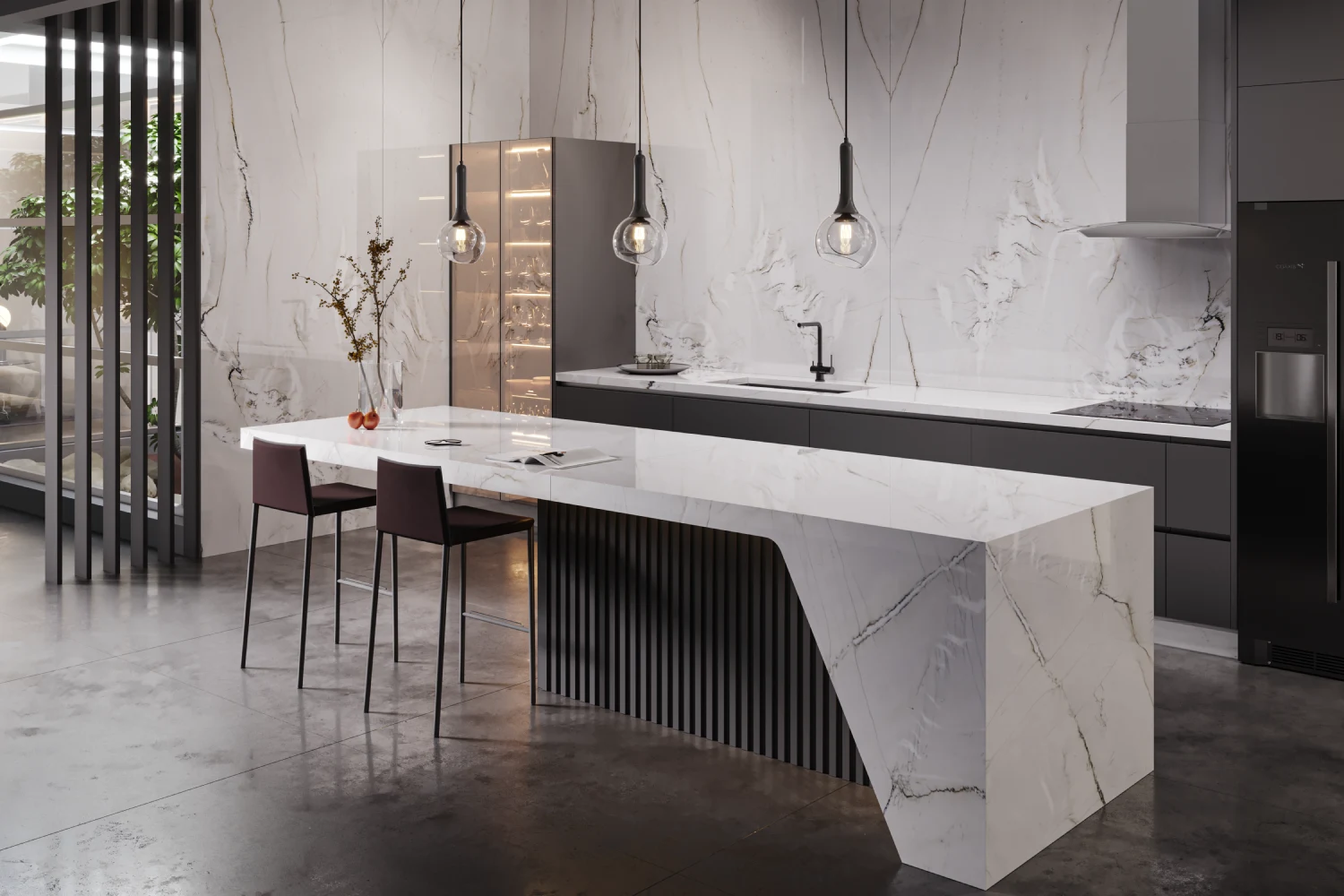
Quartzite countertop in the kitchen: combining resistance and beauty
Quartzite is one of the most valued natural stones in interior design, especially when it comes to kitchens. Its durability, beauty, and versatility make it an exceptional choice for those seeking a countertop for gourmet kitchens. Come and learn more about the characteristics of quartzite, the reasons to choose a quartzite countertop for your kitchen projects, how to care for quartzite, and the best patterns for this special space in your home! Characteristics of Quartzite Quartzite is a metamorphic rock formed from the transformation of quartz-rich sandstones under high temperatures and pressure. This process gives quartzite unparalleled resistance, making it one of the most used stones in sophisticated decoration projects, with durability superior to marble and even granite. Its mineral composition allows quartzite to be highly resistant to wear, stains, and scratches, making it ideal for environments like kitchens and countertops. Additionally, quartzite comes in a wide variety of tones and textures, ranging from neutral and soft shades to more vibrant and exotic ones. The translucency of some quartzite varieties creates a unique visual effect when light hits the surface, adding a touch of sophistication and elegance to spaces. Why Choose a Quartzite Countertop for Your Kitchen? A quartzite countertop in the kitchen is not just about aesthetics; it is also a strategic choice in terms of durability and functionality. Quartzite offers a surface resistant to heat, scratches, and stains, essential characteristics for the intense daily use of a kitchen. Its ability to withstand high temperatures is a significant advantage in daily life. Moreover, quartzite is a material that maintains a sophisticated beauty, with color variations and patterns that perfectly adapt to different decoration styles. Although it requires some care, quartzite surfaces are easy to maintain. Daily cleaning can be done with mild products, without the need for constant polishing. Care and Cleaning for Quartzite Countertops in Kitchens To clean a quartzite countertop in the kitchen, simply use a soft cloth or a non-abrasive sponge with warm water, soap, or a neutral detergent. Avoid harsh or acidic cleaning products, such as bleach, to prevent damaging the finish. Quartzite Patterns for Kitchen Countertops Quartzite offers a range of tones and patterns that can complement any kitchen style. Its natural beauty, with unique veining and sophisticated colors, gives the kitchen a luxurious and timeless appearance. Below are some suggestions for different decoration styles, based on the exclusive patterns offered by Decolores. Minimalist-Style Kitchen For a clean and elegant kitchen, the Mont Blanc Quartzite is an impeccable choice. Its light tone, with soft white veining, provides a luminous appearance without overwhelming the space. Ideal for those seeking minimalism and elegance in their quartzite countertop. Classic-Style Kitchen If your kitchen countertop follows a more classic and refined line, the Perla Grey might be the perfect choice. With its soft tones resembling ocean waves, it brings bluish and gray nuances that enchant and add a cultured touch to the environment. Industrial-Style Kitchen For those who prefer an industrial design, the Infinity Grey is the ideal option. Its deep, dark gray tone, combined with contrasting veining, creates a striking effect, perfect for kitchens with a contemporary and industrial style. Rustic-Style Kitchen The Bronzite Quartzite, with its bronze tones and reddish veining, is excellent for those who want to bring a rustic touch to the kitchen without sacrificing sophistication. Its earthy tone provides a cozy and authentic feel to the space. As you can see, choosing a quartzite countertop for your kitchen ensures a perfect balance between beauty and functionality. With its resistance, ease of maintenance, and sophisticated aesthetics, quartzite is an unmatched choice for transforming your kitchen into a unique space. Explore the quartzite catalog from Decolores and discover the ideal option for your kitchen!
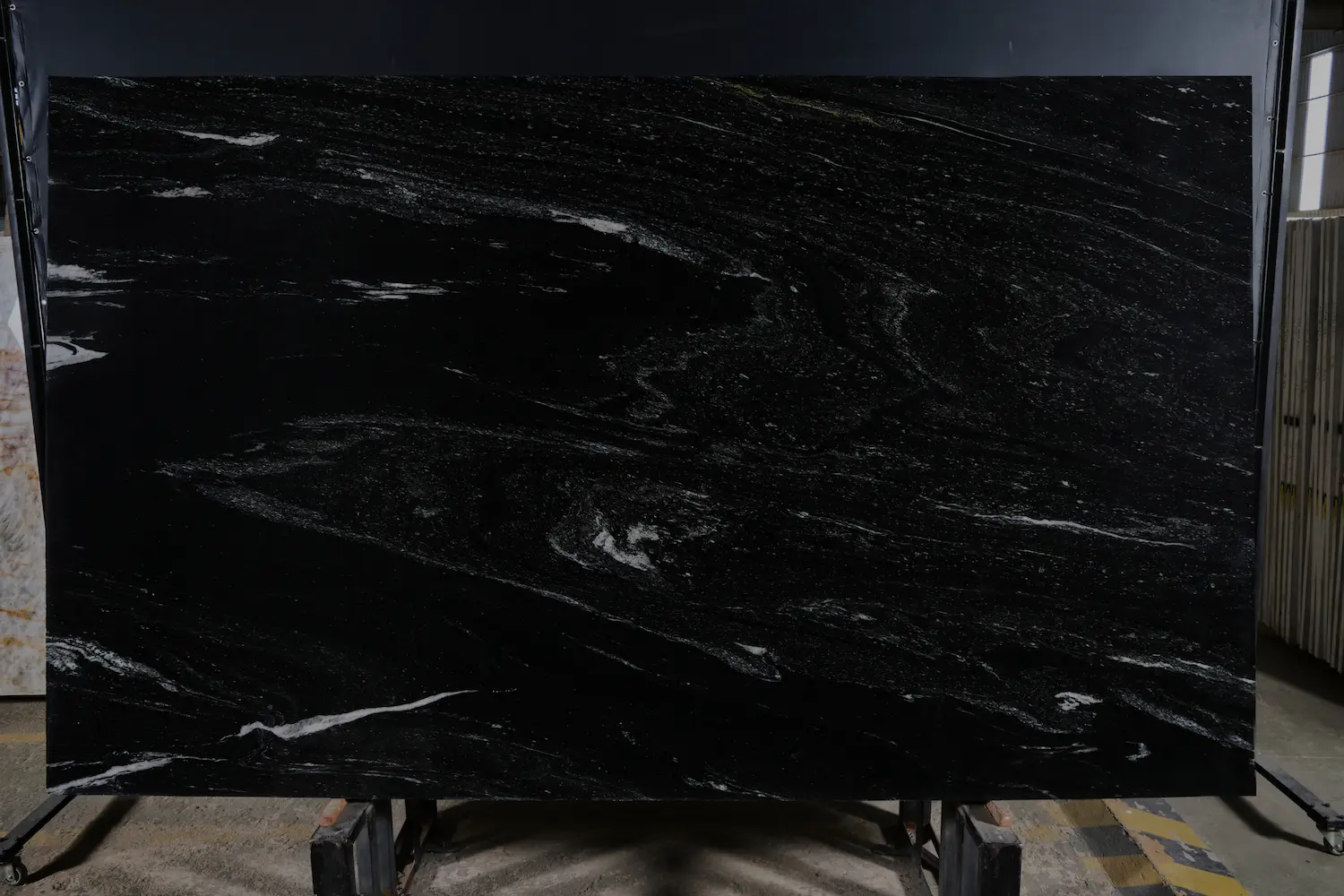
Find out what types of granite finishes are and which one to apply
Granite is one of the most noble and durable natural rocks when it comes to construction and interior design. Widely used for kitchen countertops, floors, washbasins, and even wall coverings, granite adds aesthetic and functional value to any space. The various types of granite finishes allow for unique customization of each project. However, to make the right choice, it is essential to understand the types of granite finishes and which one is most suitable for each application. Below, explore the most common granite finish options and discover the best granite patterns from Decolores. What is granite and how is it extracted? Granite is an igneous rock formed from the cooling and crystallization of magma, a liquid found deep within the Earth's crust. Considered one of the first rocks to form on the planet over 3 billion years ago, granite contains minerals such as quartz, feldspar, and mica, which were formed under conditions of high temperature and pressure. Its extraction takes place in quarries, where large blocks of rock are cut and sent to specialized factories, where the granite is processed into different types of finishes. This offers a range of aesthetic and functional possibilities that cater to various decoration styles and environments. The strength and durability of this material, combined with its beauty, make it a preferred choice for high-end projects, widely used in design around the world. Types of granite finishes There are several types of granite finishes, each providing a distinct texture, appearance, and functionality to the material. The choice of the ideal finish depends on the style of the environment, the desired durability, and the type of use. Among the main types of finishes are polished, brushed, and honed. Learn more about each of these and other granite finishes. Polished finish The polished finish is one of the most popular among granite finishes. It results in an extremely smooth and shiny surface that reflects light, giving the space a sophisticated look. This finish is perfect for kitchen countertops and indoor areas, where beauty and ease of cleaning are essential. Brushed finish The brushed finish gives granite a satin and silky texture, making it slightly more slip-resistant compared to the polished finish. This effect is achieved through multiple passes of tools with different grits applied to the stone's surface. Due to its smooth finish, it is ideal for atrium floors, hallways, and other dry environments. Honed finish The honed finish gives granite a matte and semi-smooth surface, without the intense shine of the polished finish. It is more commonly used in areas that require a slip-resistant texture, making it a good option for environments such as stairs and outdoor floors. Flamed finish (vintage or rustic) The flamed finish is achieved by heating the granite's surface with a flame torch, creating a rough and rugged texture. This finish is highly resistant, making it ideal for outdoor areas. Its resistance to wear and unique appearance make the flamed finish a smart choice for bold and modern projects. Which types of granite finishes are ideal for interior design? If your goal is to add a touch of sophistication to your interior design, the more refined granite finishes, such as polished or brushed, are ideal. These finishes enhance the natural beauty of granite and give the space a luxurious feel. Kitchen countertops For kitchen countertops, a polished finish is desirable, as it combines beauty and ease of maintenance. The shiny surface of the polished finish makes the kitchen more elegant and easier to clean. Washbasins For washbasins or bathrooms, honed or brushed finishes are quite common, as they provide a sophisticated and smoother look. They also allow the material to adapt to daily use, with easy maintenance and resistance to stains. Outdoor flooring For outdoor flooring, more resistant finishes, such as flamed, are the most recommended. These finishes ensure greater grip and durability, along with a rustic and robust aesthetic. Wall coverings For wall coverings, brushed or honed finishes are widely used, offering a balance between beauty and practicality. The subtle texture of these finishes adds a touch of sophistication without compromising the functionality of the surface. Discover Decolores' granite patterns Decolores is a prominent player in the granite market, offering a diverse and high-quality catalog for all types of finishes and applications. Among the standout granite patterns are Granite White Dune and Granite Malaku, with their unique beauty and versatility, available in polished, brushed, and honed finishes. With excellent resistance, a variety of textures, and finishes, Decolores is the right choice for those seeking exclusivity and sophistication. Explore the granite catalog from Decolores and discover the options that will transform your project into a hallmark of elegance. With the right granite finishes, you can ensure functionality and the style your space deserves.
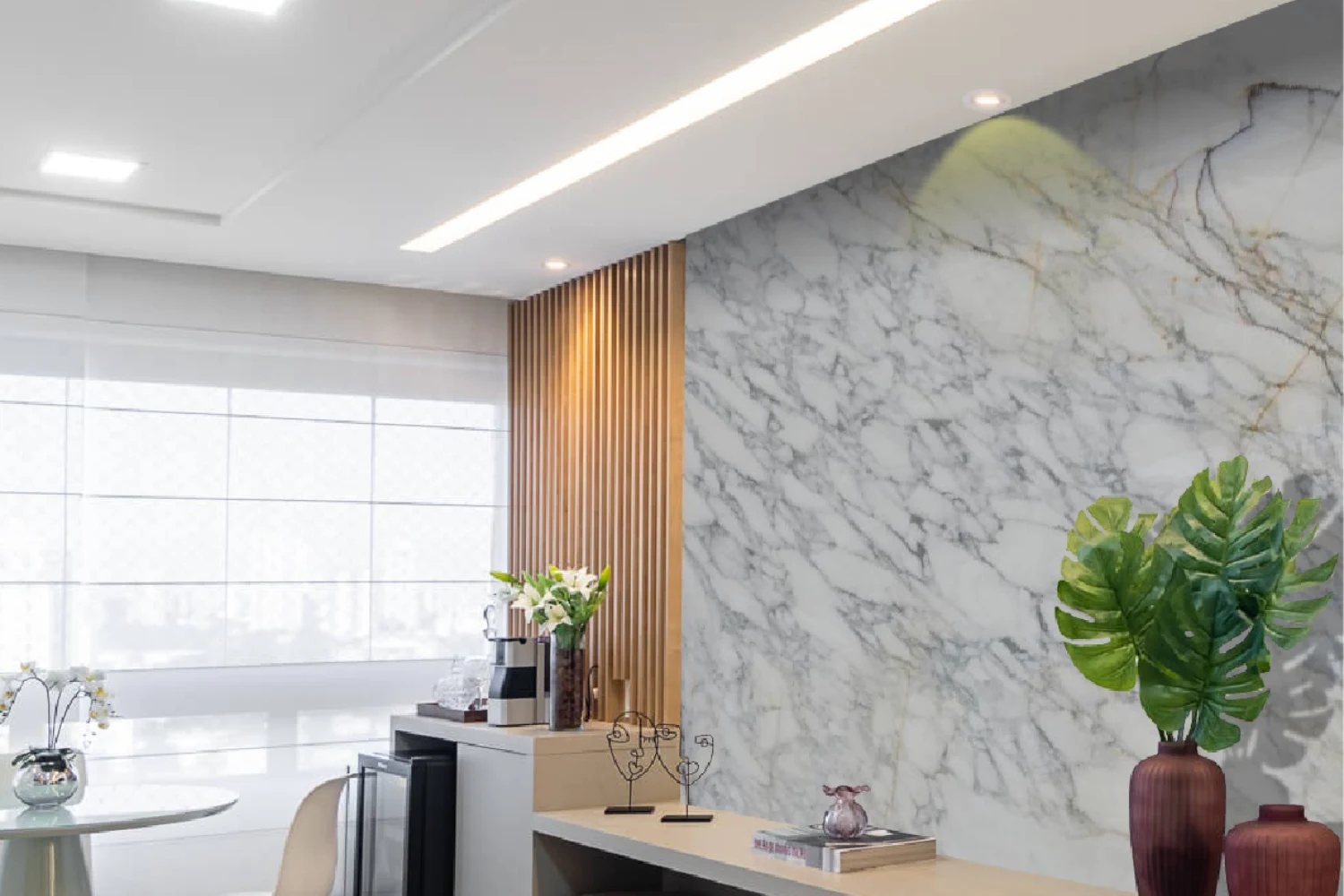
The benefits of Italian marble in architectural projects
Italian marble is widely recognized as synonymous with sophistication, beauty and superior durability. Its fame spans centuries, making it a preferred choice for architecture and design projects that seek timeless elegance. Whether on floors, wall coverings or decorative pieces, marble gives spaces a touch of luxury that few materials can match. Learn a little more about this rock and its main patterns! History of Italian marble The history of Italian marble dates back to Antiquity, when it was widely used by civilizations such as the Romans. The formation of marble resulted from ancient tropical seas that originated sedimentary rocks. Under high temperature and pressure, these rocks underwent metamorphism, a process that transforms their minerals and creates the characteristic bands and fluid colors of marble. Pure white marble, for example, is composed of calcite, while Italian pink marble is derived from iron oxide. The gray tones arose from layers of clay folded into the material, and the black, from organic matter. Throughout history, Italian marble has been used in sculptures and buildings that symbolize the greatness of past civilizations, being linked to nobility and refinement. Quarries such as those in Carrara were already famous for providing the material for the greatest works of art of the time. Monuments such as the Pantheon and columns of ancient temples show how marble became a symbol of power and sophistication. Furthermore, its popularity grew during the Renaissance, when renowned artists chose it as the basis for their creations. Its beauty and durability continue to fascinate today, being a timeless choice for architectural and artistic projects. Italian marbles in famous works of art We cannot talk about marble without remembering the iconic works of art sculpted with this material. Michelangelo used Carrara marble to create his famous work of David, which still impresses today with its perfection and detail. Another example is the Pietà, also by Michelangelo, carved from a block of flawless white Italian marble, as well as the incredible details of The Veiled Virgin, by Giovanni Strazza. In this way, these pieces not only represented the technical skill of the artists, but also highlighted the creative quality of Italian marble. Advantages of Italian marble in decoration The qualities of Italian marble transcend its aesthetic beauty. One of its main advantages is its durability. This material, when well cared for, can last for generations, maintaining its original shine and elegance. In short, Italian marble is incredibly versatile, being suitable for: floors and walls; kitchen countertops; tabletops; washrooms and bathrooms; and wall coverings fireplaces. Another striking feature is its exclusivity. Each block of marble has unique patterns of veins and colors, which means that no two pieces are exactly alike. This allows you to create personalized environments, whether with the immaculate shine of white Italian marble, the romanticism of pink Italian marble, or the drama of darker or even golden tones. Best Italian marble patterns from Decolores Decoloresoffers an exclusive selection of Italian marbles that meet the highest standards of quality and aesthetics. Discover the main highlights! Statuario The marble Statuario is a pattern known for its pure white background and striking blue-gray veins, which create a sophisticated contrast. It is ideal for countertops and coverings, and is often associated with modern and minimalist projects that require a touch of luxury, such as on floors, walls and washrooms. Calacatta Italiano With gray and gold veins that cross its creamy white surface, Calacatta Italian marble is one of the most sought-after options for projects. Straight from the quarries of Italy, its opulent look blends seamlessly with both classic and contemporary decor. Carrara The Carrara marble is perhaps the most iconic of Italian marbles and has been present since ancient times, originating from Tuscany. With a grayish white background and soft veins, it is widely used in homes and commercial projects due to its discreet elegance. Discover more Decolores patterns and elevate your projects Decolores is a reference in Italian marbles and dolomitic marbles, offering a curation of products that combine quality, exclusivity and sophistication. With a vast catalog that includes options such as Van Gogh marble, Decolores meets the needs of architectural projects of all styles. Whether to create a classic, modern or creative environment, Decolores' Italian marble guarantees sophistication and exclusivity. Check out more about our marbles catalog to add a touch of luxury to your project!
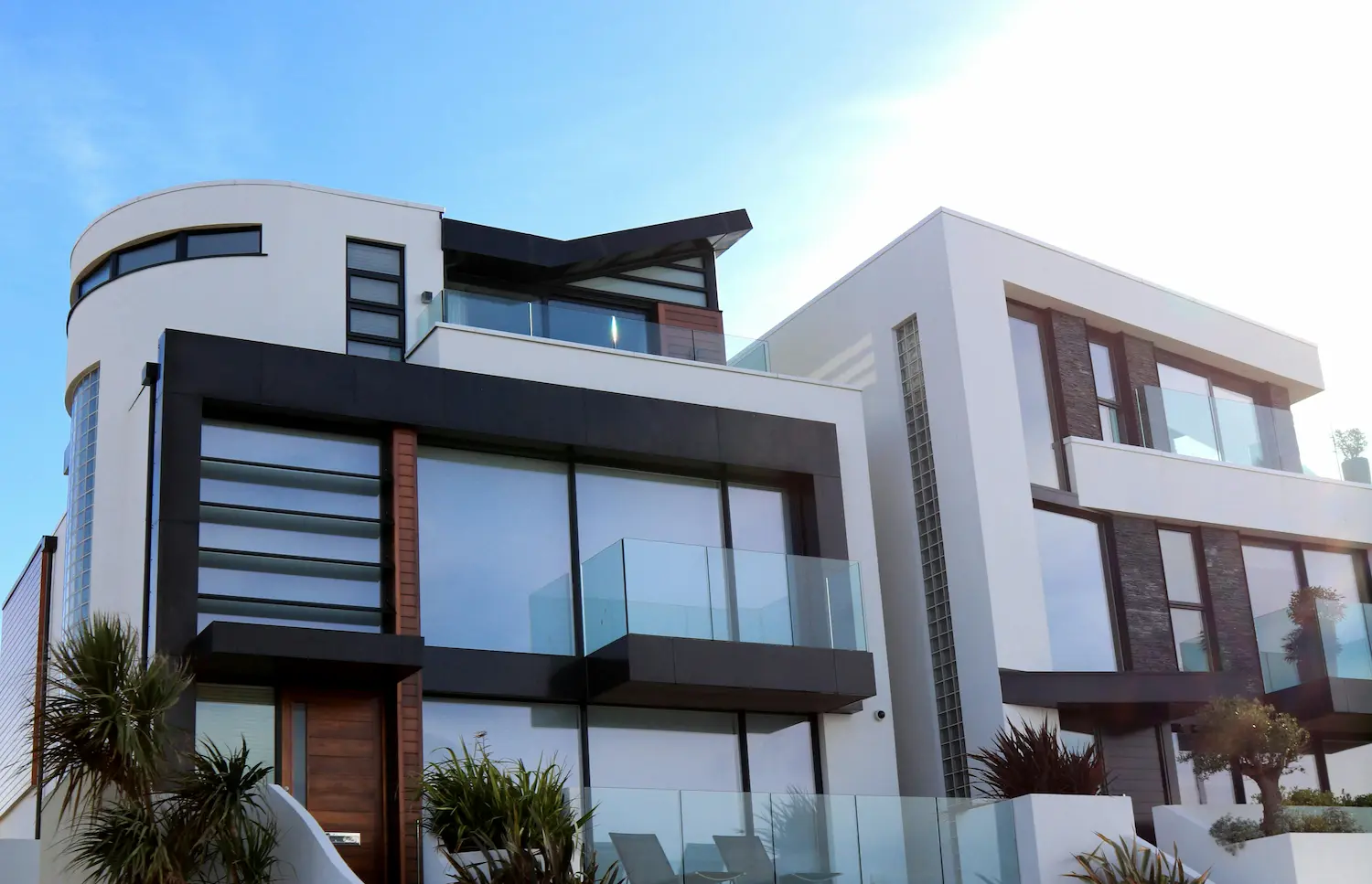
Granite for outdoor areas: find out about the best options
When it comes to choosing materials for outdoor spaces, granite is one of the most recommended options because it combines strength, durability and aesthetics. In addition to withstanding the elements, such as rain and sun, it is versatile and can be adapted to different architectural styles. In this article, we explore the best granite options for outdoor areas. In addition, we explain its applications and the benefits it offers to projects. Check out the next topics! Why is granite ideal for outdoor areas? Granite is a natural rock composed of minerals such as quartz, feldspar and mica, which gives it extreme resistance and durability. These properties make the material especially suitable for use in outdoor areas — where the challenges of weather conditions are constant. One of the main advantages of granite is its weather resistance. It withstands prolonged exposure to sun, rain and sudden changes in temperature without suffering damage, ensuring that the beauty and functionality of the material are preserved over time. In addition, durability is a strong point of granite. It maintains its original characteristics for decades, even in high-traffic environments or subject to adverse conditions, requiring little maintenance. Granite also stands out for its sophisticated aesthetics. Its natural variations in colors and textures offer a unique, elegant and even exotic look, adapting to different architectural styles and adding value to projects. Finally, ease of maintenance is another important benefit. Because it is less porous than other stones, granite reduces the accumulation of dirt, making it easier to clean and ensuring practicality in everyday life. The main applications of granite in outdoor areas Granite is extremely versatile and can be used in different elements of outdoor areas, combining functionality and aesthetics. See some of its applications. Floors Granite is an excellent option for outdoor floors due to its resistance to heavy traffic and anti-slip properties, especially in finishes such as brushed or honed. It is ideal for areas such as gardens, sidewalks and balconies, offering safety and durability. Stairs For external stairs, granite provides safety and sophistication. Its high durability makes it perfect for withstanding adverse outdoor conditions, ensuring an elegant and wear-resistant look. Pool borders Granite stands out in pool borders for its resistance to humidity and non-slip properties. In addition to offering security, it adds aesthetic value to the space, providing a sophisticated and functional finish. Facades When used on facades, granite enhances the architectural beauty of the project. It provides a modern and imposing look, while at the same time protecting the structure against adverse weather conditions, ensuring longevity and elegance. Valuable tips for choosing the ideal granite Choosing granite for outdoor areas is a decision that combines functionality, safety and aesthetics. To ensure that the selected stone meets your needs, it is important to consider some essential criteria. Check out the following tips. Consider the application When choosing granite, you should consider the environment where it will be applied. In wet areas, such as pool edges, non-slip finishes, such as brushed or honed, are essential to prevent slipping and ensure safety. Observe the hue Light granites are ideal for outdoor areas that receive a lot of sunlight, as they reflect light and help maintain a pleasant temperature. Dark granites provide a modern and sophisticated look, perfect for architectural projects that seek elegance. Attention to maintenance Opt for finishes that are easy to clean, especially in high-traffic areas. Polished granite, for example, is less porous and prevents dirt from accumulating, making maintenance more practical. Check weather resistance In regions with extreme weather conditions, choose granites that withstand variations in temperature, humidity and exposure to the sun. This feature will ensure the durability and conservation of the material over time. Consider the style of the project The granite should harmonize with the design of the outdoor space. Analyze the available colors and textures to create an environment that combines aesthetics and functionality, whether with neutral or vibrant tones, depending on the desired style. What are the best granite options for outdoor areas? Decolores, a reference in natural stones, offers excellent granite options that combine functionality and beauty. Among them, the following stand out: Makalu With a fascinating geological history of over 2 billion years, the Makalu granite presents a gray matrix rich in feldspar, biotite and epidote, in addition to quartz veins that provide an impressive contrast. This granite is ideal for those seeking a sophisticated appearance with high resistance, perfect for outdoor areas exposed to adverse conditions. Available finishes: polished, brushed and honed. Applications: indoor and outdoor floors and walls. White Dune White Dune is a versatile and elegant choice, with a unique look that adapts to both residential and commercial environments. Its durability makes it excellent for prominent areas, such as pool edges or imposing facades. If you are looking for a stone that combines sophistication and functionality, White Dune is a sure bet. Available finishes: polished, brushed and honed. Applications: indoor and outdoor floors and walls. Silver Grey With its striking gray tone, Silver Grey granite is ideal for those who want to highlight naturalness and style in outdoor projects. This stone is a true guardian of geological time, with over 3 billion years of formation. Available finishes: polished, brushed and honed. Applications: internal and external floors and walls. Extra tip: Pair Silver Grey with neutral elements and proper lighting to enhance its natural beauty and create a memorable outdoor environment. In short, choosing the right outdoor granite can completely transform the look and functionality of your space. At Decolores, you will find a selection of high-quality granites, ready to meet your architectural needs. Discover all the granite options for outdoor areas available at Decolores. Get in touch and find the perfect solution for your project!
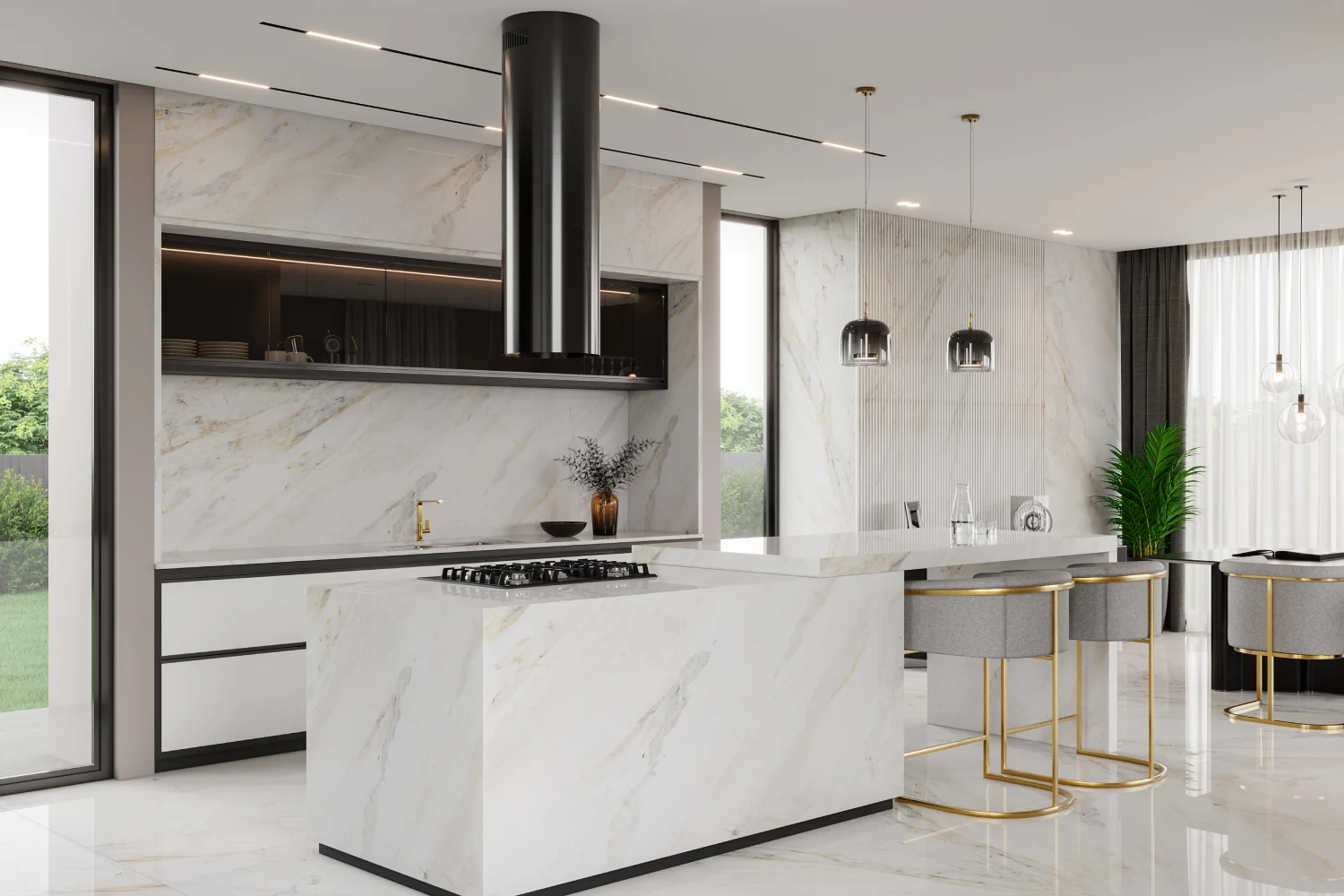
Marble Care Tips
Marble, a symbol of elegance and sophistication, is an unparalleled choice for transforming spaces such as living rooms, kitchens and bathrooms. However, its timeless beauty requires special attention to preserve its integrity over the years. Knowing how to care for marble properly and understanding what damages marble are essential steps to ensuring that this natural stone maintains its shine and resistance. Here you will find practical tips to protect marble and further enhance your decoration projects. Check it out below! What are the precautions for marble? Maintaining the integrity of marble requires special attention and maintenance routines. First of all, it is essential to avoid the use of acidic or abrasive products, which can damage the beautiful surface of the stone. Always use soft cloths and neutral detergents for daily cleaning, ensuring that the surface remains free of stains and scratches. In addition, avoiding rough materials or stiff brushes, which can scratch and damage the polished finish, is also part of marble care. How to clean marble? Proper cleaning is one of the pillars of marble care. To do this, use water and detergent, avoiding abrasive contact that could scratch the stone. To clean coffee or wine drops, for example, prepare a solution with warm water and a few drops of neutral detergent. Apply to the stained area using a soft cloth, rubbing gently. Then, rinse with clean water and finish by drying thoroughly. Water repellents are also valuable allies in marble care, as they prevent the penetration of liquids and substances that can cause stains and deterioration. You can apply a water repellent every six months that is recommended by the manufacturer. This helps keep the marble protected from the porosity of liquid spills in kitchens and bathrooms. What can't you use on marble? Avoiding certain products and practices is essential for marble care. Learn which products should be avoided as much as possible to preserve the integrity of the marble: acids and citrus products — substances such as vinegar, lemon or acidic solutions can corrode the surface and cause stains; abrasive products — steel sponges, sandpaper or cleaning powders can scratch the marble; harsh chemicals — bleach, ammonia and alkaline stain removers can cause discoloration; cutting knives — it is important to prevent scratches on sinks and kitchens. It is interesting to use cutting boards, for example. Count on Decolores marble and bring sophistication to your spaces Choosing the right marble is essential to ensure the refinement of your spaces. Decolores offers an exclusive selection of marbles, with stunning pieces such as the Van Gogh marble, known for its artistic veins, light and yellowish tones. Each Decolores piece is treated with precision and care, ensuring that the marble is cared for so that the natural beauty of the stone is highlighted. The treatment of marble at Decolores includes the application of high-quality sealants and water repellents, providing long-lasting protection for easy maintenance. In addition, we have a team ready to guide architects and designers in choosing and properly caring for marble, ensuring that each architectural project reflects the desired sophistication. Investing in marble from Decolores guarantees elegant and timeless environments, where every detail reflects excellence and good taste. With the appropriate marble care and the quality offered by Decolores, your decoration projects will certainly reach new heights. levels!

Aluminum and natural rocks: a timeless union
The combination of aluminum and natural rocks is not just a trend, but a celebration of nature and innovation. Whether for minimalist spaces or luxurious projects, this timeless combination is the key to environments that transcend time. Next, learn how you can bring new combinations to your architectural projects with natural rocks and aluminum! Formation of aluminum and its origin in natural rocks Few people know, but aluminum, although so present in our daily lives, is a metal that finds its roots directly in natural rocks. Its extraction is mainly from bauxite, a mineral formed by geological processes over millions of years. Natural rocks, such as marble, quartzite and travertine, also share this long history of formation, carrying with them the marks of their geological origin. This intimate connection between aluminum and natural rocks is what makes them perfect allies in design projects that seek to combine sophistication and authenticity. By incorporating materials from the bowels of the Earth into architectural spaces, we establish a deep connection with nature, transforming each environment into a true organic work of art. The alliance between aluminum, with its lightness and versatility, and natural rocks, with their resistance and unique beauty, symbolizes the perfect balance between the modern and the timeless. Aluminum: a trend for industrial style decoration The industrial style has been winning hearts around the world with its urban and casual charm. In this context, aluminum stands out in industrial architecture. Its metallic shine and polished or matte finish match the raw and minimalist aesthetic of the style, standing out in light fixtures, frames and even in furniture such as chairs. When combined with natural rocks, aluminum gains even more prominence. For example, a kitchen where quartzite countertops harmonize with suspended shelves made of brushed aluminum. Or a living room with coffee tables that combine travertine and aluminum, creating a piece that exudes modernity and sophistication. Another big trend is to bet on contrasts. For example, using aluminum in straight and clean lines, while natural rocks, with their textures and organic veins, become the focal point. In this way, the balance between the two materials brings a contemporary feel to the environment. Natural rocks most present in modern environments Natural rocks, such as marble, travertine and quartzite, have established themselves as the perfect choices for modern projects. Each of them offers unique characteristics, transforming spaces into true scenes of elegance. Marble Synonymous with refinement, marble transcends time with its versatility and beauty, becoming ideal for floors, walls and countertops, elevating any environment to maximum sophistication. Over the millennia, ancient tropical seas gave rise to these sedimentary rocks that, under intense heat and pressure, transformed into the marbles that we know today. Its patterns range from pure white to gold, passing through spiral grays. Travertine Its natural tones, which range from earthy to gray, result from elements enriched during its formation, giving it a unique texture. A symbol of elegance since Ancient Rome, as in the Colosseum, travertine continues to enchant with its versatility and timeless charm, creating cozy and sophisticated environments in contemporary projects for bathrooms, living rooms and outdoor areas. Quartzite quartzites, marked by their vibrant beauty and incomparable resistance, are the result of a geological journey that began billions of years ago. Composed of quartz, its fusion of aesthetics and durability makes quartzite a sophisticated and long-lasting alternative, perfect for projects that celebrate the elegance and strength of nature. Decoration suggestion: use natural rocks as standout pieces. In a dining room, for example, a travertine table with aluminum legs can be the central element of the space. In a bathroom, you can combine a carved marble sink and aluminum accessories to create a sophisticated and contemporary atmosphere. Count on Decolores for your architectural projects Decolores, a reference in natural rocks, offers options in travertine and other materials, such as quartzite and marble. Our pieces are selected to ensure the best quality, allowing architects and designers to create unique and sophisticated projects. Travertine is one of the most versatile materials when it comes to interior design. Both its neutral or earthy tone and its elegant texture allow it to be easily combined with other elements, such as aluminum. In addition to its beauty, travertine offers practical benefits, such as resistance, making it a smart choice for high-traffic environments. When choosing pieces from Decolores, explore the combination of travertine with metallic finishes. A wall covered in travertine can be complemented by aluminum lamps to create a play of light and textures that enchant any environment. To learn more, check out our catalog of travertines and take advantage of our ambience simulator to test new inspirations!
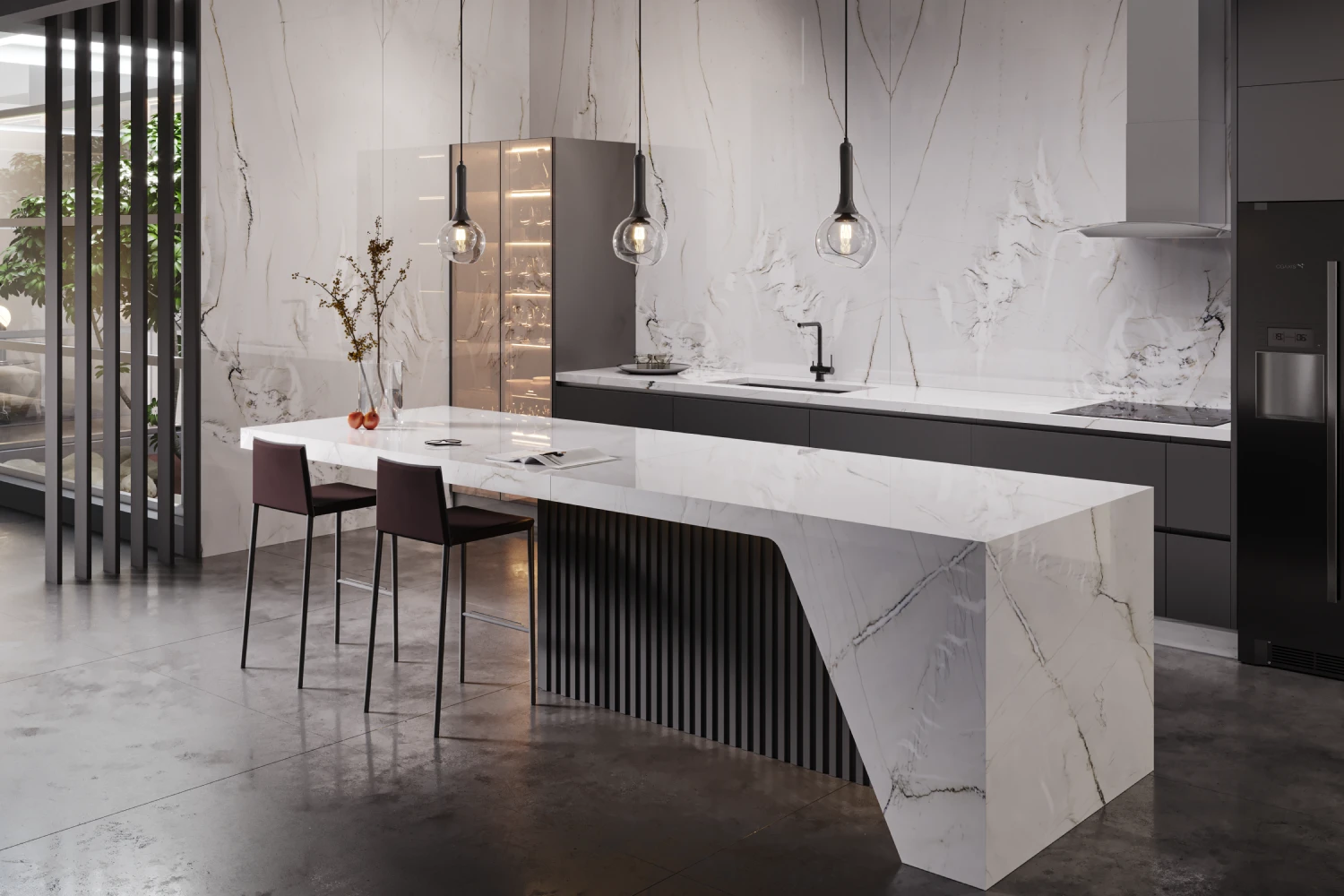
Quartzite and granite: elegance and durability in gourmet areas
Gourmet areas have become the heart of modern homes, spaces where aesthetics and functionality must coexist in harmony. For this, nothing beats investing in quartzite and granite, natural stones that combine sophistication and durability, making any project timeless. Learn more about the applications of these stones in refined environments! What is quartzite? Quartzite is a metamorphic rock formed by the recrystallization of sandstone rich in quartz. This process, which involves high temperatures and geological pressures, transforms quartzite into a highly resistant and visually stunning material. Its surfaces are marked by unique patterns, fluid veins, and a palette of colors ranging from pure white, like the Mont Blanc quartzite, to vibrant tones such as greens, exemplified by the Da Vinci quartzite. In addition to its beauty, quartzite is known for its durability and resistance to scratches and stains, making it ideal for gourmet areas. Whether for countertops or coverings, quartzite transforms any space into a sophisticated and functional environment. What is granite? Granite is an igneous rock formed by the slow cooling of magma within the Earth. Composed of minerals such as quartz, feldspar, and mica, it is renowned for its strength and variety of colors and textures. Granite offers a more granular and rustic aesthetic, with shades ranging from grays to blacks, like the White Dune and Makalu. Its durability and low maintenance make it a classic and reliable choice for high-use areas like bathrooms. How to use quartzite and granite in gourmet areas Choosing between quartzite and granite to decorate gourmet areas ensures a space that combines beauty, practicality, and durability. Both materials resist heat and impacts, essential for spaces such as kitchens and balconies. Moreover, their textures and colors create a sense of natural elegance, elevating the design of the space. Discover the benefits of using these natural stones for decorating various sophisticated environments! Powder rooms and bathrooms Quartzite is a sophisticated choice, with its vibrant colors and artistic veins transforming bathrooms into luxurious works of art. Granite, on the other hand, offers a more understated aesthetic, ideal for creating minimalist and functional powder rooms. Choose a polished finish to enhance the colors of quartzite or granite, or a matte finish for a more modern and minimalist touch. Gourmet kitchens For gourmet kitchens, quartzite and granite are unbeatable choices. These natural stones are heat and stain-resistant, perfect for countertops and islands in modern kitchens. They are also ideal for indoor flooring and walls, adding style to the space. A tip is to combine light quartzite on countertops with darker granite on floors to create a visually sophisticated contrast. Gourmet balconies In gourmet balconies, the choice between quartzite and granite depends on the desired style. Quartzite, with its vibrant veins, is ideal for countertops and tables, while granite, with its high resistance, is perfect for wall and outdoor floor coverings. Living rooms The use of quartzite and granite in living rooms can create a very elegant appearance. Quartzite panels as a focal point or quartzite coffee tables add sophistication to the space. Granite stands out for indoor stair coverings. Quartzite or granite: which one to choose for your project? The choice between quartzite and granite depends on the style and needs of your project. Quartzite is ideal for those seeking a touch of luxury and exclusivity, with vibrant colors and refined textures. Granite, on the other hand, is perfect for projects requiring maximum resistance with a more rustic aesthetic. It also absorbs less liquid compared to marble. One thing is clear: both materials are timeless and elevate any gourmet space, ensuring durability and beauty over the years. Decolores, a reference in natural stones, offers an extraordinary selection of quartzites and granites to elevate the design of gourmet areas. Their unique patterns and sophisticated colors turn each piece into a central element of any architectural project. We invite you to explore the exclusive Decolores catalog, featuring quartzite patterns perfect for creating spaces that combine elegance, functionality, and durability. Don’t miss the opportunity to discover materials that celebrate the beauty of nature with the best in finishing technology!
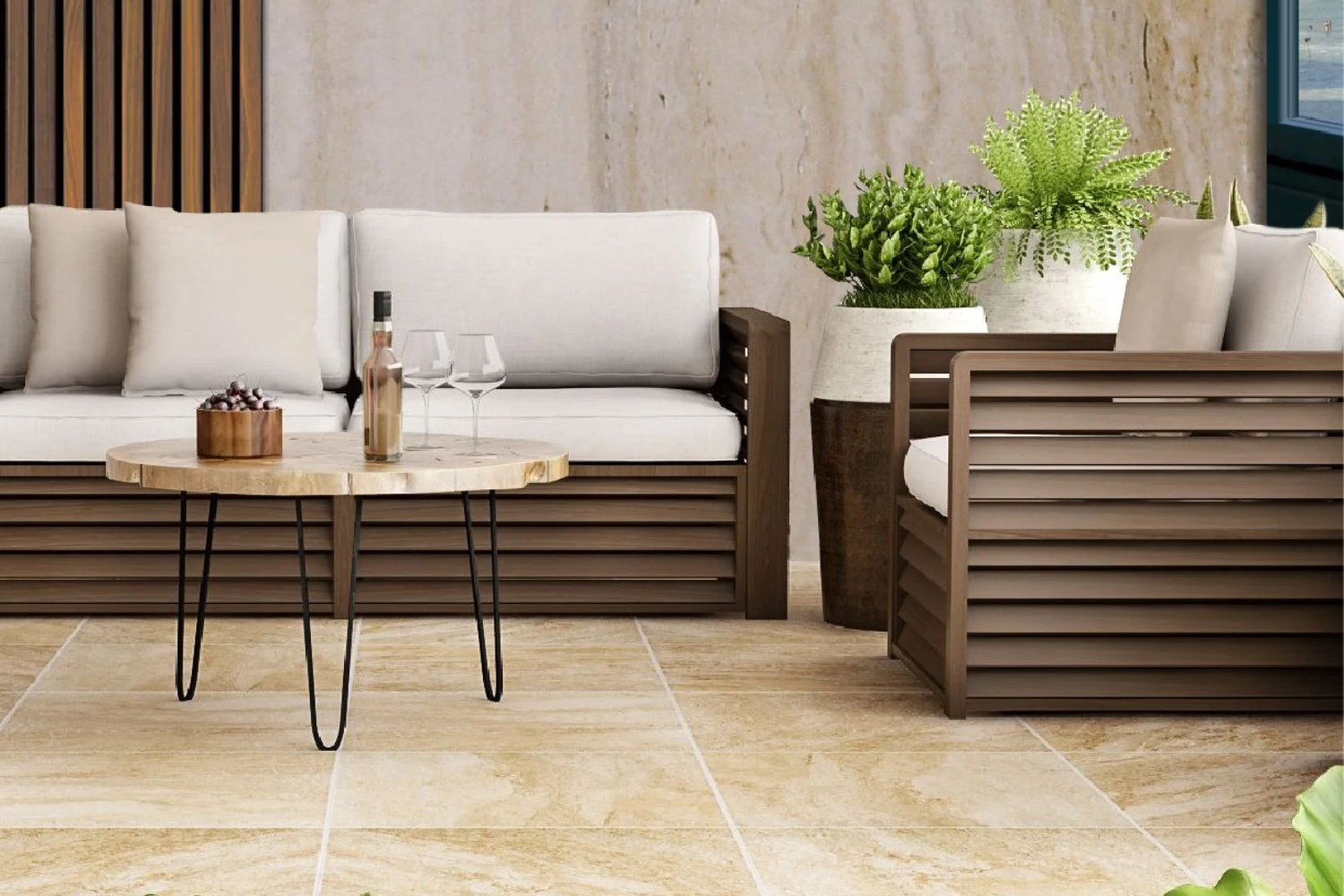
Travertine: find out what it is and its advantages
Travertine is a natural stone widely used in construction and interior decoration. With its elegant appearance and unique texture, this type of limestone is a favorite among architects and designers. Versatile and timeless, travertine is an excellent option for cladding, flooring, countertops, and even decorative details. In this blog, we will discuss the characteristics of travertine, its advantages, common finishes, origin, and how to clean and maintain it to ensure durability and beauty. Happy reading! What is Travertine? Travertine is a sedimentary rock formed by the precipitation of calcium carbonate in freshwater continental environments, such as hot springs. Its appearance is characterized by a porous texture, giving it a rustic and sophisticated look, depending on the chosen finish. Travertine comes in a variety of beige, brown, orange, or gray tones, resulting from the enrichment of different elements during its formation. What are its advantages? Travertine offers several advantages that make it one of the most appreciated materials in decoration and architectural projects: Timeless elegance: Used since Ancient Rome, travertine proves to be a timeless stone. Its velvety texture and neutral colors add elegance and versatility to any project. Durability: It is an extremely resistant stone with long-lasting beauty, ideal for high-traffic areas. Versatility: It can be used for floors, walls, countertops, facades, and even decorative details in various environments. Variety of finishes: The availability of various finishes allows travertine to adapt to different styles and preferences. Easy maintenance: Although it requires specific care, travertine is relatively easy to clean and maintain compared to other natural stones. What are the most common travertine finishes? With a presence in spaces that evoke versatility and timeless beauty, we highlight the main finishes of travertine: Natural The natural finish maintains the stone's original texture with its cavities. This finish is ideal for outdoor spaces, such as gardens and pool areas, where a rustic and natural effect is desired. It offers good grip and is perfect for surfaces that need to be non-slip. Honed In the honed finish, travertine has a smooth, matte texture without shine. This type of finish is widely used indoors, such as living rooms, bathrooms, and kitchens, as it offers an elegant and sophisticated look without an intense shine. What is the origin of travertine? Travertine originates from regions with hot springs. Italy, especially the Tivoli region near Rome, is one of the world's primary sources of travertine. The stone is known for its use in iconic architectural works, such as the Colosseum in Rome, demonstrating its durability and timeless beauty. Other countries, such as Turkey, Mexico, and the United States, also produce travertine, but the Italian version remains the most appreciated for its quality and tradition. Decolores: Quality Travertine Options Decolores offers a refined selection of high-quality travertine to transform your project with elegance and durability. Discover our options: Alabastrino Travertine: Quarried near Rome, Italy, Alabastrino Travertine features an elegant beige tone with subtle veins reminiscent of tree branches. It is a sophisticated choice for both interiors and exteriors, such as pool decks, creating charming and inviting spaces. Gold Travertine: With its intense orange color and unique patterns, Gold Travertine is ideal for floors, walls, countertops, and facades. Its timeless beauty and versatility add sophistication to any project. Extra Travertine: Classic in architecture and decoration, Extra Travertine has neutral tones that harmonize with various colors and styles. It brings elegance and refinement to floors, walls, and countertops, making it a reliable choice for those seeking durability and sophistication. At Decolores, you will find the travertine ideal for your project, combining beauty, quality, and durability. Transform your spaces with the charm and elegance that only natural stones can offer!

In which places do you use Mont Blanc quartzite?
The Mont Blanc quartzite has stood out as a sophisticated and versatile choice in architectural and interior design projects. With its elegant aesthetics and remarkable durability, this natural material is ideal for both indoor and outdoor environments. Discover the best places to use Mont Blanc and see its benefits in real projects by Decolores! What is Mont Blanc quartzite? Mont Blanc quartzite is a metamorphic rock primarily composed of quartz, which is a highly durable mineral. With a fluid pattern and clean aesthetic, Mont Blanc features a light coloration, making it highly appreciated for decorations and claddings. Extracted from Chapada Diamantina in Bahia, its formation dates back 1.7 billion years, in a semi-arid environment of dunes and rivers, resulting in a beautiful and resilient natural stone. This makes Mont Blanc quartzite an excellent option for projects requiring a mix of durability and modernity. Advantages of using Mont Blanc in projects Choosing Mont Blanc for architectural and interior design projects is a decision that combines elegance and functionality. This material, with its subtle and sophisticated beauty, has the power to transform any space, bringing a touch of refinement that captivates at first glance. Discover all the advantages of incorporating Mont Blanc quartzite into your architectural projects! Durability As a metamorphic rock, Mont Blanc quartzite is highly resistant to impacts and scratches. Its durability ensures the material maintains its beauty and integrity over time, even in high-traffic areas. Low porosity and easy maintenance With a non-porous surface, Mont Blanc does not absorb liquids, preventing stains and making cleaning easy. This characteristic ensures the material requires minimal maintenance, allowing owners to enjoy it worry-free. Versatility in finishes Mont Blanc quartzite comes in various finishes, such as polished, brushed, and honed. This versatility allows for distinct textures, catering to client preferences and the styles of each project. Timeless beauty Mont Blanc’s design possesses a timeless quality that transcends trends. Its classic elegance ensures spaces remain beautiful for many years, making it a wise choice for both contemporary and traditional projects. Where to use Mont Blanc quartzite? Mont Blanc quartzite is an excellent option for various environments due to its beauty and durability. In summary, Mont Blanc can be used in indoor flooring, walls, kitchen countertops, table tops, bathrooms, fireplace claddings, stairs, and panels. Next, check out some real projects by stonemasons and architects who used Mont Blanc quartzite from Decolores to elevate interior designs. In indoor environments The Apartment 100 project, located in Greater Porto Alegre (RS), was marked by fluidity and dynamism. The quartzite was used on the bathroom floor, highlighting its neutral tones and shine in contrast with the ebony wood, which adds an imposing touch to the walls. Thanks to the treatment applied during its production, the quartzite does not absorb liquids, making it stain-resistant and ideal for flooring in wet areas such as bathrooms, washrooms, and kitchens. Mont Blanc stands out not only in houses and apartments but also in commercial architectures and galleries. In Brasília, the Divino Quadro Gallery was distinguished by its innovative and full-of-personality project, offering visitors a unique experience. The quartzite, with its quartz grains and milky coloration, was the perfect choice for the project’s spaces. It was applied to various furniture pieces, such as countertops and tables, helping to create a neutral base that highlighted the gallery's artworks. In outdoor environments Beyond interior design, Mont Blanc provides an elegant and durable look, ideal for leisure areas, such as outdoor floors and walls of verandas. Additionally, for stairs, quartzite ensures safety and a refined finish. For pool stones, its resistance to moisture and stains makes it a functional and sophisticated choice. Where to find Mont Blanc quartzite? You can find the quality of Mont Blanc quartzite in the solutions provided by Decolores, a specialist with over 20 years of experience in natural stones. Each piece of quartzite we offer is treated with cutting-edge technology. Our processing methods involve diamond wire saws, automated resin lines, and 20-head polishers, ensuring quality and precision in every slab. Decolores offers an exclusive Mont Blanc collection, perfect for transforming your project into a singular expression of elegance and resilience. Explore our selection of Mont Blanc Quartzites! #post-content p, #post-content h2, #post-content h3 { margin: 1em 0; } #post-content h2 { font-size: 30px; font-weight: 600; } #post-content h3 { font-size: 20px; font-weight: 600; } #post-content a { color: #658c5e; font-weight: 600; text-decoration: underline; }

Decolores and Anderson Varejão Institute: Sport as an agent of social transformation
The company, a benchmark in quartzite processing, maintains its partnership with the non-profit organization as a way of supporting and developing the community in which it operates. Athlete Anderson Varejão, creator of the project, poses for a photo with the children who benefit from the Institute in the city of Cachoeiro de Itapemirim, where one of Decolores' centers is also located. Photo: Disclosure. Since 2016, Decolores, a company from Espírito Santo that has become a world reference in the processing and production of quartzite, and the Anderson Varejão Institute, an initiative created by the basketball legend from Espírito Santo, have maintained a solid partnership that reflects their commitment to social transformation through sport and education. Founded in 2014, the institute is a non-profit association that develops sports and socio-educational projects aimed at children and teenagers from public and private schools, as well as their families. With actions that encourage sports practice, motor development and social inclusion, the institute has already impacted more than 7,500 young people in four Brazilian states. Basketball thus becomes a tool for promoting values such as overcoming, teamwork and socialization, going beyond the courts by strengthening family and community bonds. Decolores, recognized for innovation and sustainability in its segment, sees sport as an opportunity to transform lives, reaffirming its pillars of social responsibility and prioritizing the development of the communities where it operates. Together, the company and the institute continue to overcome challenges and build a better future for generations to come. Watch on Youtube: https://youtu.be/cDZRXTbHWuE?si=6oiNjVUTOu8wHG6l Instituto Anderson Varejão https://iav.org.br/ @institutoandersonvarejao
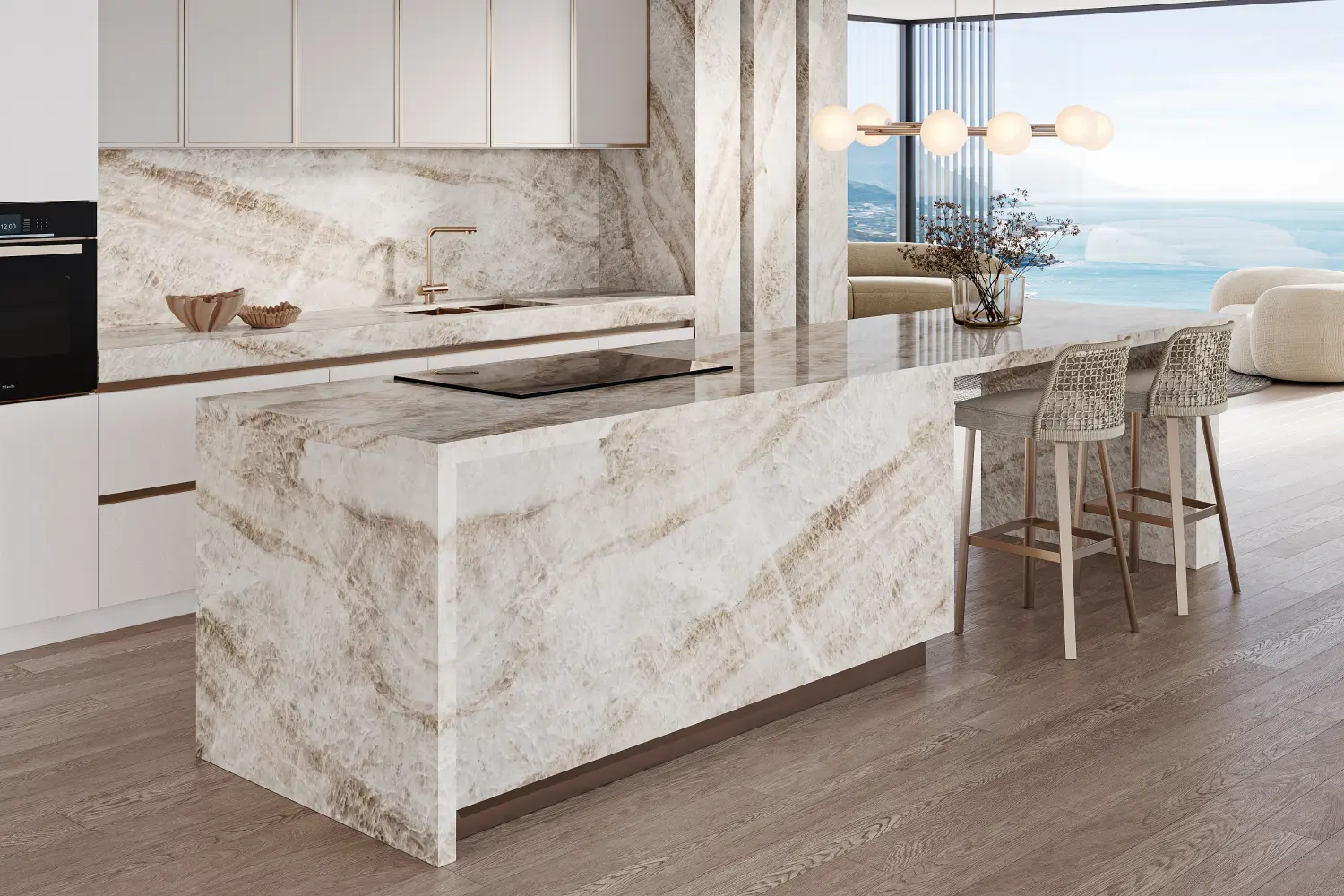
How to choose the ideal natural rock for your kitchen countertop
Kitchen countertops are one of the most important elements in architectural projects. After all, the countertop is the heart of the kitchen, where everything happens: from food preparation to interacting with family and friends. Because of this, architects need to pay special attention to this element, ensuring the kitchen is not only functional but also reflects the client’s style. Natural stone countertops offer not just beauty but also practicality for everyday use. Check out the main types of natural stones, their characteristics and advantages, along with tips to help you make the ideal choice. What are the main types of kitchen countertops? When designing a kitchen, choosing the right countertop is essential, impacting both functionality and aesthetics. Countertops can be adapted depending on the residents’ lifestyle and the home’s design. Here are the main types of kitchen countertops that deserve attention! Sink Countertop The sink countertop is designed primarily to accommodate the sink, serving as a base for food preparation activities. This space can be positioned relative to the stove and refrigerator to promote efficient workflow. Materials like granite or quartz are recommended, offering high durability, resistance, and ease of cleaning. Island Countertop The island countertop is one of the most desired elements in contemporary kitchens due to its versatility and focal point appeal. This type of countertop can include various functions, such as a cooktop, additional sinks, or a dining area. The island should be designed with careful attention to the kitchen layout, ensuring there is enough space for circulation around it. Peninsula Countertop The peninsula countertop is an intermediate solution that extends from a wall or cabinet, integrating with other areas of the home. This type of countertop is especially useful in smaller kitchens where an island isn’t feasible but functionality and modern design are still desired. What are the best stones for kitchen countertops? When designing sophisticated kitchens, choosing the right stone for countertops is essential. Among the best options are natural stones, such as granite and quartzite, which combine elegance and functionality. Granite Granites are igneous rocks formed by the cooling and crystallization of deep Earth magma, with a hardness of 6 on the Mohs scale. They are among the oldest rocks on the planet, over 3 billion years old. As such, granite is one of the most popular stones for high-end kitchen countertops. Its durability and heat resistance make it ideal for kitchen areas. Quartzite Quartzites are highly resistant metamorphic natural stones, composed of over 75% quartz, a mineral with a hardness of 7 on the Mohs scale. Quartzites come in a wide variety of patterns and colors, from exotic to subtle, and from light to vibrant tones. They are an excellent choice for sophisticated kitchens, as their texture and color variety can create an elegant look. Why choose granite countertops for your kitchen? Opting for a granite countertop for your kitchen offers numerous advantages. Above all, granite's durability is one of its main attractions. This natural stone is highly resistant to heat and impacts, making it ideal for a frequently used kitchen environment. Additionally, granite is easy to clean. Its non-porous surface, when properly sealed, prevents the absorption of liquids and dirt, ensuring simple and practical maintenance. Benefits of Quartzite Countertops One of the key attractions of quartzite is its durability, being highly resistant to scratches, heat, and stains. This robustness makes it ideal for kitchen use. In addition to its durability, quartzite is known for its elegance. The shine and veining of quartzite can enhance any design, becoming a central element in refined kitchens. Each slab has unique characteristics, with distinct veins and textures. This uniqueness allows architects to design kitchens that meet both practical needs and the residents' style. Discover Decolores Natural Stones At Decolores, we offer a catalog of quartzites and granites that combine natural beauty with elegance in various environments and architectural projects. With over 20 years of experience, we specialize in natural stones treated with advanced technology. Among our collection, the Mont Blanc Quartzite stands out, known for its light color and subtle veining, ranging from white to soft gray, creating a refined effect. Its veining adds depth to classic and timeless kitchen countertops. The Silver Grey Granite is also impressive, with its gray tones adding personality and modernity to kitchen countertops. It is ideal for combining with neutral tones and natural elements. To test applications in your projects, simulate various natural stone patterns with our environment simulator!
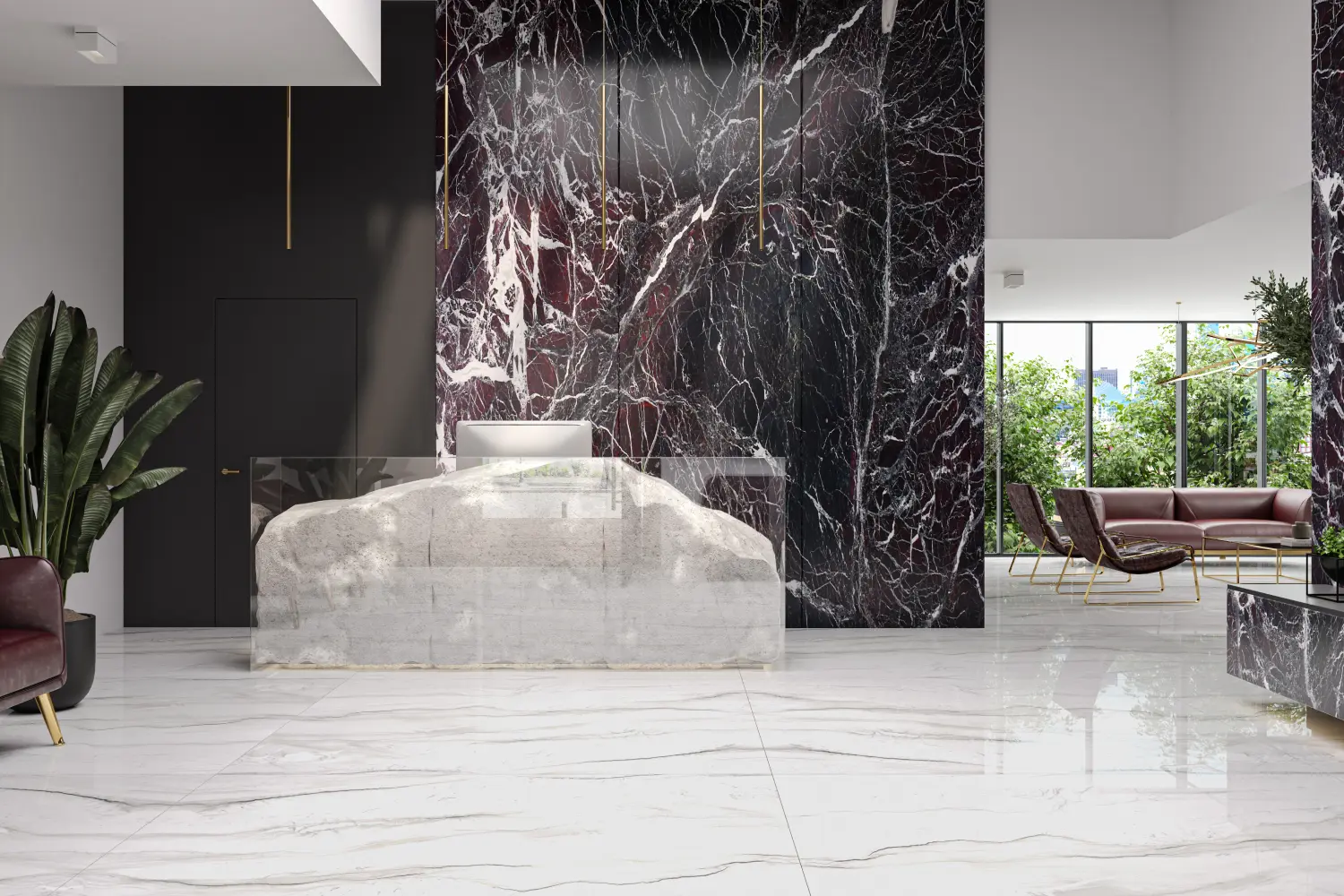
Dark marble: sophistication and elegance for luxurious environments
Marble is a natural stone known for its deep hues and sophisticated veins. It is ideal for design projects that seek sophistication and elegance in high-end environments. Dark-toned marbles are a classic option and stand out as a timeless design element. Discover the aesthetic and functional advantages of this type of stone and fall in love with Decolores' top marble patterns! Why choose dark marble for your spaces? Dark-toned marbles are among the most elegant on the market, with many imported from places like Italy, Morocco, and Epha. See all the advantages this type of hue can bring to your projects! 1. Sophistication and elegance Dark marble, such as the classic Nero Marquina, conveys a sense of luxury and refinement. Its deep tone creates a striking contrast with other elements in the space, providing a dramatic and standout look. 2. Energy efficiency Dark marble helps regulate the internal temperature of spaces. Its ability to absorb and retain heat can reduce the need for artificial heating, contributing to more energy-efficient construction. 3. Combination with sustainable materials The growing trend in 2025 is using complementary materials. Dark marble can be paired with recycled wood or other sustainable materials, creating spaces that are both aesthetically pleasing and environmentally responsible. 4. Versatility Dark marble pairs well with various decoration styles, from classic to modern spaces. Therefore, it can be used for countertops, floors, walls, and even decorative elements like tables and wall coverings. 5. Timeless beauty One of the greatest advantages of black marble is its timelessness. Unlike fleeting trends, it offers a charm that never goes out of style. This means your choice not only enhances the space today but for many years to come. Where to use dark marble stone? Interior designers have a wide range of applications for dark marble stone, which can transform any space into a sophisticated environment. Check out the main areas of the home where you can adapt dark marble! Living rooms Marble is an excellent choice for adding refinement to living rooms. It can be used on indoor floors. Additionally, wall coverings or panels made of black marble can add depth to the space, creating a contrast with light-colored furniture and accessories. You can combine it with strategic lighting, such as spotlights and lamps, to highlight the marble's veins. Gourmet kitchens Dark marble is a perfect choice for gourmet kitchens, where sophistication and functionality go hand in hand. One of its key applications is in kitchen countertops, which become the center of attention. Marble not only provides an elegant surface for food preparation but is also durable and easy to clean. In addition to countertops, dining tables or central islands with marble bring a stylish touch. Bathrooms In addition to bathroom countertops, marble can be used for floors. Its durability is a significant benefit in areas prone to getting wet, such as bathrooms. Furthermore, cladding walls with dark marble can transform the bathroom into a personal spa, offering a relaxing and luxurious atmosphere. Fireplaces The textured surface of marble creates a focal point, making the fireplace a standout feature in the living room or other spaces. Using marble for the fireplace surround not only adds aesthetic appeal but also provides a heat-resistant material for exposure to flames. Discover luxurious dark marble patterns Choosing the best marble makes all the difference in creating an exquisite environment. Here at Decolores we treat natural stones with high-quality technologies. Our catalog of natural stones, including marble, quartzites, and granites, combines natural beauty and elegance for various design projects. Check out some of our dark marble patterns! Calacatta Marble Calacatta Paonazzo is an Italian marble featuring a grayish background with vibrant white veins. The dark gray marble, formed through limestone transformation, is highly valued for interior cladding, bringing expressiveness to spaces. Rosso Levanto Marble Rosso Levanto marble, of Italian origin, has a reddish color reminiscent of volcanic strength. Its white veins integrate well with different decor styles, adding sophistication to living rooms, furniture, bathrooms, and more. Sahara Marble Lastly, Sahara Black is another impressive marble due to its black background with striking white lines. Whether in bathrooms or wall claddings, Sahara Black delivers ideal sophistication. Explore the marble catalog from Decolores and discover other patterns that can transform your projects!
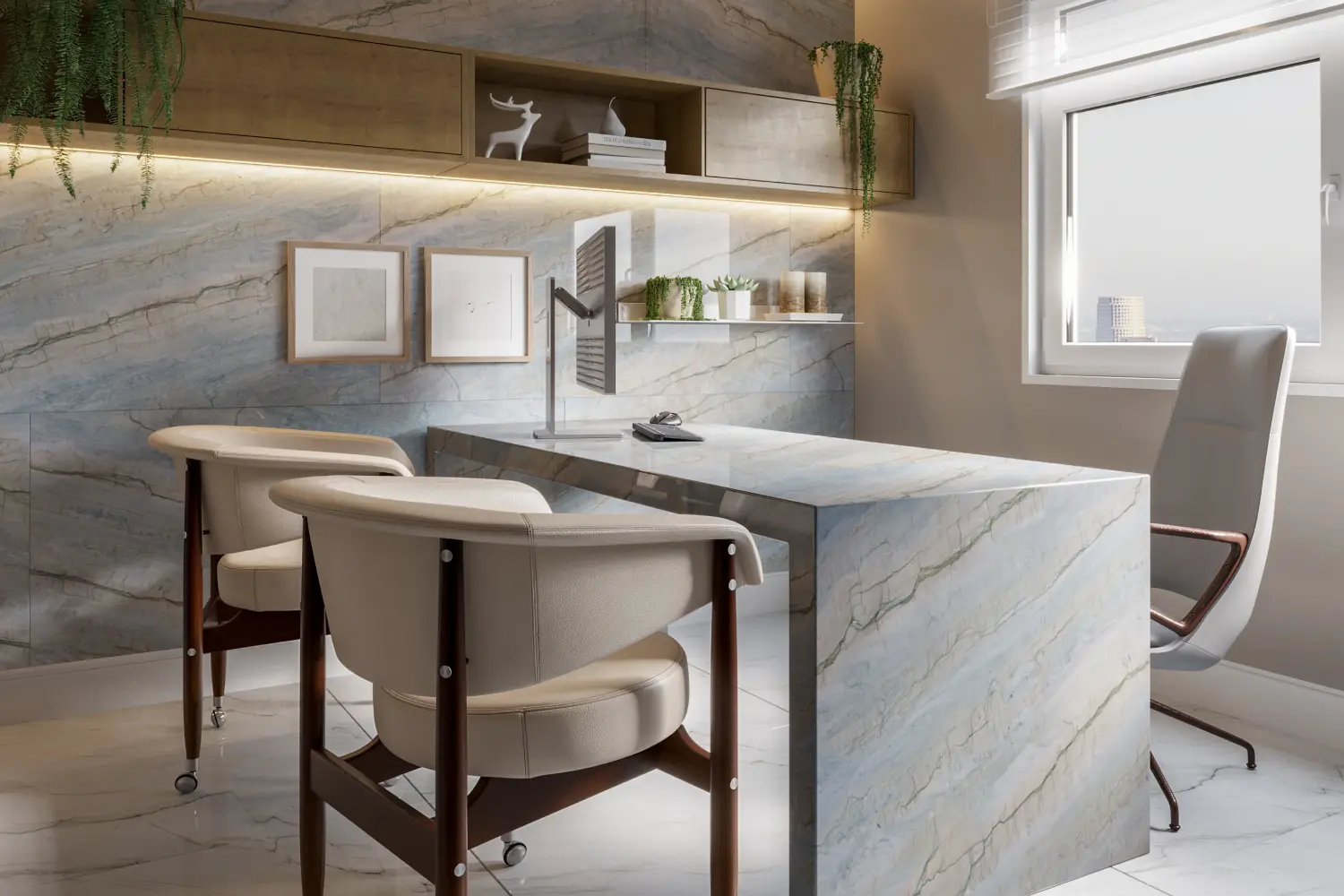
Slim finish: stay on top of this minimalist trend
When it comes to designing modern and sophisticated spaces, the slim finish has stood out, especially for kitchen and bathroom countertops. With its minimalist and elegant aesthetic, it not only pleases the eye but also raises an important question: what are the advantages of this style of finish? Today we will understand how this technique can offer a perfect combination of beauty and functionality with natural stones. What is the slim finish? The slim finish is a trend that stands out for using the natural thickness of the stone, typically with edges of 0.02 to 0.03 cm, as the final finish, without the need for additional layers of material. Also known as "fine finish" or "straight edge," this technique highlights the natural beauty of the stone and allows for quicker installation. This approach creates elegant and modern surfaces, giving a sophisticated and clean aesthetic without the weight and traditional thickness. The slim finish can be applied in various areas, such as: kitchen countertops; dining or office tables; bathroom sinks; wall coverings; shelves and panels. Is a slim finish less durable than the traditional one? Despite its lightweight thickness, the slim finish does not compromise durability. Its resistance is comparable to the traditional finish. The key with this type of application is to maintain proper care and use products like water repellents as recommended by the manufacturer and the technical guidelines provided by the professional working with these materials, such as Decolores products. Natural stones are highly resistant and durable, but like many other elements, they need some basic care to maintain their luxurious appearance. Discover the advantages of the slim finish The slim finish is highly recommended for projects that aim for a minimalist and clean look, where a sleek aesthetic is essential. Furthermore, the slim finish allows for a harmonious integration between different design elements. Check out the advantages that the slim finish can bring to architectural and interior design projects! Clean aesthetic One of the main characteristics of this finish is its minimalist and clean aesthetic. The thin stones create a sophisticated look that adapts to various decoration styles. This visual lightness makes spaces appear more fluid and contemporary. Lightweight and easy integration Quartzite, marble, or granite slabs with a slim finish are lighter than traditional options, making handling easier and adding a modern touch. This finish offers more design flexibility, allowing it to be integrated into different spaces without compromising structure. Lower cost The slim finish can lead to savings in projects. After all, the slim technique uses a smaller amount of material. This eliminates the need for touch-ups and finishing layers, making this finish a more cost-effective option without sacrificing quality and beauty. Slim finish for granite and quartzite countertops The best materials for the slim finish are stones like marble, granite, quartzite, and travertine. These stones, being more resistant and having naturally smooth surfaces, provide incredible results with this technique. At Decolores, you’ll find perfect granite slabs for slim finish kitchen countertops. For example, the Makalu granite offers contemporary aesthetics, practicality, and durability through its dark background with contrasting veins. Whether polished or brushed granite, there are options to adapt to various spaces, from sinks to dining tables. Quartzite also adds elegance to panels, tables, and coverings with a slim finish. Pieces like the Leblon quartzite are ideal for all kinds of projects, including facade and pool cladding. Check out our selection of quartzites and create more stylish spaces!
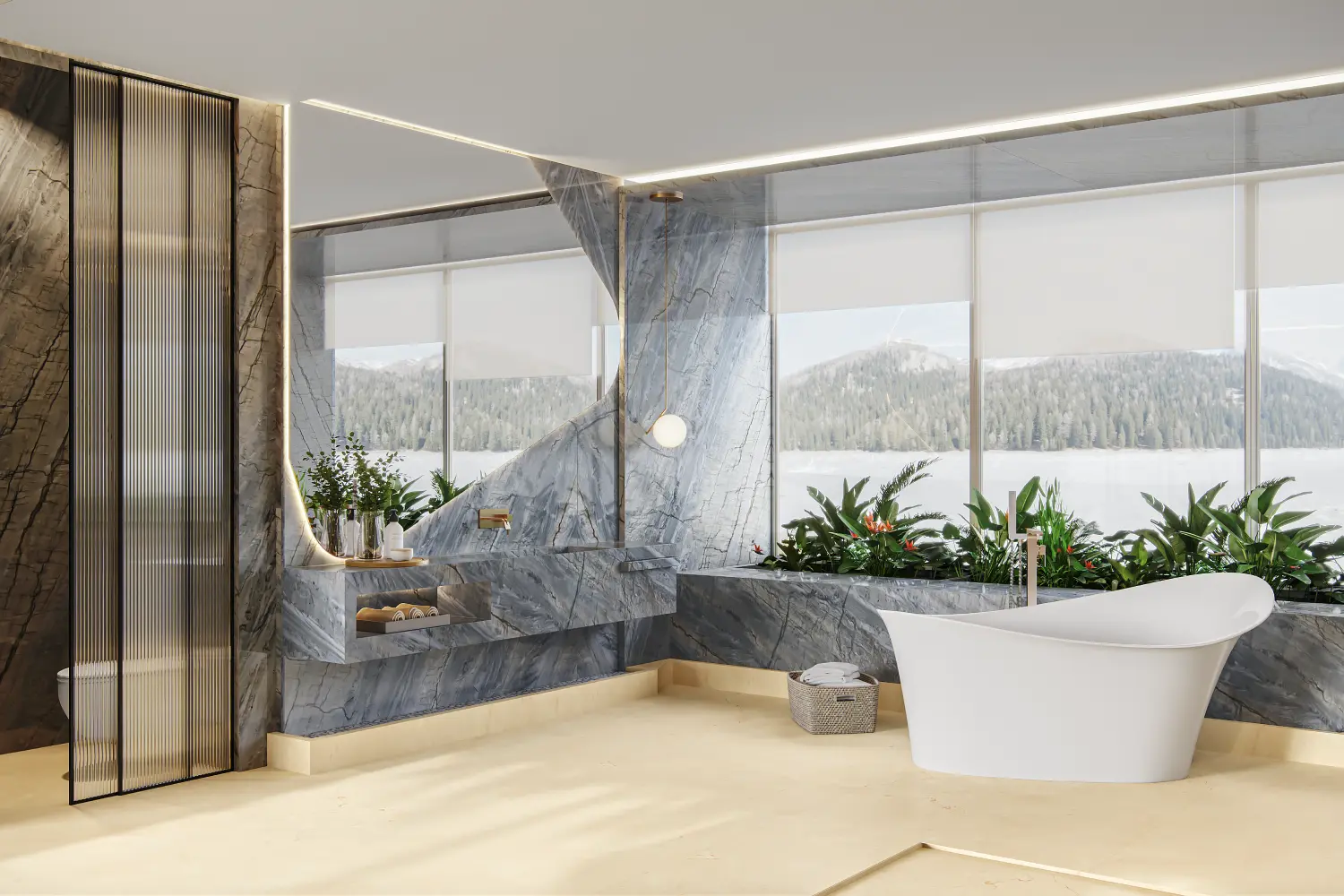
Leblon quartzite: elegance and resistance in interior projects
Quartzite Leblon is one of the most sophisticated and durable natural stones available on the market, making it the ideal choice for architects looking to combine durability and style in interior design projects. With its unique origin and impeccable finish, it offers versatility for various applications and environments without compromising on sophistication. In this blog, we will explore the main features and applications of Quartzite Leblon, highlighting its advantages for interior design projects. Enjoy your reading! The High Durability of Quartzite Leblon Quartzite Leblon is widely recognized for its unique beauty and robust composition. It stands out for its green and bluish tones, generated by minerals such as tourmaline and dumortierite, which give the stone its exclusive look. Additionally, its formation over 1.6 billion years ago, influenced by sea level variations, contributes to its natural resistance. Superior Resistance to Scratches and Impacts One of the most valued characteristics of Quartzite Leblon in interior projects is its resistance. With a score of 7 on the Mohs scale, it is highly resistant to scratches, making it ideal for high-traffic and heavy-use areas such as kitchens and gourmet spaces. Its superior resistance to granite and marble makes it an excellent choice for surfaces exposed to daily wear, maintaining its integrity and beauty for much longer. Unparalleled Durability in Interior Spaces The durability of Quartzite Leblon also makes it a safe and reliable option for flooring and wall cladding in interior spaces. It withstands wear caused by time and continuous use, ensuring that interior projects maintain their sophistication and functionality for years. Furthermore, its resistance to moisture and temperature changes makes it a perfect material for bathrooms and other humid areas. Quartzite Leblon Finishes For architects seeking customization and exclusivity in their projects, Quartzite Leblon offers different finishing options that can completely transform an environment's appearance. Polished Quartzite Leblon: Sophistication and Intense Shine The polished finish is ideal for those looking for an elegant and refined look. Polished Quartzite Leblon features an intense shine that enhances its natural colors and adds a touch of luxury to the space. This finish is perfect for kitchen and bathroom countertops, as well as interior walls, creating a sense of spaciousness and sophistication. Brushed Quartzite Leblon: Soft and Natural Texture For those who prefer a more rustic and cozy finish, brushed Quartzite Leblon is the right choice. With a textured and slightly rough surface, this finish preserves the stone’s natural beauty, offering a more discreet and welcoming touch, combined with an almost matte appearance. It is ideal for floors and gathering areas, bringing elegance without losing natural charm. Honed Quartzite Leblon: Modern and Minimalist Finish The honed finish provides a smooth surface without the intense shine of the polished finish, creating a modern and minimalist effect. This finish is excellent for contemporary projects seeking a balance between sophistication and subtlety. Honed Quartzite Leblon can be used on interior floors and walls, promoting a clean and sophisticated look. Applications of Quartzite Leblon in Interior Projects The versatility of Quartzite Leblon allows it to be used in various applications, always offering durability, resistance, and luxurious aesthetics. Its unique characteristics make it suitable for environments of different styles, from classic to modern. Interior Flooring Interior floors clad with Quartzite Leblon stand out for their resistance and durability. The stone not only withstands heavy foot traffic but also adds a touch of elegance to the space. Its green and bluish tones, combined with different finishes, allow for the creation of refined and unique environments. Interior Walls Walls clad in Quartzite Leblon provide an impressive visual effect. Whether in living rooms, entry halls, or gathering areas, using this stone on interior walls creates an atmosphere of luxury and exclusivity, making it an excellent focal point in the space's design. Kitchen Countertops and Islands For architects seeking highly durable materials for food preparation areas, Quartzite Leblon is an excellent option. In addition to being heat-resistant, it withstands scratches and impacts, making it ideal for kitchen countertops and islands. With a polished finish, you can add a touch of sophistication to the space's functionality. Bathrooms and Humid Areas In bathrooms and humid areas, Quartzite Leblon offers superior resistance to moisture and temperature changes. Its beauty and durability make it perfect for cladding countertops, floors, and walls in environments such as bathrooms and spas, creating spaces that combine functionality and sophistication. Quartzite Leblon: The Perfect Choice for Sophisticated Interior Projects Quartzite Leblon stands out as one of the best options for architects who want to combine elegance, durability, and resistance in their interior design projects. With its natural beauty, various finish options, and high resistance, it transforms any space into a luxurious and functional environment. Whether for floors, walls, countertops, or humid areas, Quartzite Leblon is the ideal choice for creating durable, sophisticated, and personality-filled spaces. At Decolores, we understand the importance of offering high-quality materials for demanding and sophisticated interior projects. We carefully select the best quartzites, such as Quartzite Leblon, so you can create spaces that combine beauty, durability, and style. Our team is ready to assist in choosing the ideal finish and the best application for each project, ensuring unique, high-standard results. Count on Decolores to transform your projects into true works of art!

Casa do Mármore visits Decolores
On December 6 and 7, in partnership with Casa do Mármore, we had the pleasure of welcoming its partners and the winners of the Cristallo Club, an exclusive benefits program for professional specifiers who are partners of Casa do Mármore. During this immersion in the world of natural stone promoted by Decolores, the guests experienced unique moments, exploring each stage of the stone formation, production and processing process. They also had the opportunity to be inspired by the exclusive colors and patterns available in our showroom, enriching their experience and vision of the beauty and versatility of these materials. Watch on Instagram: https://www.instagram.com/reel/DDRy163N7mT/?utm_source=ig_web_button_share_sheet&igsh=MzRlODBiNWFlZA==
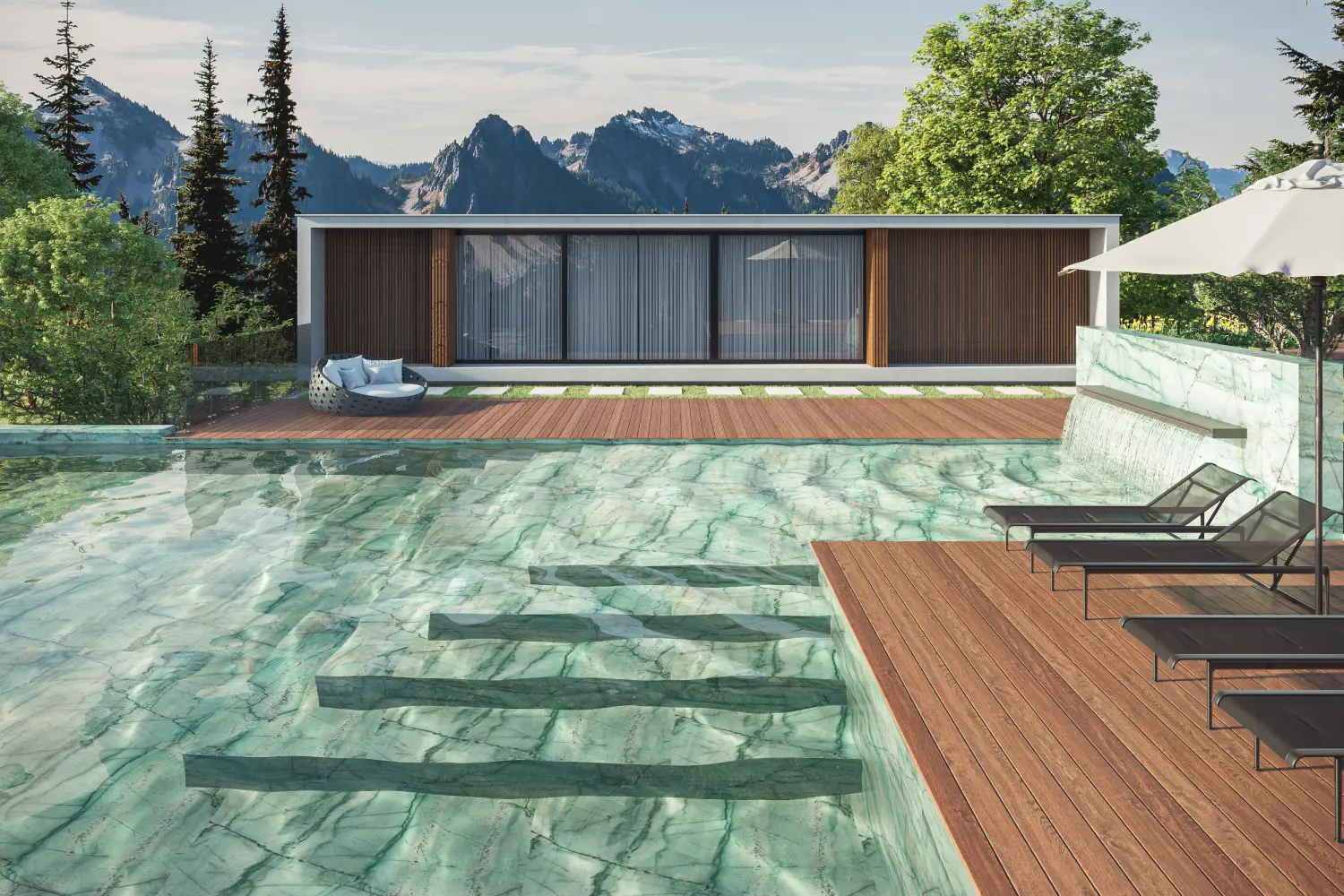
Da Vinci quartzite: how to use it to create environments
Undoubtedly, the choice of materials plays a fundamental role in creating environments that reflect style and sophistication. Among the most fascinating options, Da Vinci quartzite stands out, with its unique look and versatility. Today, we will share tips on how to use it to create captivating spaces, and you’ll see projects where Da Vinci quartzite has transformed ordinary areas. What is Da Vinci Quartzite? Da Vinci quartzite is a natural stone highly valued for its beauty and durability, widely used in architectural and interior design projects. This type of natural stone is composed mainly of quartz grains. Its formation includes relic minerals that, over geological time, have acquired exotic colors, such as its greenish hue. When this rock is subjected to high temperatures and pressures due to movements of the Earth’s crust, metamorphosis occurs. During this process, the quartz grains recrystallize and interconnect, resulting in a very durable stone: quartzite. Discover the Advantages of Da Vinci Quartzite Da Vinci quartzite is an exceptional choice for those looking to combine elegance and durability in interior and exterior design projects. One of its main advantages is its sophisticated aesthetics and unique patterns, with veins that bring a touch of class and modernity to any space. Discover why investing in Da Vinci quartzite is worthwhile! Beauty and Sophistication Da Vinci quartzite is a true gem of nature, standing out for its unparalleled beauty and sophistication. Its luxurious appearance transforms any environment, adding charm to kitchens, bathrooms, living rooms, or outdoor areas. Durability Da Vinci quartzite is known for its durability, especially in terms of water resistance. This makes it an ideal choice for kitchens and bathrooms, where moisture is more frequent. Da Vinci’s dense structure makes it less prone to stains and scratches. Additionally, it is highly resistant to high temperatures, maintaining its beauty and functionality for longer. Low Porosity This low porosity means that quartzite has a low capacity to absorb liquids, making it more impermeable. Additionally, this feature results in lower reactivity to chemicals, making these stones more stable under different conditions of use. Versatility It can be used in various decor styles, from classic to contemporary, adapting to different environments. Transform Spaces: Where to Use Da Vinci Quartzite in Your Projects Da Vinci quartzite is a smart choice to transform any environment, adding elegance and functionality. Whether in residential or commercial projects, its impressive appeal makes it an essential material. Discover how you can use it to create remarkable spaces in architectural projects! Kitchen and Bathroom Countertops In kitchens, Da Vinci quartzite shines as countertops, offering a stunning look and resistance to high temperatures and moisture. Its shine and unique patterns enhance kitchen design, creating an inviting space for family gatherings and friends. In bathrooms, this material excels in vanities and wall coverings. The low porosity of quartzite makes it ideal for damp areas, ensuring durability and easy maintenance. Da Vinci quartzite from Decolores was featured in a commercial architecture project. To make Carol’s office coffee nook more welcoming, quartzite was used on the countertop and backsplash. The material was also applied to the office table top. The combination of quartzite with its intense green tones and golden veins, together with natural wood furniture, created a comfortable and vibrant space. Wall Cladding In indoor spaces, using quartzite on walls can transform living rooms, hallways, and even bedrooms, creating a striking impact. In kitchens and bathrooms, quartzite is ideal for wall cladding, not just for its elegance but also for its durability. In outdoor areas, Da Vinci also stands out, being excellent for cladding facades, balconies, and leisure area walls. Pools and Outdoor Areas Green Da Vinci quartzite is an ideal choice for pools and outdoor areas, combining beauty and functionality exceptionally. Its soft green color, interspersed with golden veins, creates an impressive visual effect that harmonizes perfectly with natural surroundings. Its low porosity prevents water absorption, minimizing the risk of stains and damage from sun and pool chlorine. Da Vinci can be used not only on pool edges but also on decks, barbecue areas, and outdoor wall cladding. At Decolores, we offer a catalog of quartzites that combine natural beauty with elegance in various projects. With over 20 years of experience, we specialize in natural stones processed with advanced technology. Among the highlights of our collection, check out the green Da Vinci quartzite, an ideal choice to combine beauty and functionality.
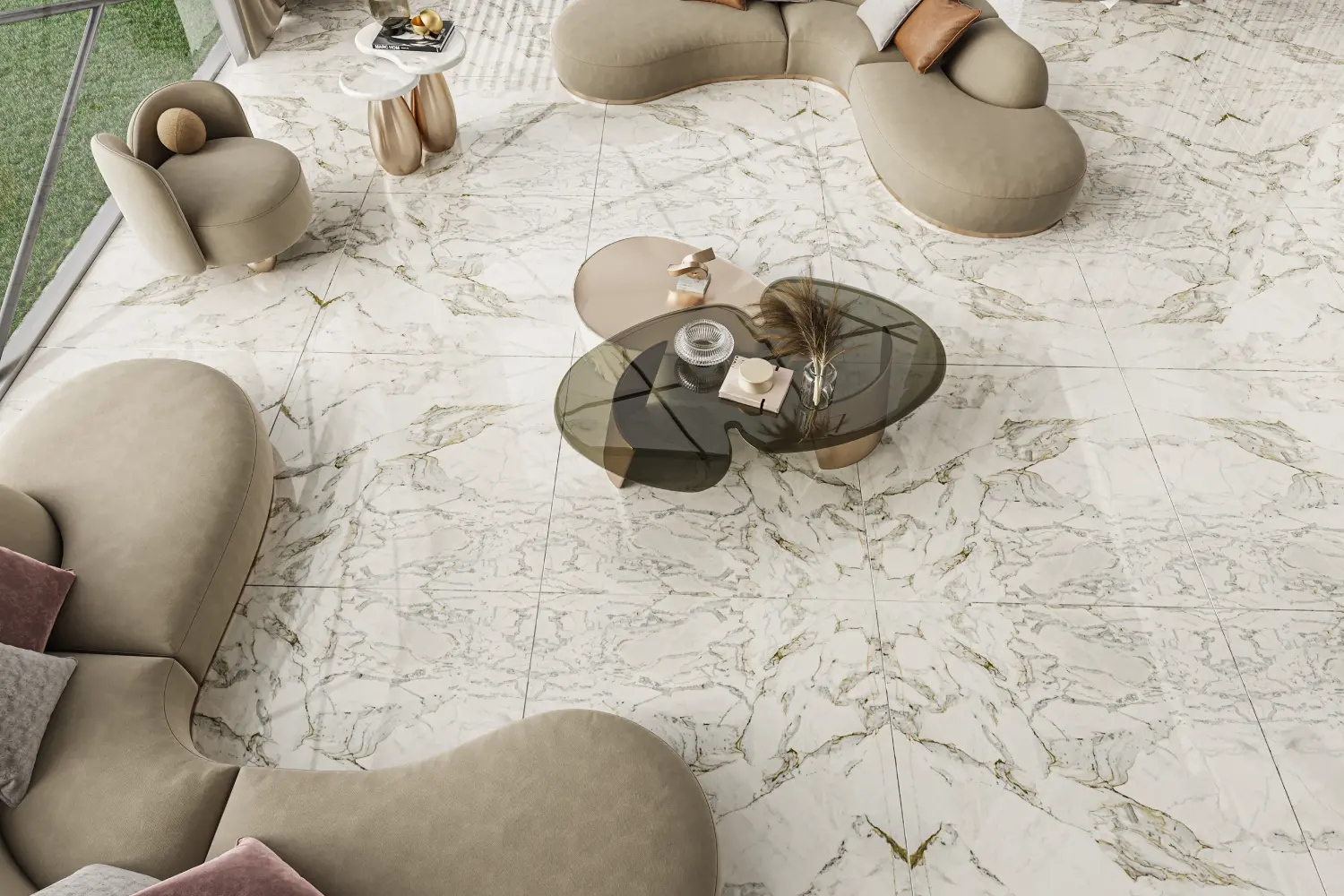
Matarazzo marble: everything about this precious rock
Matarazzo Marble is one of the most desired stones by architects and interior designers, not only for its unique beauty but also for the versatility and sophistication it brings to projects. In this article, we will explore everything about this precious stone: what it is, its origin, how to use it in different environments, the best combinations, and where to find inspiration to integrate it into your decor. If you are an architect or planning a design project, Matarazzo Marble could be the ideal choice to add a touch of elegance and exclusivity. What is Matarazzo Marble? Matarazzo Marble is a natural stone of dolomitic origin, known for its white color with veins in shades of gray and cream. This combination of colors and patterns results in a luxurious aesthetic that stands out in any environment. It is a durable and classic marble, making it an excellent option for interior cladding, countertops, tables, and washbasins. How to use Matarazzo Marble in each environment? Kitchens: Use Matarazzo Marble on countertops and islands. Its surface not only beautifies but also adds refinement and sophistication to the space. Bathrooms: Matarazzo Marble can be applied in washbasins, internal floors, and wall coverings, creating an elegant and contemporary environment. Living rooms: In living areas, Matarazzo Marble can be used on coffee tables, external cladding for fireplaces, or as internal floor cladding, adding a touch of class to the space. The origin of Matarazzo Marble Matarazzo Marble comes from the geological formation where dolomitic marbles outcrop in southern Brazil, formed 1 billion years ago. Originating from the extinct Capiru Sea, shallow and tropical, Matarazzo is the result of the transformation of limestones into dolomitic marbles, reflecting colors and textures that hold the history of ancient life forms. Combinations with Matarazzo Marble With wood: Combining Matarazzo Marble with wooden elements creates a warm and elegant contrast, ideal for spaces seeking a rustic and modern touch. With metals: Adding metallic elements, such as bronze or copper, enhances the marble's sophistication, making it perfect for contemporary kitchens and bathrooms. With other natural stones: Mixing Matarazzo Marble with other types of natural stones can create interesting and sophisticated patterns, allowing you to play with textures and colors. Where to find more inspiration to use Matarazzo Marble in your decor? There are many sources of inspiration for using Matarazzo Marble in decor. Platforms like Pinterest and Instagram are excellent for exploring design projects that incorporate this precious stone. Additionally, visiting showrooms and decoration fairs can provide valuable insights into how Matarazzo Marble is being used in real projects. Be sure to check out the Decolores website, where you can find examples of projects featuring Matarazzo Marble, along with ideas on how to apply it in your creations. Use Matarazzo Marble in your projects If you are an architect or designer, considering Matarazzo Marble in your projects can elevate the level of sophistication and exclusivity. The quality, beauty, and durability of this stone make it a smart choice for any decor project. By integrating Matarazzo Marble, you deliver a high-quality material to your clients, while enhancing the final result with an aesthetic that stands out. To ensure you have access to the best materials, Decolores is the ideal choice to enhance your project. With a diverse portfolio and a rigorous curation of marbles, Decolores offers Matarazzo Marble in excellent finishes, allowing you to select the variant that best suits your application. Additionally, the Decolores team is available to provide technical support and advice on the best practices for application and maintenance, ensuring you and your clients get the most out of the exceptional qualities of Matarazzo Marble. Visit the Decolores website and discover how Matarazzo Marble can transform your projects in a unique way.
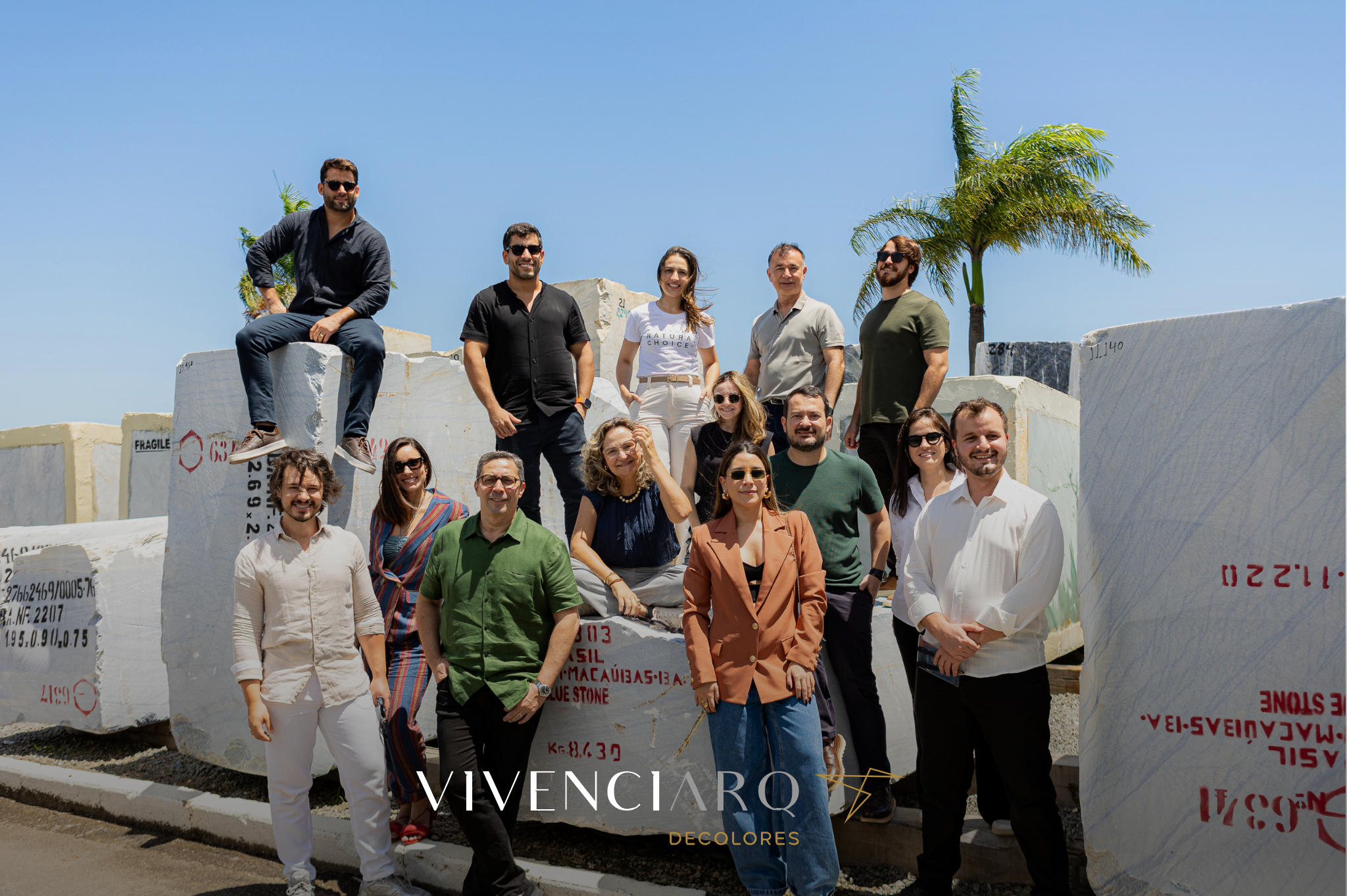
Vivenciarq 2024 11th Edition
Our 11th edition of Vivenciarq in partnership with Polipedras was incredible! An experience full of learning and interaction, where design and architecture professionals from Teresina were able to explore the universe of natural stone in a unique way. The guests learned about the production processes in our industry, took part in tests in the R&D laboratory and interacted in the fascinating Geological Immersion Room, as well as discovering a little more about finishes and applications in our showroom at the Serra Unit. In addition, the presence of Geovani Capelina with his talk on “High standard and luxury, high luxury and ultra luxury: intertwining the universes of fashion and architecture” brought an inspiring and practical approach to the guests. Watch on Instagram: https://www.instagram.com/reel/DCtl84Ztj83/?utm_source=ig_web_copy_link&igsh=MzRlODBiNWFlZA==
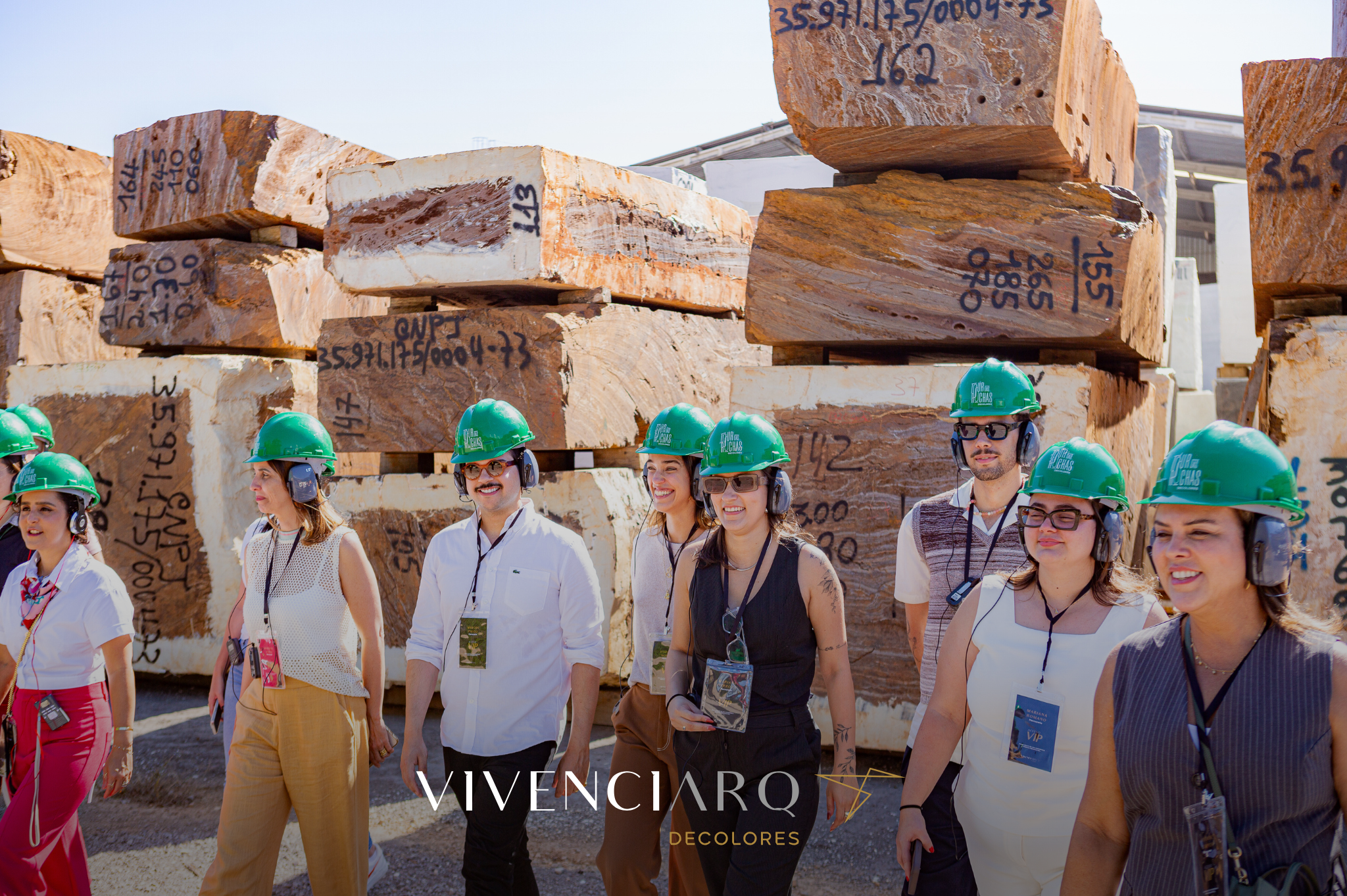
Vivenciarq 2024 10th Edition
In partnership with Marmorarte, we brought together design and architecture professionals from Goiânia for an experience full of knowledge, architecture and experiences! The guests learned about the production processes in the industrial park, tests in the R&D laboratory, and interactivity in the fascinating Geological Immersion Room, as well as discovering a little more about finishes and applications in our showroom at the Serra Unit. To round off the experience, the group took part in a chat with interior designer and specialist in the use of color in projects Tanara Gois, who spoke about “Creative architecture: colors, emotions and practicality in living”. We would like to thank everyone who enjoyed this experience and explored the different possibilities of natural stone. It was a pleasure to welcome you here! Watch on Instagram: https://www.instagram.com/reel/DCrBQLouWFM/?utm_source=ig_web_copy_link&igsh=MzRlODBiNWFlZA==
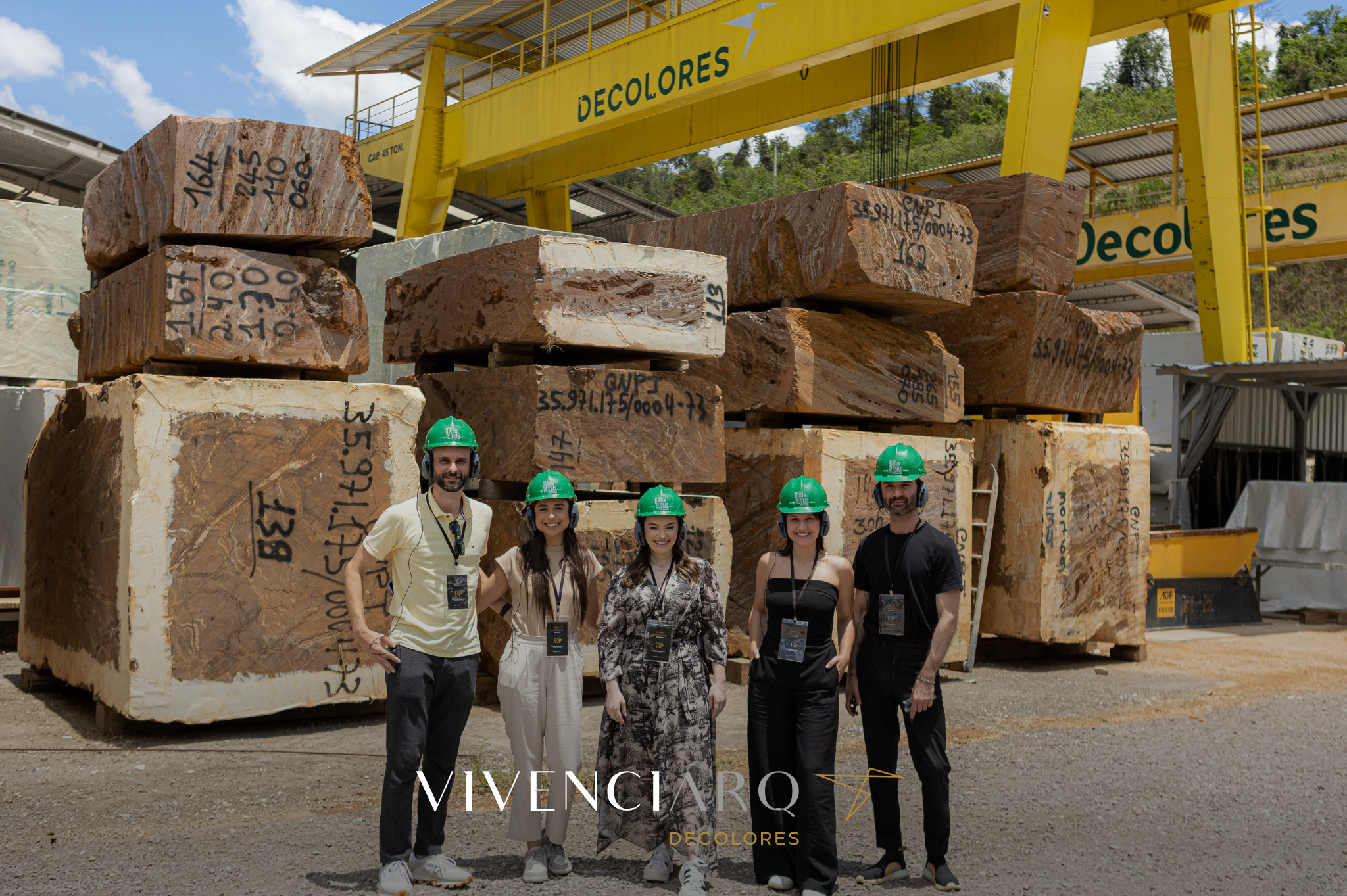
Vivenciarq 2024 9th Edition
A true immersion in the world of natural stone marked the 9th edition of Vivenciarq, held in partnership with @promarmooficial and guest architects from Porto Alegre. During the program, visitors learned about our manufacturing processes and the geological formation of stones through the Rock Tour, deepened their knowledge in the Geological Immersion Room and took the opportunity to get to know the cuisine of Espírito Santo. In addition, the guests took part in an art workshop with @castro_studio, specialists in handmade paintings, with authentic and exclusive creations. We would like to thank everyone who enjoyed this experience with us and made these days even more incredible. Watch on Instagram: https://www.instagram.com/reel/DCJuZH2ISk7/?utm_source=ig_web_copy_link&igsh=MzRlODBiNWFlZA==

Marble in interior design: trends for architects
Marble, with its timeless beauty and sophistication, continues to be a classic among architects and interior designers. In 2024, the use of marble in interior design continues to expand into new frontiers, combining tradition with innovation and opening space for even bolder and more impactful creations. In this article, we will explore the key trends shaping marble in interior design for the coming year, while also showcasing exclusive Decolores products that bring value and a unique identity to projects. Happy reading! Innovative Marble Trends for 2024 Let's explore some of the key trends shaping the future of marble in architecture: Exploring Colors and Textures Today, marble is embracing a range of vibrant colors and innovative textures, in addition to the classic, timeless patterns. Soft shades of white and gray continue to be popular, but marbles in burgundy, veined, and even rosy tones are redefining luxury in modern interiors. These colors not only add depth and character to spaces but also allow for a richer, more sophisticated customization. Decolores Suggestion: The Rosso Levanto, with its deep red hue and striking veins, is perfect for creating a rich and immersive atmosphere, standing out in spaces that require a bold, exclusive touch. Integration of Diverse Materials The combination of different materials in interior design is a trend that will continue to grow over the years. Marble, when combined with elements like wood, metal, glass, and even concrete, creates a contrast of textures that takes design to new heights. This integration of materials allows for the creation of spaces that are both cozy and sophisticated, blending the natural beauty of marble with the modernity of other elements. Decolores Suggestion: Imagine a kitchen countertop where Sahara Black meets natural wood details. This combination not only adds a touch of modernity but also creates a cozy and harmonious atmosphere, perfect for contemporary kitchens. Geometric Patterns and Abstract Art in Marble Marble is no longer limited to its natural forms. Today, the trend is to use geometric cuts and abstract patterns to create unique, custom designs. This approach transforms marble into a true work of art, perfect for those seeking originality and sophistication in their projects. From floors to accent walls, marble can be crafted in ways that reflect a bold, contemporary aesthetic. Decolores Suggestion: The Calacatta Paonazzo, with its intense gray veins, is perfect for creating geometric mosaics or decorative panels that become the focal point of any space. Elegant Color Palettes When designing spaces, selecting a color palette that complements marble is essential to enhance its natural beauty. And In 2025, neutral palettes will remain popular, but combined with deep, vibrant accents. Marble, with its unique tones, becomes the link that ties all colors in the space together, creating elegant and harmonious environments. Decolores Suggestion: The Calacatta Fabbricotti with its white base and subtle veins, is the perfect choice for those seeking a clean, sophisticated atmosphere. When paired with soft grays and golden accents, it creates a timeless and luxurious space. Sustainability With the increasing demand for sustainable practices, the use of natural products is gaining momentum. Additionally, technological advancements are allowing for the production of marbles with innovative properties, ensuring better resistance and durability when applied to projects. These innovations not only help preserve the environment but also provide practical and long-lasting solutions for interior design. Decolores Suggestion: While Decolores focuses on the authenticity of natural marble, products like Statuario offer exceptional durability, combining classic beauty with modern functionality, perfect for spaces requiring sophistication and easy maintenance. Inspiring Decolores Marble Projects Each marble has unique characteristics that can be explored to create unforgettable spaces. Here are some suggestions for using Decolores products to inspire your next projects: Carrara: Use this classic marble for large area floors or accent walls, combining it with contemporary elements for an interesting contrast between traditional and modern. Crema Marfil: Perfect for creating cozy, sophisticated environments, this marble is ideal for fireplace cladding or as a base for combinations with dark wood. Nero Marquina: Excellent for contrasting details in kitchens and bathrooms, creating a dramatic and elegant environment with its black background and white veins. Van Gogh: Use it for countertops or coffee tables to create a focal point that combines art and functionality, standing out in any space. How to Follow the Trends? Marble, with its versatility and natural beauty, remains a sophisticated and timeless choice for interior design. In 2025, trends point to a movement toward bold combinations of colors, textures, and materials, as well as the incorporation of technological innovations that further elevate the potential of this material. With exclusive Decolores options, you can create projects that not only follow the trends but also set new standards of excellence and sophistication. Explore the possibilities and let marble be the centerpiece of your next architectural creations.

6 ways to apply biophilic design in interiors
In an increasingly urbanized world, people are distancing themselves from nature. Biophilic design emerges as a response to this reality, proposing a reconnection with the natural world through the incorporation of organic and sensory elements in built spaces. Discover how to apply this trend in your projects and create environments that inspire, welcome, and promote health. More than a mere aesthetic trend, biophilic design seeks to restore the fundamental bond between humans and nature, recognizing the profound influence that the environment has on physical and mental well-being. The intrinsic beauty of natural materials, such as quartzite, marble, granite, and plants, comes to life in projects that celebrate nature. What is Biophilic Design? The term "biophilia" originates from Greek, combining the words "bio" (life) and "philia" (love), and refers to our innate connection with nature. The concept was popularized by biologist Edward O. Wilson, who argues that human affinity for the natural world is the result of millions of years of evolution in natural environments. Biophilic design, therefore, seeks to satisfy this human need for connection with nature, incorporating natural elements such as plants, water, and rocks into built spaces, creating environments that promote physical and mental well-being. How to apply biophilic design in architectural projects? The application of biophilic design goes beyond the simple insertion of plants into a space. It requires considering various aspects to create a complete sensory experience and promote a genuine connection with nature. Here are six effective strategies: 1. Promote engagement with nature Create spaces that enable a visual and physical connection with natural elements. Large windows framing the exterior landscape, vertical gardens bringing greenery indoors, and balconies inviting moments of contemplation are just a few ways to integrate nature into the design. 2. Use solutions that promote health and well-being Ensure fresh air circulation in environments by using appropriate windows, openings, and ventilation systems. Fountains, water mirrors, and aquariums provide relaxation and help humidify the air. 3. Stimulate the sense of belonging The use of elements that evoke nature, such as the texture of wood and rocks, the organic shapes, and the presence of water, evokes a sense of comfort and familiarity, creating a warm and inviting atmosphere. Reading nooks, indoor gardens, or balconies can also bring this sense of tranquility. 4. Provide connections with other natural elements and human interactions Design spaces that invite social interaction, such as lounges, rest areas, and shared dining spaces. Shared work tables, whiteboards, and presentation areas can encourage idea exchange and teamwork. Additionally, invest in creating spaces that allow interaction with other natural elements, such as natural rocks and indoor gardens, which stimulate biodiversity and enrich the sensory experience of inhabitants. 5. Apply integrated ecological solutions Take advantage of the environment to implement sustainable solutions that save electricity and water. By incorporating large windows or glass doors, you bring natural light into the space. Also, incorporate sustainable technologies, such as rainwater harvesting systems, demonstrating a commitment to environmental preservation. 6. Ensure stimulation of the five senses Vision, smell, hearing, touch, and taste. Biophilic architecture is concerned with awakening all senses through the environment. Use textures, aromas, sounds, and colors that evoke pleasant sensations, creating a harmonious and revitalizing environment. Applying Biophilic Design in projects Decolores, with its expertise in natural stones, offers a wide range of materials that harmonize perfectly with biophilic design. Quartzites, granites, marbles, and other natural stones, with their unique colors, textures, and patterns, bring the beauty and strength of nature into spaces, creating environments that inspire, welcome, and promote well-being. By incorporating biophilic architecture into your projects, you create spaces that not only delight the eye but also nourish the soul, providing a complete sensory experience and a deep connection with the natural world. Check out our catalog of stones natural and discover how our materials can transform your projects into true refuges of well-being and sustainability.

Exotic granites: know how to combine colors and textures
Exotic granites have increasingly gained space in decoration and architecture projects, bringing a touch of sophistication and originality to environments. With their vibrant colors and unique textures, these materials offer countless combination possibilities, allowing each space to tell a unique story. In this article, we will explore what exotic granites are, their characteristics, how to combine them with other materials and their advantages, as well as show why you should consider them for your next project. Exotic Granites and Their General Characteristics Exotic granites are natural stones that stand out for their diversity of colors and patterns. Unlike traditional granites, which typically feature more neutral tones, exotic granites have striking veins and vibrant colors such as blues, greens, and reds. In addition to their impressive aesthetics, these granites are highly durable and resistant to scratches and high temperatures, making them ideal for countertops, floors, and coverings. Understanding the Patterns and Combinations of Exotic Granites Combining requires a careful eye for their colors and patterns; for bolder environments, mixing different exotic granites can create a dynamic look. On the other hand, if the goal is to highlight a specific exotic granite, complementing it with more neutral materials, such as white or gray marble, can enhance its beauty. Furthermore, using contrasting textures, such as rustic woods or smooth surfaces, can create an interesting balance, enriching the design of the space. What Complementary Materials Can I Use with Exotic Granites? When working with exotic granites, it is essential to choose complementary materials that harmonize with their aesthetics. Materials such as wood, stainless steel, and ceramics in neutral tones work well, creating an appealing contrast. The use of other natural stones can also be a good option, further elevating the environment. Additionally, metal accessories, such as lamps and handles, can accentuate the vibrant colors of the granites. The use of plants and natural elements also brings freshness and softness to the environment, balancing the robustness of exotic granites. Advantages of Exotic Granites Choosing exotic granites brings a number of advantages that can transform the aesthetics and functionality of your spaces. Among the main benefits, the following stand out: Durability and resistance; Ease of maintenance and cleaning; Exclusivity and high added value, enhancing not only the aesthetics of your space but also increasing your property’s value. These advantages make exotic granites a superior choice for those seeking functionality and durability in their interior and exterior design projects. Where to Acquire Exotic Granites? If you are ready to take a bold step in your project, Decolores offers a wide range of exotic granites that meet all styles and preferences. Visit our website to explore our options and find the perfect granite for your space. Transform your project with the granites from Decolores and stand out for originality and elegance.

What is the difference between quartz and quartzite? Find out here!
When planning the decoration or construction of a space, choosing the right material is essential to ensure beauty and functionality, and it is also one of the most enjoyable parts of any project. Among the available options, quartz and quartzite stand out, but many people still have questions about their differences and applications. In this article, we will explain the difference between quartz and quartzite, so you can make an informed decision for your projects. Get to know the rocks and understand the difference between Quartz and Quartzite Quartz and quartzite are often confused. While quartz is a mineral, quartzite is a natural rock formed from the compaction and cementation of these minerals along with some other elements. What is quartz? To elaborate further, quartz is an abundant mineral in the Earth's crust, formed from silicon and oxygen. It comes in various colors and shapes. During its formation, it can also incorporate different elements within its crystal structure, creating distinct colors and characteristics. Some companies manufacture what are called "quartz surfaces," using quartz as the main raw material, along with other elements. These pieces are typically produced on a large scale and have standardized textures to resemble patterns found in certain types of natural stones. What is quartzite? Quartzite, on the other hand, is a rock that forms naturally through the metamorphic action resulting from the transformation of sandstone through pressure and heat. It contains over 75% quartz mineral, combined with some other minerals, which gives this type of material high hardness and resistance to scratches and stains. Quartzites have unique and original movement patterns, and can be found in a wide range of colors, including shades of gray, white, pink, and even blue, highlighting their beauty and sophistication. This distinction is key to understanding why quartzites are becoming increasingly popular worldwide. Advantages of quartzite Choosing quartzite offers several advantages: Durability: quartzite is extremely resistant to scratches, heat, and impacts, making it an ideal choice for high-traffic areas and work surfaces. Aesthetics: with its unique appearance and variety of colors, quartzite can add a touch of sophistication to any space, making it perfect for interior and exterior design projects. Low maintenance: for daily care, just water and a mild detergent are sufficient to preserve the quality and beauty of the material. For semi-annual or annual maintenance, applying water repellents is recommended, according to the manufacturer's guidelines. Versatility: it can be used in a variety of applications, from countertops and floors to accent walls, adapting to different decor styles. Where to purchase quartzites? When deciding to incorporate quartzites into your project, it is essential to choose a reliable supplier that offers not only high-quality products but also excellent customer service. Decolores stands out as a reference in the market, offering a wide range of quartzites that cater to different styles and needs. The company provides a variety of quartzite options, along with a strong commitment to the quality of its products. Each piece is carefully selected and tested to ensure it meets the highest standards of durability and aesthetics. This means that by choosing Decolores, you are investing in materials that not only beautify a space but also ensure longevity and resilience.

Aurora Marble: natural stone for your projects.
The dolomitic marble Aurora has increasingly gained space in the construction and decoration market, being known for its unique beauty and versatility. With its unique nuances and patterns, this rock not only beautifies environments but also offers a series of benefits that make it ideal for various projects. In this article, we will explore marble Aurora, its advantages, combinations, cleaning care, and where to buy it. What is the formation history of marble Aurora? Marble Aurora is a type of natural rock that has undergone specific metamorphic processes and contains the mineral dolomite in large proportions, classifying it as dolomitic marble. Its coloration varies between light tones and fluid veins, creating a striking visual effect that can be found in different finishes. With lasting beauty and a modern look, Aurora is ideal for applications in floors, wall coverings, and work surfaces, such as countertops and tables. Benefits and advantages of using marble Aurora Choosing marble Aurora brings a series of benefits: Aesthetic appeal: the unique nuances and patterns of Marble Aurora add a touch of sophistication to any space, elevating the design of the environment. 100% natural: marble Aurora is a natural rock, preserving all the beauty and originality of nature in every detail, making it a unique material. Versatility: it can be used in various projects, from residential to commercial, in floors, walls, countertops, and decorative details. Combinations to make with marble Aurora When using marble Aurora in decoration projects, choosing complementary materials is essential. Here are some effective combinations: With woods: mixing Marble Aurora with wooden elements creates a warm and cozy contrast, ideal for living rooms and social areas. With metals: adding stainless steel or copper finishes can highlight the elegance of Marble Aurora, making it an excellent choice for modern kitchens. With neutral colors: for a cleaner look, combine marble Aurora with neutral tones on walls and furniture, allowing the stone to stand out. These combinations not only enhance the beauty of marble Aurora but also create a harmonious and balanced environment. Cleaning marble Aurora The cleaning and maintenance of Marble Aurora are simple but require attention. Here are some tips: Daily cleaning: use a soft, damp cloth to remove dust and dirt. Avoid abrasive chemical products that may damage the surface. Stains: for more persistent stains, a solution of warm water and neutral detergent can be used. Never use acidic products, such as vinegar or lemon, as they can corrode the marble surface. Sealing: it is recommended to apply a specific marble sealant every six months to a year, depending on use, to protect the stone and maintain its shine. Extra care: natural stones are sophisticated options that bring elegance to various civil construction and interior design projects. To keep this material preserved and stain-resistant, pay attention to using a water repellent, an essential process to keep your natural stone protected. Where to buy the best marble Aurora If you are looking for quality marble Aurora for your project, Decolores offers a premium selection of marbles. With a commitment to quality and customer service, you can find the ideal marble for your needs. Enjoy the unique characteristics of marble Aurora combined with the excellence of Decolores and browse our website to discover the variety of options we have for you.

Deconstructivist architecture: what is it and what are its characteristics?
Deconstructivist architecture is a style that challenges traditional design and construction norms, offering a new perspective on how spaces can be shaped and perceived. Characterized by fragmented forms and dynamic structures, deconstructivist architecture not only redefines architectural aesthetics but also the experience of space. In this article, we will explore what deconstructivist architecture is, its main characteristics, some prominent architects and how you can be inspired by this innovative style in your projects. What is Deconstructivist Architecture and How Did the Style Emerge? Deconstructivist architecture emerged in the 1980s, influenced by the philosophical movement of deconstruction, associated with the French philosopher Jacques Derrida. This style is characterized by a non-linear approach, where forms and spaces do not follow traditional norms of symmetry and order. Instead, deconstructivist architecture seeks to create a sense of movement and complexity, leading observers to question the relationship between space and form. One of the early landmarks of this movement was the construction of the Guggenheim Museum in Bilbao, designed by Frank Gehry, which exemplifies the break with architectural conventions and the pursuit of fluid and unconventional forms. Deconstructivism is not limited to a specific aesthetic; instead, it is a philosophy that proposes a new way of thinking and designing, reflecting the complexity of modern life. Meet Some of the Leading Deconstructivist Architects and Their Projects Deconstructivism is a movement that gave voice to a new generation of architects, challenging norms and creating works that stand out beyond aesthetics, drawing attention for their ability to evoke emotions and reflections. These professionals used their creativity to explore new forms and spaces, resulting in iconic projects that transformed the global architectural landscape. Below are some of the leading names in deconstructivism and their most notable works. 1. Zaha Hadid Zaha Hadid was one of the most influential architects of the deconstructivist movement. Her work is characterized by fluid and organic forms that seem to defy the laws of gravity. Notable projects include the London Aquatics Centre and the Museum of 21st Century Science, both exemplifying her ability to integrate space and form in an innovative way. 2. Frank Gehry Frank Gehry is one of the icons of deconstructivist architecture, known for his structures that combine irregular geometry and unconventional materials. The Guggenheim Museum in Bilbao is one of his most famous projects, where the metallic forms and bold design became a symbol of contemporary architecture. 3. Daniel Libeskind Daniel Libeskind is recognized for his work that provokes reflection and emotion. The Jewish Museum in Berlin is an example of how architecture can tell a story and express collective memories. Its fragmented and angular design evokes a sense of disorientation, inviting visitors to explore the narrative behind the structure. 4. Peter Eisenman Peter Eisenman is one of the pioneers of deconstructivist architecture, and his work often addresses themes of deconstruction and complexity. The Holocaust Memorial in Berlin, designed by Eisenman, is a space that uses geometric forms to create a unique experience, reflecting memory and the loss of lives. How to Find Inspiration in Deconstructivism for Your Projects To incorporate elements of deconstructivist architecture into your own projects, start by exploring unconventional forms and breaks in symmetry. Think about how you can create a sense of movement within the space, using innovative materials and construction techniques that challenge traditional expectations. Experiment with integrating different levels, angles, and textures to create a dynamic environment that encourages interaction and exploration. Additionally, the use of advanced technologies, such as 3D modeling and 3D printing, can help bring your deconstructivist ideas to life, allowing you to experiment with new forms and structures efficiently. Look for references in the works of deconstructivist architects and do not be afraid to break established rules. Redefine Spaces with Deconstructivism Deconstructivist architecture offers a new way to see and understand the built space, challenging traditional conventions and promoting complexity and fluidity. With innovative architects leading the way, this style continues to inspire and influence projects around the world. By exploring the characteristics and philosophies of deconstructivist architecture, you can integrate elements of this approach into your own projects, creating spaces with impactful visuals that also emanate a sense of discovery and interaction. If you are planning to incorporate quartzites into your deconstructivist projects, discover the available options at Decolores.
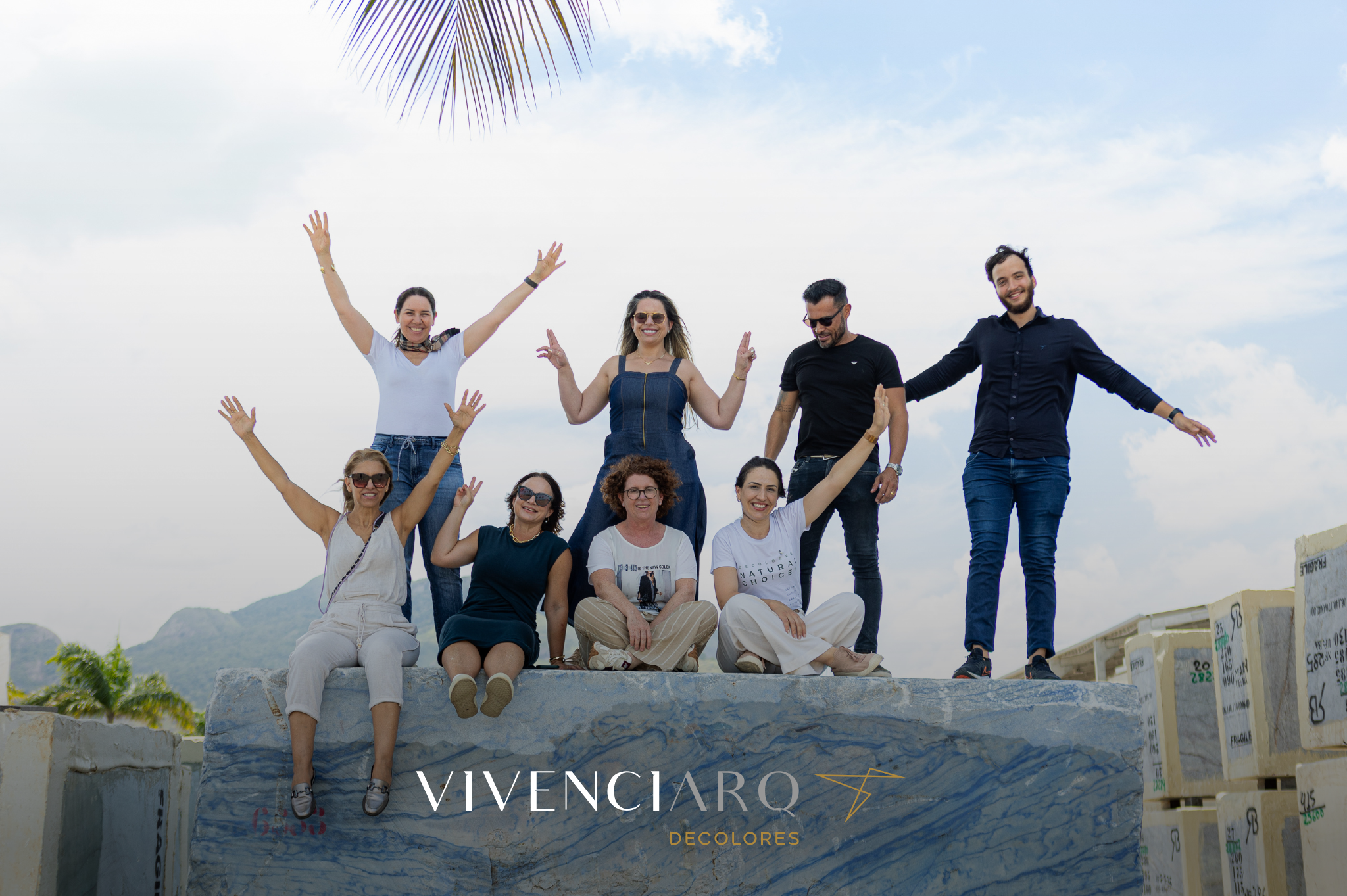
Vivenciarq 2024 8th Edition
This week saw the conclusion of another enriching edition of the program, this time in partnership with @marmorariamourao, from Brasilia, and its guest architects. Over two intense days, they had the opportunity to learn about production processes, as well as explore application possibilities and find out more about the formation of our products. On the first day, the visit included our industrial park, tests in the R&D laboratory and interactivity in the Geological Immersion Room. The following day, the highlight was the inspiring showroom in Serra, closing the immersion cycle with a chat with architect and communicator @renata_decor, on the subject of “Macrotrends and trends in design and architecture - bets for 2025”. We would like to thank everyone for taking part in this incredible journey in which we shared our passion for the world of natural stone. Véalo en Instagram: https://www.instagram.com/reel/DBjp_HrtkQw/?utm_source=ig_web_copy_link&igsh=MzRlODBiNWFlZA==

Power of color psychology in your decorations
Colors play a fundamental role in how we perceive the environments around us. They can influence our mood, behavior, and even our sense of well-being. The psychology of colors studies how different shades impact our emotions and perceptions, making it a powerful tool in interior decoration. When combined with natural elements such as fibers, plants, and natural stones, colors can transform any space into a welcoming, relaxing, or energizing environment. In this blog, we will explore the impacts of colors in decorating spaces with natural elements and how to use them to create a harmonious sensory experience. Happy reading! What are the impacts of colors in environments with natural elements according to color psychology? When it comes to interior decoration, colors are essential for creating the desired mood and atmosphere. The choice of color palette, combined with the use of natural elements such as plants, fibers, and stones, can directly influence the sense of comfort, relaxation, or energy that the environment conveys. Next, we will explore the impact of different colors in decoration and how they can be combined with natural elements to maximize the desired effect. Green Green is the color of nature, representing renewal, growth, and harmony. In decoration, it is ideal for creating environments that convey calm and tranquility. When combined with natural elements like plants or fibers, green can bring freshness and a sense of well-being. It is particularly effective in living rooms, bedrooms, and offices, where it promotes relaxation and concentration. Orange Orange is a vibrant color that symbolizes energy, creativity, and enthusiasm. It is perfect for spaces that seek to encourage socialization and creativity, such as kitchens and gathering areas. When used alongside natural elements like stones or wood, orange can add a touch of warmth and coziness to the environment. Yellow Associated with optimism, joy, and brightness, the color yellow can light up any space and is ideal for environments that seek a stimulating atmosphere. Yellow is commonly used in kitchens and dining rooms, bringing a touch of liveliness and joy. In combination with natural stones and fibers, yellow provides a harmonious contrast, enriching the environment. Black The color black is synonymous with sophistication, elegance, and modernity. Although it is a darker and more dramatic color, black can create an extremely refined look when used in balance. In decorations with natural elements like marble or granite, black offers a sophisticated and contemporary contrast, especially in spaces like living rooms and kitchens. Blue Blue is known for its calming and relaxing properties. It conveys serenity, peace, and confidence, being widely used in bedrooms and bathrooms. When combined with natural elements like stones and plants, blue can evoke the tranquility of the sea and sky, creating a relaxing and invigorating environment. Gray Gray is a neutral color that symbolizes balance, sophistication, and serenity. It is a versatile color that pairs well with almost all other colors, making it ideal for creating a modern and elegant environment. The use of natural elements like stones and wood with gray tones can reinforce the feeling of harmony and balance. White White is associated with purity, cleanliness, and simplicity. It is a timeless color that enhances the feeling of space and light. When combined with natural elements like fibers and light stones, white brings a sense of freshness and tranquility, ideal for minimalist and modern environments. Red Red is an intense color that represents passion, energy, and dynamism. When used sparingly, it can add a touch of boldness and vitality to any environment. Red in decoration with natural elements like stones and plants can create a striking contrast, especially in gathering areas or dining rooms. Pink Pink is associated with romance, delicacy, and serenity. It is a color that can convey softness and warmth, making it perfect for bedrooms and relaxation areas. Combined with natural elements like fibers and wood, pink can create a delicate and harmonious environment. How to use natural elements in decorations according to color psychology? Natural elements are key pieces in interior decoration, especially when combined with color psychology. Natural fibers, plants, and stones can bring balance, tranquility, and a deeper connection to nature. Next, check out how to incorporate these elements into your projects! Natural Stones Natural stones such as quartzites, marble, granite, and travertine are excellent options for adding sophistication and durability to spaces. Each type of stone has its own color and texture characteristics that can be used to complement the chosen color palette. From classic and timeless tones to bold and vibrant patterns, stones have gained increasing prominence and value when integrated into architectural environments or as part of space decoration. Fibers Natural fibers like wicker, sisal, and cotton are ideal for adding an organic and warm texture to environments. They complement the color palette, especially shades of green, white, and gray, providing a rustic and cozy look. Fibers can be used in furniture, rugs, curtains, and baskets, bringing a sense of comfort and well-being. Plants Plants are fundamental in interior decoration and play a crucial role in color psychology. They not only add color to the environment but also purify the air and bring a touch of nature indoors. Green plants pair well with neutral tones, while flowering plants can be used to highlight or complement other colors in the space. Discover Decolores Decolores is a reference in natural coverings, offering a wide range of materials such as marble, granite, quartzites, and travertine that perfectly match any color palette and decor style. If you want to transform your environment using color psychology and natural elements, Decolores is the ideal choice for projects seeking sophistication and timeless beauty.

Modern Architecture: what it is, how it emerged and main characteristics
Modern architecture is not just an architectural style but a philosophy that inspires solutions that respect the essence of human beings and the environment. For architects and designers, understanding modern architecture is essential for buildings to enhance the human experience in these environments. Learn more about what modern architecture is, the importance of modernism in architecture, and how to apply the style in various project environments! What is modern architecture? Modern architecture is a movement that emerged in the early 20th century, seeking a new aesthetic language, breaking with past traditions. Its fundamental principle is the idea that "form follows function", meaning that each element must have a clear purpose for practical spaces. The modernist aesthetic is characterized by clean lines and simple forms, seeking minimalism. Projects often feature a neutral color palette, helping to create a balanced environment where natural light is important. History of modern architecture The history of modern architecture began in the late 19th century. Modern architecture developed reflecting social, economic, and technological changes from the Industrial Revolution. In short, this movement seeks to break with previous traditions, such as Baroque and Gothic architecture. Emerging during the Modern Age, an important milestone in modern architecture was the Bauhaus School, founded in Germany in 1919 by Walter Gropius. This school promoted the integration of art and industry, advocating that design should be accessible and functional. Thus, the principles of Bauhaus influenced not only architecture but also interior design, furniture, and even typography, emphasizing the importance of design in everyday life. In Brazil, modern architecture gained strength starting in the 1930s, with iconic names like Oscar Niemeyer, Lúcio Costa, and Affonso Eduardo Reidy. Get to know some of the key figures in modernist architecture: Lúcio Costa was responsible for the planning of Brasília, designing the city as a symbol of modernism, with pure forms and integration with nature. Oscar Niemeyer, famous for his innovative curves, brought unique expressiveness to architecture through works like the National Congress and the Cathedral of Brasília. Affonso Eduardo Reidy contributed to the modernization of urban landscaping in Brazil with projects like the Museum of Modern Art in Rio de Janeiro. In Europe and the United States, another notable architect was Le Corbusier, who advocated for housing as a machine to live in. Additionally, Mies van der Rohe, known for his motto "less is more", reflected the quest for simplicity and purity. Thus, modern architecture evolved, incorporating new technologies to respond to the challenges of sustainability. Characteristics of modern architecture Modern architecture is characterized by a functional approach, new materials, simple forms, and minimalist aesthetics. Le Corbusier, one of the main architects of the modernist movement, formulated the "Five Points of Modern Architecture", which synthesize his ideas. Below, discover some of the key elements of modernism in architecture. 1. Free facade The free facade is a principle that allows freedom in facade design, regardless of the building's internal structure. This means that external walls can be designed without the need for partitions and with maximum opening. 2. Ribbon windows Ribbon windows are long horizontal windows that extend along the walls of the building. This feature aims to provide more natural light in the interior spaces and a uniform aesthetic. 3. Pilotis Pilotis are pillars that elevate the building off the ground, freeing up the space below. This elevation not only provides an open area to create a sense of lightness but also improves ventilation and natural lighting. 4. Roof garden The roof garden brings green space to the building's rooftops, replacing traditional roofs. This landscaping helps compensate for the lack of green areas in urban environments, promoting a stronger connection with nature. 5. Free plan The free plan is a concept that allows for the integration of internal spaces, without the limitations of walls. This provides freedom in organizing environments, allowing them to be adapted to people's needs. With the free plan, it is possible to create more open and interconnected spaces, promoting flexibility and fluidity in environments. Difference between modern architecture and contemporary architecture Modern architecture and contemporary architecture, although often confused, present differences in their principles. The modern style was developed between the 1930s and 1950s, known for its functionality and minimalist aesthetics. However, contemporary architecture emerged from the 1980s to the present day as an eclectic style with various influences. How to apply modern architecture in your projects? To apply modern architecture in architectural projects, it is essential to integrate its principles and innovative materials. Start by prioritizing that each environment be practical for everyday life, with a minimalist style, straight lines, and geometric forms. Use materials such as concrete, glass, and steel, which provide a modern look while allowing for clean shapes. Without a doubt, natural stones are also an excellent choice for modern architecture. For this, use stones with subtle textures and discreet colors that integrate with the overall concept of the space. With a composition rich in quartz, quartzites are natural stones known for their resistance and aesthetic beauty, with a variety of colors and patterns. These characteristics make quartzites a sophisticated choice in modern architecture. After all, their durability is exceptional, quartzites are very resistant to impacts and wear, ideal for high-traffic areas. Additionally, they are easy to clean and can integrate into various environments, such as walls, floors, kitchen and bathroom countertops. To test the application in your projects, you can simulate natural stone patterns in our environment simulator and choose the best aesthetic. At Decolores, we have a selection of quartzites, such as Mont Blanc, which integrate natural beauty and modernity. In addition to elegance and durability, we strive for sustainable production, respecting the environment with advanced technologies. Explore our catalog of Quartzites and transform your projects!

Discover the types of marble and learn how to use them
Marble is one of the most appreciated natural stones in civil construction and interior decoration. With its unique beauty and a wide variety of colors and textures, marble adds sophistication and elegance to any environment. In this article, we will explore the different types of marble, their characteristics, and their uses, as well as evaluate whether it is worth using them in construction projects. Enjoy your reading! Main characteristics of marble Marble is a metamorphic natural rock, which can be divided into calcitic and dolomitic types due to the presence of the minerals calcite and dolomite, respectively. Its main characteristics include: Natural beauty: Its unique veins and varied patterns make marble a popular choice for coatings and decoration. Variety of patterns: Available in various patterns and veins, ranging from classic tones to colorful and striking ones. Versatility: Can be used in different environments, such as floors, walls, panels, countertops, and more. Discover the main types of marble Choosing the right marble can completely transform a space, bringing either a classic and timeless touch or a modern and bold look. Below, we present the main types of marble, their characteristics, and the best ways to use them in your projects. Calcitic Marbles Calcitic marbles are metamorphic rocks formed from limestone, primarily composed of calcium carbonate. They differ from other types of marble by their composition and the metamorphic process they underwent. They are mainly used for wall coverings, floors, stairs, kitchen countertops, tables, and more. Boticcino Marble With a light beige tone and discreet veins, Boticcino marble is known for its sophistication and simplicity. This type of marble is ideal for floors, stairs, bathrooms, and interior walls, creating a classic and cozy environment. Calacatta Marble Calacatta marble is known for its thicker, more striking veins that contrast with its pure white background. It is a luxurious and exclusive option, often used for countertops, floors, and wall coverings in bathrooms and kitchens. Rosso Verona Marble With an intense red color and white or beige veins, Rosso Verona marble is a bold and vibrant choice for decoration projects. It is widely used in floors, stairs, and decorative elements to create a striking visual impact. Crema Marfil Marble Crema Marfil marble is very popular for its soft beige tone and subtle veins. Originating from Spain, it is widely used for floors, countertops, and wall coverings, providing a sophisticated and neutral look that adapts to various decoration styles. Nero Marquina Marble Nero Marquina marble is a black stone with white veins that creates a stunning contrast. This variety is ideal for high-end projects, used in floors, countertops, and decorative details, giving an air of luxury and modernity. Dolomitic Marbles Dolomitic marbles are metamorphic rocks formed from dolomite, primarily composed of magnesium carbonate. They can have pink and golden tones resulting from the presence of iron oxides. Some samples display gray spiral patterns, originating from folded clay layers. They are widely used in countertops, tables, sinks, and other interior design elements, providing a sophisticated appearance. Matarazzo Marble Matarazzo marble is a metamorphic rock known for its beauty. With a color range from white to cream, it often features gray and golden veins, giving it an elegant look. This marble is frequently used in decoration and construction projects, making it ideal for floors, wall coverings, and stairs. Biancatto Marble Biancatto marble is a metamorphic rock characterized by a white base with gray and cream veins. This color combination gives it a sophisticated and timeless appearance, making it a popular choice in various architecture and interior design projects. Is it worth using marble in your projects? The use of marble in construction and decoration projects brings numerous advantages, such as durability, aesthetic beauty, and increased property value. However, since it is a natural stone, it requires proper cleaning and maintenance. Points to consider: Aesthetic and sophistication: If the goal is to create an elegant and timeless environment, marble is an excellent choice. Maintenance: Requires regular care and cleaning with neutral products to preserve the beauty and durability of the stone. Cost vs. Benefit: In many cases, incorporating marble into a project can increase the market value of the property due to its perception of high quality and prestige. Appropriate applications: Although versatile, it is essential to choose the right type of marble for each area, considering factors such as exposure to moisture, heat, and wear. Count on Decolores When choosing the ideal marble for your project, it is crucial to work with a specialized company that guarantees quality and variety. Decolores offers a wide selection of national and imported marbles, with options ranging from classics like Carrara and Crema Marfil to more sophisticated varieties like Nero Marquina and Sahara Black. Additionally, Decolores has a team of experts ready to guide you in selecting the most suitable material, ensuring that every detail of your project is executed with excellence. If you are considering renovating, building, or simply updating your space, explore the complete line of marbles from Decolores and transform your space with maximum sophistication and natural beauty.

Curiosities about natural rocks: what they are and types of extraction
Natural rocks stand out not only for their beauty but also for their origin and the extraction process that makes them available for various applications. But do you know what they are and how they are extracted? In this article, we will look at these natural wonders and explore their various types, extraction methods, and the benefits they bring to architecture and decoration projects. What are natural rocks? Natural rocks are stone elements extracted from nature used in the construction and decoration of environments. They are generally applied in coatings, floors, countertops, sculptures, and other decorative elements. The Brazilian Association of Technical Standards (ABNT) defines natural rock as: "natural stone material used in internal and external coatings, structures, architectural composition elements, decoration, furniture, etc." Main types of natural rocks Each natural rock is classified according to its technical and mineralogical composition. Among the various types marketed, the main ones are: Quartzite — a metamorphic rock mainly composed of quartz. Its high resistance and durability, combined with a diverse and unique appearance, with lower porosity and greater resistance to stains and scratches, make it excellent for countertops, floors, and general coatings. Marble — a metamorphic rock mainly composed of calcite or dolomite. Its crystalline texture and striking veins confer elegance to floors, walls, countertops, and sculptures. Granite — a magmatic rock mainly composed of quartz, feldspar, and mica. Its granular texture and high resistance make it ideal for countertops, floors, and external coatings. Travertine — travertine is a sedimentary rock formed by the precipitation of calcium carbonate in freshwater continental environments, such as hot springs. Travertine comes in various shades of beige, brown, orange, or gray. Used since Ancient Rome in the construction of monuments like the Colosseum, travertine proves to be a timeless rock. Types of extraction of natural rocks The extraction of natural rocks is a complex process that requires specific techniques to ensure the preservation of the integrity of the rocks and the safety of workers. For each location, there is a specific method for extracting the rock, and determining this requires studies of the site. The main methodologies include: Open-pit mining; Underground mining; Block mining. Applications and benefits of natural rocks When we think of the benefits of natural rocks, the first things that come to mind are aesthetics, versatility, and the enhancement of spaces. However, natural rocks can also offer thermal comfort, keeping the temperature pleasant in both summer and winter. Regarding their application, we can think of situations such as: Coatings — walls, floors, facades, pools, fireplaces, and barbecues. Countertops — kitchens, bathrooms, gourmet areas, and offices. Sculptures and decorative elements — fountains, vases, columns, mosaics, panels, and other pieces. Furniture — tables, sinks, washbasins, and other items that combine functionality and beauty. If you are looking for natural rocks of high quality for your project, Decolores can help you! We offer a wide variety of marbles, granites, and quartzites that will meet your needs.

Types of granite: find out everything about colors and care
Have you ever wondered why granite is so popular in decoration and construction projects? The beauty and durability of different types of granite add a touch of elegance to any environment, from kitchens and bathrooms to living rooms and outdoor areas. In this article, we will discuss a bit about this type of natural rock, helping you make an informed choice that combines beauty and functionality. Granite Composition Granites are igneous rocks formed from the cooling and crystallization of magma deep beneath the Earth's crust. Some granites can be considered true guardians of geological time, as they were among the first rocks to form on Earth over 3 billion years ago. Magma is composed of various chemical elements that unite to form the minerals found in granite, such as feldspars, quartz, and micas. Generally, quartz has a vitreous appearance or smoky color, while micas are black or greenish. Feldspars, however, can incorporate special elements during their crystallization, giving granites a variety of colors such as white, yellow, gray, and red. The typical mineral composition of granite provides great resistance and durability to this natural rock, which, combined with its homogeneous aesthetics, has made it one of the most popular and widely used materials in architecture and urban planning worldwide. Types of Granite: Discover the Variety of Granite Colors As mentioned above, depending on the combinations that form granite, you can find various types. Check out the main variations below. One of them might create the space you desire. 1. Yellow Granite Yellow granite is a vibrant and sophisticated choice for any space. It brings warmth, elegance, and joy, transforming environments. This makes it ideal for kitchens, bathrooms, and outdoor areas. 2. White Granite White granite is a timeless classic, providing brightness and sophistication. Its versatility makes it perfect for any environment, making small spaces feel larger. 3. Gray Granite Gray granite is a modern and elegant choice, conveying sobriety and balance. It pairs well with various styles, from the most industrial to the most classic. This color fits very well in kitchen countertops, floors, and even facades. 4. Brown Granite Brown granite brings coziness and rusticity, complementing neutral tones and wood. It is an excellent choice for living rooms, bedrooms, and outdoor areas, fitting styles from rustic to modern. 5. Black Granite Black granite, with its intensity, confers elegance and drama for those seeking a bold environment. Kitchens, bathrooms, and gourmet areas transform into luxurious spaces full of personality with the impactful presence of black granite. 6. Green Granite Green granite is a natural and lush option, bringing freshness and vitality to environments. Its vibrant and invigorating color pairs well with neutral tones and wood, creating a warm and lively atmosphere. It is ideal for kitchens, bathrooms, and outdoor areas. Use it in combination with white cabinets for a clean look or with dark woods for a rustic touch. 7. Red Granite Red granite is a warm and passionate option, conveying energy and personality to spaces. Its vibrant and intense color pairs well with neutral and dark tones, creating a striking and modern contrast. It is an excellent choice for kitchens, dining rooms, and gourmet areas. Care for Granite Natural stones are sophisticated options that bring elegance to various construction and interior design projects. To keep this material well-maintained, some care is necessary. The tip is to use water repellents and sealants, which are essential processes to keep your natural stone protected and resistant to stains. For daily cleaning, water and mild soap are more than sufficient. With these simple precautions, you will keep your granite looking beautiful and functional for many years. Remember: Decolores offers a wide variety of granites, with different colors, textures, and finishes. Come choose the ideal stone for your project!

Marbles and granites to use in interior design
Did you know that choosing materials like marbles and granites can completely transform a space? These materials not only add a touch of elegance and sophistication, but they are also extremely durable and versatile. With a wide range of textures and colors, marbles and granites are trending in the world of interior design. In this article, we will explore the latest trends on the subject so you can learn about different styles and use them as inspiration for your projects. Check it out! Getting to know a little more about these types of natural stones The choice between marble and granite will depend on what your project needs, so let's understand the main characteristics of each. Marbles are rocks commonly used in interior areas such as countertops, floors, and wall coverings. Their elegant and sophisticated appearance makes them a popular choice for interior design projects. However, due to their porosity, they require special care to avoid stains and damage. Granites are a more durable and resistant choice for both indoor and outdoor areas, such as kitchen countertops, floors, wall coverings, and outdoor areas. Due to their resistance to scratches and stains, they are a practical option for high-traffic areas. Additionally, granite does not absorb water, unlike marble. What are the trends for using marbles and granites? According to a report by Market Research Future, the market and consumers of marbles and granites seek two things: sustainability and eco-friendly practices — there is a growing demand for stones obtained and processed responsibly, with minimal environmental impact; unique and customized designs — consumers are increasingly looking for unique patterns, textures, and finishes, driving the supply of diverse and personalized products. Therefore, in addition to relying on the guaranteed elegance of stones with neutral colors, architects have the freedom to choose marbles and granites with new aesthetics. Let's look at some examples? Rosso Levanto Marble Choosing a dark marble color can bring the modernity your project needs. The Rosso Levanto marble is one such option, with its reddish hue and white veins. Its style can add much to indoor environments, such as floors, walls, and tabletops. Additionally, its finish can be polished, brushed, or honed. Calacatta Fabbricotti Marble The Calacatta Fabbricotti is an Italian marble of rare elegance, with a white background and golden, gray, and brown veins, creating a dynamic and sophisticated aesthetic. Ideal for covering panels, fireplaces, and grand environments such as hotels, its stunning pattern provides a refined and exclusive atmosphere to any project. Silver Grey Granite The Silver Grey granite, with its grayish hue, is a true masterpiece of nature, giving personality and sophistication to any environment. This natural stone, with its striking and deep veins, reveals an imposing beauty that harmonizes perfectly with a palette of neutral tones and natural elements. When decorating with gray granite, it is essential to select components that complement and enhance its unique characteristics, creating a setting of timeless elegance. Proper lighting can also further highlight its texture, transforming each space into a unique experience. White Dune Granite The White Dune granite stands out for its versatility, resistance, and uniqueness. Suitable for both residential and commercial spaces, this granite features a distinctive appearance that adds a touch of personality and sophistication to environments. Ideal for covering floors in highlight areas and countertops, the White Dune brings unmatched elegance. Its exceptional durability ensures that this choice not only beautifies but also provides a robust and lasting solution for decoration. Want to know more information about marbles and granites? In this article, you could explore some examples of marbles and granites that can transform your interior design project. All these models and many others from Decolores can be found on our products page. There, you can delve into the details of each stone, view their technical specifications, and find more inspiration. We are here to help you with your project!

Vivenciarq 2024 7th Edition
Days of immersion in the world of natural stone, gastronomic experiences and shared experiences marked this edition of VIVENCIARQ, held in partnership with Roc and Carrara, with guest architects from Uberlândia and Maranhão. During the program, visitors learned about our production processes and the geological formation of the stones through the Rock Tour, deepened their knowledge in the Geological Immersion Room, tasted our Capixaba cuisine and were inspired by the applications of quartzite in our showrooms. In addition, the guests took part in a chat on “The process of image construction” with Camila Santos, an architect and urban planner specializing in architectural photography. Many thanks to everyone who had this experience with us! It's a pleasure for us to share our great passion: natural stone. Watch on Instagram: https://www.instagram.com/reel/DBCHCvKOGyH/?utm_source=ig_web_copy_link&igsh=MzRlODBiNWFlZA==

How to use travertine in commercial and residential environments
From the grandeur of the Roman Coliseum to the contemporary elegance of residential and commercial projects, travertine captivates with its versatility and ability to harmoniously integrate into different styles. In this post, we will explore the uses, applications, and maintenance of travertine to inspire you to incorporate it into a design project. What is travertine? Travertine is a rock formed by the precipitation of calcium carbonate in fresh water, such as thermal springs and rivers. It has a unique, porous texture, with veins and shades ranging from white to beige, through brown and gray. This diversity of colors and textures allows for the creation of personalized projects full of character. It has been widely used in the construction of iconic monuments, such as the Coliseum and the Fontana di Trevi. Technical characteristics of travertine The natural porosity of travertine contributes to its ability to absorb and dissipate heat, making it an excellent option for flooring in both outdoor and indoor areas. However, this characteristic also requires special care in the waterproofing and maintenance of the material. It is a durable and resistant rock that can receive finishes such as: Natural: preserves the natural and porous texture of travertine, providing a rustic and authentic look. Honed: The honed finish results in a smooth and uniform surface with low gloss. It is a versatile option, suitable for both indoor and outdoor areas, offering an elegant and discreet appearance. This variety further expands its application possibilities in projects of different styles. How to use travertine in commercial spaces In commercial environments, travertine can be used in: Receptions and entrance halls; Facades; High-traffic areas. By incorporating it into floors, walls, countertops, and other decorative elements, you can be sure you are creating an elegant and inviting atmosphere for clients and employees. How to use travertine in residential spaces In residential environments, travertine can be used in: Living and dining rooms; Bathrooms; Balconies; Gardens. Travertine in homes has the power to evoke nature and bring sophistication. Types of travertine Decolores offers three types of travertine, each with its own characteristics and specific applications: Alabastrino Travertine The Alabastrino has a light and uniform tone, which can convey a sense of cleanliness, spaciousness, and serenity. Its clean and sophisticated look can be explored in bathrooms, receptions, and outdoor spaces. Gold Travertine Gold travertine features a warm, golden color with striking textures that create a cozy and character-filled environment. Because of this welcoming feeling, it is recommended for use in living and dining rooms. In commercial environments, it can be applied in facades to bring an air of prominence and exclusivity. Extra Travertine With its neutrality, Extra travertine harmonizes with various colors, making it a very dynamic rock. Its use is also recommended for receptions, entrance halls, and living rooms. Additionally, it can be applied in outdoor areas and high-traffic spaces, such as pools, corridors, and stores. Care and maintenance Travertine is a durable material, but it requires some care to preserve its beauty and integrity over time: Proper waterproofing: For flooring applications, it is necessary to waterproof the back of the tiles with cementitious waterproofing before installation. This helps protect the travertine from rising moisture, preventing damage and discoloration. The same guidance applies to facades or flooring in outdoor areas. Regular cleaning: Use a damp cloth with water and neutral soap for daily cleaning. This method is effective in removing surface dirt without damaging the stone. Preventive maintenance: Periodic application of a water-repellent on the surface of the travertine is essential to prevent stains and preserve its natural appearance. This product creates a barrier against liquids and dirt, extending the material's lifespan. Contact Decolores In this article, you explored some examples of travertine that can transform your project. You can find all these models from Decolores on our travertine page. There, you can delve into details and request assistance! Also explore the Mont Blanc quartzite

Mont Blanc Quartzite: Natural Beauty in Detail
Mont Blanc Quartzite is one of the most sophisticated and versatile natural stones available on the market. Known for its incomparable beauty and unique characteristics, this material is the ideal choice for those looking to add a touch of elegance and exclusivity to their projects. In this blog, we will explore in detail what makes Mont Blanc Quartzite such a valued option, its main characteristics, advantages and how you can use it in your project. Happy reading! What is Mont Blanc Quartzite? Mont Blanc Quartzite is a metamorphic rock formed from the recrystallization of sandstone under extreme conditions of temperature and pressure. Check out mont blanc quartzite now The result is a dense and highly resistant stone, composed mainly of quartz crystals. Mont Blanc Quartzite, in particular, is known for its light hue and delicate veins, which range from white to soft gray, creating a refined and elegant visual effect. This rock has superior durability and resistance characteristics, which makes it ideal for a wide range of applications. Main characteristics of Mont Blanc Quartzite The main characteristics of this type of marble are: Elegant Aesthetics: Mont Blanc Quartzite has a milky base color, with subtle veins that add depth and texture. This color palette allows it to easily integrate with different design styles, from classic to modern. Resistance and Durability: Due to its high density and quartz composition, Mont Blanc Quartzite is extremely resistant to scratches, stains and heat. This makes it ideal for surfaces that are subject to heavy use, such as countertops and floors. Versatility of Finishes: Mont Blanc Quartzite can be found in a variety of finishes, including polished, brushed and honed. Each finish offers a distinct look and texture, allowing you to choose the best one for your project. Low Porosity: Mont Blanc Quartzite’s low porosity contributes to its resistance to liquids and makes it easier to maintain, as the stone does not easily absorb stains and dirt. Advantages of Mont Blanc Quartzite Choosing Mont Blanc Quartzite for your project offers a series of benefits that go beyond its aesthetic beauty. This material not only beautifies environments with its sophisticated charm, but also offers practical features that ensure exceptional performance and durability. Let’s explore the main advantages that make Mont Blanc Quartzite a superior choice for a variety of applications: Superior Durability: Mont Blanc Quartzite is known for its longevity. Its resistance to impact, heat and wear makes it an ideal choice for high-use areas such as kitchens and bathrooms. Low maintenance: Thanks to its low porosity, Mont Blanc Quartzite is easy to clean and maintain. Its surface does not require special treatments, making it a practical and convenient option for everyday use. Timeless beauty: The sophisticated appearance of Mont Blanc Quartzite lends a sense of luxury and elegance to any environment. Its neutral color and subtle veining allow it to complement a wide range of color palettes and décor styles. Sustainability: As a natural stone, Mont Blanc Quartzite is an ecologically sustainable option, with a lower environmental impact. How to use Mont Blanc Quartzite in your project Mont Blanc Quartzite is a versatile choice that can transform many environments with its elegance and resistance. Its refined aesthetics and practical characteristics allow it to be used creatively in a wide range of applications. If you are planning a design or renovation project, here are some ideas on how to incorporate Mont Blanc Quartzite to maximize its impact and functionality: Kitchen countertops: Mont Blanc Quartzite is perfect for kitchen countertops, providing a heat-resistant and stain-resistant surface while adding a touch of sophistication to the space. Floors and coverings: Use Mont Blanc Quartzite for floors and wall coverings to create a harmonious and elegant visual effect. Its polished finish is ideal for indoor areas, while versions with a rustic finish can be used in outdoor spaces. Bathroom cladding: Montblanc Quartzite can be used on bathroom countertops, shower walls and floors, offering a combination of durability and refined aesthetics. Its resistance to humidity and ease of maintenance make it an excellent choice for these areas. Facades andexternal fireplace coverings: Although it is more commonly used in interior applications, Mont Blanc Quartzite can also be used in exterior areas, such as fireplaces, offering an elegant appearance and withstanding weather conditions well. Discover Mont Blanc Quartzite from Decolores At Decolores, we are committed to providing the best in ornamental rocks, and Mont Blanc Quartzite is one of our highlights. With over 20 years of experience in the market, we guarantee that each piece of Mont Blanc Quartzite we offer is treated with the highest technology and care. Our processing processes include diamond looms, automated resin lines and 20-head polishers, which ensure quality and precision in each slab. Decolores offers an exclusive selection of Mont Blanc Quartzite, ready to transform your project into a unique expression of elegance and durability. Explore our collection and discover how Mont Blanc Quartzite can add value and sophistication to your next project.

The versatility of quartzite in modern architecture
Contemporary architecture is marked by a fusion of functionality and aesthetics, where the choice of materials plays a crucial role. Among the various options available, quartzite stands out as one of the most versatile and durable natural rocks, gaining space in projects that require not only beauty, but also resistance and longevity. In this blog, we will explore what makes quartzite such a valuable choice in modern architecture. We will address its definition and characteristics, its various applications in architectural projects, and how it can be used to create spaces that combine sophistication and practicality. Happy reading! What is quartzite? Quartzite is a metamorphic rock formed from the recrystallization of sandstone, exposed to extremely high pressures and temperatures over millions of years. The result of this process is an extraordinarily hard and dense stone, composed almost entirely of quartz crystals. This unique composition gives quartzite superior resistance, comparable to materials such as granite, but with an aesthetic that often rivals marble. Visually, quartzite stands out for its wide range of colors and patterns, which can vary from pure white to gray, including shades of green, pink, blue and even gold. This diversity makes quartzite a highly versatile choice for different design styles, from the most classic to the ultra-modern. What is quartzite used for? The versatility of quartzite makes it suitable for a wide range of applications in architectural and design projects. In indoor areas, it is often used in kitchen countertops, tabletops, floors and wall coverings. Its resistance to heat, scratches and stains makes it ideal for high-use environments, such as kitchens and bathrooms. In outdoor spaces, quartzite is equally effective, being an excellent choice for facades, floors in leisure areas, staircases and pool edges. Its resistance to the elements, combined with its natural beauty, ensures that it maintains its aesthetic and structural properties even when exposed to adverse conditions. The use of stones in modern architecture In the context of modern architecture, natural stones play a fundamental role, bringing an element of authenticity and connection with nature. Quartzite, with its combination of durability and refined aesthetics, has become a preferred choice among professionals seeking to integrate the beauty of nature into their projects. Contemporary architecture values simplicity and purity of forms, and quartzite fits perfectly into this vision. Its naturally elegant appearance, with unique veins and patterns, allows for the creation of continuous and harmonious surfaces that elevate the design of any space. In addition, quartzite can be combined with other materials, such as wood, glass and metal, to create interesting and dynamic contrasts, which are the hallmark of modern design. How to use quartzite? The use of quartzite in architectural projects offers a wide range of creative possibilities. In kitchens, for example, it can be used on countertops, islands and backsplashes, providing a surface that is not only visually striking but also extremely functional, thanks to its resistance to heat and stains. Light-colored quartzites, such as Naica and Meridian, are particularly popular for creating bright and sophisticated environments. In the bathroom, quartzite can be used to cover sinks, countertops, shower walls and floors. The combination of beauty and durability makes it the ideal choice for creating a relaxing space that is also practical and easy to maintain. Quartzite in soft, neutral tones, such as Mont Blanc and White Pearl, brings a touch of elegance and serenity, transforming the bathroom into a true personal spa. For outdoor areas, quartzite offers durable and aesthetically pleasing solutions. Whether used as facade cladding, balcony and patio flooring, or even as staircases and pool edges, it resists temperature variations and exposure to sun and rain, as is the case with Bronzite, in its brushed or rustic finishes. Other quartzites, such as Ijen Blue or Da Vinci, with their vibrant tones, are impressive choices for projects that seek to highlight the integration of colors and textures without losing the essence of nature. Advantages of quartzite Quartzite offers numerous advantages that make it a superior choice compared to other natural stones and synthetic materials. First, its durability is exceptional. Due to its composition almost entirely of quartz, quartzite is extremely resistant to scratches, stains and heat, making it ideal for high-use surfaces. In addition, its low porosity means that it does not absorb liquids easily, which makes it easy to maintain and clean, maintaining its beauty for many years. Check out mont blanc quartzite now Aesthetically, quartzite offers unparalleled beauty. Each piece of quartzite is unique, with patterns and veins that vary according to the mineral composition and geological conditions in which it was formed. This means that each project that uses quartzite has a unique and personalized character, something that is highly valued in high-end design. Another benefit of quartzite is its versatility. Available in a wide range of colors and finishes, it can be adapted to any design style, from rustic to ultra-modern. Its ability to combine with other materials also makes it a flexible choice, allowing the creation of integrated and harmonious spaces. Where to find quartzite? If you are looking for the perfect quartzite for your architectural project, Decolores is the ideal choice. With over 20 years of experience in the market, we offer a wide selection of high-quality quartzites, benefited by the most advanced technology in our industrial park. Our diamond looms, automated resin lines and 20-head polishers ensure that every quartzite slab that leaves our facilities is a work of art, ready to transform your project into a unique expression of elegance and durability. At Decolores, we are committed to excellence at every stage of the process, from extraction to final finishing, ensuring that you receive a product that not only meets, but exceeds your expectations. Explore our collection of quartzites and discover how we can help you integrate the natural beauty and strength of quartzite into your next project.

Papo de Rochas: videos for natural stone enthusiasts
Anyone who, like us, is a true natural stone enthusiast knows that there is a universe of knowledge to be explored about the geological wealth that the planet offers us. With this in mind, we created the “Papo de Rochas” series on our YouTube channel, where we share tips for use, curiosities about formation and important technical data about the options you can find here at Decolores. Whether you're passionate about the subject or a professional who wants to learn more, we guarantee that the videos will be very useful! Find out more about this initiative below. Explore various contents about natural stone Originating directly from our research and development (R&D) sector, the videos in the series aim to provide quality content, produced by experts, but in accessible language for architects, marble workers, construction professionals and anyone interested. The format is short and dynamic, and we're sure you'll want to watch one after the other. Check out some of the videos we've already published: The origin of quartzite Gaining ground in the industry in recent years, quartzite has made a name for itself among stone specifiers due to its versatility, resistance and unique aesthetics. These unique characteristics are guaranteed by their origin, as quartzites are true witnesses to the history of the Earth, formed over millions of years within the geological wealth of our country. Find out all about the formation of quartzite here. The colors of quartzite Offering a wide range of shades and patterns, with veins or lines, the visual richness of quartzite is impressive. This aspect is directly linked to its origin, which, due to the variation of elements and reactions required for its formation, provides a variety of options in white, blue, red, brown, and even greenish, pinkish and orange tones. In this video, we explore the differences in the mineral composition of each type of quartzite, which gives us various color possibilities. Backlighting Architects and designers looking to create exclusive and sophisticated environments should be familiar with the technique of backlighting natural stone. In this method, a light source is positioned behind a translucent stone, revealing the nuances and details of its patterns and textures, creating an intriguing and engaging look. Learn more about how to apply this unconventional option in projects. Hardness Hardness is one of the most important characteristics to consider when choosing between different types of natural stone for a project, often defining which one is most suitable. This aspect is directly linked to the structure of the stone, and since prehistoric times certain stones have been known for their superior resistance, such as quartzite and granite, which were turned into rudimentary tools. But do you know exactly what generates the different levels of hardness and how this attribute is measured? Find out here. Differentiating calcite and dolomite marbles Calcitic and dolomitic are two of the most commonly used types of marble. What differentiates them is the majority concentration of the minerals calcite or dolomite. This leads to unique characteristics, such as appearance and use properties, for each of the categories. It is therefore essential to know what the composition of the stone is in order to find out what care is needed and here is a simple way to find out. Watch the full playlist Explore all the videos in the Papo de Rochas series and learn much more about these incredible elements on our YouTube channel.
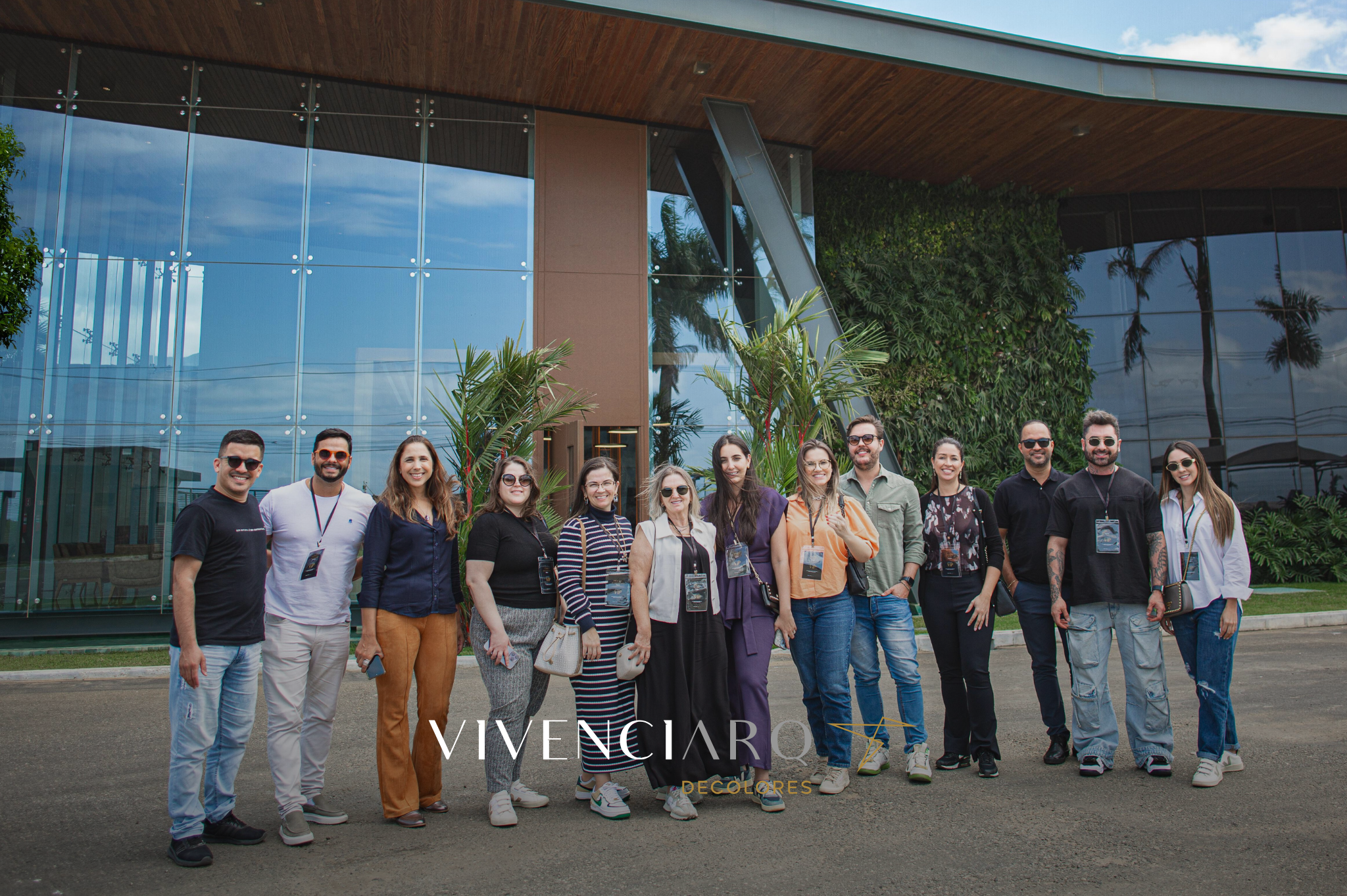
Vivenciarq 2024 6th Edition
Days of immersion in the world of natural stone, gastronomic experiences and shared experiences marked this edition of VIVENCIARQ, held in partnership with Belgram Marmoraria and Via Petra, with guest architects from Paraná and Goiânia. During the program, visitors learned about our production processes and the geological formation of the stones through the Rock Tour, deepened their knowledge in the Geological Immersion Room, tasted our cuisine from Espírito Santo and were inspired by the applications of quartzite in our showrooms. In addition, the guests took part in a chat about quartzite and other types of natural stone with our specialist and R&D coordinator, Abiliane de Andrade. Many thanks to everyone who enjoyed this experience with us! It's a pleasure for us to share our great passion: natural stone. Watch on Instagram: https://www.instagram.com/reel/DAYgykxoIMa/?utm_source=ig_web_copy_link&igsh=MzRlODBiNWFlZA==

Cachoeiro Stone Fair 2024
In the last week of August, during the Cachoeiro Stone Fair, Decolores prepared a special program to welcome customers and partners to our units in Cachoeiro de Itapemirim - ES. Visitors from Brazil and around the world were able to take a closer look at our natural stones, with their striking patterns and unique colors, highlighting their originality in every detail. To enrich their repertoire, we offered guided tours of our Industry, R&D Laboratory and the much sought-after Geological Immersion Room, a space designed to provide an in-depth understanding of the process of rock formation.

7 Advantages of Choosing Natural Stones for Your Project
Stones have been used in construction and interior design since ancient times, recognized over the centuries for both their functionality and high aesthetic value. Today, they remain a popular choice, with the market offering a wide range of options with various properties and benefits. Below, you will discover some of the main reasons to choose natural stones for your spaces! What are the unique features of natural stones? Extracted in their raw form, they are formed by geological processes over millions or even billions of years. Each piece is unique, carrying centuries of history and showcasing a design that is a true masterpiece of nature, shaped by specific reactions that have singularly created each detail. Therefore, one of the main highlights of natural stones is this exclusivity. There are no two types or even two pieces of the same composition that are identical. In terms of strength, it is possible to find highly durable stones that do not lose their beauty over the years. 7 Advantages of Using Natural Stones See some of the benefits these elements bring to projects: 1- Unique Beauty As mentioned earlier, these geological gems are formed by environmental transformation processes over centuries. For this reason, you will never see two pieces exactly alike. Each one is unique and exclusive, and this authenticity is impossible to replicate. This is evident, for example, in the Ijen Blue quartzite, with its different layers of patterns, lines, and dots, a result of time and sediment accumulation during its formation. 2- They Are Trending and Timeless In recent seasons, organic or biophilic design, characterized by the integration of natural elements, a rustic appearance, and an abundance of natural light, has been one of the main trends. Stones fit perfectly into this concept, bringing a piece of Earth's history into any environment. It’s important to remember that, even though they align with this current trend, natural stones have never lost their prestige in architecture and decoration due to their elegant, classic, and timeless appearance. 3- They Are Durable With proper care, such as periodic sealing and cleaning with gentle products, natural stones can last for decades without any loss of their properties. Quartzite and granite are particularly notable in this regard, offering durability in various contexts. 4- They Maintain Their Appearance In addition to preserving the integrity of the piece, the unique beauty of natural stones also endures over the years. An example is historical buildings that include these elements and still maintain their stunning appearance. Unlike synthetic materials that may fade over time, the rich tones of natural stones remain vibrant. 5- They Contribute to Sustainability Due to their high durability, stones are naturally a more sustainable option, as they rarely need to be replaced, preventing waste. By choosing a supplier that prioritizes sustainability, like we do at Decolores, they become even better in this aspect. Among our initiatives to care for the planet are proper waste disposal, water reuse systems and rainwater harvesting, extraction techniques with minimal impact, eco-efficient methods in the production stages, and more. 6- They Offer Great Versatility It’s a misconception to think that natural stones shouldn't be used, for example, in flooring or outdoor areas. Their properties go beyond beauty, ensuring functionality in a multitude of applications. There are suitable options for all types of projects. For instance, Van Gogh marble created visual harmony in this project, connecting an outdoor area to the interior space, demonstrating its use in both contexts. 7- They Provide Thermal Comfort Natural stones are excellent thermal insulators, maintaining a pleasant temperature in cold or hot locations. Even in outdoor areas, they help to mitigate high temperatures because they do not retain heat. Get Inspired by the Beauty and Exclusivity of Natural Stones Explore more application options for these natural gems on our website!

Natural stone: trends in architecture
The year of natural stone Natural stone is a valuable and versatile element in construction, offering a variety of advantages that make it an exceptional choice for different types of projects. Among these advantages are their unique design, durability, high resistance and low maintenance requirements. It is thanks to these benefits that they have become the preferred choice for 2024. Rough elements will be popular, as textured surfaces add a unique and natural look to spaces. Quartzite, known for its diversity of colors and resistance, will be one of this year's highlights. Marble, with its dramatic veins, and granite, known for its hardness, continue to be great bets. Some other alternatives will also stand out in the coming months, such as sandstone and soapstone. Keeping an eye on the colors The combination of natural stone and the right colors is key to creating unique environments that convey the desired sensations. To continue in style, it's important to keep an eye on the color of the year chosen by Pantone: Peach Fuzz. With a peach tone that falls between pink and orange, the color evokes various sensations, such as tenderness, softness, warmth and connection. In an increasingly hectic routine, these feelings deserve to be present in your architectural projects. It's worth noting that Peach Fuzz has the ability to harmonize with different styles of decoration and bring a comforting presence to the environment. When integrated with natural stones of subtle tones, such as quartz or marble, it allows the aesthetics and personality of the space to reach new heights, elevating the experience of those who frequent it. Trends worth highlighting Some trends have been shaping the interior design scene and helping to provide exceptional comfort this year. Here are some of them: Minimalism: the focus will be on quality, not quantity. Determine the essential shapes, eliminate excesses and emphasize the refinement that only natural stone brings. Eclecticism: the combination of textures and styles will also make all the difference. Carefully select the elements according to the story you want to tell. Sustainability: commitment to the environment never goes out of fashion. Stone, wood and recycled products are all welcome. Nature at the center: large windows, balconies and outdoor spaces are synonymous with tranquility and serenity. Decolores will be with you! Natural stone will undoubtedly take center stage in architecture in 2024, bringing even more beauty, versatility and well-being to your projects. Count on Decolores to explore these true works of art and discover the best way to incorporate them into your clients' spaces. Get in touch for specialized consultations or guidance.
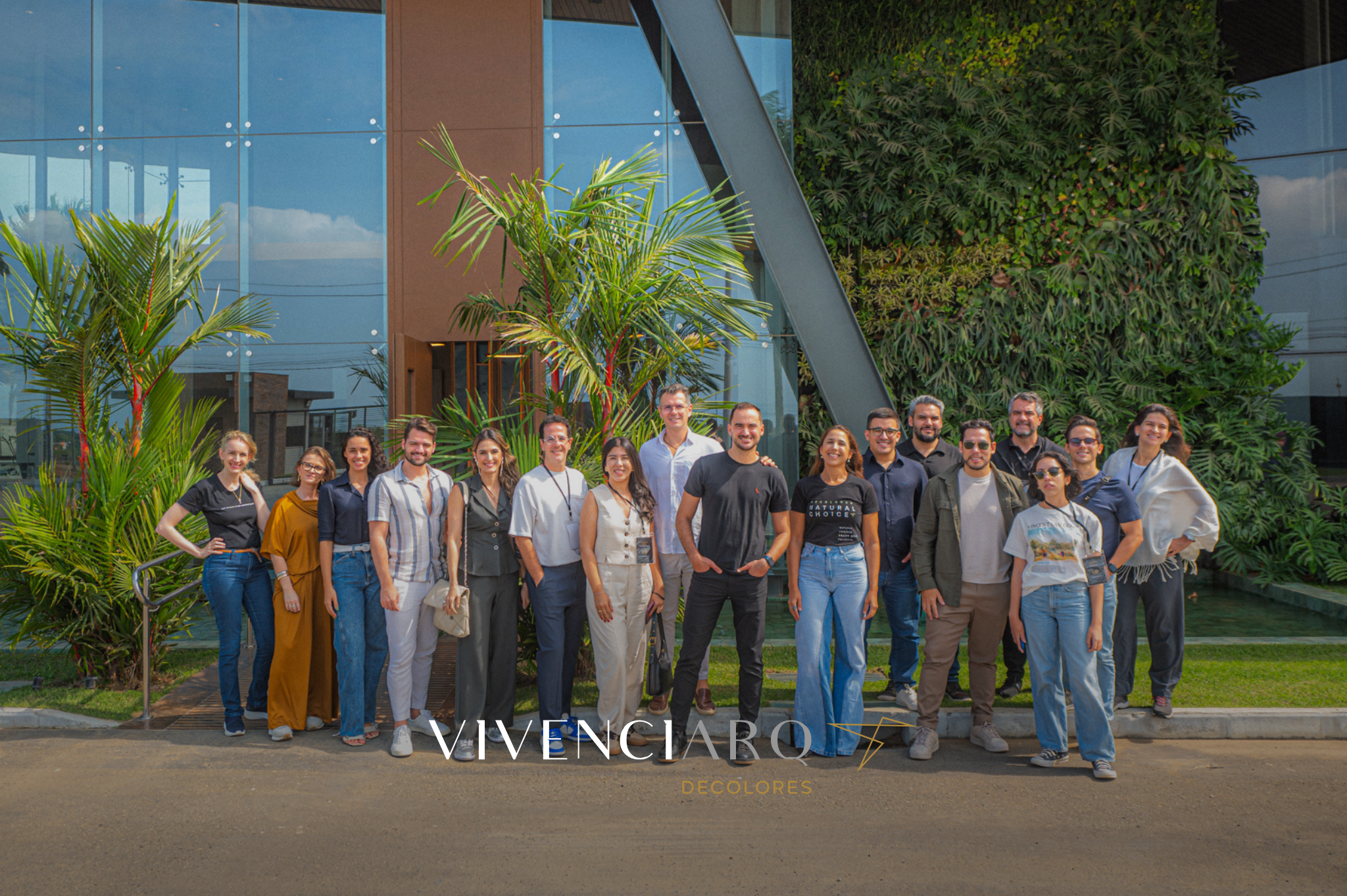
Vivenciarq 2024 5th Edition
A day of immersion in the world of natural stone and shared experiences marked this edition of VIVENCIARQ, held in partnership with the Petras Design and Estilo em Pedras marble factories. During the program, visitors learned about our production processes and the geological formation of natural stone through the Tour das Rochas; they were inspired by the applications of quartzite in our Showroom; and took part in a chat with Karin Gimenes, a hotel management graduate and ambassador of Tiradentes Creative Week, on "Stone on the rise: a new course in design and decoration".

Vivenciarq 2024 4nd Edition
A day of immersion in the world of natural stone and shared experiences marked this edition of VIVENCIARQ, held in partnership with the Margran and Phoenix marble factories. During the program, visitors learned about our production processes and the geological formation of natural stone through the Rock Tour; they were inspired by the applications of quartzite in our Showroom; and took part in a chat with Camila Santos, an architect and urban planner specializing in architectural photography, on the subject of “The process of image construction”. Watch on Instagram: https://www.instagram.com/reel/C-atFf5vgAR/?utm_source=ig_web_copy_link&igsh=MzRlODBiNWFlZA==
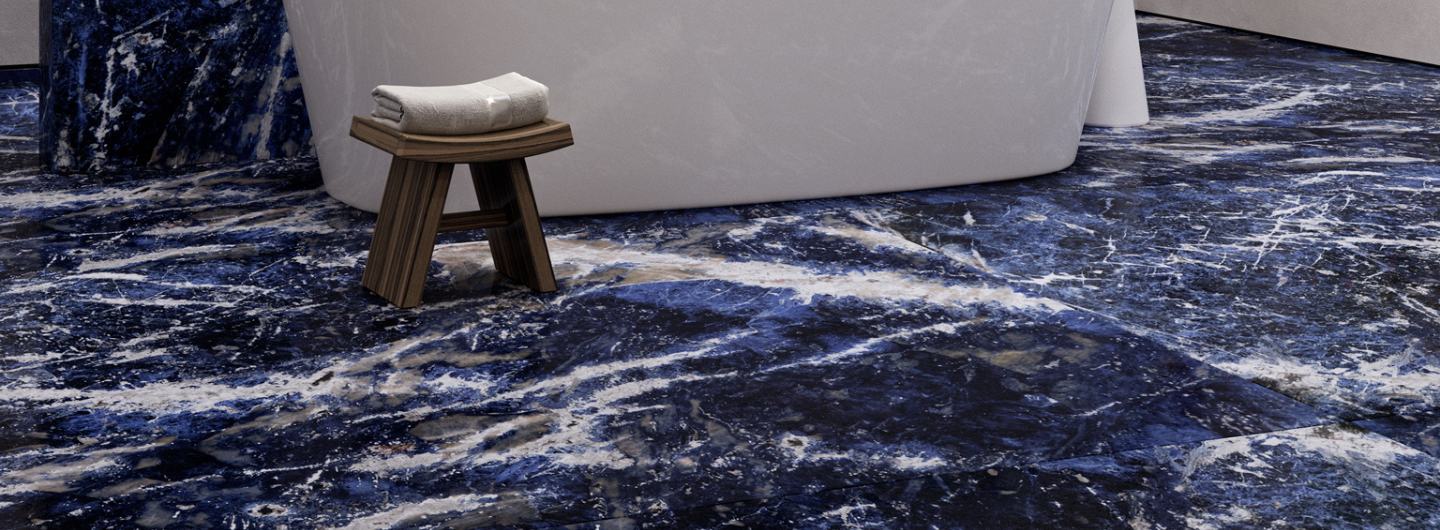
Colors of Brazil: Meet Sodalite
Get to know Sodalite, a stone that brings exclusivity and luxury by highlighting the colors of Brazil. Formed 700 million years ago in the depths of the ocean, Sodalite brings authenticity, sophistication and personality to the world of architecture and design. Its intense blue brings personality to environments and creates a unique atmosphere of unparalleled beauty. Want to know all about this rare gem? We've put together a range of important information about it in this article. Read on and enjoy! From the depths of the ocean The formation of Sodalite reveals a particular geodynamic signature that reflects the evolutionary origin of very ancient terrain. Bahia 700 million years ago was the scene of unique natural processes that today express the beauty of a precious past. Sodalite crystallizes in magmas rich in sodium and aluminium under very controlled geological conditions. When the rising magma slowly cools inside the earth's crust, it forms irregular bodies up to hundreds of meters long, but distributed in a restricted way, which is what makes Sodalite so precious. Its bluish color is a manifestation of the widespread occurrence of the mineral sodalite, which gives its name to this noble and sought-after stone. Characteristics that mesmerize the eye 1. rare and luxurious gem With its vivid blue tones that contrast with its striking and busy veins, Sodalite carries the magic of primordial waters and conveys a beauty that goes beyond the ordinary. It is a rare natural stone that has a great impact on the projects in which it is used. 2. Charming and unique applications With a wide range of applications, this natural stone is suitable for flooring and interior walls, countertops, tabletops, panels and bathrooms, standing out in environments with its refinement and glittering shine. ---------- Get to know our solutions At Decolores, we work with the best to provide you with incredible experiences! Explore the stones developed by our company and discover everything we can do for your projects.
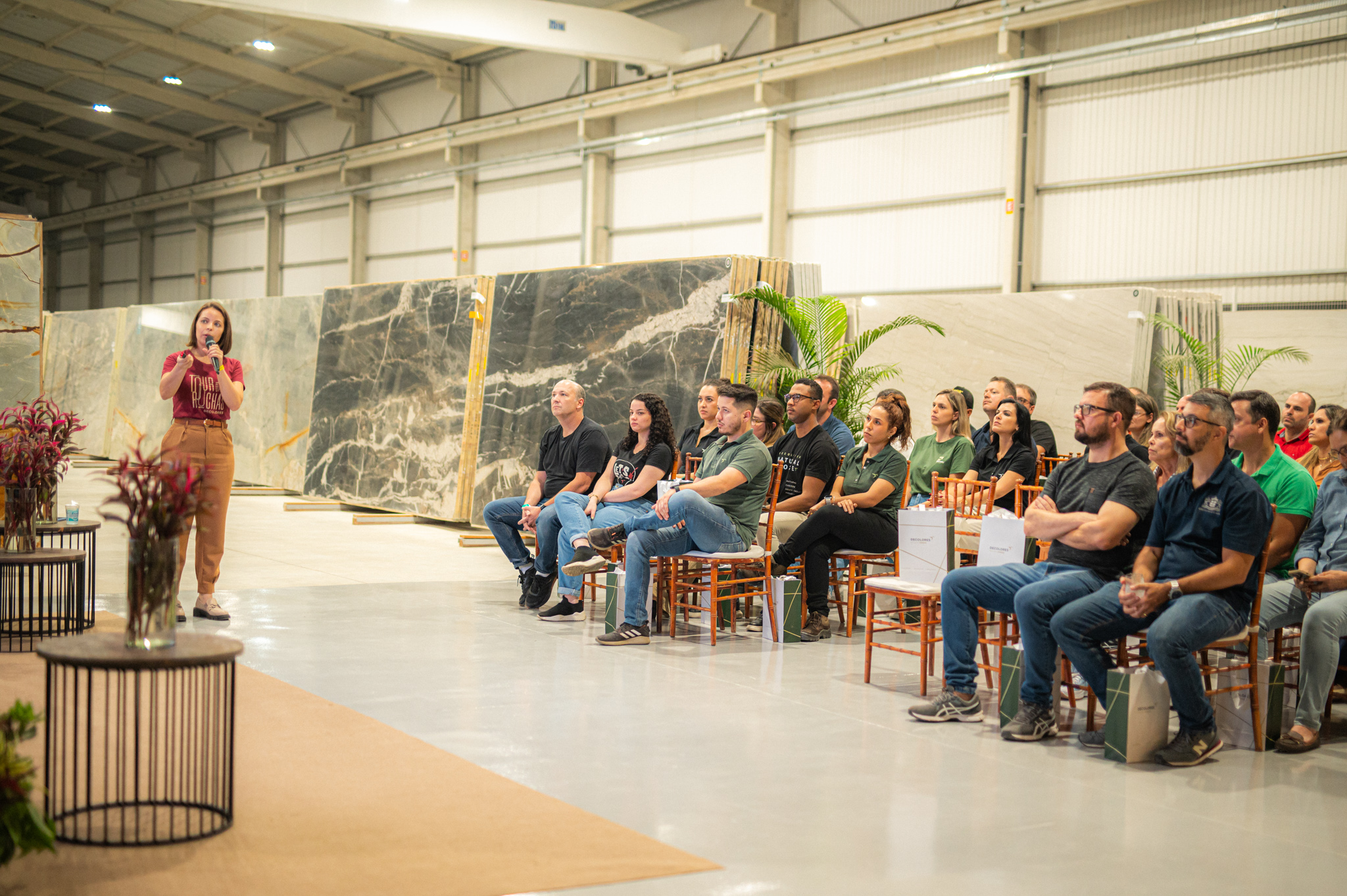
Inauguration of the Geological Immersion Room
A unique experience, full of knowledge and networking! Our immersion in the Rock Tour with our foreign market partners was a success, and we already want BIS! The technical visit included our production lines, the research laboratory, the Geological Immersion Room - which is new to the visitation project - and ended with a chat about quartzite with R&D coordinator Abiliane. It was an incredible opportunity to exchange experiences and broaden our repertoire of natural rocks. We were honored to be able to take our guests on this journey back in time, full of knowledge about our great passion, quartzite. Check out some of the highlights of this event:
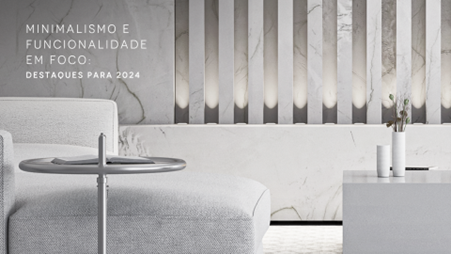
Minimalism and functionality in focus: highlights for 2024
In 2024, we now have the opportunity to transform and create projects in a way that expresses the originality and functionality of environments. As a result, the trend for integrating natural elements into environments is gaining even more prominence, providing a unique aesthetic appeal to your clients. This is the case with natural stone, which helps add a touch of elegance, durability and a timeless connection with nature to any space, as well as being highly durable and functional, being widely used in corporate or residential spaces. Apart from their aesthetic appeal, natural stone has a number of advantages that add even more value to your projects and make all the difference to your clients' daily lives. They are able to withstand wear and tear, abrasion, impact and climatic variations, guaranteeing a long service life for the environments in which they are used. They are also easy to clean and, with proper care, maintain their original beauty over time, reducing the need for constant interventions. It is also worth noting that they are generally extracted responsibly, helping to reduce environmental impacts and contributing to sustainability around the world. Combining the best of natural stone with the latest in architecture The fact that natural stone will continue to be popular in 2024 is nothing new, and it is essential to combine it with other trends in architecture and construction in order to develop projects that are current and full of personality. Here are some examples to inspire you: ● Textures that reflect personality: bet on colors, prints and finishes that are out of the ordinary to add more authenticity to the decor. Ijen Blue is a good choice, as it has deep blue tones mixed with subtle shades of gray and white. Its exotic appearance creates an atmosphere of tranquillity and elegance and is often used on floors, walls and furniture details. ● LED lighting: highlight your furniture with small spots of light, bringing more refinement to your space. Combining this style of lighting with Leblon Quartzite, for example, is a great choice. With a vibrant energy that pays homage to Rio de Janeiro's iconic beach, its predominantly white hue and soft golden veins add a touch of glamour, spaciousness and luminosity to rooms. It is widely used on walls, floors and countertops. ● Minimalism vs. maximalism: use straight lines and neutral colors as interesting counterpoints to mix with bolder shades and prints. Thanks to its refined texture and glossy surface, it can be applied to wall coverings, countertops, floors and more. It's worth noting that natural elements will also be on the rise, combining organic items such as bamboo, rattan and Indian straw with natural stones, which increase well-being and enhance the feeling of being close to nature. In addition, design and decoration trends will be aligned with Pantone's color of the year, Peach Fuzz! With a soft, velvety peach tone that conveys various sensations, such as belonging, recalibration and calm, it will undoubtedly be an element that will harmonize perfectly with quartzite, marble and granite. The shade has the power to make any room even more special.
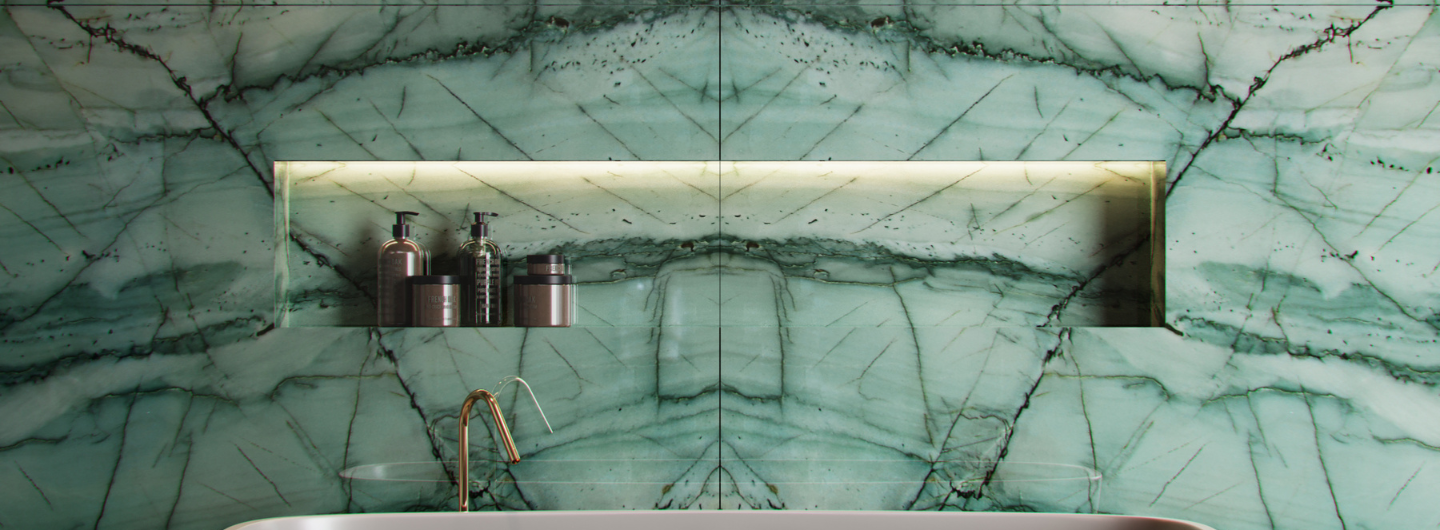
Colors of Brazil: Get to know Da Vinci
Get to know Da Vinci quartzite, a natural rock that captures the essence of the Earth in its purest form. With a history of formation linked to ancient marine waters, it has an aura of authenticity that cannot be replicated. With its deep green hues, Da Vinci harks back to the timeless beauty and unique elegance of nature! Want to know all about this original and versatile quartzite? We've put together a range of important information about it in this article. Read on and enjoy! Learn about the history of the formation of Da Vinci Those who admire the beauty of the green hues of Da Vinci Quartzite have no idea that its history began in such a distant past. More than 3 billion years ago, ancient rocks rich in quartz were eroded and their grains carried to new locations by the action of water, being deposited in a large depression in the earth that behaved like a shallow sea, receiving and accumulating sediment. Over time, the sediments consolidated into sedimentary rocks, preserving the exuberant designs and structures of their formation. Over the following millions of years, a chromium-enriched fluid from nearby magnesian iron rocks percolated between these sedimentary rocks, changing their composition. Finally, 1.9 billion years ago, a major geological event subjected these rocks to transformations in their structure and mineralogy, turning them into quartzite. This is how Da Vinci Quartzite was born, bringing with it reliquary minerals that have been transformed over geological time, and today denote exotic colors such as the green of fuchsites, due to the preserved chromium content. Being the natural proof of one of the most important milestones in the history of our planet, the Da Vinci is basically composed of: 88% Quartz 10% Fuchsite 2% Tourmaline Traces of Rutile and Zircon Characteristics that mesmerize the eye 1) Shades that capture the essence of the Earth Shades of green have the power to remind us of the inherent power of nature. Greenish, Da Vinci quartzite has veins that are sublimely ornate with their organic tones and shapes. Fluidly covering the entire surface, the stone's patterns strive for refinement in sync with nature. 2. Endless application possibilities Da Vinci quartzite has a wide range of applications due to its low absorption and quartz-rich composition, which gives it high hardness. It is used in outdoor and indoor areas, such as floors, walls, countertops, bathrooms and even swimming pools. Here at Decolores, this natural gem is available in brushed, levigated and polished finishes. Each one is ideal for different applications, guaranteeing even more possibilities for use. --------- Get to know our solutions At Decolores, we work with the best to provide you with incredible experiences! Explore the stones developed by our company and discover everything we can do for your projects.

Colors of Brazil: Meet Bronzite
Meet Bronzite quartzite, a true expression of the strength and beauty that make up the "Colors of Brazil" collection. With a history dating back billions of years, it reveals its impressive formation and reddish hues in the north of Bahia, making an immediate impact on any environment. Do you want to know all about this imposing and versatile quartzite? In this article, we've put together a range of important information about it: where it is found, how it is formed, possible applications and much more. Keep reading! A journey through the history of training Between 2.8 and 2.5 billion years ago, the first forms of life on Earth began to develop in the sea and transform the conditions of the atmosphere. Oxygen, which had previously been unavailable, began to be supplied by cyanobacteria through photosynthesis. This newly arrived oxygen reacted with the large quantities of iron present in the seawater, which were released by the intense activity of existing underwater volcanoes. The iron oxide formed went to the ocean floor, giving rise to iron-rich layers. When the amount of oxygen or iron available decreased, these reactions ceased and layers of silica were deposited on top of the oxides of iron. layers of iron oxides were deposited. The repetition of this cycle gives rise to what we see today in the beautiful slabs of Bronzite. After it was formed, it went through various geological events, accompanying the entire formation of the Earth as we know it today. The iron minerals and quartz layers present in Bronzite are responsible for its high hardness and reddish colors, which are often vivid and bright. Bronzite quartzite is natural evidence of one of the most important milestones in the history of our planet, and is basically composed of: - 55% microcrystalline and crystalline quartz - 15% magnetite - 15% goethite - 12% hematite - 3% grunerite Outstanding features 1. Exuberant color The earthy tones present in Bronzite's color palette, with their robust and powerful essence, remind us of the magnitude of nature's power. This quartzite is a charming option for those looking to create environments that exude an inviting atmosphere, transmitting large doses of warmth, belonging and energy. 2. Durability and resistance With its low absorption of liquids, Bronzite can be applied to different types of finishes and permeate the most varied types of projects. It has a wide range of applications due to its low absorption and quartz-rich composition, which gives it high hardness. Bronzite applications in architectural projects This wealth of natural resources has a wide range of applications, making it ideal for internal floors and walls, façades, kitchen worktops, table tops, bathrooms and fireplace cladding. Its incomparable resistance elevates every architectural project to an unparalleled level of sophistication. Here at Decolores, this natural gem is available in brushed, levigated, slatted and vintage finishes. Each one is ideal for different applications, guaranteeing even more possibilities for use. ------ Get to know our solutions At Decolores, we work with the best to provide you with incredible experiences! Explore the stones developed by our company and discover everything we can do for your projects.
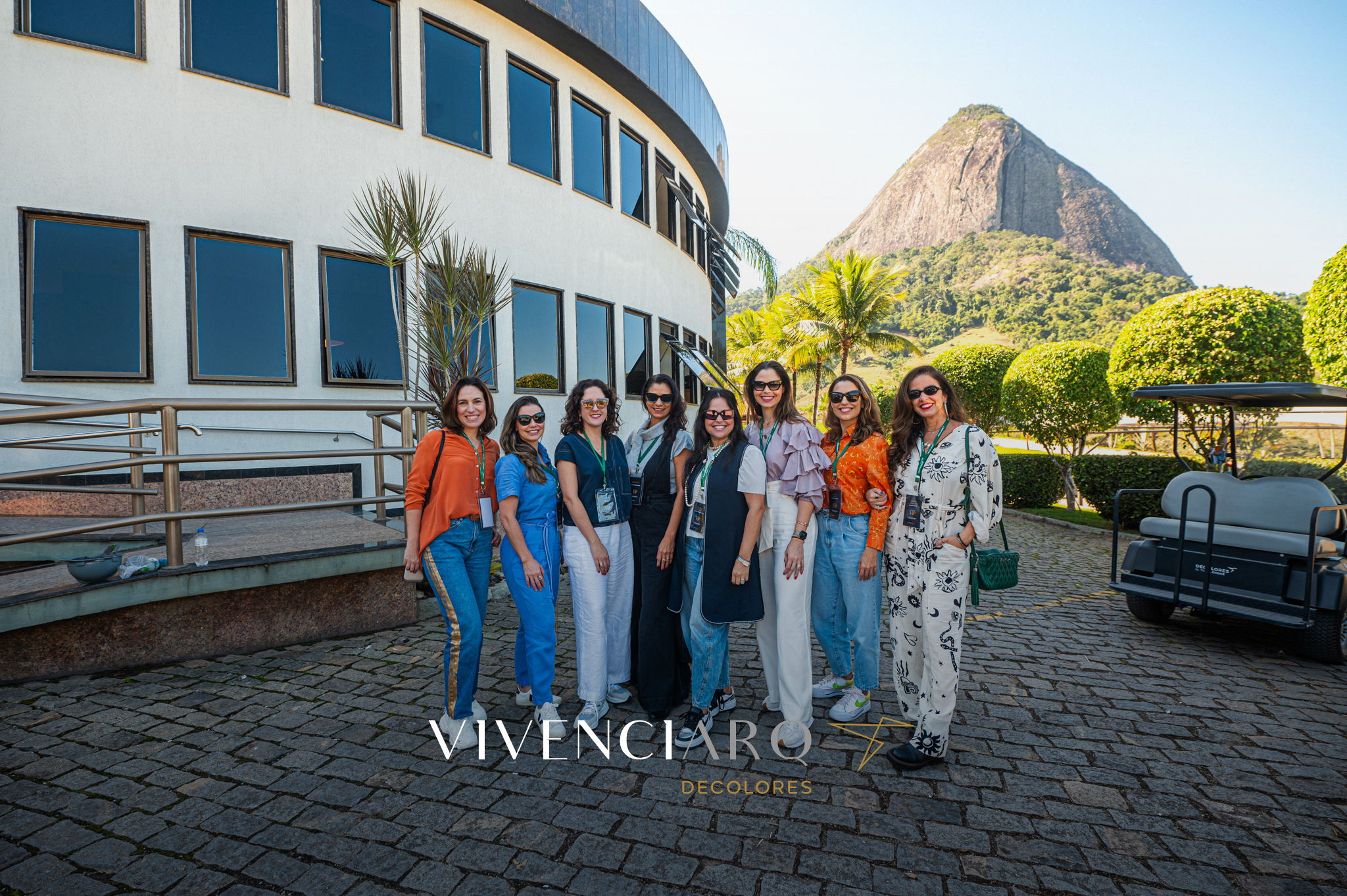
Vivenciarq 2024 3nd Edition
A day of immersion in the world of natural stone and shared experiences marked this edition of VIVENCIARQ, held in partnership with architect Carol Avanza and her guests. During the program, visitors learned about our production processes and the geological formation of natural stone through the Tour of Rocks; they were inspired by the applications of quartzite in our Showroom; and they took part in a chat with Abiliane Andrade on the subject of "The Art of Specifying Quartzite". Watch on Instagram: https://www.instagram.com/reel/C8fK6TmgSNa/?utm_source=ig_web_copy_link&igsh=MzRlODBiNWFlZA==
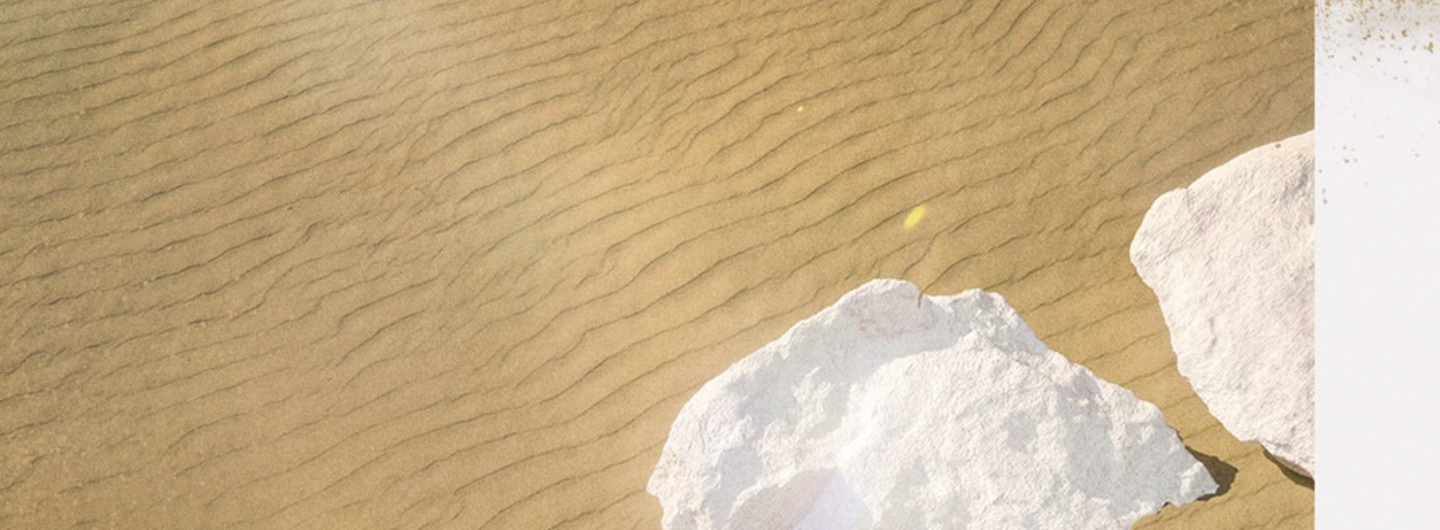
Fabricator's Day: A Decolores tribute
Each grain of sand tells an ancient story: polishing the oldest witnesses of time is a talent in itself June 23rd - Fabricator's Day. To mark the date, Decolores will present a glass hourglass with fine grains of sand to more than a hundred professionals who are part of our history and who are essential to the stone industry. The decorative gift represents our main quartzite: Mont Blanc, capable of remaining intact through the passage of time, bearing witness to centuries of history. Decolores expresses its admiration and gratitude to the fabricators who turn stones into works of art, bringing the beauty of Brazilian natural stone to the world.
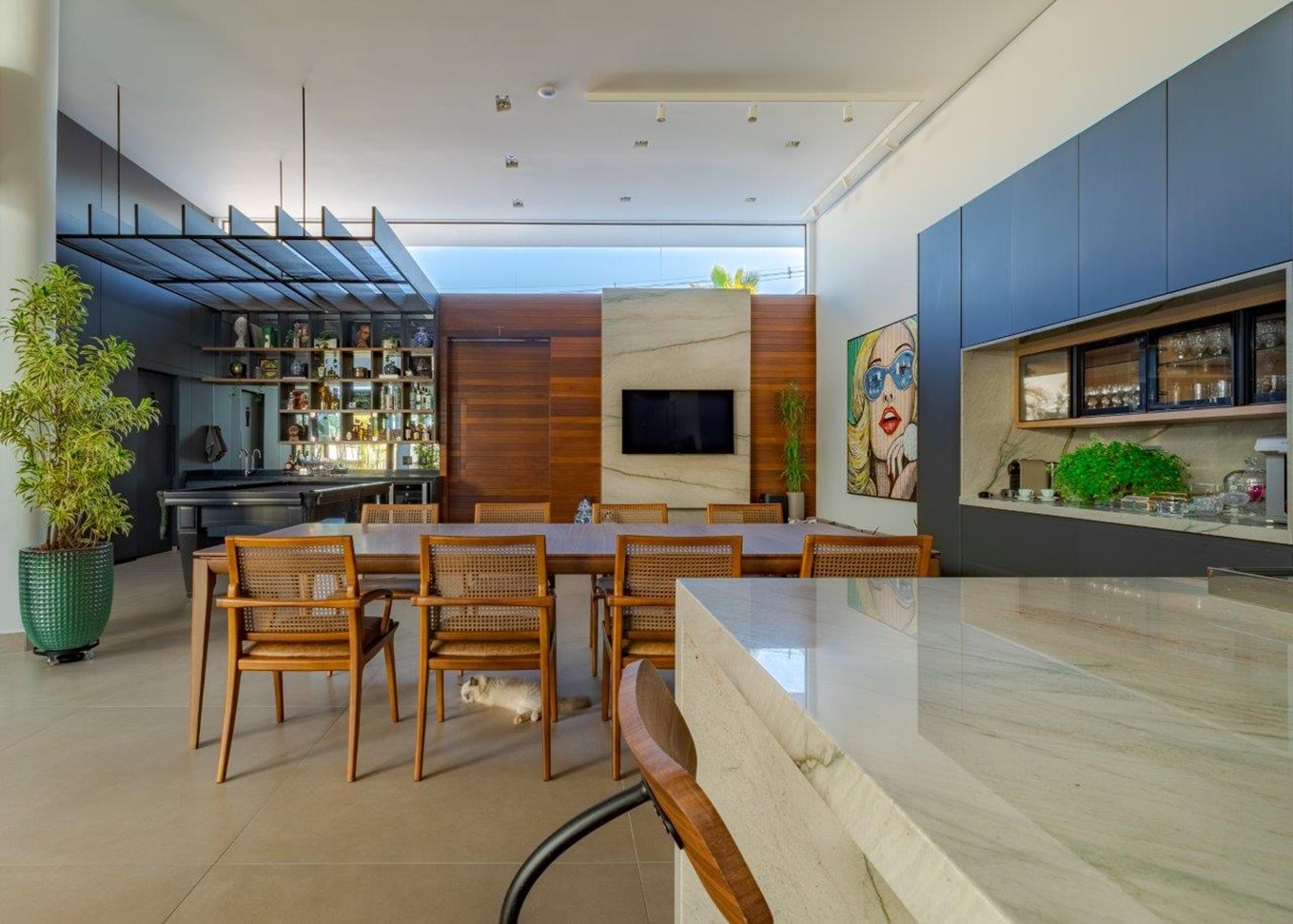
Meridian Gourmet Area
Gourmet area with plenty of space for leisure The extension of the house is full of bossa and features Meridian quartzite from Decolores on the central island, on the kitchen worktop, on the barbecue, in the niches between the cupboards and on the TV panel and fireplace. At this angle you can see the Meridian quartzite, by Decolores, on the TV wall panel, on the central island and in the niches between cupboards. Photo: Jean Paul Designed to accommodate friends and family, the gourmet area has a sunken living room with an ecological fireplace, a bar and even a pool table. Photo: Jean Paul The central island has been paginated with “continuous veining”. The Meridian quartzite is sold by @petraimportadora. The work was done by @aragran.marmores. Photo: Jean Paul Meridian quartzite, from Decolores, complements the floor covering and cabinets and adds a grayish touch to the décor. Photo: Jean Paul This house in Arapongas, Paraná, already had a gourmet area. But an unusual reason led architect Edson Tomio Hirata, from Arquitetura Verde, to propose building this new space integrated into the veranda. A member of the so-called “Wednesday Club”, which brings men together on a weekly basis, the owner of the house wanted a much larger gourmet area that could accommodate at least 30 people. The architect suggested a 103 m2 room, this time with plenty of space for a living room with a TV and an ecological fireplace, a games room with a pool table, a bar, a lounge with dining tables, a kitchen and a barbecue. In this way, both the men and the family could be comfortably accommodated for their weekly meetings and party days. Thinking of meeting the request of the couple with two daughters - who wanted to get away from fads and solutions with a short lifespan - the professional developed a project with sober elements and colors. For the materials, he chose natural options such as wood and stone. “The idea was to harmonize the gourmet area with the veranda, where there is a lot of vegetation, as well as combining the materials with each other,” he explains. This view shows the integration between the gourmet area and the balcony. Notice the veins in the Meridian quartzite, from Decolores, used in the central island. Photo: Jean Paul Also from the balcony, on the left side of the photo, this angle shows the stone installed on the sink's central island and on the fireplace wall (in the background). Photo: Jean Paul So, for the central island, the kitchen worktop, the barbecue, the niches between the cupboards and the panel on the TV wall and the fireplace, Meridian quartzite from Decolores was specified. "I wanted a stone with a grayish touch, which would balance out the floor and the cladding on the cabinets. In addition, as it is a rock with a high degree of hardness, it would guarantee greater resistance to stains,” he explains. Another factor that led to the choice of Meridian is its delicate veining. Although subtle, quartzite has a marked design, which the architect was keen to explore. That's why, when laying the slabs, the marble company used the so-called “continuous vein”. "This way of laying the slabs makes it look like the stone has been folded and not cut. The work is exquisite,” concludes the architect.
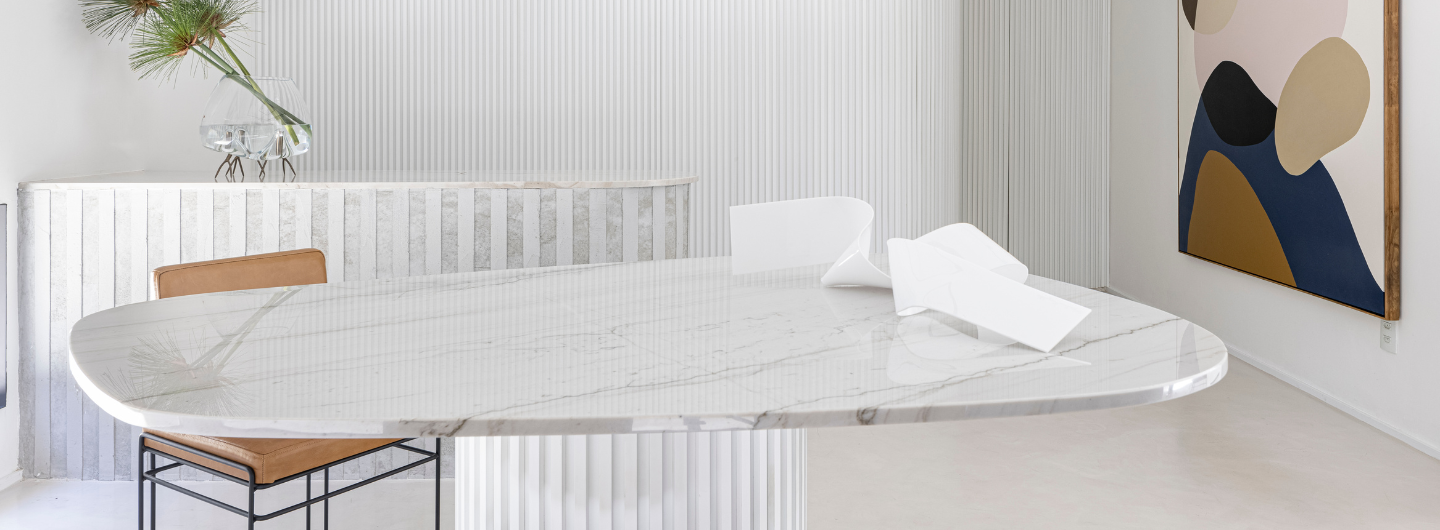
Colors of Brazil: Get to know Mont Blanc
Get to know Mont Blanc quartzite, one of today's leading sustainable natural stones, which makes up the "Colors of Brazil" collection. Mont Blanc Quartzite is one of the most beautiful and fascinating natural stones from Brazil. Internationally recognized, its unique appearance and impressive properties make it a standout among quartzites, as well as being a sustainable option. With its off-white hue and marked veins, Mont Blanc guarantees uniqueness and sophistication to any environment. Want to know all about this white quartzite? In this article, we've put together a range of important information about it: where it's found, how it's formed, application possibilities and much more. Keep reading! The geological formation of this Brazilian gem From Chapada Diamantina, one of Bahia's main postcards, to the world. The Mont Blanc deposit is located at an altitude of 1,200 meters and presents humanity with one of the most incredible sustainable natural rocks today. But how did it all begin? The answer lies in a series of geological events that took place over 1.7 billion years ago. The region where the quarry is located was made up of dunes and rivers that flowed towards the sea. The action of water and wind reshaped the sands, which were rich in milky quartzite grains. Once buried, these components kept their shape. Then, in a period that today corresponds to 550 million years, Mont Blanc, which had accumulated hundreds of meters thick, was compressed by the process of metamorphism. Characterized by an increase in pressure and temperature, the action raised the area to the top of a mountain range, favouring the crystallization of enriched hot materials. Incredible, right? The result of these phenomena is a unique material, capable of providing a series of sensations and giving a singular style to many environments. With its light tone and marked veins, Mont Blanc is basically made up of: - 95% quartzite; - 5% muscovite; - Traces of apatite, epidote, opaque minerals and tourmaline; - Versatile applications, finishes and design possibilities. Characteristics that distinguish Mont Blanc quartzite 1. Unmistakable look Its peculiar formation process gives Mont Blanc an incomparable aesthetic, and many consider it to be as beautiful as marble, but with its own authenticity. Its light hue, harmonized with the veins in soft shades of grey, can add both lightness and sumptuousness, depending on the proposal. 2. Excellent durability Another highly valued attribute of Mont Blanc Quartzite is its resistance. It is easy to maintain, has a high gloss, low dirt absorption and is resistant to weather and climate changes, not suffering from abrasion. Mont Blanc applications in architectural projects Precisely because it is so durable, this natural stone can be applied in a multitude of different environments. It is widely used for cladding internal walls, such as kitchens, living rooms and even bathrooms, and also ensures practicality and elegance for façades. In addition, it is a great choice for tables, worktops and the outside of fireplaces, shining both as a protagonist and as a supporting player in the room. Mont Blanc Quartzite harmonizes perfectly with elements of different styles, due to its neutral and soft color, combining, in addition to other types of stone, with wood, burnt cement and other smooth materials in different shades. Here at Decolores, this natural gem is available in three different finishes: polished, brushed and levigated. Each one is ideal for different applications, guaranteeing even more possibilities for use. Get inspired by real projects using Mont Blanc Check out our "Inspiration" area by clicking here, and discover a space dedicated to presenting real projects by marble workers and specifiers who have used Decolores natural stone. A real source of inspiration for other professionals and clients. --------- Get to know our solutions At Decolores, we work with the best to provide you with incredible experiences! Explore the stones developed by our company and discover everything we can do for your projects.
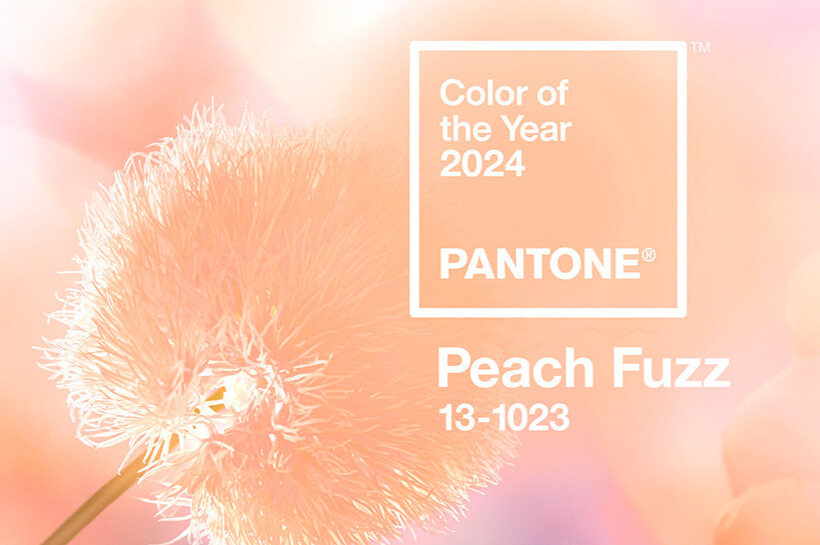
Peach Fuzz: the color of 2024
With its peachy hue, Peach Fuzz is Pantone's color of the year for 2024. But how can it transform your projects? Find out now! One of the most eagerly awaited moments for thousands of design, architecture and fashion professionals is when Pantone reveals its color of the year. More than a trend, this choice represents a careful reflection on current events, collective emotions and the cultural directions that are guiding the world. And for 2024, the bet has already been made: it's Peach Fuzz, a cozy peach shade that has the potential to bring a new atmosphere to various environments and projects. Read on and find out more about it! What is the importance of Pantone's color of the year? Pantone is a global authority when it comes to colors, facilitating all stages of the workflow for brands and manufacturers. The color selected for a given year is not just a shade, but a symbol that represents a deeper message. The tone is chosen after a thorough analysis of global trends, behavioral changes, social influences and even economic conditions, reflecting the prevailing mood in society at that time. What's more, the color of the year has the power to inspire creativity and innovation in different sectors, influencing the trends we'll see on the catwalks, in the streets and in interior design. That's right, Peach Fuzz can guide aesthetic choices, influencing everything from furniture selection to the color palette of walls. What does Peach Fuzz represent? Colors go far beyond aesthetics and are responsible for conveying a range of emotions and sensations. In the case of Peach Fuzz, we have a soft, velvety shade that moves between pink and orange and seeks to bring out feelings such as belonging, recalibration and calm. If for 2023 the choice was “Radiant Horizon”, with intense and vibrant nuances that symbolized energy, optimism and vitality, we can see an impactful change for 2024. After all, after such a challenging year, all the world wants now is a warm, welcoming refuge and an end to the storm. How to use Peach Fuzz? As well as being beautiful, Peach Fuzz offers a palette that ranges from the lightest to the deepest tones, allowing for a wide variety of applications and possibilities. If you want to create engaging spaces, here are some tips that will revolutionize your residential and corporate projects. Walls: provides a smooth integration into rooms, giving a comforting and elegant touch. Decoration: it is also perfect for details, and can be applied to cushion covers, plant pots and holders, curtains, sofa blankets, among other items. Furniture: sofas, chairs, bookcases and sideboards in this color add personality to rooms and make them look more contemporary. Joinery: the neutral wood tones harmonize perfectly with Peach Fuzz, resulting in refinement and balance. Ready to experience a more serene 2024 with Peach Fuzz? Betting on the color of the year is an excellent way to build more modern projects in tune with the feelings the world is experiencing. Keep following the Decolores blog and social networks to find out more about how Peach Fuzz can be present in your daily life.

Decolores represents Brazil at KBIS 2024
Participating in the fair considered to be North America's leading event for kitchen and bathroom design, the brand will highlight Mont Blanc quartzite at the Centrorochas stand. Following the intrinsic movement of its DNA, which has innovation and the search for trends as strong compasses, Decolores is present and representing Brazil at KBIS 2024, considered to be North America's leading trade fair for kitchen and bathroom design. The event brings together renowned companies and specialized professionals from the sector in Las Vegas, USA, from February 27 to 29, where quartzite will be highlighted as the centerpiece of the Brazilian stand. The country's participation in the exhibition will take place through It's Natural - Brazilian Natural Stone, an export incentive program developed by the Brazilian Center of Ornamental Stone Exporters (Centrorochas), in partnership with the Brazilian Trade and Investment Promotion Agency (ApexBrasil). Architects, designers, builders, engineers and influencers from all over the world will be able to see samples of the main Brazilian natural stones, including Decolores' Mont Blanc, which will line the entire stand. The company's participation in KBIS is a unique opportunity to show American specifiers the 100% Brazilian excellence found in all its products and services, as well as to present natural stone as an excellent option for raising the level of their projects.
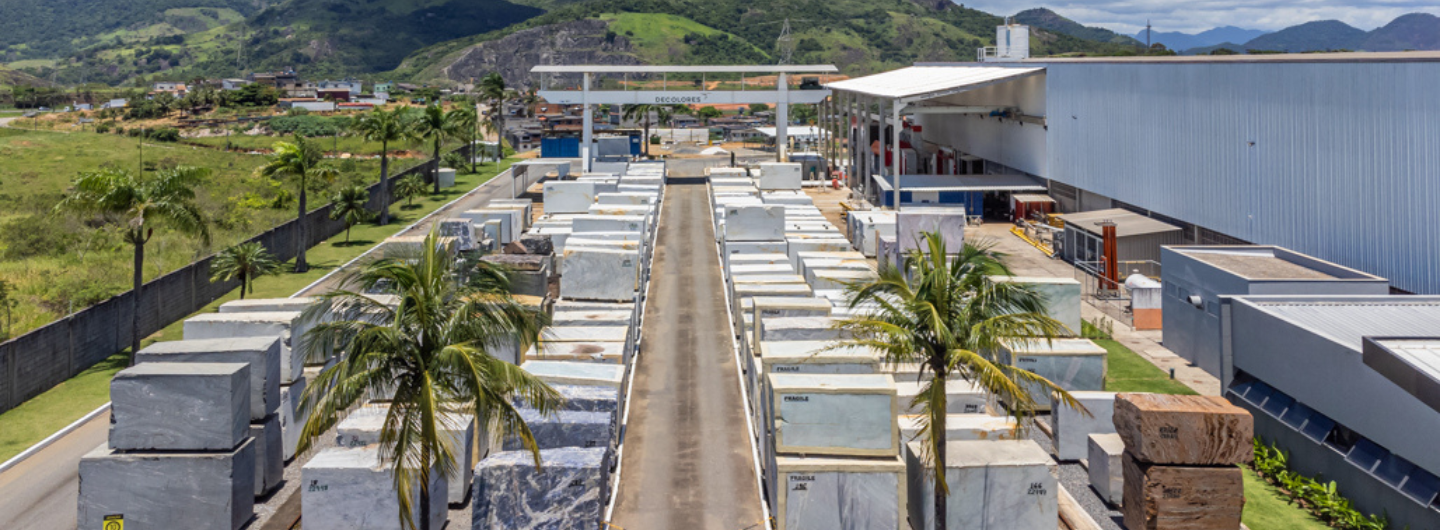
Clean technologies in natural stones
Which clean technologies in natural stone are likely to take center stage this year? Stay with us and find out! Beautiful, unique and responsible for the beauty of a multitude of environments, natural stone tends to be supported by many other elements. That's what you're going to discover here, in this complete article on clean technologies in natural stone for 2024. Spoiler: you can already tell that the connection with environmental preservation must be one of the main points of the text, can't you? Follow here to find out all about it. Happy reading! The importance of sustainability in natural stone production Just as important as the aesthetic aspects of a project is the choice of functional and sustainable materials, capable not only of making a particular area more beautiful, but also of contributing to the planet we live on. After all, our greatest home needs the commitment of all of us. Natural stone is one of the items that exemplifies the importance of sustainability like few others. Based on highly technological cutting processes, which provide differentials such as great durability, these items reduce the disposal of other materials in nature, for example. Clean technologies in natural stone in 2024 Here's a look at some of the clean technologies in natural stone that will be on the rise: 1. New extraction techniques with less environmental impact Procedures related to the extraction of natural stone have also been constantly modified, since there is a growing application of methods that have less impact on the ecosystem, with a view to preserving natural resources. 2. Eco-efficient practices in the production stages Measures that use water and other natural waste assertively, avoiding waste and ensuring the correct disposal of certain items, will be even more prominent in 2024. 3. Reuse of waste and by-products Efficient logistics, which aim to reduce the amount of discarded materials by reusing various items, is another point that will certainly play a leading role in the stone industry throughout the year. 4. Building automation combined with savings Such as presence sensors for activating light bulbs; automatic fire sensors for security; access control applications and equipment activation, with a focus on minimizing waste. In short... - When we talk about clean technologies in natural stone, the connection between these solutions and the environment will certainly be one of the main characters of 2024; - Paying attention to sustainability is fundamental to guaranteeing the preservation of the environment and differentiating yourself from the competition, for example; - Applied together, these practices ensure the delivery of truly differentiated products to consumers, who value intelligent operations. Natural stone: an easy choice by nature At Decolores, we specialize in the production and sale of natural stone. Here, we have the best on the market, meeting all your needs. Click here to find out more.
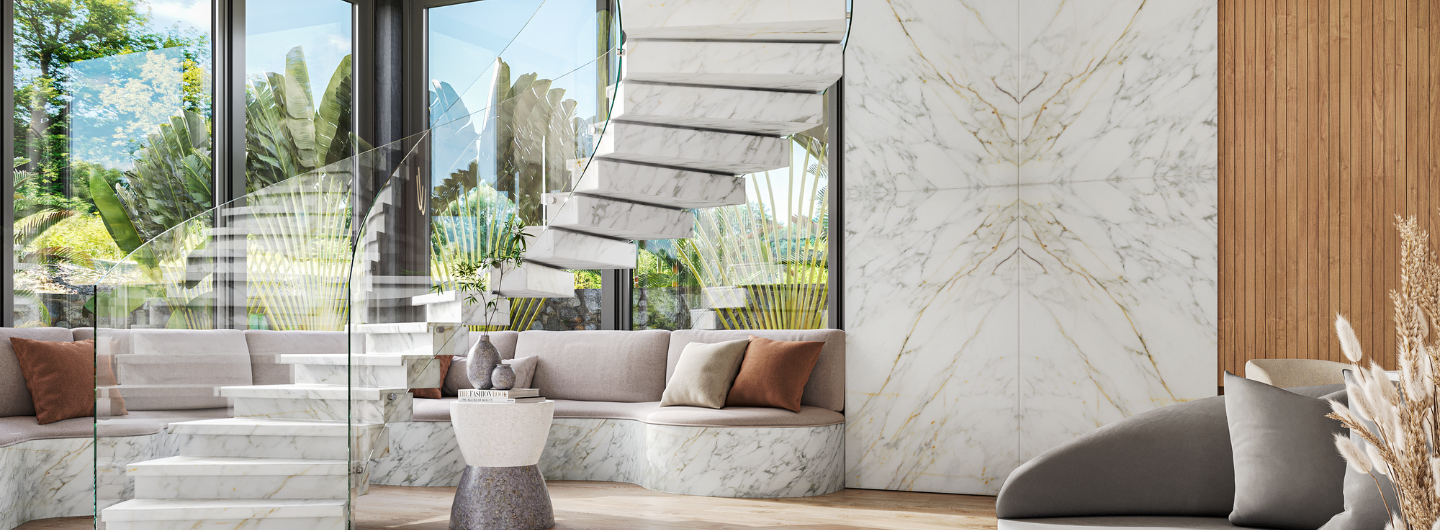
Brazilian vs. Italian marble: The charm of natural stone that brings the countries together
Italy has a great tradition in natural stone, but Brazil has been making a name for itself in recent years. Find out more about Brazilian and Italian marble! There's no denying that Italian marble is recognized worldwide. Italy is the country of origin of Carrara marble, one of the most famous and appreciated on the planet. Over the centuries, Europeans have perfected their techniques for extracting, processing and finishing the beautiful natural stone, making it a benchmark in the field. In recent years, however, Brazil has also been making a name for itself in this field, with the variety and unique properties of its stone. Italian tradition vs. Brazilian innovation Both countries offer a wide range of impressive and diverse colors and patterns. Find out more about Brazilian and Italian marble below: 1. Aesthetics Aesthetic excellence is present in both imported and domestic marble. Brazil has an abundance of natural stone with timeless colors, as can be seen in the patterns of Biancatto marble, with a light background and soft veins, and Matarazzo, with tones that vary between bluish and golden. Italy, on the other hand, is not only known for its classic options, such as Botticino with its beige background, but also for its exotic and vibrant marbles, such as Rosso Levanto, with a burgundy background and vibrant veins, and Calacata Fabbricotti, which creates a dynamic aesthetic with a white background and golden, grey and brown veins. 2. Technical properties As far as the properties of the stones are concerned, the differences are not marked either. Durability and characteristics will depend on more than just the origin of the stone, but also on the treatment and finishing carried out on the pieces. National marbles, especially those that are extracted, processed and distributed by reliable companies, leave nothing to be desired when compared to Italian marbles. Whether you're choosing a traditional Italian marble or a trendy Brazilian stone, it's important to pay attention to the supplier and the attributes of the piece, as this is what will define the quality. National marble has already conquered its place in the market European stone has always been recognized as a luxurious option, a status symbol. But over time, the market has come to recognize the value of Brazilian pieces, even outside the country. Especially when the idea is to create authentic and daring spaces, the rare richness of Brazilian marble is preferred. The states of Bahia, Minas Gerais and Espírito Santo are some of the highlights in terms of stone extraction. Brazil is one of the segment's main producers and exporters. In 2020, it was in 5th place in the ranking, behind China, Italy, Turkey and India. In the same year, the main buyer of Brazilian marble and granite was the USA. We also export on a large scale to China, Mexico, the UK and Canada, as well as Italy itself. Speaking of natural stone in general, figures from Abirochas (Brazilian Association of the Ornamental Stone Industry) for 2023 show that the country earned more than US$ 179 million in exports to the USA, China, Mexico, the UK and Italy. We are proud to be part of this We are truly passionate about the richness of Brazilian natural stone, including the extraordinary marbles, as well as quartzites, granites and much more. Explore our website and get to know this amazing variety!
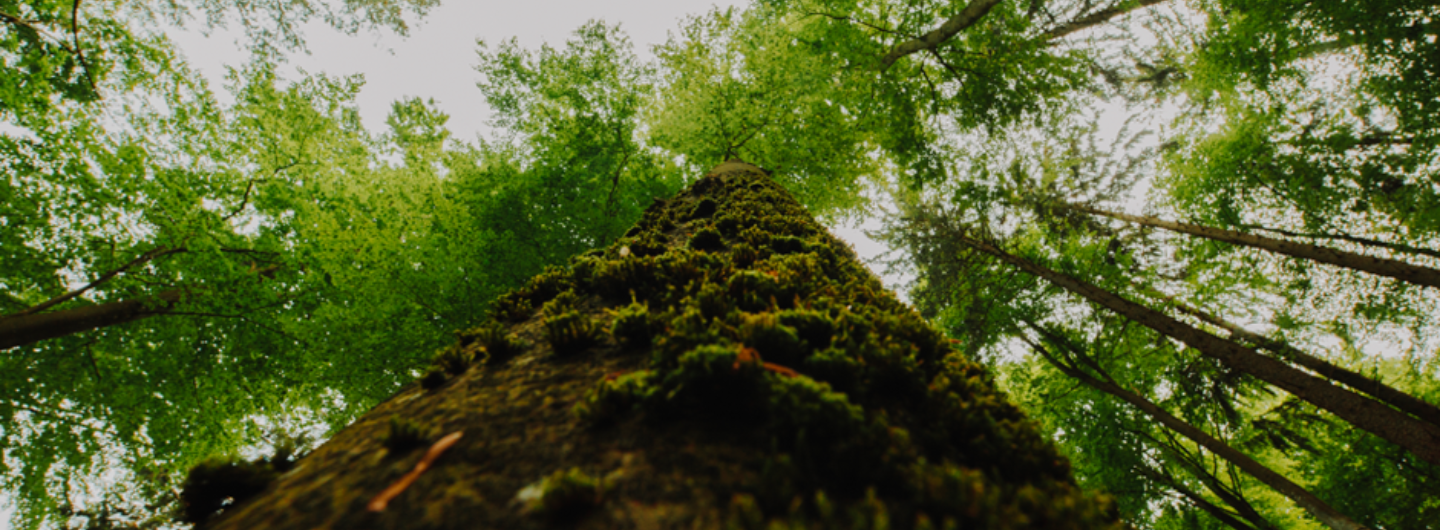
The importance of sustainable practices in caring for biodiversity
Get to know Decolores' operational processes and the actions applied by the company for sustainable development and attention to biodiversity. Concern and attention to the planet's various biomes and ecosystems are constant actions that affect our routine, even when we don't realize it. The idea that the Earth's resources are limited and must be preserved is a debate that demands everyone's attention. To celebrate the balance between the various forms of life, Biodiversity Day, which takes place on May 22, highlights the richness of flora and fauna, while at the same time warning us to use natural resources consciously and responsibly. In this article, we present the value of this date and show how Decolores works to contribute to environmental preservation, respecting living beings and water in the ecosystems where the company operates. Join us in this reading. Why do sustainable actions matter? Brazil's wealth is manifested in its seven biomes: Amazon, Atlantic Forest, Cerrado, Caatinga, Mato Grosso Pantanal, Pampa and Coastal-Marine Zone. The diversity present is vast, but the threat of extinction is close to 1,253 species, according to the Chico Mendes Institute for Biodiversity Conservation (ICMBio). When species of plants, animals and minerals disappear from an ecosystem, the tendency is for it to lose its balance, which has serious consequences for the whole world. And what is Decolores doing to avoid or reduce this situation? 1. Durability and useful life of stone One of the pillars of Decolores' institutional values is the intrinsic sustainability of stone, which is promoted through innovation, research and the development of solutions aimed at extending the life cycle of stone, avoiding the waste of various resources. This sustainable approach contributes significantly to the preservation of biodiversity, as it seeks to use natural elements consciously and responsibly, minimizing the depletion and degradation of the environment. 2. Care from the purchase of blocks In order to ensure that Decolores' rocks comply with current regulations, we rely on suppliers who certify the regularity of their quarries, which is a prerequisite for the purchase of blocks. In this way, we encourage partners, among other obligations, to protect water sources and respect legal reserve areas, joining forces for shared environmental responsibility and the preservation of the planet. 3. Responsible use of natural resources and waste reduction During the industrial stone processing process, the seriousness continues by adopting other sustainable practices, such as: - Destination of waste for reuse; - Reusing the water used in cutting and polishing equipment; - Training for process efficiency and reducing material losses; - Adoption of clean energy sources; - Procedures and technologies to prevent effluent contamination. 4. Study of sustainable methods and inputs In order to optimize the useful life potential of stone, Decolores invests in a Research and Development (R&D) department dedicated to studying the composition of stone, carrying out tests and evaluations, and providing this information both internally and externally. This area's mission is to improve processes, share knowledge and offer appropriate guidance on the use, installation and maintenance of stone. With more than two decades of experience in this field, Decolores has been committed to contributing to the protection of biodiversity. Using advanced technology, care and a contemporary approach, it has made a name for itself in the market as a leader in quartzite processing. Keep up to date with the latest news and follow Decolores' sustainable actions by following its official Instagram page: @decoloresoficial.
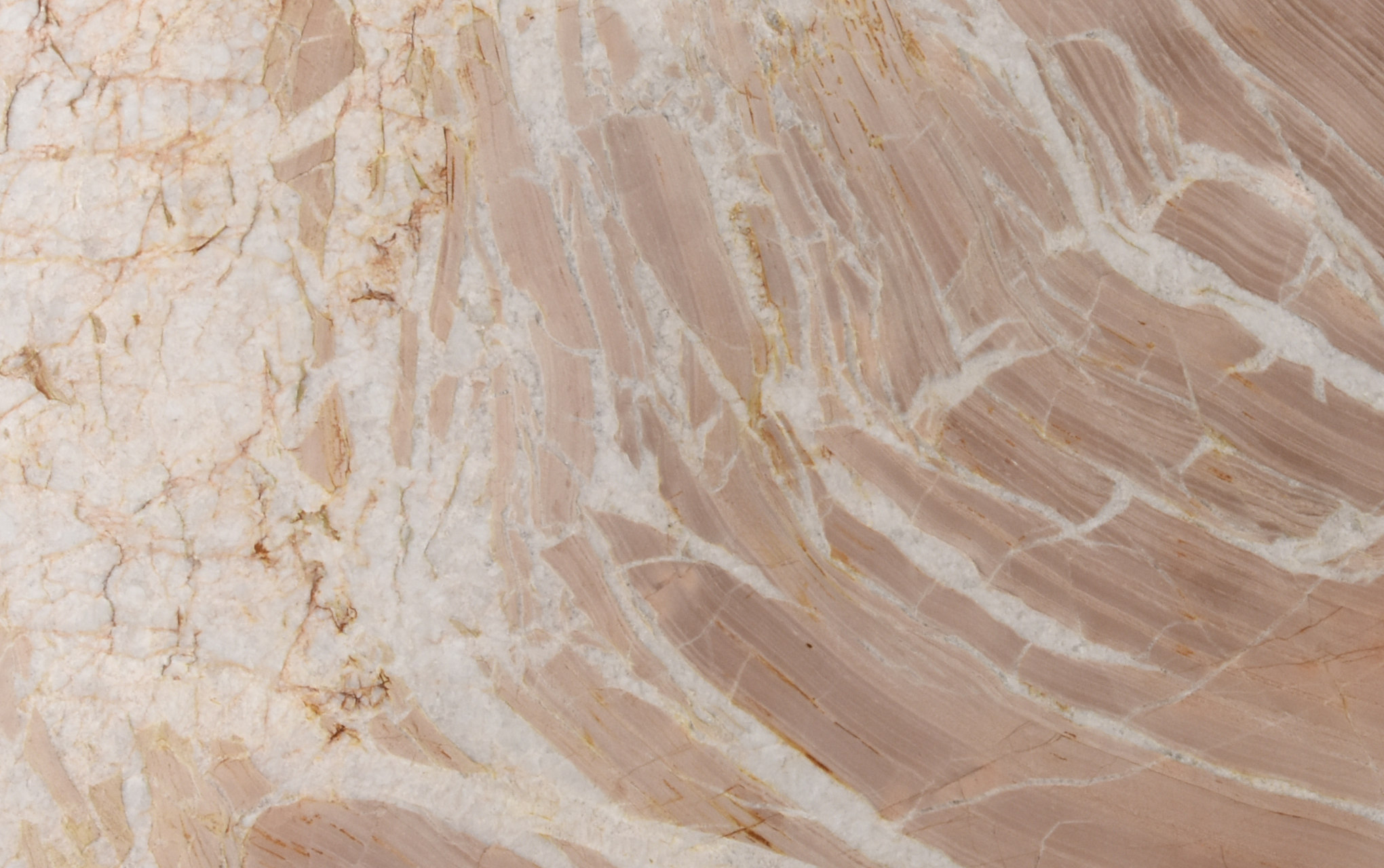
Splendido: the quartzite that matches the nuances of the Color of the Year
Chosen as the shade that will drive trends in 2024, Peach Fuzz expresses the desire to nourish oneself and others, and is also in sync with the patterns found in Decolores' natural stone. Inspiring lightness and relaxation, Splendido's peach shade can be perfect for compositions in rest areas, as is the case in the bedroom featured in the image. Photo: Disclosure. In a dynamic and constantly evolving world, Pantone's choice of Color of the Year has become a beacon for architecture and interior design professionals, guiding the trends that will shape the aesthetic landscape in the coming months. In 2024, the company is once again taking the lead by proclaiming a shade that transcends simple visual nuances, incorporating cultural, emotional and social meanings into a single hue. We're talking about Peach Fuzz! The color, based on a shade of peach softly dwelling between pink and orange, was designed to express our desire to nourish ourselves and others, comprising a captivating aura that enriches our mind, body and spirit. Subtly sensual, it also brings a feeling of gentleness and welcome, offering a space to just be and feel, as well as investing in our desire for closeness to others and for moments of stillness. Inspired by the context of the Color of the Year, Decolores, a brand that has stood out in the trade for being a reference in the processing of Quartzite for over 20 years, presents Splendido, a natural stone that harmonizes perfectly with the nuances of Peach Fuzz. On the left, Peach Fuzz, the shade chosen by Pantone as Color of the Year 2024. On the right, Splendido quartzite, by Decolores, which is in line with the nuances of the first. Photos: Pantone/Disclosure This quartzite has the power to elegantly transform any room by simply relying on the magnificence of its patterns. With layers and veins formed by the geological wonders of Chapada Diamantina, in Bahia, Splendido captivates the eye and stimulates the imagination, whether it's for a luxurious kitchen, an exquisite bathroom or a cozy living room. By incorporating the element into architectural projects, professionals can create spaces that not only reflect the latest trends or stand out for their contemporaneity, but also respond to the emotional and sensory needs of those who live there.

Workers' Month: Learn about the work culture that earned us the GPWT label
In the month of May, we want to pay tribute to our team and also present a little more about our work culture and the achievement of the GPTW seal. Check it out! Over the more than 20 years of our history, we have always prioritized environmental and social responsibility, seeking to create a positive, beneficial and inclusive work culture for all members of the Decolores team. On Workers' Month, it is with immense gratitude that we pay tribute to all those who share our purpose with us, helping to offer natural stone of the highest quality to the Brazilian market. In addition, we would like to take this opportunity to share a little more about our way of working, which has brought us a great achievement: the GTPW seal! Follow along and find out more. We are Great Place to Work In 2023, it was with great joy and pride that we achieved the Great Place to Work certification, awarded by the renowned global consultancy of the same name, which attests to companies' commitment to the well-being of their employees. Throughout our two decades in the natural stone market, we have established ourselves as a business with innovation, technology and care in its DNA. Now, with this recognition, we stand out even more, becoming the latest company in the sector to receive this seal of quality. We were already a benchmark for dedication and excellence when it comes to social responsibility, and this achievement only reaffirms our commitment to this cause, further strengthening our work culture, which is aimed at the well-being and prosperity of everyone involved. How does GPTW certification work? Certification is awarded after a rigorous and meticulous assessment, so it doesn't happen overnight. The process involves anonymous employee surveys and a thorough analysis of the organization's people management practices. Our People and Management director, Jonathan Marquezini, comments: “The importance of the seal is directly linked to our purpose and commitment to generating well-being and prosperity. Being an excellent place to work, being pioneers with the GPTW certification in the stone sector, only reinforces the certainty that we are on the right track.” It's important to note that this is the result of constant effort and a work culture that is truly focused on caring for people. “Everything is the result of continuous work over the years. Now, based on the analysis of the results and the suggestions made in the survey, the company will have a better basis for implementing improvement plans in the organization“, adds Jonathan”. - Learn a little more about our history Inspired by the power of nature, we have emerged with a new, poetic and versatile look at the beauty of natural stone, revealing its power in every detail of architectural and design projects. We are a company specializing in quartzite processing and we invest in technology, offering the best in everything we do and produce, giving a unique identity to clients who value the natural choice as an essential link in their projects and achievements. With more than 200 employees and a presence on 5 continents, we are committed to generating well-being and prosperity for everyone involved!
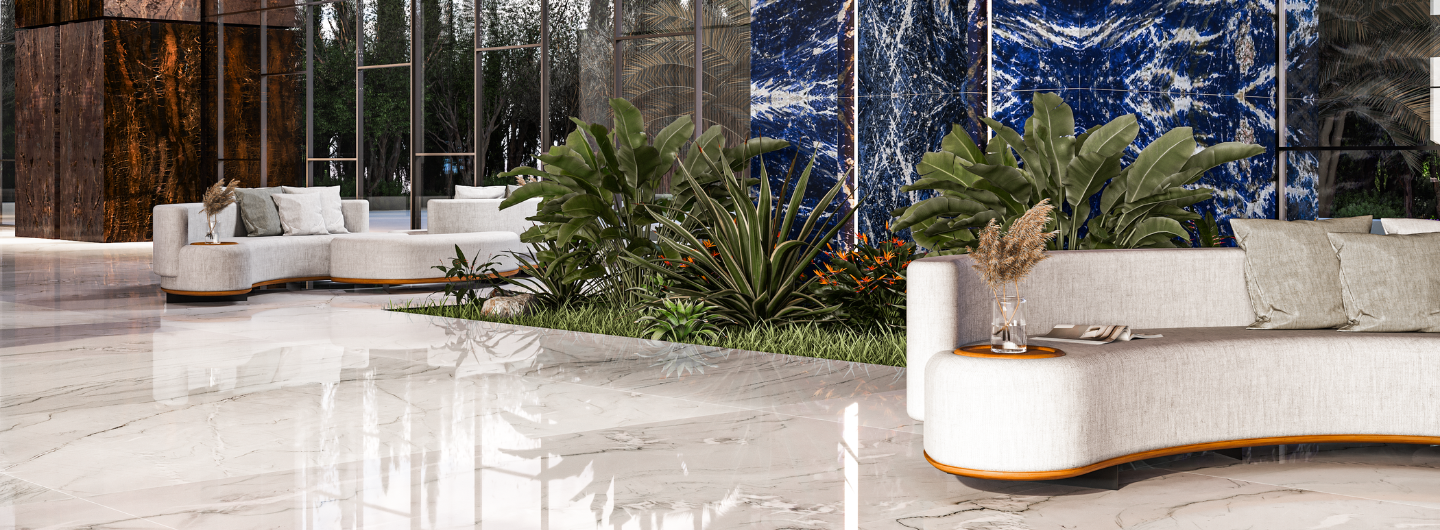
Colors of Brazil: Check out Decolores' releases and interior design news
Learn more about our latest initiatives, get to know the brand, and see the trends for the segment. Here at Decolores, 2024 is already full of great news and plenty of inspiration in interior design trends. We remain committed to our mission of offering beautiful, exclusive, and high-quality natural stones, and we have launched new options early in the year. Below, you will learn more about our brand, the latest releases, and the main innovations in the segment. Stay tuned! Discover more about Decolores Are you familiar with our history? We have over two decades of existence, founded on August 17, 2000. Since then, we have been specialists in the production and commercialization of ornamental natural stones, working with total transparency, environmental and social responsibility, and maintaining good relationships with our customers. We aim to meet the latest market trends and demands, constantly expanding our catalog, always offering the same quality and exclusivity in all products. One of our differentials is technology and innovation, which make us the most reliable option in the segment. Our industrial park is equipped with the latest equipment for cutting and finishing stones. All of this helps us fulfill our mission of providing ornamental stones with total quality and excellence at every stage, from extraction to customer service. Colors of Brazil: Discover the latest additions to our collection This year, we introduced two new additions to the special Colors of Brazil collection, which celebrates the best of the rocks found here in Brazil and bring the unique essence and irreverence that Brazil exudes. Check them out: Bronzite A quartzite that originates from geological processes over 2 billion years ago, composed of numerous layers of iron minerals and quartz. This generates its characteristic reddish tone, vibrant, with an unmistakable brightness. It has very high resistance, making it an option for various types of projects, including floors, walls, interiors, countertops, and much more. In any use, it adds elegance and personality to the space. Sodalite An extremely rare and noble formation formed 700 million years ago from the cooling of magma that emerged from the Earth's interior. Its vibrant blue tone, with white veins and gray-greenish streaks, makes this rock a true spectacle. The intense color creates a unique and bold atmosphere in environments, creating incredible combinations both as the protagonist and as a supporting element in projects. Mont Blanc Found in the Chapada Diamantina, in the heart of Bahia, it is the result of the action of winds and waters, shaping the dunes and carrying sand into the lakes, which, over the years, were gradually buried. Its authentic forms, in light tones reminiscent of marble, combine lightness and sophistication. Da Vinci The history of this rock began over 3 billion years ago, with the formation of a basin that received and accumulated river sediments. Over millennia, the present minerals oxidized, generating elements such as fuchsite, which contributes to Da Vinci's rare aspect. Its green tones carry a unique beauty, adding personality and elegance to environments. Natural stones are a trend this year They appear as some of the main bets in this period, being used in innovative ways, beyond the classic applications in floors and walls. Quartzite, granite and marble are the favorites, for their resistance and durability, combined with impeccable aesthetics. The connection and reminiscence of nature are some of the most valued aspects currently, and undoubtedly, these jewels fit into this trend with great sophistication and lightness. Moreover, maximalist design is also on the rise. Natural stones are great for this style, adding refinement and luxury.
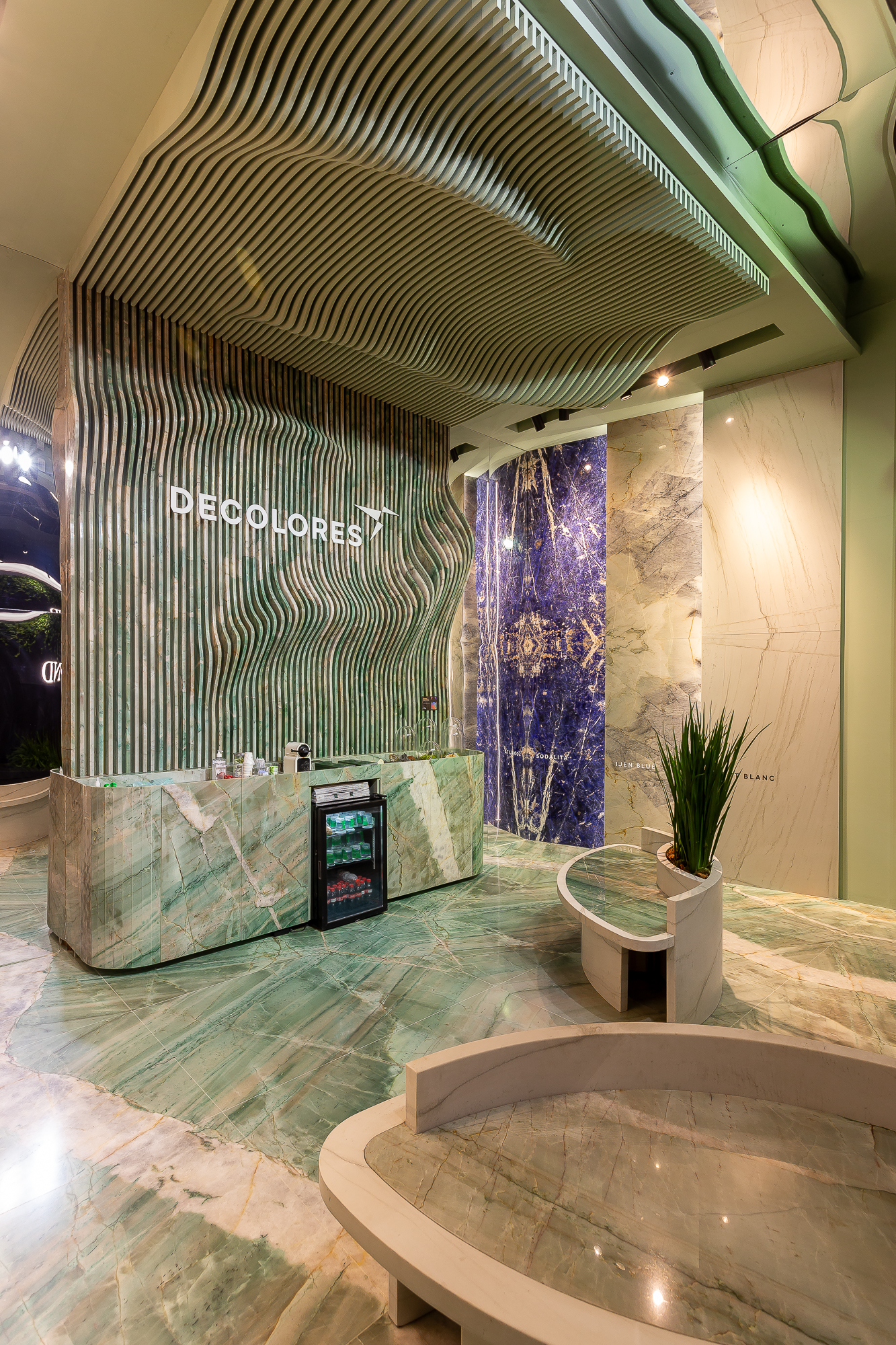
Revestir 2024
Decolores, a company born in Espírito Santo, arrives at Expor Revestir 2024 contemplating the beauty and diversity of our country's natural rocks. Named 'Cores do Brasil' (Colors of Brazil), the collection presents a sequence of products originating from our lands, which encompass a diverse range of shades and textures. Between March 19 and 22, at the São Paulo Expo, the brand will occupy a 30 m² stand, designed by architect Bruno Silva of Studio Cocoon Rise, where it will combine trend, innovation and knowledge about its quartzites and their history in Brazil, highlighting the natural choice as a more sustainable and viable option in the midst of a synthetic market. The space features a large panel of Da Vinci quartzite, which goes all the way to the ceiling, highlighting the subtle and delicate movement that the element can bring to interior design, while also emphasizing the various possibilities for installing the stone. On the same perimeter, a bench made of Mont Blanc with Da Vinci inlaid in the shape of a leaf brings a breath of fresh air to the space, once again celebrating the intrinsic naturalness of the material. In another part of the stand, solid stone cubes measuring approximately 5 cm show the different types of Decolores stone and the various possible finishes, illustrating how creativity can be explored without losing the robustness and durability of natural stone. The color palette, in turn, was based on shades of green, a color that is a strong trend this year and represents much of the brand's institutional identity, as well as connecting harmoniously with the concept of sustainability, one of the company's pillars. With content developed especially for the fair by the team of geologists from the Research & Development sector, Decolores also presents a rich context about its products to visitors, with facts and curiosities that highlight the attributes and properties of its stones. Get to know some of Decolores' natural stones that will be at Expo Revestir 2024: Splendido With its pink hue, Splendido quartzite, from Decolores, gave the staircase in the social area a modern, characterful look. Photo: Disclosure. Splendido quartzite captivates the eye and stimulates the imagination. Its authenticity can transform any space into a haven of elegance. The pink hue of the rock - with its layers and veins shaped by the geological wonders of the Chapada Diamantina, in Bahia - creates a welcoming and comforting atmosphere, as well as bringing personality to the interior design. Biancatto Minimalist, Biancatto is perfect for creating neutral and elegant bases. In this kitchen, the Decolores stone has created a light atmosphere for the room, which is integrated with nature. Photo: Disclosure. In Bahia, approximately 944 million years ago, a marine spectacle was unfolding. Carpets of algae and coral reefs were sources of calcium carbonate that precipitated into extensive limestone packages. Under pressure and temperature, Biancatto Marble emerged, a timeless rock with crystallized dolomites in every layer, which delivers a classical symphony reflected in its soft white tones and grey hues. Sodalita The exuberance intrinsic to Decolores' Sodalite is perfect for the design of imposing environments that become the protagonists of the architectural project. Photo: Disclosure. An exuberant rock with a royal blue color due to the abundant presence of the mineral that inspired its name, Sodalite has a polished finish. A rare mineral, it is unique in Brazil, creating a genuinely Brazilian, exclusive, exotic stone with high added value. It can be installed on worktops, tables, washbasins, wall panels and design pieces. Da Vinci The green hue of the fuchisite mineral gives Da Vinci quartzite its personality. Photo: Disclosure. It contains relict minerals that have been transformed over geological time and now have exotic colors, such as the green of the mineral fuchisite, which is rich in chromium, giving it the green hue so characteristic of the chemical element. Polished, brushed or levigated, this quartzite can be applied to façades, internal and external walls, internal and external floors, kitchen worktops, table tops, bathrooms, external cladding for fireplaces and swimming pools. Mont Blanc The brilliance of Mont Blanc enchants all who see it and makes it ideal for spaces that need a more neutral base, as in this art gallery. Photo: Joana França. Characterized by its white background due to the milky quartz in the rock, Mont Blanc quartzite has fluid veins that are sometimes green - due to the presence of the mineral sericite - and sometimes almost black - due to the presence of the mineral tourmaline. Polished, levigated or brushed, it is ideal for internal walls and floors, kitchen worktops, table tops, bathrooms and external fireplace coverings. Ijen Blue Through its celestial color, Ijen Blue gives the spaces where it is installed profound beauty, as in the case of this living room. Photo: Disclosure. Ijen Blue, with its palette that mixes shades of blue, white and grey, is a quartzite that contemplates deep beauty through its color. Its patterns, which fluidly cover the entire surface of the stone, cover projects that value succinct refinement. Whether applied to kitchen worktops, wall coverings or floors, this quartzite not only beautifies, but also instigates a visceral connection with nature. Bronzite With its sober tone, Bronzite is perfect for environments that value sophistication, as in this spa room. Photo: Disclosure. The iron minerals and quartz layers present in Bronzite are responsible for its high hardness and reddish colors, which are often vivid and bright. Polished, brushed, flamed or with a slatted finish - a novelty! -this quartzite is perfect for facades, walls and interior floors, kitchen worktops, table tops, bathrooms and external fireplace coverings.
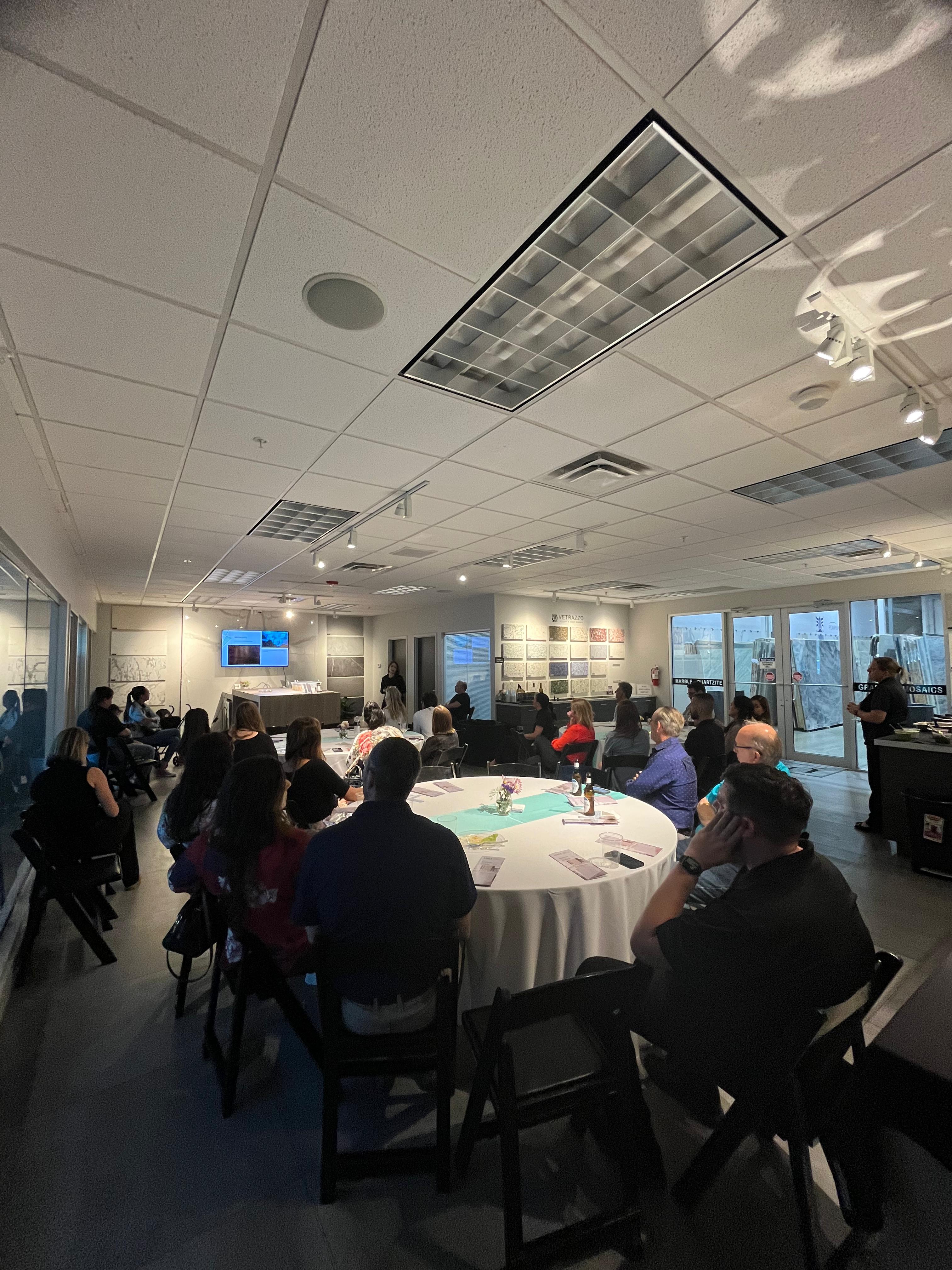
Lecture series USA
With goal of expanding knowledge about natural stone in the North American market, Decolores team composed by sales executives and Research and Development (R&D) areas, is promoting, in partnership with its customers, a cycle of lectures with the theme "Discover the power of Quartzite" Made for customers, fabricators, designers and architects, the event is the first one made overseas and "reinforces the company's DNA to innovate and disseminate relevant information about natural stone", says commercial director Gustavo Probst.
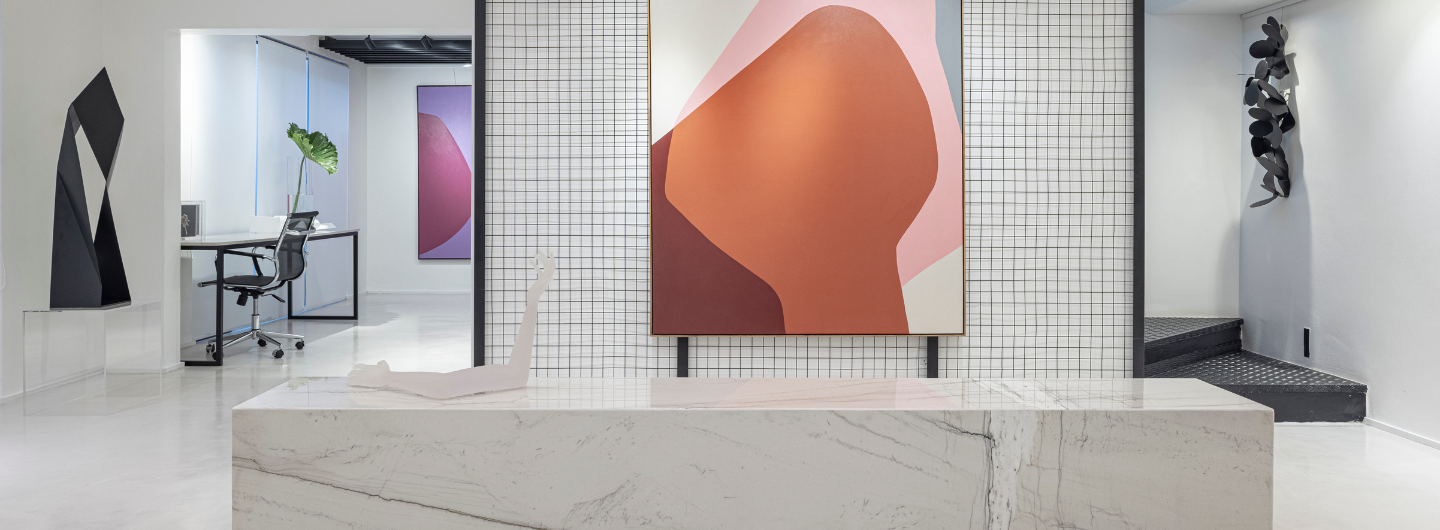
Can natural stone be a sustainable alternative for interior design?
As a durable, timeless and reusable element, stone can become a more environmentally friendly part of architectural design. Did you know that due to their geological characteristics, natural stone can, among other things, be used in the construction industry itself, for decorating rooms, decorative pieces, mosaics and even for making jewelry? Thanks to their composition, rocks can also be used in the cosmetics, ceramics and fertilizer industries. With their long lifespan, natural stones have long proven to be a much more sustainable and viable option in the midst of a synthetic market. It's almost impossible to delve into the history of its formation in nature and not see that it deserves to continue to be surrounded by respect, care and responsibility. In interior design, specifically, its use is directly linked to the desire to connect in a more expansive way with the sensations of well-being that only what is natural can provide. Not to mention, of course, that it is an extremely durable, weather-resistant and easy-to-maintain material. Decolores, a company born in Espírito Santo that has become a benchmark in quartzite processing in Brazil and around the world, sees the intrinsic sustainability of stone as one of the pillars underpinning its institutional values. In this sense, one of the company's strong allies is innovation, where, with a commitment to generating well-being and prosperity for sustainable development and a fairer world, the company always researches and chooses solutions that allow the life cycle of the stone to be as long as possible, without wasting various resources. In addition to making the most of the potential lifespan of its products, Decolores has a Research and Development (R&D) department whose mission is to study the composition of stones, test, evaluate and provide this information internally and externally, in order to improve processes, disseminate knowledge and provide appropriate guidance on use, installation and maintenance.
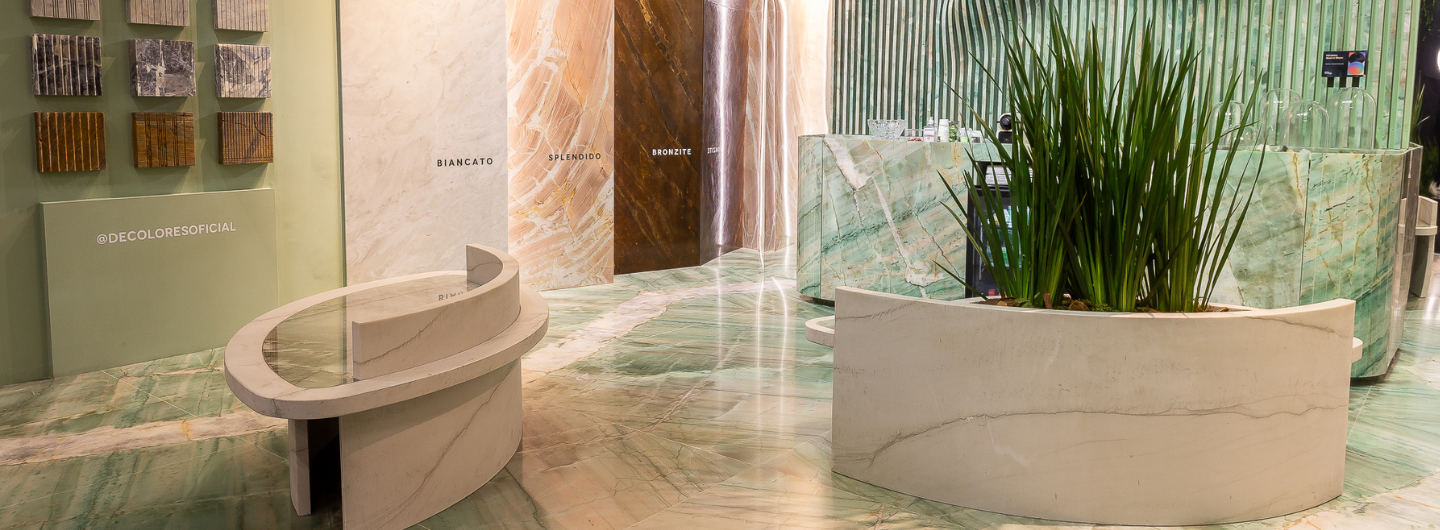
Trends in the use of natural stone: check out the highlights of the latest trade fairs
Despite the great diversity of elements available for covering surfaces and creating decorative objects, natural stone continues to stand out in architecture due to its unique beauty, versatility and durability. These noble pieces can be used in spaces both as protagonists and in harmony with other items, with the aim of creating uniqueness and conveying different sensations. Below, you'll find more details on some of the trends presented at the latest industry fairs focusing on natural stone. 3 major trends in the use of natural stone: Here are some of the main trends highlighting natural stone: ● Organic design This isn't exactly new, as organic design first appeared in the 1930s with the famous architect Frank Lloyd Wright. In recent years, however, it has made a comeback with its smooth lines, authentic materials and inspiration from nature. The use of plants and the use of natural light are hallmarks of this style, but stone also has a place. Even if they aren't organic, they are of natural origin and can bring rustic aspects and refer to the sea and wood, for example, adding beauty to rooms that follow this type of decoration. ● Fluid lines Curved and smooth shapes, rather than straight lines and angles, help to create more welcoming and comfortable environments. Rounded objects, curved furniture and arches in the walls are all ways to adopt this trend. Natural stone can be incorporated in a variety of ways. When cut into fluid, curvilinear shapes, they can be transformed into tables, adorn walls and be used according to the imagination of the architect or decorator. ● Variety of finishes At the latest trade fairs, stone appears in a variety of finishes, which guarantees even more versatility and ways of using these impressive elements. Here are a few: Brushed: very common in marble, it creates a satin-smooth appearance to the touch. Ideal for cozy environments such as living rooms and bedrooms. Levigated: a rough cut. Levigated can be ideal for environments with an industrial and urban concept, adding authenticity and a touch of boldness. Polished: a common finish, it gives off that characteristic shine that immediately comes to mind when we think of natural stone. It is the best choice for sophisticated and refined creations, especially in kitchens and bathrooms. Slatted: another rustic and contemporary option, it features the stone in slats, with a rough finish.
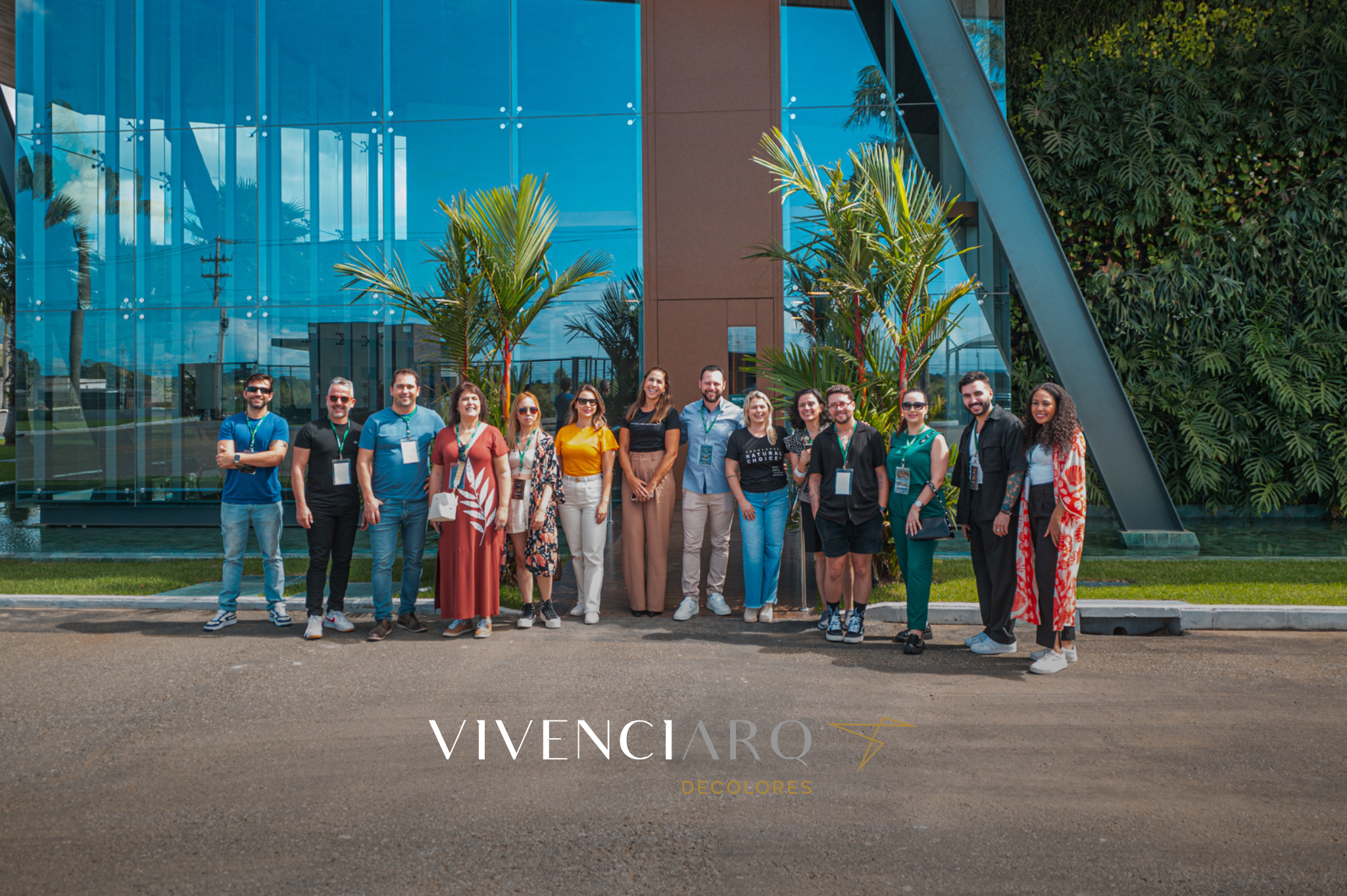
Vivenciarq 2024 2st Edition
Days of immersion in the world of natural stone, gastronomic experiences and shared experiences marked this edition of VIVENCIARQ, held in partnership with DeCarli Mármores, guest architects from Passo Fundo and a group of journalists from São Paulo. During the program, visitors learned about our production processes and the geological formation of natural stones through the Tour das Rochas; tasted our Capixaba cuisine; were inspired by the applications of quartzite in our Showroom; and took part in a chat with architect and partner Bruno Silva. Watch on Instagram: https://www.instagram.com/reel/C69pRZFpJIR/?utm_source=ig_web_copy_link&igsh=MzRlODBiNWFlZA==

Decolores representing Brazil at the Marmomac 2023
Taking part in the trade fair considered to be one of the most important in the natural stones sector, the company showcases a large portfolio of quartzites and other products. Decolores’ stand at Marmomac 2023 was designed by Ale Brunato and included a counter in Da Vinci quartzite designed by the architect Angela Feitoza. Following the inner movement of its DNA, which has innovation and the search for trends as strong guiding lines, Decolores participates representing Brazil at Marmomac 2023, one of the most important and renowned international trade fairs dedicated to natural stone production chain in the world. Taking place on September 26-29, the event reunited well-known companies and specialized professionals of the sector in Verona, Italy, place where the event was first established, and it is considered one of the main Italian districts in natural stone extraction and processing. Architects, interior designers, construction companies, engineers and influencers form all over the world have the opportunity to see large scale samples of the main Decolores’ quartzites such as the Splendido, Da Vinci, Mont Blanc, Sodalita, Ijen Blue and Bronzite, as well as other stones from the company portfolio. The company participation in the Marmomac is an excellent opportunity to showcase the 100% Brazilian excellence found in all its products and services, as well as to establish new partnerships and strengthen old relationships. The stand, in turn, fills the eye and invites trade fair visitors for a visit to the Decolores universe, designed by the unique creativity of Ale Brunato including a counter made in Da Vinci quartzite designed by the architect Angela Feitoza. The company has an industrial park located in a 74 thousand sqm area and has been a reference point in the sector for over 20 years, Decolores arrives at the trade fair to display all the innovation being performed in its production processes, where the company invests time and resources to improve and standardize its stages. ABOUT DECOLORES In a little over 20 years Decolores grew as a business that carries innovation, technology, care and contemporaneity in its DNA, being responsible for bringing a more poetic and plural look to the power of natural stones in architecture and interior design. The company, among other things, became known in the business for being a reference point in quartzite processing, a more resistant stone which ended up bringing innovation to the sector thanks to its large diversity of colors and patterns. Due to its modern and cutting edge processing the company is considered a pioneer in quartzite processing both in Brazil and in the world. Its industrial park is located in a 74 thousand sqm area in the city of Cachoeiro de Itapemirim, in Espírito Santo and has a branch in the municipality of Serra in the same state. The company is considered one of the largest natural stone processing zones in the country. Decolores www.decolores.com.br @decoloresoficial Marmomac 2023 Venue: Fiera Verona Address: Viale del Lavoro, 8, 37135 Verona VR, Italy Stand: Hall 11N, E7-E8 Learn more in: www.marmomac.com PRESS CONTACT Denise Delalamo Comunicação Customer Service: Ana Sant’Anna Contact: (11) 98536-7627 E-mail: [email protected] Customer Service: Gabriela Bardusco E-mail: [email protected]

Sustainable Benefits of Natural Stones in Civil Construction
Understand how natural stones are excellent sustainable cladding options for civil construction. Read here! Sustainability is already a constant topic across all sectors of society. When it comes to civil construction, it's no different. After all, this sector has the potential to contribute significantly to a more ecological future by minimizing environmental impacts and promoting sustainable social and urban development. In this context, civil construction can rely on specific materials to reduce environmental harm. This article focuses on natural stones, the star of today's discussion. Follow along and learn about the benefits they can bring to the environment when used in commercial or residential projects. Sustainability in Civil Construction Concern for the environment in civil construction became more evident with the emergence of sustainable architecture in the 1990s. At that time, the main goal was to significantly reduce the alterations to the natural environment caused by construction. Fortunately, this practice has become increasingly widespread and utilized. Today, there are various resources that can be employed to minimize the environmental impact. By investing in sustainable solutions, professionals in the field of civil construction, such as architects, engineers, and construction supervisors, for example, not only help preserve the surroundings but also contribute to people's quality of life. How can natural stones be a sustainable option for civil construction? The use of this material is not something new, but today, it has become a trend among civil engineering and architecture professionals, as it offers numerous advantages. When we talk about sustainability, rocks can optimize the use of natural resources since they possess various characteristics favorable to the environment. Furthermore, this sector is subject to extremely rigorous scrutiny by national environmental and mining control authorities. Next, let's explore the benefits of natural stones that make them an excellent sustainable alternative: High Quality Old villages in Western Europe, Machu Picchu, Greek and Roman constructions, pavements, and walls in many cities... There are numerous examples composed of rocks that remain well-preserved to this day. This demonstrates the high quality of this raw material, offering extreme durability. Ease of Cleaning Produced sustainably, natural stones are treated with specific products designed to protect the natural pores of the raw material and optimize its quality. This ensures even greater durability for the piece and makes maintenance more practical, using neutral and non-polluting products. Another notable aspect is the reuse of waste from natural rocks in the production of red ceramics, soda-lime glasses, or mortars. Even when removed from one location, rocks can be repurposed in other constructions. In fact, many engineering and architecture professionals turn to recycled materials to create distinctive and unique projects, aiming to reduce construction costs and minimize environmental impacts. Green Building Natural stones, as the name implies, are sourced from the natural environment, aligning with the concept of green building. The strategy aims to incorporate sustainable elements that reintroduce nature to urban areas, offering greater well-being and quality of life to people and reducing environmental impact. Thermal Comfort Another advantage is that natural stones provide thermal comfort to environments. In indoor spaces, they help keep the area cooler on hot days, reducing the energy consumption of air conditioning systems. They are also great for outdoor areas as they do not retain much heat and moisture. Invest in natural rocks and help preserve the environment As you can see, natural stones offer various benefits that not only contribute to environmental preservation but also bring advantages to people. Start investing in this material and create sustainable constructions with excellent added value.
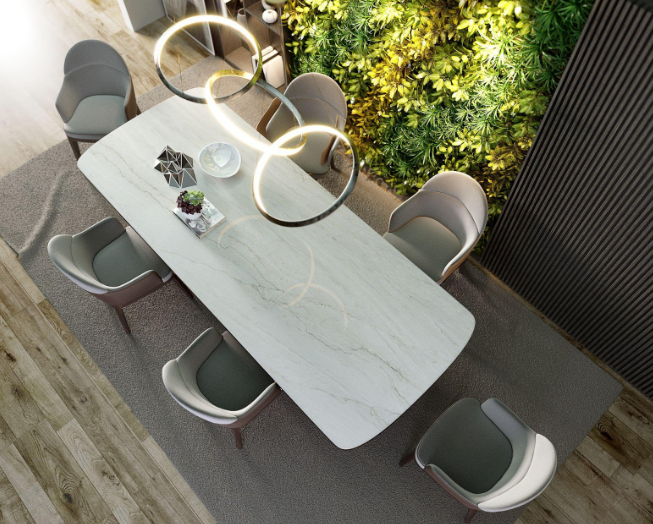
Natural Stones in high-end commercial projects
What factors should be considered when choosing natural stones for high-end commercial projects? Find out here! Providing excellent customer service and offering unparalleled experiences is essential in today's world. And principles like these involve the presence of natural stones in high-end commercial projects. That 's right! Materials are not only crucial for adding grandeur to establishments but also for ensuring unique decorations and singular experiences for the public. Shall we delve deeper into the topic? Here, you'll discover everything about natural stones: advantages, types, how to select them, and much more. Enjoy the reading! Natural stones in high-end commercial projects and their benefits High-end commercial projects offer ample opportunities to use natural stones in various ways. The application tends to go far beyond traditional work, making this material a common component in floor and wall coverings. In this regard, marbles, granites, and quartzites can be present in lavatories, SPAs, fireplaces, etc. Additionally, they add a sophisticated touch to countertops, workbenches, and tables, ranging from minimalism to the most extravagant designs available today. Their advantages are also numerous. Here are some of them: High durability; Wide range of applications; Great resistance; Ability to not retain heat and moisture. Distinctive features like these make the spaces unique, providing beautiful decorations and simplifying everyday cleaning processes, for example. Types of natural stones and tips for choosing them Having the best natural stones in high-end commercial projects is entirely possible, from various types of establishments, from facades to interior spaces. To help you make the right choice, we've prepared some tips: Opt for patterns that harmonize with the other decorative elements of the project. A good decoration brings a balance between natural stones and other decorative resources in the environment, aiming for a pleasing harmony to the senses. From the classic patterns of marble types to the vibrant and modern ones of quartzites, the combination will look amazing when blended with the other elements of the project. Pay attention to the types of natural stones and their recommended applications: Knowing the types of stones and their recommended applications is an essential point for you to determine which product will be chosen. Check out the main recommendations for each type below: Quartzite: extremely resistant, quartzite can be used in a variety of environments, both indoors as flooring, countertops, and panels, or outdoors like pools, facades, and outdoor fireplace cladding. They come in a wide range of colors, patterns, and textures, adding refinement and originality to projects; Granite: with scratch resistance and easy installation, granite is a type of stone that also has a wide range of applications, whether for outdoor or indoor areas, ensuring beauty to projects; Marble: from classic patterns, marble elegantly complements indoor spaces, being suitable for applications like floors, walls, and furniture, as well as exterior fireplace cladding and tabletops; Travertine: known for being a timeless and versatile stone, travertine can be used in indoor spaces like panels and floors, or in outdoor areas such as facades and pool edges. With a velvety texture and neutral colors, it provides versatility and elegance to the project. Take into consideration the texture you wish to use. In addition to the broad patterns and veins that natural rocks possess, there is the possibility of varying the applied textures, bringing a fresh perspective to the product. Among the various possible finishes, we mention polished, which imparts a shiny and mirrored aspect to the material; brushed, characterized by a velvety and satin-like texture; honed, ensuring a matte and smooth appearance; flamed, providing a more rustic, raw finish to the stone. Stay informed about cleaning and maintenance tips for the material. Besides ensuring the best standard and texture of your material, remember that it is essential to know how to protect your natural stone. Avoid using abrasive or chemically aggressive cleaning products and always prefer detergents with a neutral pH. More information on the protection, application, and maintenance of these products can be found in our Natural Stone Guide. To recap: Natural stones offer numerous benefits, including unmatched durability and resistance. There are various types available today, including marble, granite, and quartzite. In high-end commercial projects, they can be used in a variety of ways, well beyond what is considered common applications. Choosing quality products is one of the key factors in enhancing architectural work like no other! Want to know how we can help you? Click here, explore our solutions, and discover what we at Decolores have to off.

Raffaello Galiotto signs sculptures made from Decolores quartzites for the Marmomac 2023
The Italian designer chose Sodalita and Bronzite stones to give shape to works of art which will be showcased at Herbarium Mirabile, an exhibit that takes place inside this important stone sector event. Work of art named Dicotomo, created by Raffaello Galiotto in Decolores’ Sodalita. For over 20 years Decolores has built a trajectory of success and strengthening its name as one of the main reference points in the natural stone sector in Brazil and the world. For this reason and not for nothing, the company, which is an enthusiast of innovations and actions that add value to its processes, represents the country in some of the largest and most important trad shows such as the Marmomac, an international event in Verona, Italy, taking place this year on September 26-29. At the time, besides presenting to architects, interior designers, engineers and influencers from all over the world large scale samples of its main products, Decolores also highlights its stones through the poetic and gifted eyes of Raffaello Galiotto, an Italina designer who signs the curatorship of the Herbarium Mirabile exhibit held inside the trade show, and the design of four sculptures made from Brazilian stones from Decolores. Named ‘Dicotomo’, the first piece of the series was created from the bluish hue of the Sodalita. Its continuous elongated edge along the axis accentuates the symmetric shape of the two united parts of sculpture, where the machining was done with a disk outlined in two paths, duplicated and mirrored. Sodalita, with its powerful and expressive patterns, takes us directly to an imposing and mysterious royal-blue sky galaxy. Considered as one of the noblest stone there is, its exuberance – also used in the creation of jewelry – is an ally when it comes to creating lively environments, thanks to its dramatic appearance and intense color palette with striking veins. The raw material used in the other sculpture called Acutum, was the Bronzite quartzite, showing the imposing earthy hues of the product. ‘Acutum’ has a vertical conic shape milled with a disc in a spring poled lathe in individual staggered cutting paths orthogonal to the longitudinal axis. The Bronzite, one of Decolores’ main quartzite launches, has a robust and powerful essence that reminds us of nature’s power magnitude. Full of finesse, this stone is a charming option for those looking to compose environments that exude an inviting atmosphere, conveying large doses of coziness, belonging and energy. The exhibit ‘Herbarium Mirabile' conceptualized by the creation area to take place during the event, where Decolores' four works of Brazilian stone art will be on display. The exhibit gets inspiration from the intriguing and transformative vegetation geometry, presenting itself to the visitors as a type of lithic botanical garden composed by fifteen stone sculptures. All the pieces have been designed in an advanced parametric 3D modelling software and built with high precision computer numeric control (CNC) machines. The company participation in Marmomac is a unique opportunity to showcase the 100% Brazilian excellence found in all products and services of Decolores, as well as to establish new partnerships and strengthen long-standing relationships. ABOUT DECOLORES In a little over 20 years Decolores grew as a business that carries innovation, technology, care and contemporaneity in its DNA, being responsible for bringing a more poetic and plural look to the power of natural stones in architecture and interior design. The company, among other things, became known in the business for being a reference point in quartzite processing, a more resistant stone which ended up bringing innovation to the sector thanks to its large diversity of colors and patterns. Due to its modern and cutting edge processing the company is considered a pioneer in quartzite processing both in Brazil and in the world. Its industrial park is located in a 74 thousand sqm area in the city of Cachoeiro de Itapemirim, in Espírito Santo and has a branch in the municipality of Serra in the same state. The company is considered one of the largest natural stone processing zones in the country. Decolores www.decolores.com.br @decoloresoficial Marmomac 2023 Venue: Fiera Verona Address: Viale del Lavoro, 8, 37135 Verona VR, Itália Stand: Hall 11N, E7-E8. Learn more in: www.marmomac.com PRESS CONTACT Denise Delalamo Comunicação Customer Service: Ana Sant’Anna Contact: (11) 98536-7627 E-mail: [email protected] Customer Service: Gabriela Bardusco E-mail: [email protected]

Quartzite: why choose this type of stone?
Having fluid and organic shapes, as well as a myriad of color options and resistance, this stone has become a favorite among interior designers. This living room has received an elegant and cozy essence with the use of Decolores Perla Grey quartzite. For this reason, interior design has increasingly focused on biophilia as a key point for trends germinating for the future of interior design. Thus, natural materials are essential to the idea that human beings in all their plurality have the innate propensity to seek connections with nature. On the other hand, when it is time to build or renovate, issues such as functionality, comfort, cost-effectiveness and the such make a huge difference in the final decision of any design. That’s why natural stone has become a favorite in the segment, as they are highly resistant and versatile, as is the case of quartzite. Having an organic lightness that overflows from their shapes, this kind of stone is considered a gem that has been polished over thousands of years, most of them by the rich geography of Bahia. However, it ends up been mistaken with other species, especially marble, despite having distinct and unique characteristics that tell them apart. Aesthetically, marble is what comes closer to quartzite mainly because both have surfaces marked by veins. However, quartzite presents a milkier appearance (not sure if this is the best term) and more delicate veins, as well as more resistance and durability. Decolores, a company that in little over 20 years has stood out in the stone trade sector for being a benchmark for quartzite processing, presents bellow the main advantages that make the stone the best choice for your design. Check it out! RESISTANCE AND DURABILITY According to studies, quartzite is the most resistant and durable natural stone used for cladding. It loses only to stones such as topaz, ruby, sapphire and diamonds; it is a seven in the Mohs scale of hardness. For this reason, it adapts so well to high temperatures being very recommended for sink countertops and even to clad the outside of barbecue grills. COLOR PALETTE Having an exuberant beauty and a diverse and vibrant color palette, quartzite is suitable for different interior design proposals. CLEANING One of the most frequently asked questions is how to clean natural stones, generally used in kitchen countertops or tables. Quartzite also stands out in this aspect, as it does not absorb liquids and only needs soap and water to be cleaned, making the task easier. WATERPROOF As it receives a water-repellent treatment during processing, quartzite is basically waterproof, thus making it much more resistant to stains and the like. This makes it the perfect material for spaces such as bathrooms, laundries and other wet areas. ABOUT DECOLORES In a little over 20 years Decolores grew as a business that carries innovation, technology, care and contemporaneity in its DNA, being responsible for bringing a more poetic and plural look to the power of natural stones in architecture and interior design. The company, among other things, became known in the business for being a reference point in quartzite processing, a more resistant stone which ended up bringing innovation to the sector thanks to its large diversity of colors and patterns. Due to its modern and cutting edge processing the company is considered a pioneer in quartzite processing both in Brazil and in the world. Its industrial park is located in a 74 thousand sqm area in the city of Cachoeiro de Itapemirim, in Espírito Santo and has a branch in the municipality of Serra in the same state. The company is considered one of the largest natural stone processing zones in the country. Decolores www.decolores.com.br @decoloresoficial PRESS CONTACT Denise Delalamo Comunicação Customer Service: Ana Sant’Anna Contact: (11) 98536-7627 E-mail: [email protected] Customer Service: Gabriela Bardusco E-mail: [email protected]

Decolores: A new look at natural stones
Specialized in the quartzite production, a noble natural stone that is highly resistant to abrasion, the brand has become a forerunner of new trends for the national and international architecture market. In just over 20 years, Decolores has built itself up as a business that has innovation, technology, care and contemporaneity as intrinsic parts of its DNA, and is responsible for bringing a new, more poetic and plural look to the power of natural stone in architecture and interior design. Specialized in the production and sale of such elements, the company has made a name for itself in the trade by being a benchmark for the processing of quartzite, a more resistant type of stone that has ended up promoting innovation in the sector thanks to its great diversity of colors and designs. Because of its cutting-edge processes, the brand is considered a pioneer in the production of quartzite both in Brazil and worldwide. Having a modern industrial park that has diamond wire saws, an automated resin line, polishing machines and a handling system using block-carriers, which provides a higher level of safety and efficiency in handling, Decolores offers the market a product that, in addition to aesthetics, has standardized and controlled production processes, making finishing and reliability the predominant characteristics. The company has an in-house Research and Development (R&D) department, which carries out in depth studies of stones prior to the production process, preparing mineral analyses and determining the best way to handle them in a preventive manner. Their main activities include creating and keeping up to date standard process manuals for each material, monitoring their implementation and investigating the interactions between the raw material and the chemical inputs used. The company’s search to expand its product portfolio is also constant, always seeking to meet growing demand in a transparent manner, preserving good relationships with clients and partners, as well as incorporating the premises of sustainability, social responsibility and corporate governance as pillars of the business. Currently, the company also has an industrial park located in a 74 thousand sqm area in the city of Cachoeiro de Itapemirim, in Espírito Santo, as well as a branch in Serra, also in the state of Espírito Santo, which has allowed the state to become the largest natural stone processing center in Brazil. All this movement is a commitment taken on by Decolores to continue to be engaged and walking vigorously the great journey towards becoming a natural and organic choice for elegant, timeless and full of identity stones. Decolores www.decolores.com.br @decoloresoficial PRESS CONTACT Denise Delalamo Comunicação Customer Service: Ana Sant’Anna Contact: (11) 98536-7627 E-mail: [email protected] Customer Service: Gabriela Bardusco E-mail: [email protected]
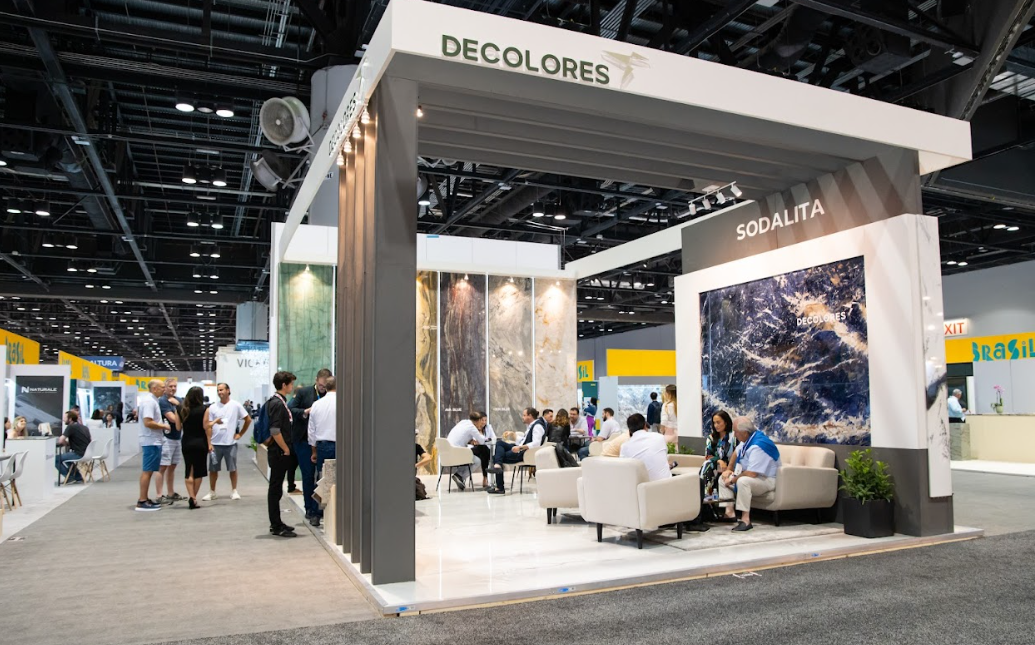
Decolores has a special participation at Coverings 2023
A partner of this important event for more than 10 years, the company presents various quartzites, marbles and super exotic stones to the North American market. Decolores, a company located in Cachoeiro do Itapemirim and Serra, both in the state of Espírito Santo - is coming to Coverings 2023 with lots of new products for the natural stone market. Having an industrial park located in a 74 thousand sqm area and being a reference point in the sector for 20 years, the company is focusing on new technologies, latest generation equipment and the presentation of exclusive stones at this edition of the fair. A partner of the event for more than 10 years, Decolores will be presenting quartzite, marble and super exotic stones at this edition of the event. The fair, which takes place from April 18 to 21 in Orlando, Florida, “is a great opportunity to strengthen Decolores brand, reinforce our position, launch new marketing actions and, above all, learn about industry global trends and product launches”, says Gustavo Probst, commercial director. Alexandre Brunato designed a 54 sqm stand, where visitors will be able to see up close quartzites such as the Mont Blanc, Da Vinci, Crystal, Ijen Blue, Colorado, Ava Blue, Bronzite, Perlato, Perla Venata, Leblon and Denali. And marbles such as the Tesoro Bianco, Michelangelo and Panda. Another highlight will be the display of the super exotic natural stone Sodalita, which will have an exclusive and Instagrammable space in the project. “Something new prepared for this edition is an area that tells us about the formation of the stones in nature millions of years ago, with an exhibition of the raw minerals that formed the stones at the time. The experience will undoubtedly bring a lot of rich and important information to clients, architects, interior designers and the sector in general”, says Gustavo Probst, commercial director. “The expectations for Coverings are always very good. For 2023, we believe that the event could be an upturn in the market, which had been slowing down. Our participation brings the certainty of strengthened relationships and good business. We hope to continue consolidating our brand in the American market with current and new clients who will be present at the event”, he concludes. Get to know some of the natural stones from Decolores that will be at Coverings 2023: Bronzite Quartzite The iron minerals and quartz layers present in the Bronzite are responsible for its high hardness and reddish colors, which are often vivid and bright. Polished, brushed, flamed or slatted, it can be installed on façades, internal walls and floors, kitchen countertops, tabletops, bathrooms and fireplace cladding. The interior wall with Bronzite quartzite, from Decolores, is responsible for the room’s striking personality. Mont Blanc Quartzite Characterized by its white background due to the milky quartz in the stone, Mont Blanc quartzite has fluid veins that are somewhat green - due to the presence of the mineral sericite - and somewhat black - due to the presence of the mineral tourmaline. Polished, satin-finished or brushed, it is ideal for internal walls and floors, kitchen countertops, bathrooms and fireplace cladding. On the left, internal walls and floors covered with Mont Blanc quartzite. On the right, the kitchen countertop with the same stone by Decolores. Ijen Blue Quartzite Hematite is the iron mineral responsible for the different bluish-gray colors found in Ijen Blue quartzite, while goethite - also composed of iron - creates the yellow-orange colors that are distributed in the stone in various directions. The combination of these characteristics gives the material an exuberant contrast and surprising natural beauty. Polished, brushed or satin-finished, it looks perfect when installed on internal and external walls, internal and external floors, kitchen countertops, tabletops, bathrooms, fireplace and swimming pool claddings. In the living room, the bluish-gray interior walls and floor have a strong presence of Ijen Blue quartzite from Decolores. Da Vinci Quartzite It contains ancient minerals that have been transformed over the course of the geological time and now have exotic colors such as the green of the fuchsite, which is rich in chromium and creates the green hue so characteristic of the chemical element. Polished, brushed or satin-finished, it can be applied to façades, internal and external walls, internal and external floors, kitchen countertops, tabletops, bathrooms, fireplace and swimming pool cladding. A corporate hall with walls clad in Da Vinci quartzite, by Decolores, highlighting the green hue of the mineral present in the stone. Sodalita An exuberant stone with a royal blue color due to the abundant presence of the mineral that inspired its name, the sodalite has a polished finish. A rare mineral, unique in Brazil, creating an exclusive, exotic and genuinely Brazilian stone with high added value. It can be used on countertops, tables, washrooms, wall panels and design pieces. Rare and exuberant, Sodalita has a striking royal blue hue and veins. Photo on the right: Divulgação ABOUT DECOLORES In a little over 20 years Decolores grew as a business that carries innovation, technology, care and contemporaneity in its DNA, being responsible for bringing a more poetic and plural look to the power of natural stones in architecture and interior design. The company, among other things, became known in the business for being a reference point in quartzite processing, a more resistant stone which ended up bringing innovation to the sector thanks to its large diversity of colors and patterns. Due to its modern and cutting edge processing the company is considered a pioneer in quartzite processing both in Brazil and in the world. Its industrial park is located in a 74 thousand sqm area in the city of Cachoeiro de Itapemirim, in Espírito Santo and has a branch in the municipality of Serra in the same state. The company is considered one of the largest natural stone processing zones in the country. Decolores www.decolores.com.br @decoloresoficial Coverings 2023 Date: April 18 to 21 Decolores Stand: 1269 / Hall North Venue: Orange County Convention Center Address: 9800 International Drive, Orlando, FL 32819 More information: www.coverings.com PRESS CONTACT Denise Delalamo Communication Customer Service: Ana Sant’Anna Phone: (11) 98536-7627 E-mail: [email protected] Customer Service: Gabriela Bardusco E-mail: [email protected]
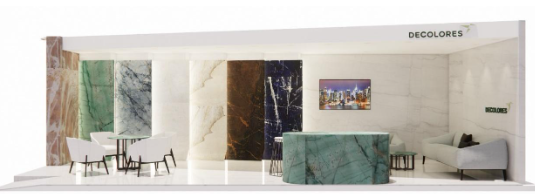
Decolores takes part in the 2023 Cachoeiro Stone Fair
A partner of this important event of the natural stone segment for years, the company presents its main stones on a 72 sqm stand showcasing its innovative strength. A benchmark in the natural stone segment for over 20 years, Decolores constantly invests in innovation to meet the trends of a growing market. A partner for years of one of the main trade fairs of the sector, the company takes part in the Cachoeiro Stone Fair 2023, which takes place on August 22-25 in the city of Cachoeiro do Itapemirim, in Espírito Santo, the largest stone processing center in the Americas. Occupying a 72sqm booth designed by Alexandre Brunato, Decolores expects to receive clients from Brazil and abroad interested in granites, marbles and especially quartzites, in which the company is a processing reference. Decolores will showcase large scale samples of its main stones: the Mont Blanc, Bronzite, Da Vinci, Ijen Blue, Sodalita, Perla Grey and Infinity Grey quartzites and the Biancato marble, as well as showcase a seven-meter-long counter in Da Vinci quartzite holding an exquisite champagne bucket to prove that stone functionality goes beyond being used for cladding. “This space which combines trend, innovation and knowledge was created with the idea of providing a unique experience for visitors who, like us, value the choice for what is natural”, explains Gustavo Probst, Decolores commercial director. In line with the proposal to bring out more knowledge on natural stones, the team of geologists from Decolores Research & Development area will present parts of their routine bringing a petrographic microscope to the booth. The equipment makes it possible to identify the minerals that compose the stone, understand the level of micro-fissures and health and other characteristics that determine the type of use the stone should have. “We will illustrate how petrographic blades are prepares starting from a crude rock, and the differences of the mineral in samples. The goal is that visitors understand the importance of knowing the properties of each stone”, explains Abiliane de Andrade Pazeto, Decolores R&D coordinator. “Another novelty brought to the trade fair by the company is the launching of the Stone Tour, our first industry guided visitation program to bring the natural riches of Brazil closer to the community”, informs Gustavo Probst, Decolores commercial director. The experience will undoubtedly be very rich to clients, architects, interior designers and the sector in general. “Cachoeiro do Itapemirim is one of the most important natural stone hubs in the world. Participating in a trade fair as the Cachoeiro Stone Fair in our own home strengthens our sector. We have great expectations to meet our clients that are coming to Cachoeiro to honor us, do good business and search for new opportunities”, concludes Gustavo Probst, Decolores commercial director. ABOUT DECOLORES In a little over 20 years Decolores grew as a business that carries innovation, technology, care and contemporaneity in its DNA, being responsible for bringing a more poetic and plural look to the power of natural stones in architecture and interior design. The company, among other things, became known in the business for being a reference point in quartzite processing, a more resistant stone which ended up bringing innovation to the sector thanks to its large diversity of colors and patterns. Due to its modern and cutting edge processing the company is considered a pioneer in quartzite processing both in Brazil and in the world. Its industrial park is located in a 74 thousand sqm area in the city of Cachoeiro de Itapemirim, in Espírito Santo and has a branch in the municipality of Serra in the same state. The company is considered one of the largest natural stone processing zones in the country. Decolores www.decolores.com.br @decoloresoficial Cachoeiro Stone Fair 2023 Data: de 22 a 25 de agosto Stand Decolores: Pavilhão 1, stand C 20 Local: Parque de Exposições Carlos Caiado Basbosa Endereço: Av. Francisco Mardegan, 203, Aeroporto, Cachoeiro de Itapemirim, ES Mais informações: www.cachoeirostonefair.com.br PRESS CONTACT Denise Delalamo Comunicação Customer Service: Ana Sant’Anna Contact: (11) 98536-7627 E-mail: [email protected] Customer Service: Gabriela Bardusco E-mail: [email protected]

Can quartzite be used in the swimming pool?
Being more resistant, with a low absorption capacity, and a wide range of colors and patterns, this natural stone became the ideal choice to compose designs of residential leisure areas. Cladded in Da Vinci quartzite from Decolores, the pool area became an environment with a marked personality overflowing with an inviting elegance. Photo: Studio Line. One of the advantages of being Brazilian is that you can enjoy one of the liveliest and most famous summers in the world. At this time of year, high temperatures combine with family vacation energy and a dive in the pool. So, for those who can have a leisure area at home, the ideal is to create a cozy and safe environment to gather friends and family, and which also provides the best sense of privacy and comfort for sunny days. Natural stones are a good option because they are more resistant, versatile and have low absorption capacity. It is the case of quartzite that, besides being extremely durable and relatively new to the market, has revolutionized the sector bringing a diversity of colors and patterns. This makes it possible to delineate a space full of personality and which can talk with the aesthetic narrative imposed to other points of interior design. Being a noble material, quartzite adds long-lasting quality to a timeless versatility which can be used on flooring, walls and/or countertops. The Da Vinci quartzite from Decolores is a stone which is ideal to the swimming pool because it is a crystalline quartzite, a special quartzite typology meaning that because of its geological formation it is more resistant than other types of quartzite. Thus, its durability in the swimming pool will last ‘forever’. What’s more, the green in this material is trending this year, so, it is not only a durable quartzite, but also modern. Plus, its colors are natural and do not fade with time, therefore its beauty will remain for many generations. Inside the pool, the finish choices are more related to personal taste than to functionality, and even the polished finish can be used as the highlight is on the stone natural coloring. On the other hand, for the edge of the pool and the deck, which are areas which are areas of transit, it is mandatory to use pieces whose finish have a non-slip effect such as the levigated, flamed and anticato. In these areas around the pool, polished finishes should never be used, because when in contact with water, the surface becomes slippery and can lead to serious occurrences. Besides that, it is essential to choose light hues for the thermal comfort of the design as they will absorb less heat. Decolores, a company, which in less than 20 years became known in the business for being a reference point in quartzite processing, has in its product portfolio a variety of stone styles as the Da Vinci pattern. Such pattern, for example, contains ancient minerals that have transformed over the geological time and currently present exotic colors as the green from the fuchsite, a chromium-rich mineral. ABOUT DECOLORES In a little over 20 years Decolores grew as a business that carries innovation, technology, care and contemporaneity in its DNA, being responsible for bringing a more poetic and plural look to the power of natural stones in architecture and interior design. The company, among other things, became known in the business for being a reference point in quartzite processing, a more resistant stone which ended up bringing innovation to the sector thanks to its large diversity of colors and patterns. Due to its modern and cutting edge processing the company is considered a pioneer in quartzite processing both in Brazil and in the world. Its industrial park is located in a 74 thousand sqm area in the city of Cachoeiro de Itapemirim, in Espírito Santo and has a branch in the municipality of Serra in the same state. The company is considered one of the largest natural stone processing zones in the country. Decolores www.decolores.com.br @decoloresoficial PRESS CONTACT Denise Delalamo Comunicação Customer Service: Ana Sant’Anna Contact: (11) 98536-7627 E-mail: [email protected] Customer Service: Gabriela Bardusco E-mail: [email protected]
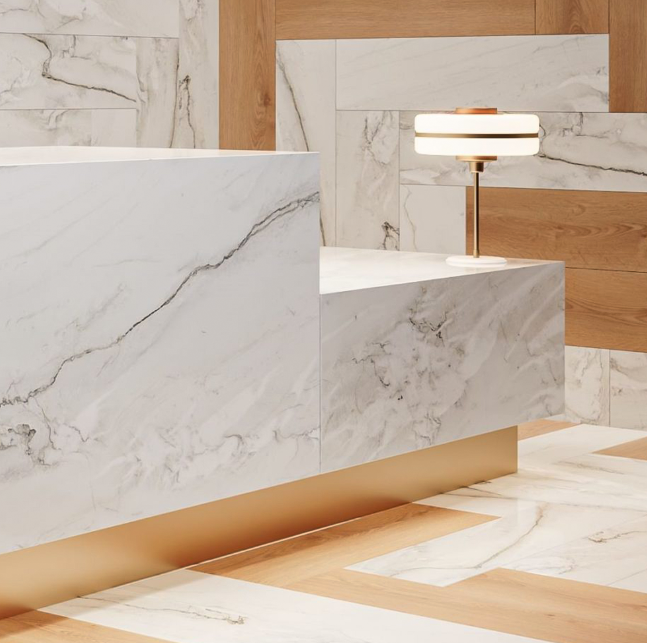
Trends in Natural Stone for 2023
We've gathered everything you need to know about trends in natural stones for 2023. Read More! What are the main trends in natural stones for 2023? Spoiler alert: they involve a wide range of colors, unique patterns, and the prominence of technology, for instance. But that's all we can reveal for now. To learn more about the topic, follow along here and check out the content crafted especially for you. Happy reading! The Importance of Ornamental Stones Ornamental stones are perfect for enhancing the ambiance. Granite, quartzite, marble, and sandstone, for example, set the tone for attractive, decorative, and truly diverse spaces. In this regard, these materials enable you to "uplift" many areas. From the pool to bedrooms, from bathrooms to the kitchen: with them, everything becomes incredible and unique! Trends in Natural Stones for 2023 In addition to natural elements with raw finishes, pieces rich in unique details and distinctive textures are also expected to remain popular. However, unique design and a focus on technology and sustainability are equally prominent today! Stay updated on the main trends in natural stones for 2023: Innovative Colors and Patterns Neutral and warm palettes stand out, each in its own way, with avant-garde patterns. When it comes to the former, softness is their trademark! Meanwhile, warm colors, including shades of orange and red, are expected to claim increasingly larger spaces in interior decoration, especially when combined with various geometric patterns. Distinct Textures and Finishes Sophistication is present in natural stones through textures and finishes that deviate from traditional options. Consequently, each material becomes unique, with various application possibilities in different settings. Sculpting, sandblasting, and polishing techniques make all the difference in creating distinctive surfaces. Exotic and Rare Materials Stones like sodalite, very rare and found exclusively in Brazil, also play a significant role in current trends. Its exuberant royal blue color brings sophistication and refinement to various spaces. Therefore, it can be incorporated into countertops, tables, sinks, and more. Sustainability and Natural Stones Preserving the environment is everyone's duty. The importance of sustainability is increasingly in focus, driving innovations that are essential in product creation. In the case of stones, the trend is towards increased production of long-lasting items that do not require frequent replacements and outlast traditional solutions. Innovative Applications In this topic, the spotlight is on various ways to apply natural stones, whether in interior or exterior designs. Stones in contact with water are expected to become an increasingly common feature moving forward. Moreover, these pieces can also be found in unexpected places, such as the wall behind the bed, for example. Integration with Technology Continuous improvement in processes facilitates synergy between natural stones and technology. In other words, innovation contributes to the development of unique solutions, delivered to clients with extensive customization possibilities. Cutting-edge resources have been crucial in making spaces even more modern, intelligent, and beautiful. Sustainable Projects It's impossible not to emphasize the topic of nature. Natural stones are being widely used in architectural projects, from small spaces to large buildings. As such, items like these have indeed made a unanimous contribution to the preservation of what matters most: the environment. Count on us and elevate your interior decor The best trends in natural stones for 2023 are here at Decolores. Since we started our operations in the year 2000, we have spared no effort in providing truly distinctive ornamental stones for our clients' projects. Explore options, get in touch with us, and discover everything we can do for you!

Natural stone trends for industrial and modern environments
When it comes to natural stone for industrial and modern environments, there are many possible applications. Bold and contemporary, the so-called industrial style of decoration helps to create spaces that are often simple but full of personality. Shall we talk more about it? Here we have put together everything you need to know about the subject: how to choose the best stones for projects of this nature, what is trending in the area and much more. Enjoy the reading! Exploring the beauty of the industrial style Whether in residential or commercial environments, industrial design plays a very important role in the development of work. Considered to be urban, it is characterized by a more “natural” look which values elements linked to the past. It comes from a vintage feel. Among its main characteristics are: Use of earthy shades and neutral colors Focus on integrating environments Surfaces generally unfinished Exposed pipes, beams and wires The versatility of natural stones in modern projects Natural stones for industrial and modern environments are highly versatile and adapt to contemporary spaces in a variety of ways. Nowadays, the stones can be found in many varieties: white, dark gray and those that move between beige, sepia and light gray are just a few examples. From the bathroom to the living room, from the kitchen to the bedroom, outdoors or indoors: the pieces match exactly what you want! Choosing the right stones for the industrial style Points to note when choosing stones for the industrial style include: Composition The particles present in the products can be determinant for the points listed below. Durability Make sure you know exactly how durable the material you are looking for is, as this is essential if you want to preserve it longer without the need for major maintenance. Resistance This is also a crucial point when thinking about a project, as the resistance of an item must do justice to the environment in which it will be inserted. In addition, it is essential to pay attention to the composition of the environments. Ideally, the choices should match perfectly with the rustic and raw look typical of the industrial style. In this sense, granite and marble pieces are excellent choices! Design trends using natural stones Keep up to date with some of the main natural stone trends that are and should continue to be on the rise in the coming months: Presence of the color gold The presence of stones in spaces marked by gold sets the tone for luxurious and sophisticated spaces. Warm tones Materials in warm colors are also being more and more used, as they contribute to the design of projects that are different from those traditionally known. Valuing of the green Another growing trend is the connection of stones with natural elements, in decorations that place foliage at the center of attention, as well as the use of recyclable items, for example. In summary… Natural stones for industrial and modern environments make all the difference in unique projects Versatile, they fit into different environments, whether indoors or outdoors When choosing the ideal option for a job, it is important to pay attention to points such as composition and resistance Nowadays, the main trends include the use of warm-colored stones, as well as the intimate connection with natural resources. Discover our natural stone portfolio Here at Decolores, there is no shortage of perfect solutions to embellish your projects. Click here, access the complete portfolio and discover everything we can do for you.

The use of natural stone in high-end residential projects
See how natural stone can be applied in numerous ways in high-end projects. Read here. The use of natural stone in high-end residential projects has become a prominent trend in the world of architecture and interior design. Thanks to its natural beauty and exceptional durability, it offers a variety of options to create luxurious and sophisticated environments. Keep reading to discover how natural stone can be applied, from wall and floor coverings to countertops and decorative details, providing a unique and elegant touch and imparting an imposing and timeless look to the most refined residential spaces. Enjoy your reading! Natural stones: applications beyond floors and walls Human creativity, when combined with the beauty and strength of quartzite, can be astonishing, creating possibilities that go far beyond floor and wall coverings. The material has been extensively explored by product and furniture designers. As a result, high-end tables, sinks, fireplaces, and spas emerge. Regardless of the application, the objective remains the same: ensuring elegance by harnessing the versatile physical characteristics of the stone. Take a look at some compositions that go beyond the obvious and offer a lot of beauty: Imposing Fireplace: a blaze of sophistication A fireplace adorned with Fusion quartzite is capable of drawing all the attention to itself. Through the curves and the strong, dark colors of the material, it even simulates following the enveloping movement of flames. The result is an elegant and cozy space, perfect for cold days and nights. Minimalist countertop: the charm of Mont Blanc quartzite The white background and the fluid veins of Mont Blanc quartzite perfectly complement the project, which has a unique concept. The composition became even more elegant when paired with the subdued tones of the kitchen. Work desk: the prominence of Leblon quartzite Leblon quartzite has transcended the confines of wall covering and reached the work desk in this charming office. The stone's light and gentle tone was harmonized with plants and leather and fabric chairs, ensuring the coziness of the corporate room. Exuberant counter: Spotlight on Sodalite Exuberance is the word that defines this foyer, featuring the rare Sodalite. As a result, it becomes ideal for spaces that demand grandeur, such as upscale hotels, or personality and strength, like the foyers of luxury market companies. Investing in lighting: highlighting the beauty of Crystal Opting for the strategic distribution of light spots to emphasize the natural veins and add more value to the Crystal was an excellent choice for this project, creating an exclusive and luxurious space. Harmony between straight lines and curves with Makalu granite Makalu granite takes center stage in this space where curved and straight lines meet, alongside a decor in golden tones. The result is a well-structured and sophisticated project.

How to choose the perfect natural stone for your project?
Uncertainties when selecting materials are quite common. Here, you'll discover how to choose the perfect natural stone for your project! The solutions available in the market are diverse, and the ideas to be implemented are plentiful. Amidst this, a common question arises: how to choose the ideal natural stone for a project? We'll address this question. After all, they are essential for the design and decoration of many spaces. Follow along and learn all about the topic! Types of natural stones To make excellent choices, having knowledge of the main types of existing stones makes all the difference. By understanding details about the varieties, you can select pieces that truly contribute to the creation of modern and innovative environments. Among the most well-known stones are: Marble Derived from the exposure of limestone to high temperatures and moderate pressure, marble is a versatile material recognized for its sophistication. It can be used in floors, countertops, furniture, and many other applications. Due to its availability in various colors and textures, this stone contributes to the creation of beautiful compositions in sculptures and interior and exterior designs in general. Its composition includes the minerals calcite, aragonite, and dolomite. With low resistance to scratches, marble also stands out for dynamic and horizontal veins, which add style and refinement to many projects. Granite Comprised of three minerals (feldspar, mica, and quartz), granite is an ornamental rock known for its high hardness. It has medium scratch resistance and is easy to install. Its formation occurs through the cooling of magma inside the Earth. This item resembles a mosaic of minerals, with different types and sizes. It has a wide range of uses, commonly employed in bathrooms, kitchens, and bedrooms, among other spaces. Another important aspect is its extensive variety of colors, a distinction ensured thanks to various extraction processes. Quartzite Experts point out that quartzite combines the beauty of marble with the durability of granite, bringing together the best of both worlds. Its formation originates from the metamorphic process of sandstone. It is often found in Brazil, especially in Goiás, and possesses characteristics like impermeability, ease of cleaning, and flexibility. This allows for applications in both indoor and outdoor areas. Delicate yet extremely resilient, quartzite offers a range of advantages in its favor! From blues to grays, from greens to darker shades: options for various projects abound. How to choose natural stone for a project? The answer is below. Paying attention to points like the ones we highlight is crucial for making informed choices: Assess the project's needs and requirements This makes a significant difference in executing work that aligns with your goals, avoiding unnecessary expenses or overruns. Determine the use and location of the natural stone If you plan to use the stone in a kitchen or gourmet space, for example, it's important to focus on options that can be easily cleaned and are more durable when exposed to other elements. Consider factors like durability, resistance, and maintenance. Durable and resistant materials will undoubtedly require less effort and investment in maintenance, making this topic very important for your evaluation. Pay attention to style and aesthetics Explore different patterns, check out color options and applications, and choose the best option according to your environment's aesthetics. Don't forget about sustainability Taking care of the environment is a responsibility for all of us, so consider purchasing products that align with this goal, preserving natural resources and connecting with nature in the best way possible. Seek the expertise of those who understand the subject Consultation with professionals specializing in natural stones can make a significant difference in ensuring your projects are developed with excellence and quality. How about relying on us? For over two decades, we have been known for offering the best in ornamental stones for decoration and design. Explore our projects and discover how we can assist you with your projects. Follow us on Instagram by clicking here.
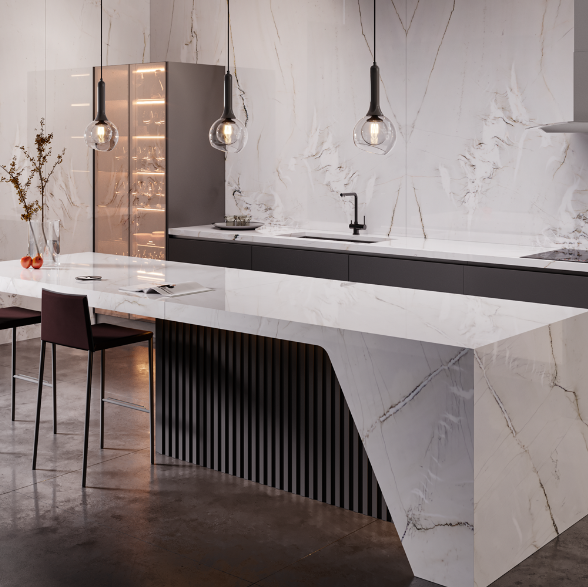
Discover how to combine resistance and sophistication in your projects with quartzite
Check out some tips for creating stunning projects using quartzite. Read here. Do you want to use natural rocks in your projects but don't know exactly how to create harmonious compositions that enhance your spaces even more? Keep reading and discover the various possibilities that quartzite can offer according to your goals. What is quartzite? Quartzite is a type of natural rock found in several Brazilian states. Formed from highly resistant sedimentary rocks, it is composed of 75% quartz and 25% other elements such as tourmaline, muscovite, biotite, among others. With unique patterns, it has a uniform and clean base, making it perfect for creating modern projects where minimalist aesthetics are the focal point. What are the advantages of quartzite? Here are the main benefits of using quartzite in your projects: Resistance: Due to its low absorption and high quartz content, which provides high hardness, quartzite has a wide range of applications. Finishes: Being a natural rock, quartzite can receive various finishes on its surface, such as polished, honed, brushed, flamed, or raw. Varied colors and prominent veins: Quartzite can be found in a wide variety of colors, with distinctive and original veins and tones. Easy to clean: Only water and mild soap are needed to clean this rock. As it doesn't absorb liquids, immediate cleaning is not necessary. How to use quartzite in projects? This natural rock can be applied in different areas of the house. Here are some great examples of applications that look amazing: In bathrooms, it can be used on the sink countertop or as a wall covering in the shower area. In kitchens, the classic use is as a countertop and supporting counter, also serving as a product for kitchen islands. In living rooms and bedrooms, it stands out as a wall covering, especially on focal walls within the space, such as behind the bed or TV wall. In outdoor areas, such as flooring, it is recommended to apply a special treatment to the surface of the rock to prevent it from becoming slippery. Get to know Decolores quartzites Click here and check out the options for natural rocks to create charming projects.

Cachoeiro Stone Fair: check out the highlights in innovation and sustainability
The biggest event in the natural stone segment, the Cachoeiro Stone Fair, took place this week. See some of the innovations that were part of the fair! The Cachoeiro Stone Fair, the largest event in the natural stone segment, took place in Cachoeiro de Itapemirim, Espírito Santo, between August 22 and 25, and welcomed visitors from around 20 countries and 600 Brazilian cities. The city, which has hosted the fair since 1989, is America’s largest stone processing center, and year after year, the Stone Fair presents the main trends, launches and innovations in the industry. Read on to find out more about what we found there, especially with regard to innovations and sustainability. Cachoeiro Stone Fair: tradition and evolution The event, with its three-decade tradition, is one of the most important for those who work with natural stones. Trade fair is organized by Milanez e Milaneze, a company that is part of the Veronafiere group, a leader in the segment in Europe. It is the place that presents all kinds of new developments in the area, contributing to the development of the industry, bringing consumers and suppliers closer together and generating opportunities in this market. That’s why it is a moment that professionals in the sector look forward to every year, presenting all the latest and greatest in natural ornamental stone. Check out a little more about what was seen at the Cachoeiro Stone Fair In 2023, innovation and sustainability stood out as some of the main themes of the event. Find more details below: Biophilic design Organic modernism or biophilic interior design seeks to value and highlight nature, bringing it into the spaces. This includes the use of natural ornamental stones and their combination with wood and elements that bring to memory leaves, water, and other types of stone. Sustainable materials Besides focusing on the natural in terms of aesthetics, architecture and interior design professionals are also looking for products that have a lower environmental impact. Stone fits the bill for its durability, as with the right care, it doesn’t need to be replaced, generating less wear and tear. However, even less damaging alternatives, such as stones collected and processed using techniques focused on reducing damage to natural resources, will be the priority. Reusing waste In line with the previous topic, the main technologies and innovations in the ornamental stone segment aim to prevent waste from product processing from going to the trash. Some of the alternatives include using the shards in decorative mosaics, and the dust generated during cutting and polishing for mineral enrichment of soils and as a kind of slurry to manufacture bricks and other products. Sustainable future in focus In short, we can expect this to be the highlight of the Cachoeiro Stone Fair: the search for more sustainability in the stone segment. This trend is likely to transform the way we work, becoming stronger and stronger over the years and becoming a differentiator sought by customers.
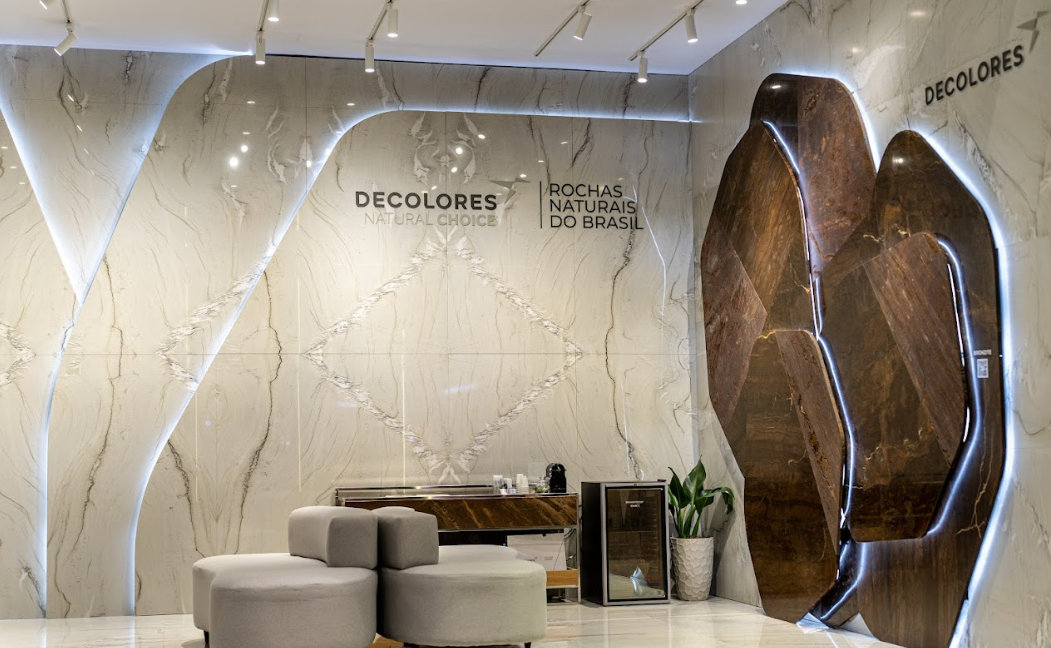
The exclusivity of natural stones at Expo Revestir 2023
In its sixth participation in the fair, Decolores presents natural stones with different applications and textures Decolores, a company located in Cachoeiro de Itapemirim and Serra, both in the state of Espírito Santo - is coming to the Expo Revestir 2023 with lots of new products for the natural stone market. Having an industrial park covering an area of 74 thousand sqm, the company is focusing on new technologies, latest generation equipment and the presentation of exclusive stones at this edition of the fair. This year at the São Paulo Expo complex between March 14 and 17, the 30 sqm stand designed by Alexandre Brunato will combine trends, innovation and knowledge about natural stones and their origin throughout the evolution of the earth. This content will be developed especially for the fair by the team of geologists from Decolores’ Research and Development department. “We have prepared a space that tells us about the formation of stones in nature millions of years ago, with an exhibition of the raw minerals that formed these stones at the time. The experience will undoubtedly be very rich for customers, architects, interior designers and the sector in general”, says Uberlan Admiral, commercial manager. In addition to presenting innovation at its sixth participation in Latin America’s largest tiling and finishing trade fair, Decolores is proud to offer its customers one of the most diversified portfolio of materials in the market. Highlights include the quartzites Mont Blanc, Bronzite, Perla Grey, Da Vinci, and the exuberant and rare Sodalita. Expectations for the event are high, explains Uberlan Admiral, commercial manager: “The Expo Revestir allows us to present our launches and trends. The fair receives more than 50,000 visitors. It’s a unique opportunity to strengthen the brand, present products, clarify doubts and open up new markets.” Get to know some of the natural stones from Decolores that will be at Expo Revestir 2023: Mont Blanc Characterized by its white background due to the milky quartz in the stone, Mont Blanc quartzite has fluid veins that are somewhat green - due to the presence of the mineral sericite - and somewhat black - due to the presence of the mineral tourmaline. Polished, levigated or brushed, it is ideal for internal walls and floors, kitchen countertops, tabletops, bathrooms and fireplace cladding. Perfect for cladding the entire bathroom, here Mont Blanc quartzite has been applied in a polished version. Unique and exclusive, Mont Blanc quartzite has delicate veins in shades of gray and black. Photo: Robson Salgado Bronzite The iron minerals and quartz layers present in the Bronzite are responsible for its high hardness and reddish colors, which are often vivid and bright. Polished, brushed, flamed or with a slatted finish - a novelty! - this quartzite is perfect for façades, interior walls and floors, kitchen countertops, tabletops, bathrooms and fireplace cladding. With a brushed finish, Bronzite quartzite was installed in this washroom on the walls, countertops and sink. Photos: Wesley Teixeira da Silva Perla Grey Its blue-green shades are due to the presence of minerals such as muscovite, tourmaline and dumortierite. It is a timeless quartzite with excellent technical properties that allow it to be used in cladding, countertops, wall panels and tabletops. Available with polished, brushed or levigated finish. Da Vinci It contains ancient minerals that have been transformed over geological time and currently presents exotic colors such as the green of the fuchsite, which is rich in chromium that gives the green hue so characteristic of the chemical element. Polished, brushed or levigated, this quartzite can be applied to façades, internal and external walls, internal and external floors, kitchen countertops, tabletops, bathrooms, fireplace and swimming pool cladding. The green hue of the fuchsite gives Da Vinci quartzite its personality. Sodalita An exuberant stone with a royal blue color due to the abundant presence of the mineral that inspired its name, sodalite, on a polished finish. A rare mineral, unique in Brazil, creating an exclusive, exotic and genuinely Brazilian stone with high added value. It can be used in countertops, tables, washrooms, wall panels and design pieces. ABOUT DECOLORES In a little over 20 years Decolores grew as a business that carries innovation, technology, care and contemporaneity in its DNA, being responsible for bringing a more poetic and plural look to the power of natural stones in architecture and interior design. The company, among other things, became known in the business for being a reference point in quartzite processing, a more resistant stone which ended up bringing innovation to the sector thanks to its large diversity of colors and patterns. Due to its modern and cutting edge processing the company is considered a pioneer in quartzite processing both in Brazil and in the world. Its industrial park is located in a 74 thousand sqm area in the city of Cachoeiro de Itapemirim, in Espírito Santo and has a branch in the municipality of Serra in the same state. The company is considered one of the largest natural stone processing zones in the country. Expo Revestir 2023 Date: March 14 to 17 Hours: On 14 to 16, from 10am to 7pm. On Friday 17, from 10am to 5pm. Decolores Stand: M17 Venue: São Paulo Expo, Rodovia dos Imigrantes, Km 1,5 More information: www.exporevestir.com.br PRESS CONTACT Denise Delalamo Communication Customer Service: Ana Sant’Anna Contact: (11) 98536-7627 E-mail: [email protected] Customer service: Gabriela Bardusco E-mail: [email protected]

Trends in granite cores and finishes
In 2025, granite will continue to stand out as a key material in interior design, combining durability and elegance. This year, color and finish trends promise to revitalize the use of granite, offering new possibilities for transforming spaces. The granite color palette is expanding, from sophisticated neutral tones to bolder, more vibrant options. In addition, finishes are diversifying, with textures ranging from polished to natural, allowing for even greater personalization of spaces. In this blog, we will explore the main granite color and finish trends for 2025, helping you discover how these innovations can enrich your interior design. Happy reading! Trending colors for 2025 Granite colors continue to play a crucial role in defining the style of spaces. The coming year brings a color palette that reflects both classic sophistication and contemporary boldness. Neutral and elegant tones Neutral tones remain a classic and sophisticated choice, offering a versatile base that adapts to a variety of décor styles. In the coming year, white and gray will continue to dominate, bringing clarity and modernity to spaces. White Dune by Decolores is a perfect example of this trend. With its light hue and subtle veining, White Dune granite offers an elegant and timeless base, ideal for creating a bright and spacious environment. This color is perfect for creating a relaxing and inviting atmosphere in spaces such as living rooms and dining areas. Dark and warm colors As earthy tones gain popularity, they bring a sense of warmth and connection to nature to interiors. Shades such as beige, brown and black are emerging as ideal choices for creating a welcoming and sophisticated environment. Makalu is a standout choice from Decolores that fits perfectly into this trend. With its dark background, Makalu is ideal for those who want to add a touch of warmth and naturalness to their interiors. This granite is excellent for kitchens and bathrooms, providing a surface that is not only aesthetically pleasing but also resistant to daily use. Bold pops of color and patterns For those seeking a bolder approach, darker, richer tones are becoming more popular. Colors like deep blue and emerald green can create striking focal points and add personality to spaces. Decolores’ Silver Grey is an excellent choice for those seeking a touch of modernity and sophistication. Its dark gray color with silver undertones offers an elegant and bold contrast, ideal for creating a striking look in any environment. This granite is perfect for kitchen countertops and flooring, offering a modern and refined look. Trending granite finishes While colors set the tone of a room, granite finishes add the texture and finishing touch that can transform a space. Available finishes range from polished and glossy to textured and rustic, each offering a unique and sophisticated effect. Let’s explore the most trending finishes for 2025 and how they can be applied to create truly stunning spaces. Honed finish The polished finish continues to be a popular choice, providing a glossy, reflective surface that highlights the natural beauty of granite. This finish is ideal for creating a sophisticated and elegant look on countertops, floors and wall coverings. Honed finish The honed finish, which gives granite a smooth, velvety texture, is becoming increasingly popular. This finish not only adds a sense of luxury and comfort. Brushed finish The brushed finish, with its leather-like texture, is becoming a popular choice for those seeking a more rugged and authentic look. This finish is ideal for creating an interesting contrast with other decorative elements and adding a touch of rusticity to a design. Interior design applications Granite’s versatility goes beyond the choice of colors and finishes; its applications in interior design are vast and innovative. From kitchens and bathrooms to living areas and architectural features, granite can be used to create stunning and functional spaces. Kitchens and Bathrooms Granite is an exceptional choice for kitchens and bathrooms due to its durability and strength. Neutral colors and polished finishes are perfect for creating elegant and functional spaces. These options not only offer a refined aesthetic, but also withstand heavy use and exposure to moisture. Living and Dining Areas In living and dining areas, granite can be used to create stunning tables, countertops and wall coverings. Silver Grey offers a sophisticated option that can complement a variety of décor styles, from contemporary to classic. Its rich color and refined finish provide a touch of class and modernity. Architectural Elements Granite can also be incorporated into architectural elements such as fireplaces, staircases and recessed niches. Leathered and raw finishes can add a touch of texture and character to these elements, creating an intriguing focal point in the design of the space. Products such as Makalu and Silver Grey are ideal for projects that seek a balance between aesthetics and functionality. Count on Decolores Granite color and finish trends for 2024 offer a wide range of options to create modern and sophisticated environments. With Decolores products such as Makalu, White Dune and Silver Grey, you can incorporate these trends in an elegant and personalized way. With a variety of colors and finishes, Decolores provides options that range from classic to contemporary, allowing you to find the perfect solution for your interior design project. Explore Decolores' options and discover how to transform your spaces with the beauty and durability of granite.
